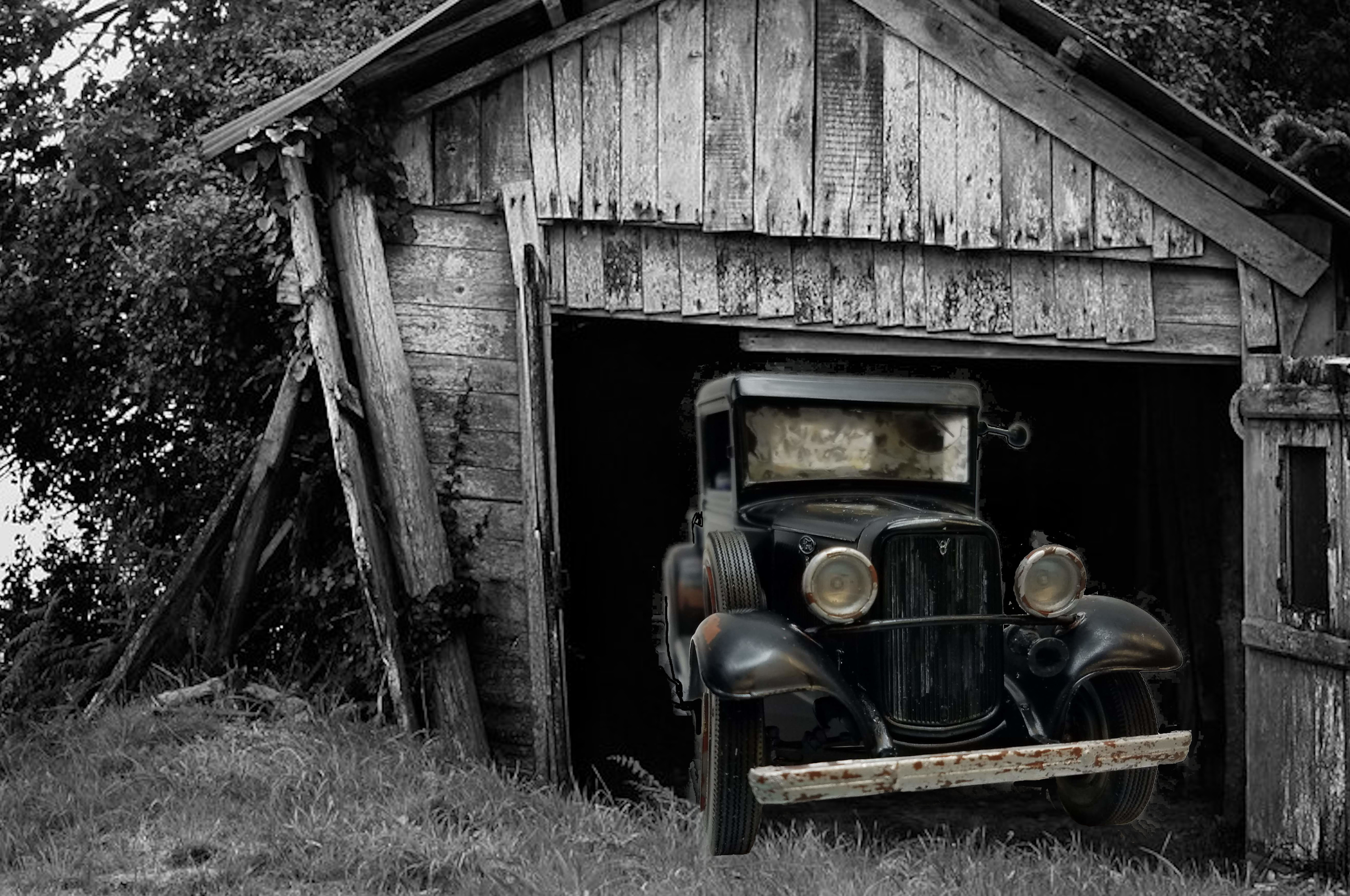0 of 121
This is my grandfather with the truck I remember and the
inspiration for why I decided to build this 1934 Ford Pickup.
I was only about 6 or 7 years old so my memory is vague;
however, I do remember going to a junk yard with my dad
and getting a headlight for this truck. I then remember
watching and trying to help my dad replace the broken
one on my grandfathers (my dad's father-inlaw), truck.
My dad was amazing! He had so much patience with me and
always spent time with me, letting me help him with
anything. When I got older I used to tease him. I'd say, pop...
you taught me everything I know. Then I went to school
and learned the right way. It was all in fun. He was
willing to try anything and taught me the same. His
philosophy was, a man built that, that means I can do it
to.
I'm fairly sure my grandfathers truck was not a '34
Ford, but the AMT '34 was the closest model I could find.
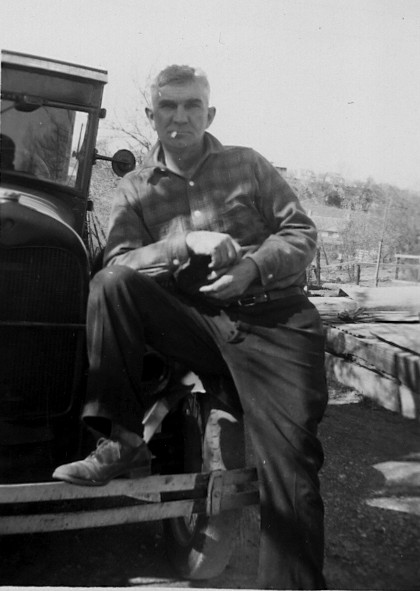
Opening
The photo shown here is the finished version of my '34
Ford PU.
I decided to build a 1934 Ford Pickup as my 3rd project.
I picked this because I remember my grandfather having
a pickup similar to the '34 Ford. I have vague memories
of the pickup and ask my mom about it. She didn't
remember it, but said that my uncle, her brother, had a
coal business before he joind the Marine Corp to fight
in WWII. Before he left, he apparently gave the truck to
his dad, my grandfather. Therefore, I decided to build
what I rememeber. I remember it was faded black with a
little rust on the edges of the front fenders. This will
give me a chance to learn how to age and fade the paint.
I've been watching a lot of model building YouTube video's
that teach how to fade paint and show rust. I will
provide links to the video's that were the most helpful.
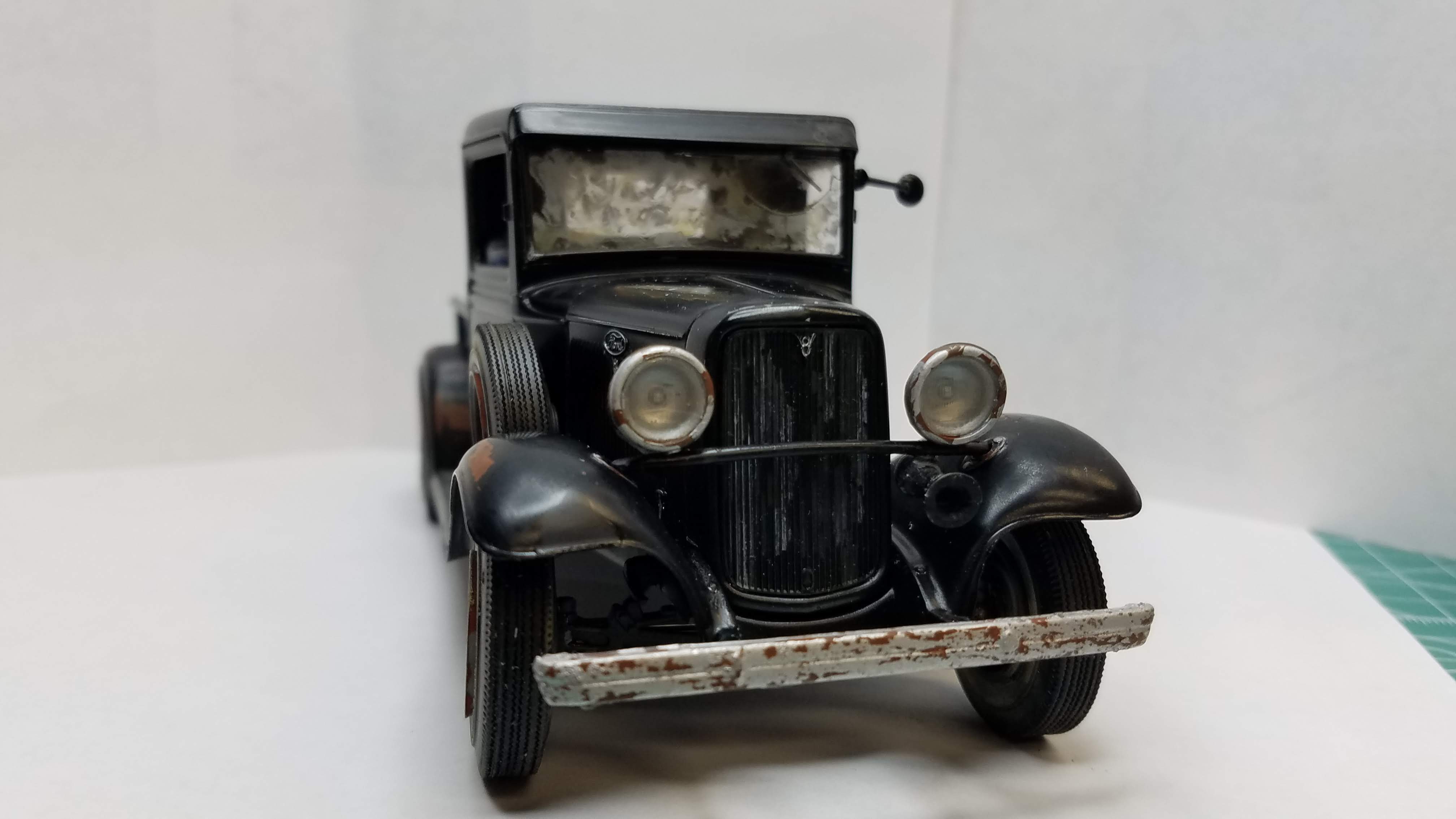
1 of 121
All the needed parts are off the sprew and will need a lot
of sanding and filing. I've never seen as much flash on a
model as there is on this one. It was so bad I did a video
about it. If you're interested, you can watch the video on
my YouTube channel:
Skip's Messy Workbench
or directly to the video about large amounts of flash:
01 1934 AMT Ford Pickup Model Build
The next several pictures is of these parts. At this time
I'm not sure which wheels I'll be using; however, I'm
leaning toward the solid steel wheels because my memory
tells me that my grandfathers truck had solid steel
wheels. I might change my mind. We'll see.
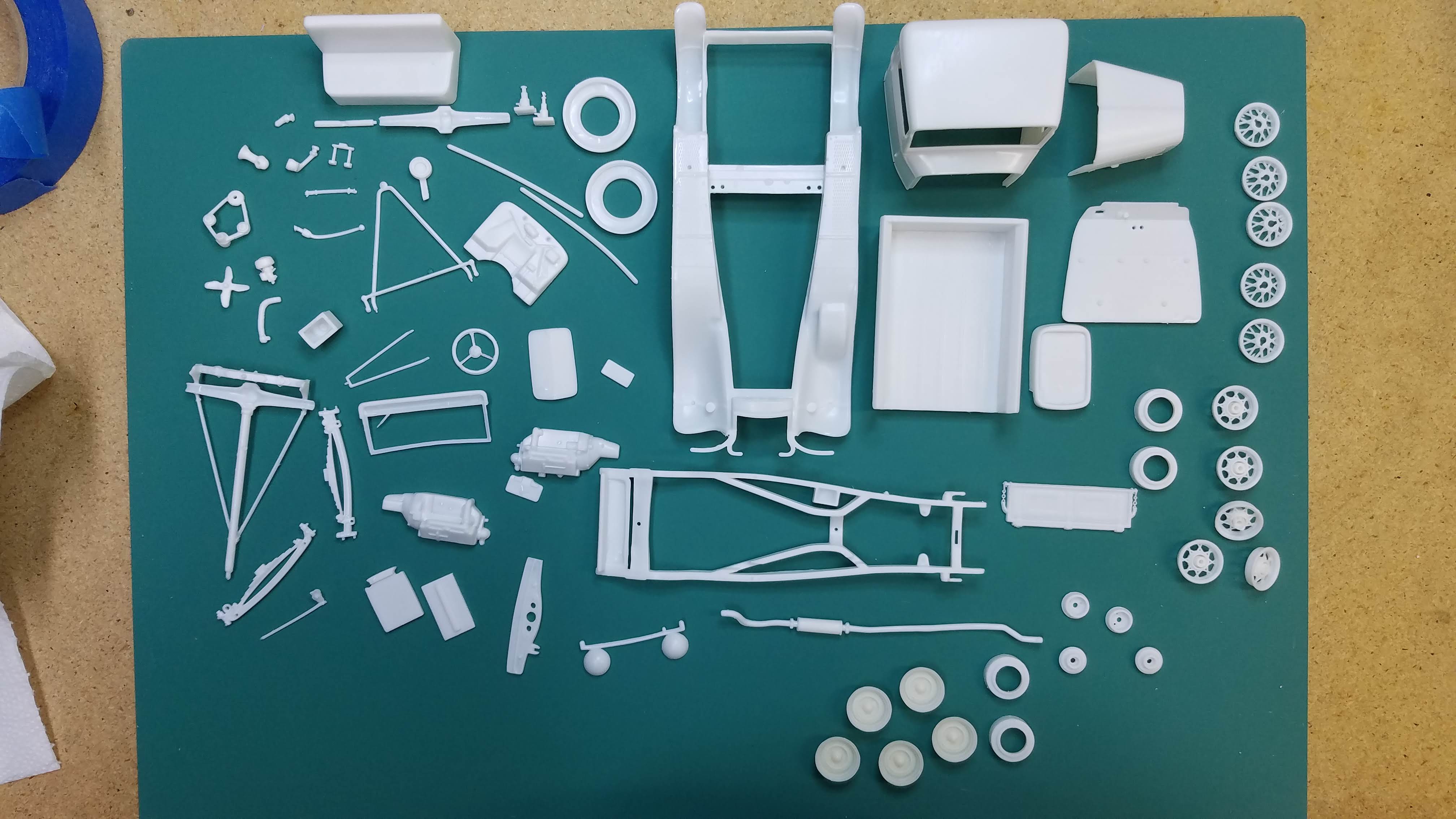
2 of 121
Needed parts are removed from the sprew and in the process of having all flash removed, injector holes are either being filled with putty or sanded smooth.
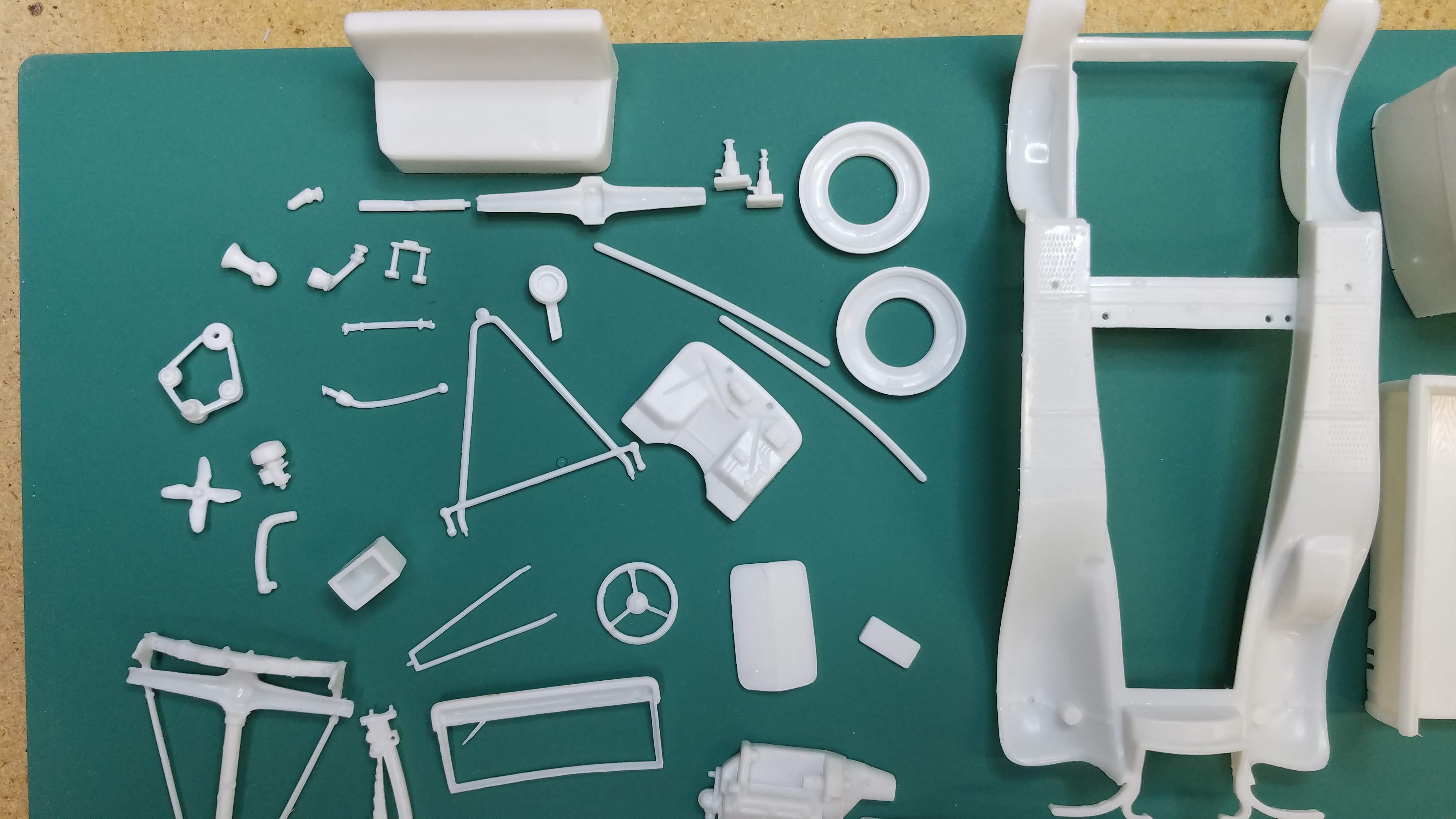
3 of 121
Needed parts are removed from the sprew and in the process of having all flash removed, injector holes either being filled with putty or sanded smooth.
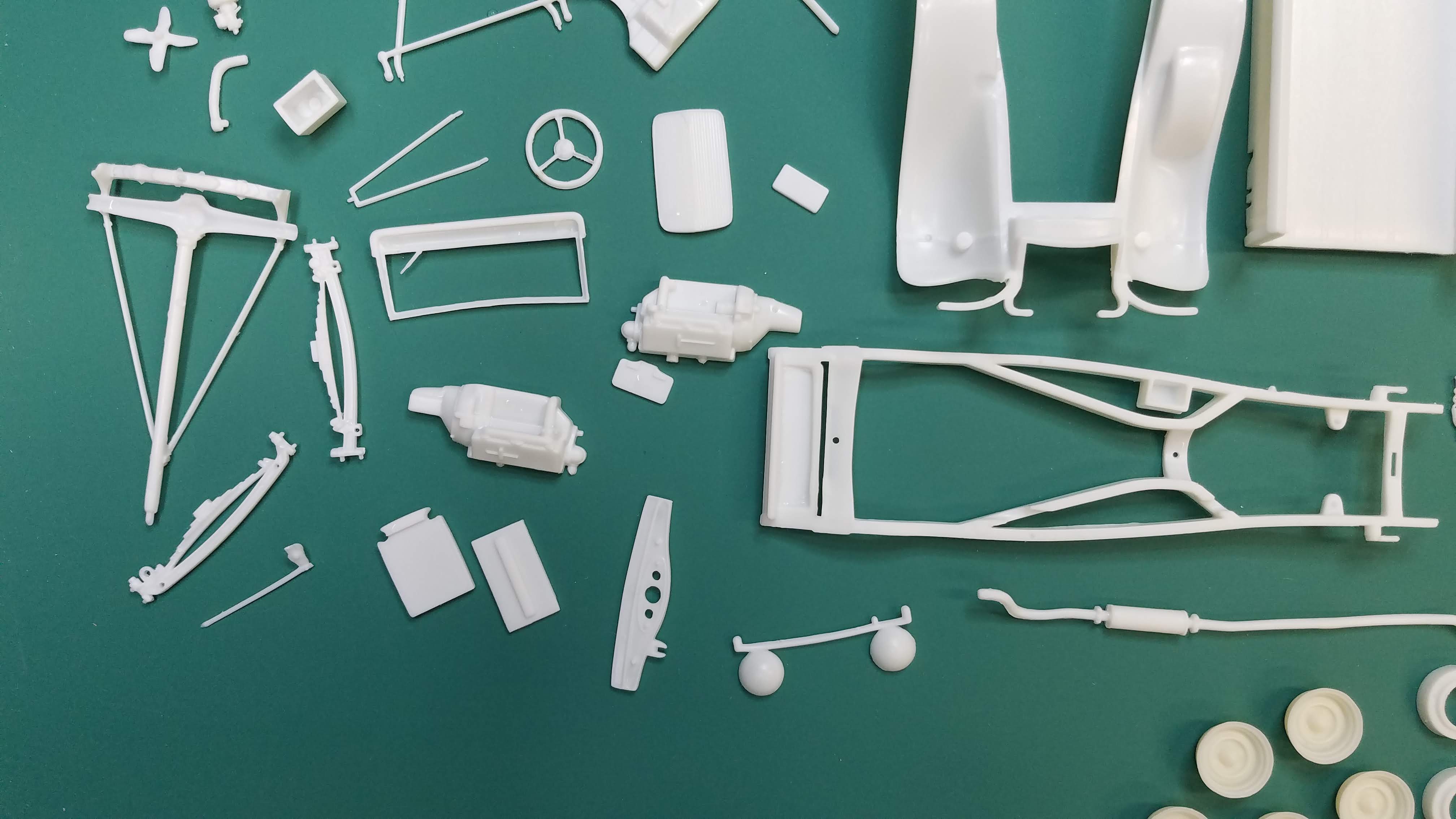
4 of 121
Needed parts are removed from the sprew and in the process of having all flash removed, injector holes either being filled with putty or sanded smooth.
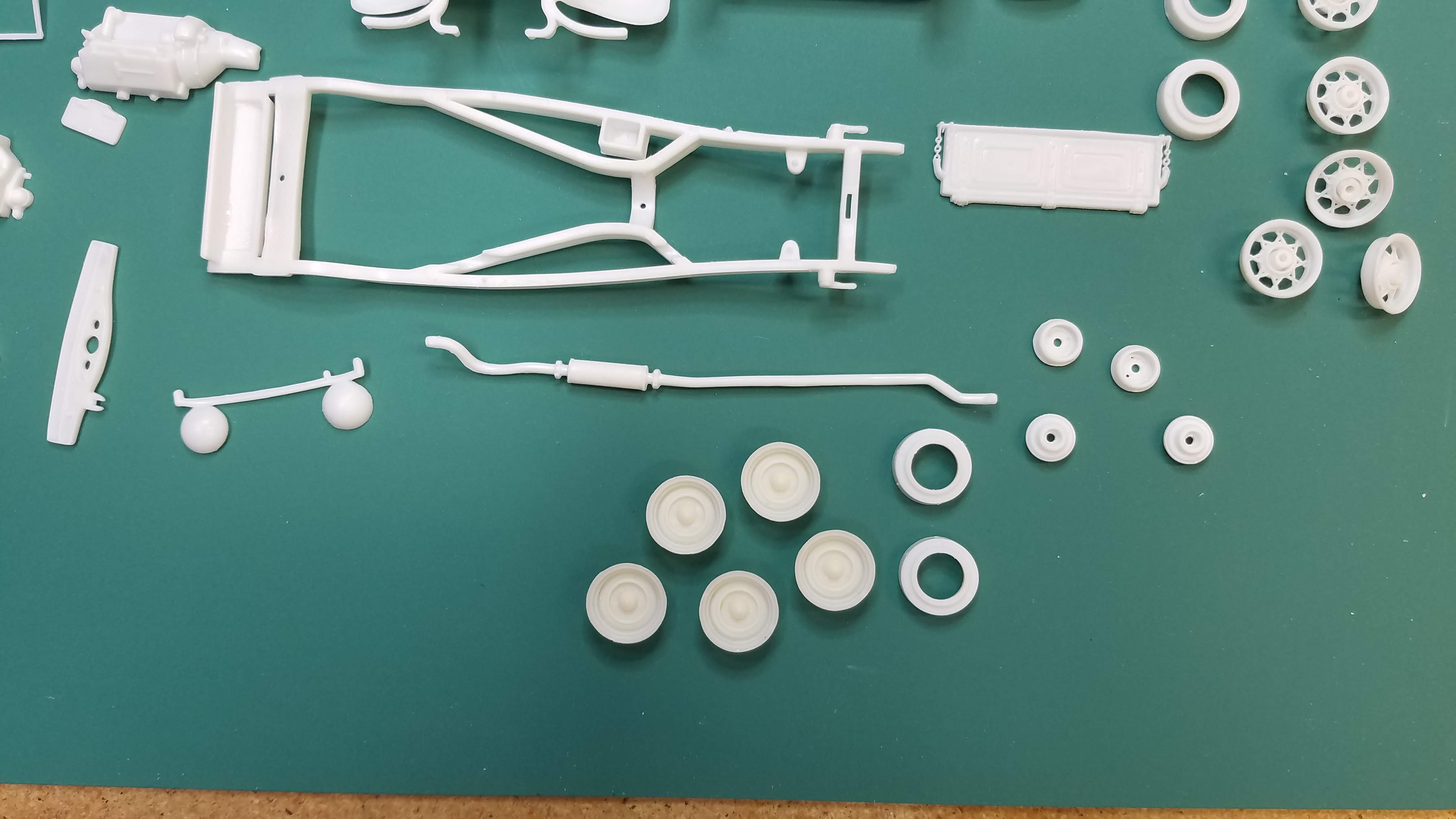
5 of 121
Needed parts are removed from the sprew and in the process of having all flash removed, injector holes either being filled with putty or sanded smooth.
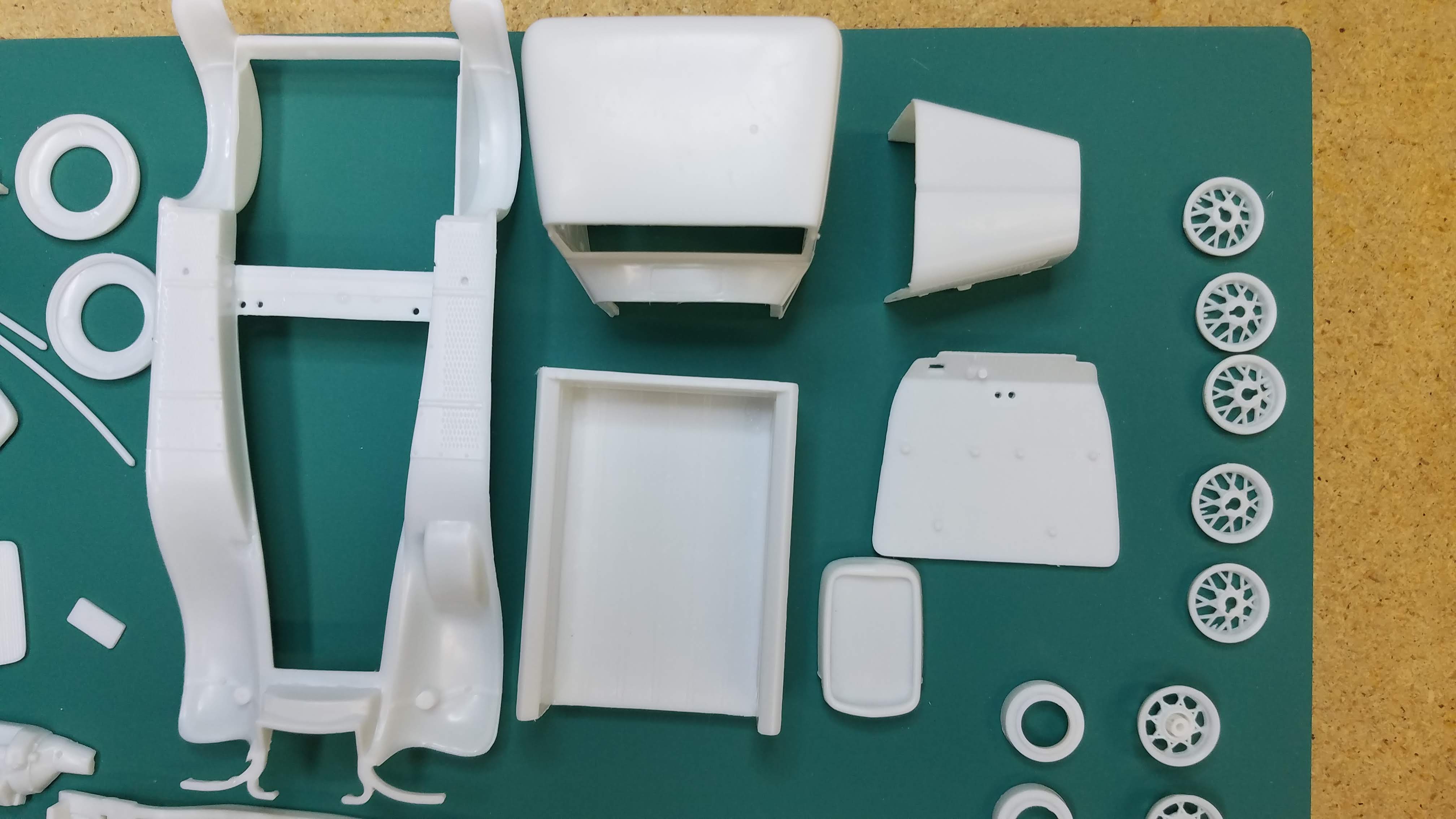
6 of 121
Needed parts are removed from the sprew and in the process of having all flash removed, injector holes either being filled with putty or sanded smooth.
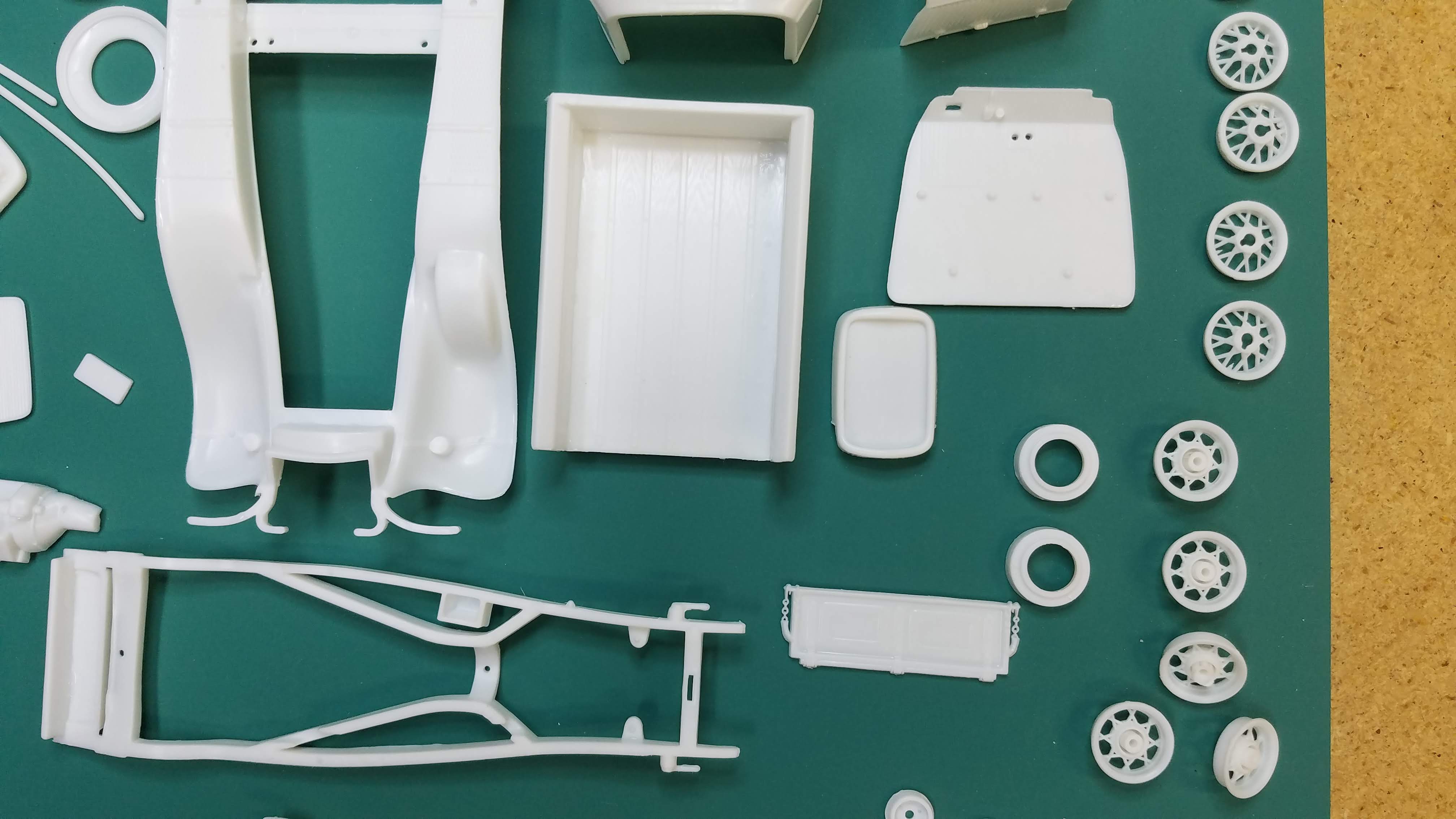
7 of 121
All small parts are being prepped for primer.
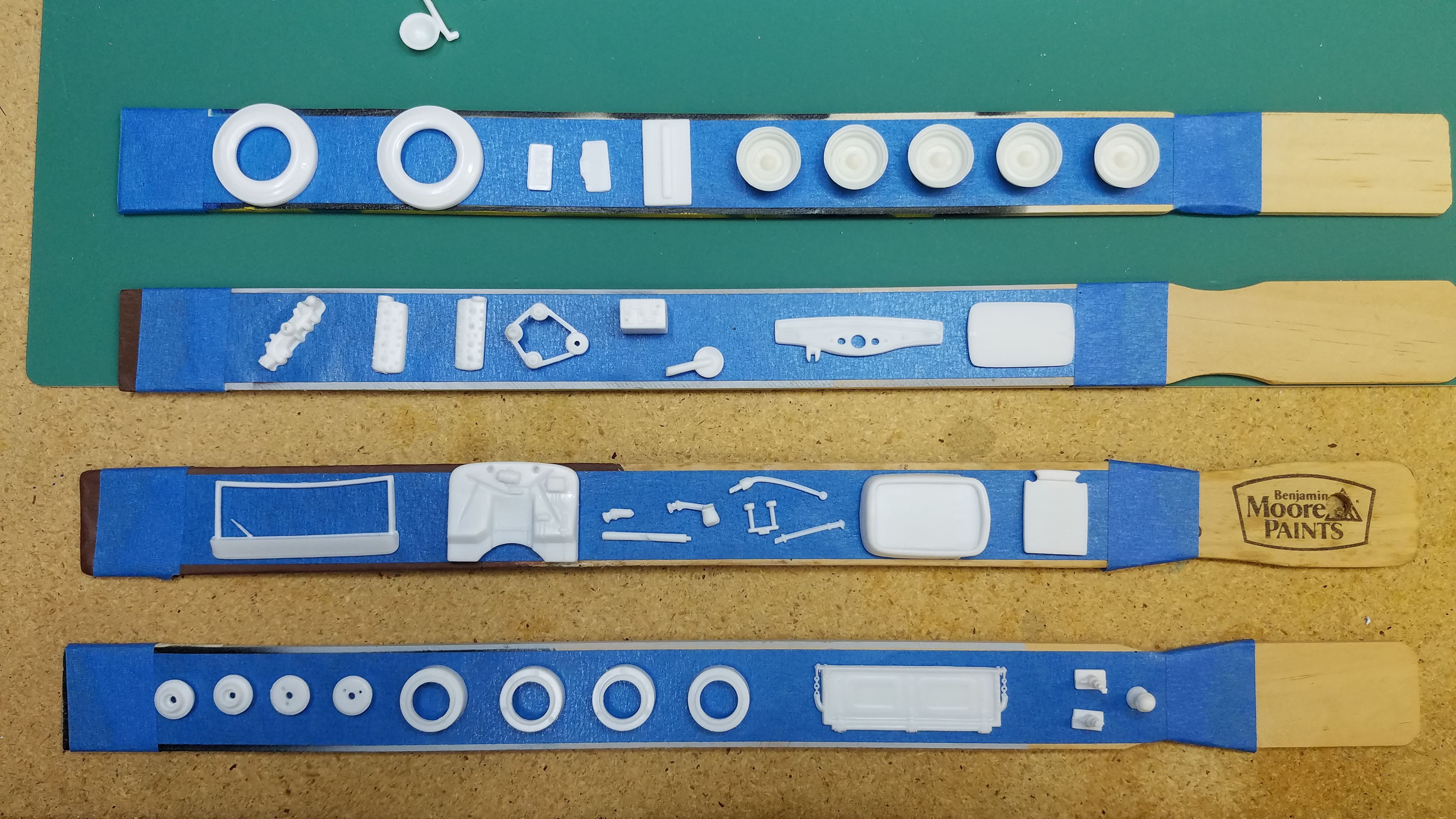
8 of 121
All parts are being prepped for primer.
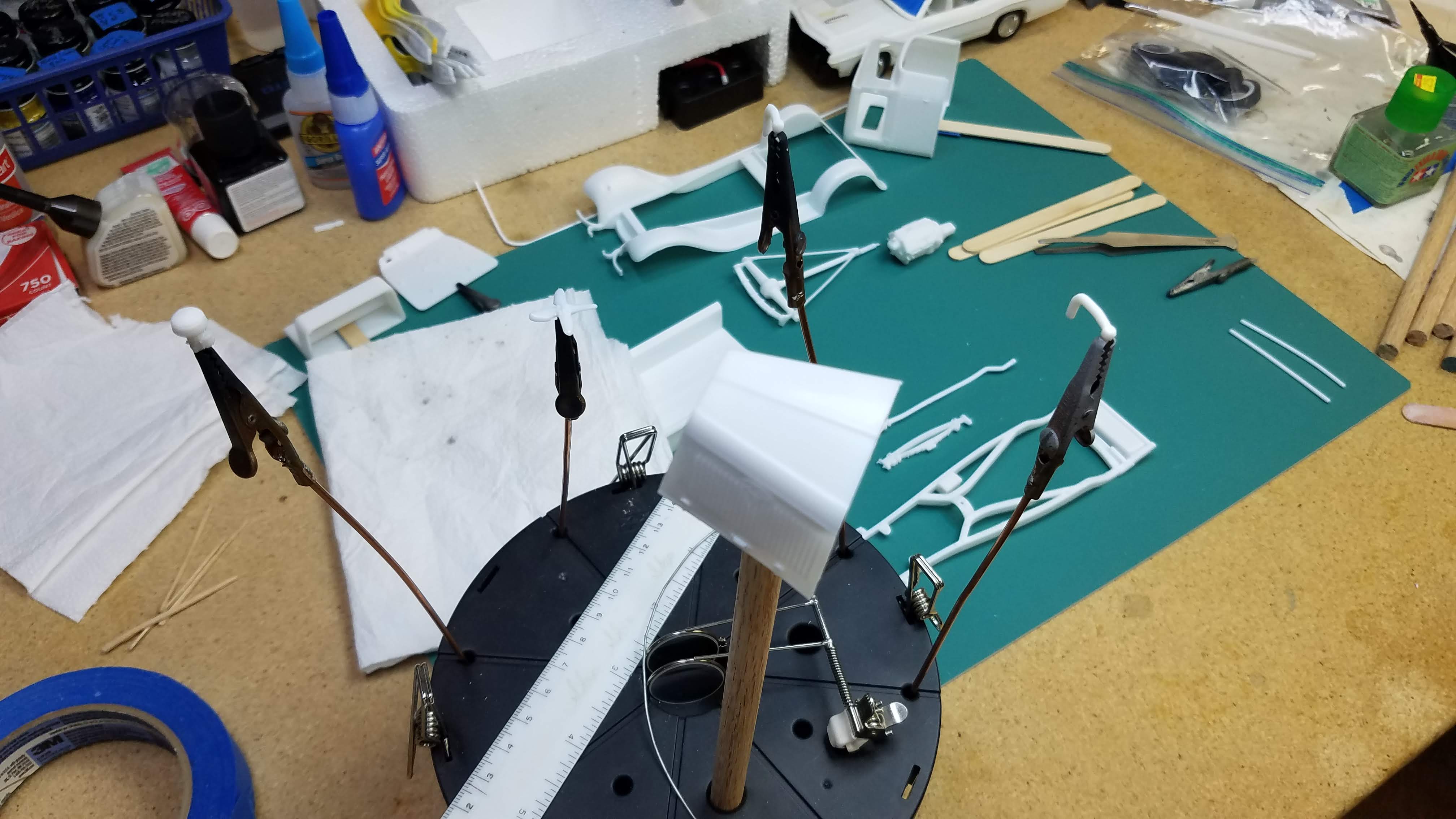
9 of 121
Parts have been primed with Model Master Gray Primer.
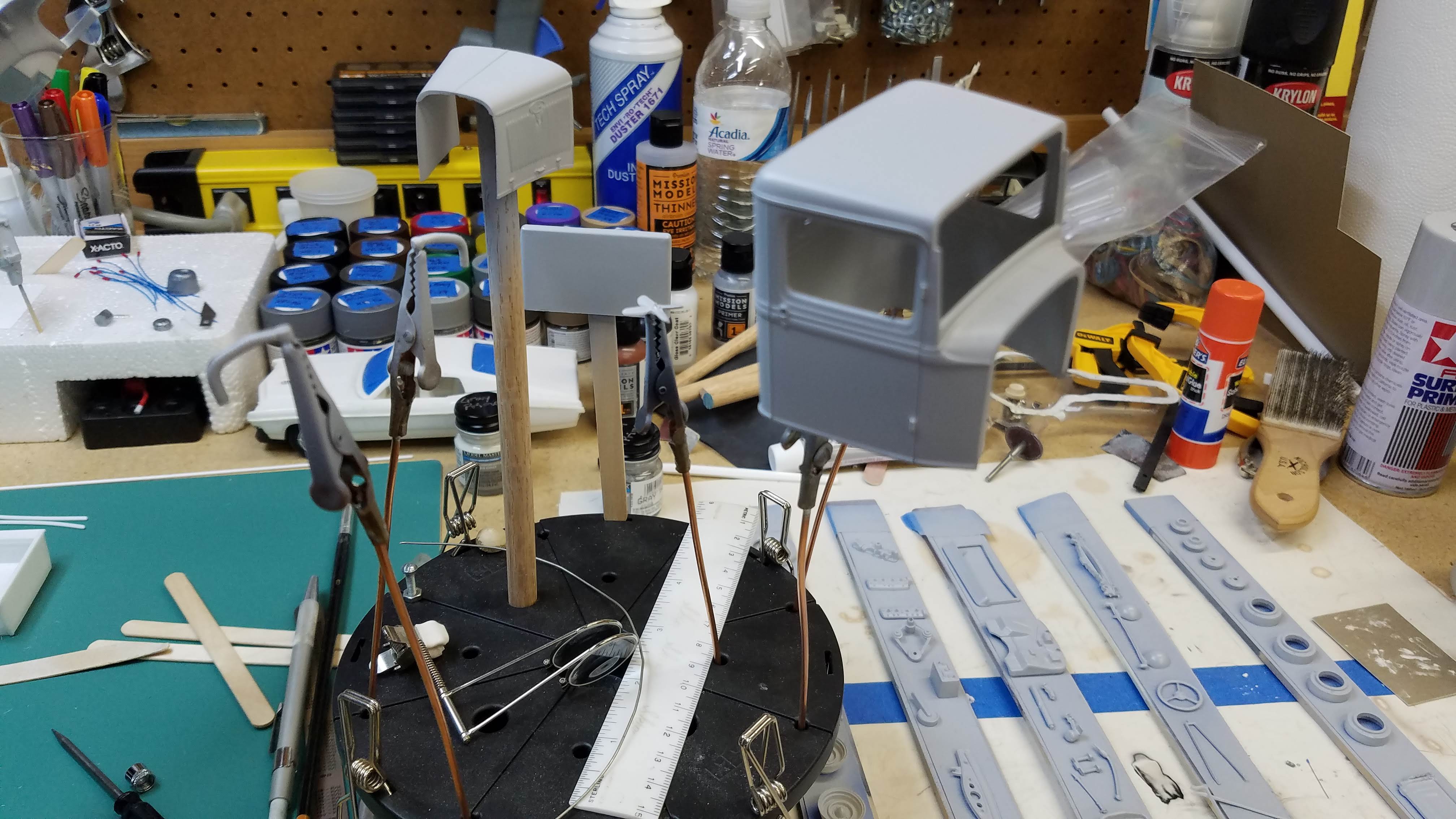
10 of 121
Parts have been primed with Model Master Gray Primer.
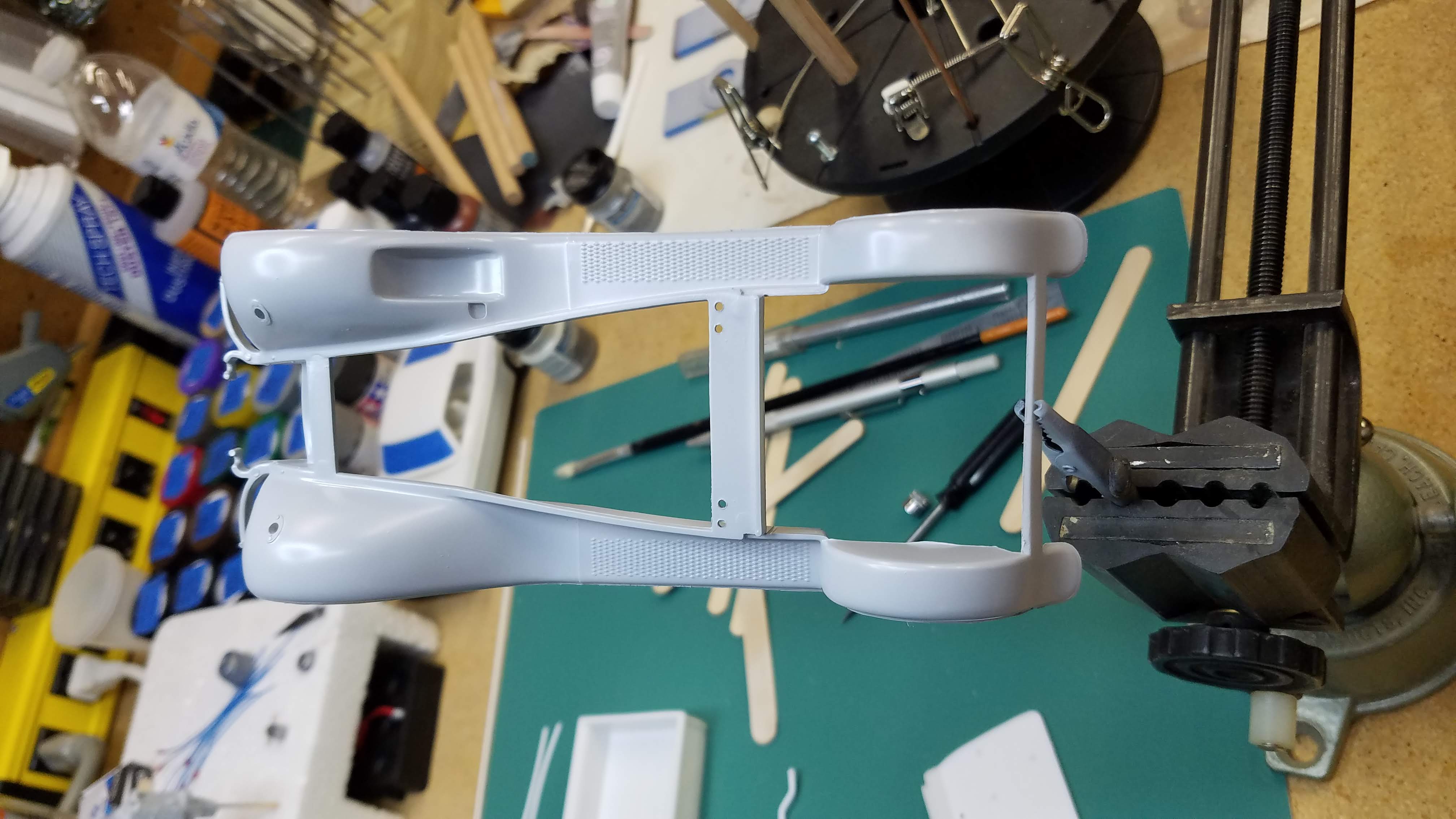
11 of 121
Parts have been primed with Model Master Gray Primer.
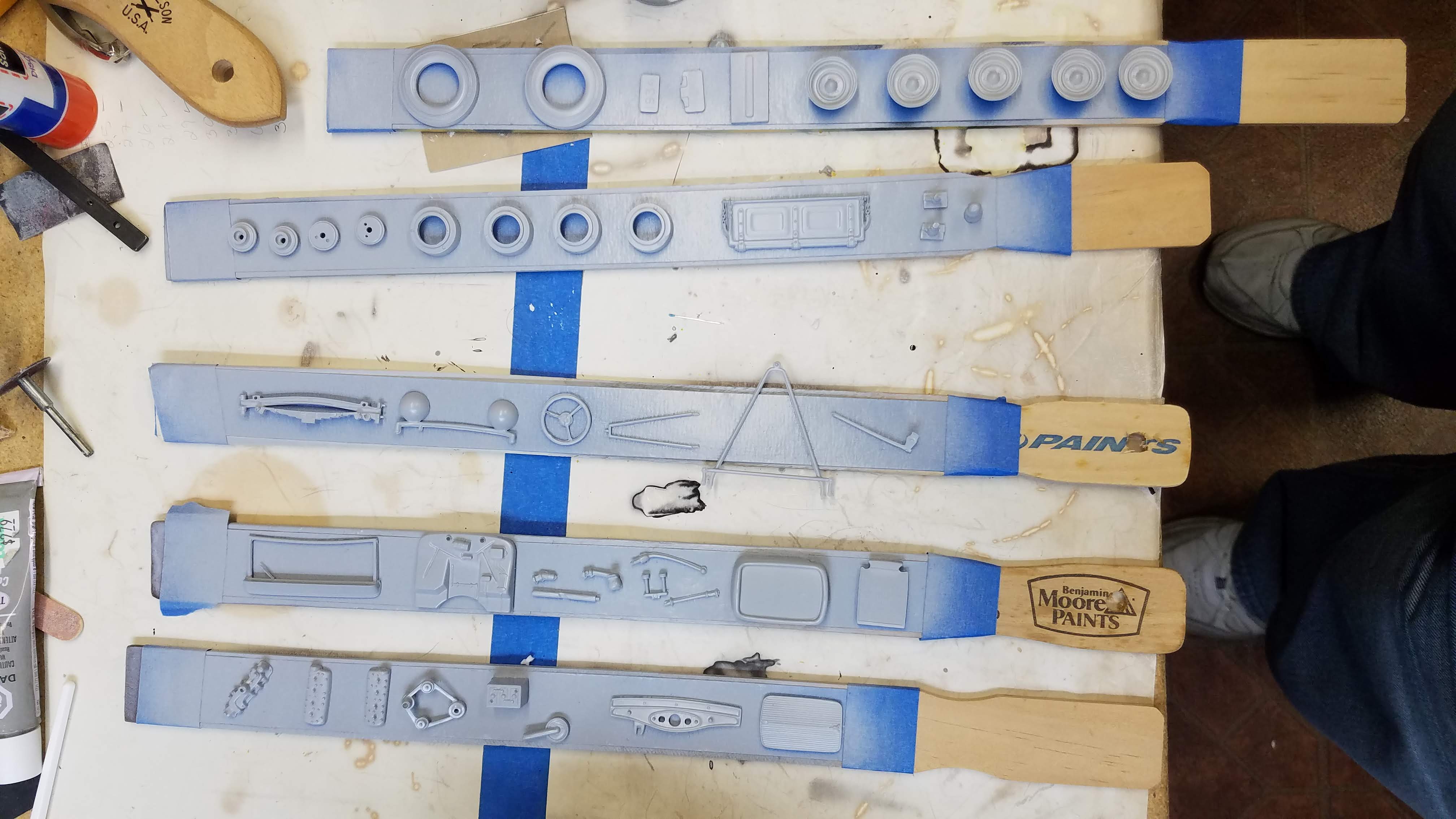
12 of 121
Parts have been primed with Model Master Gray Primer.
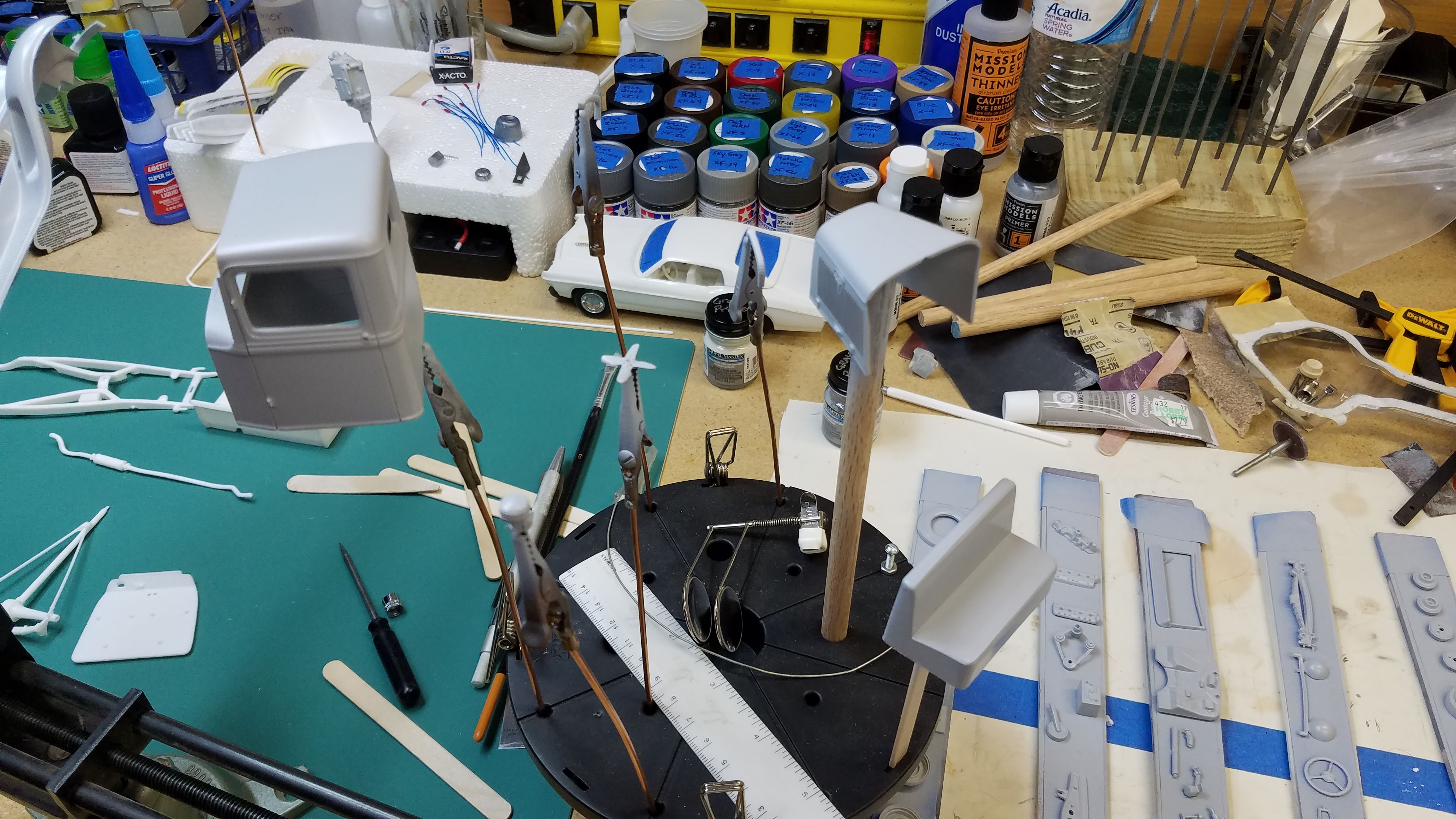
13 of 121
Parts have been primed with Model Master Gray Primer.
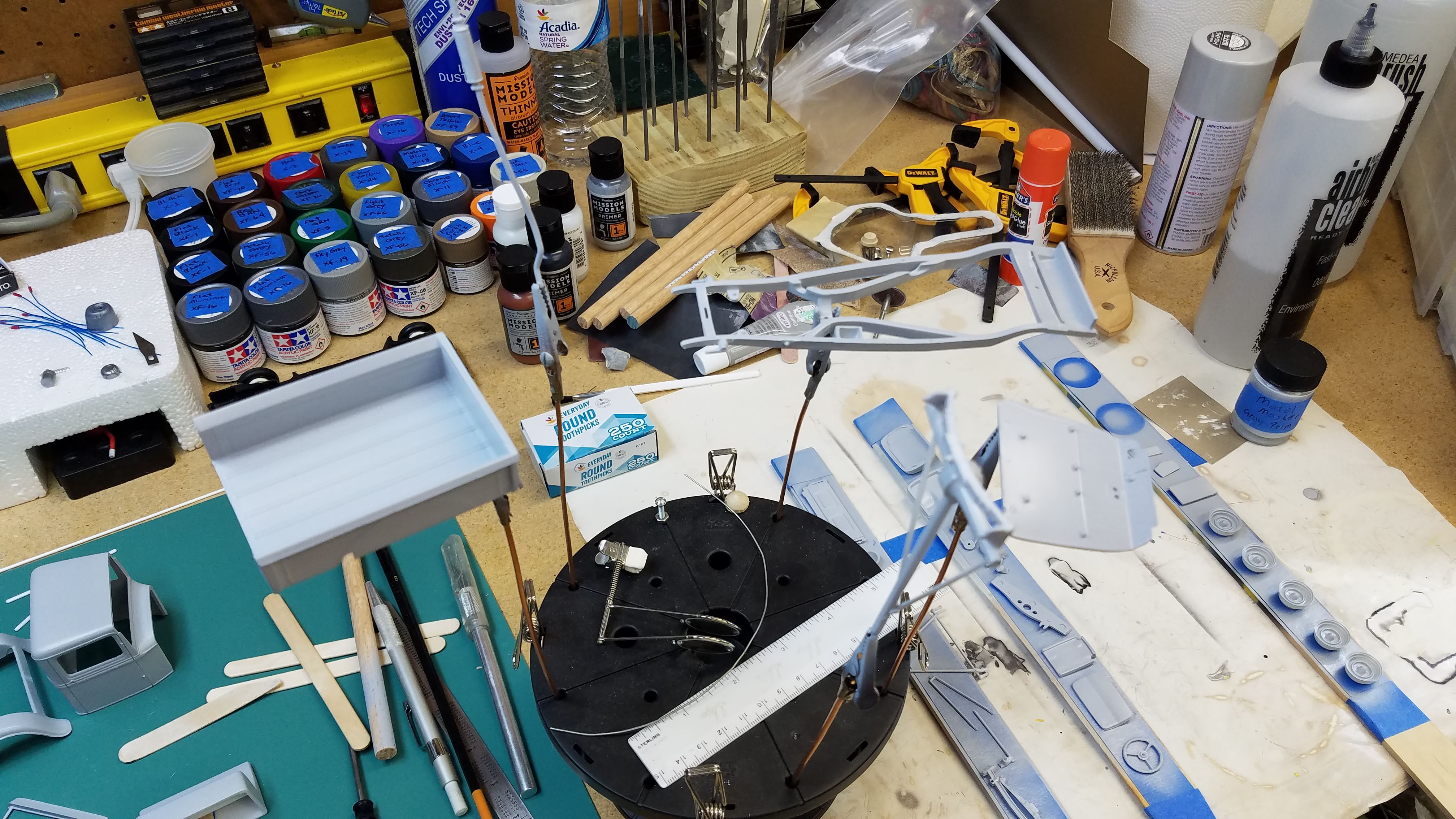
14 of 121
Parts have been primed with Model Master Gray Primer.
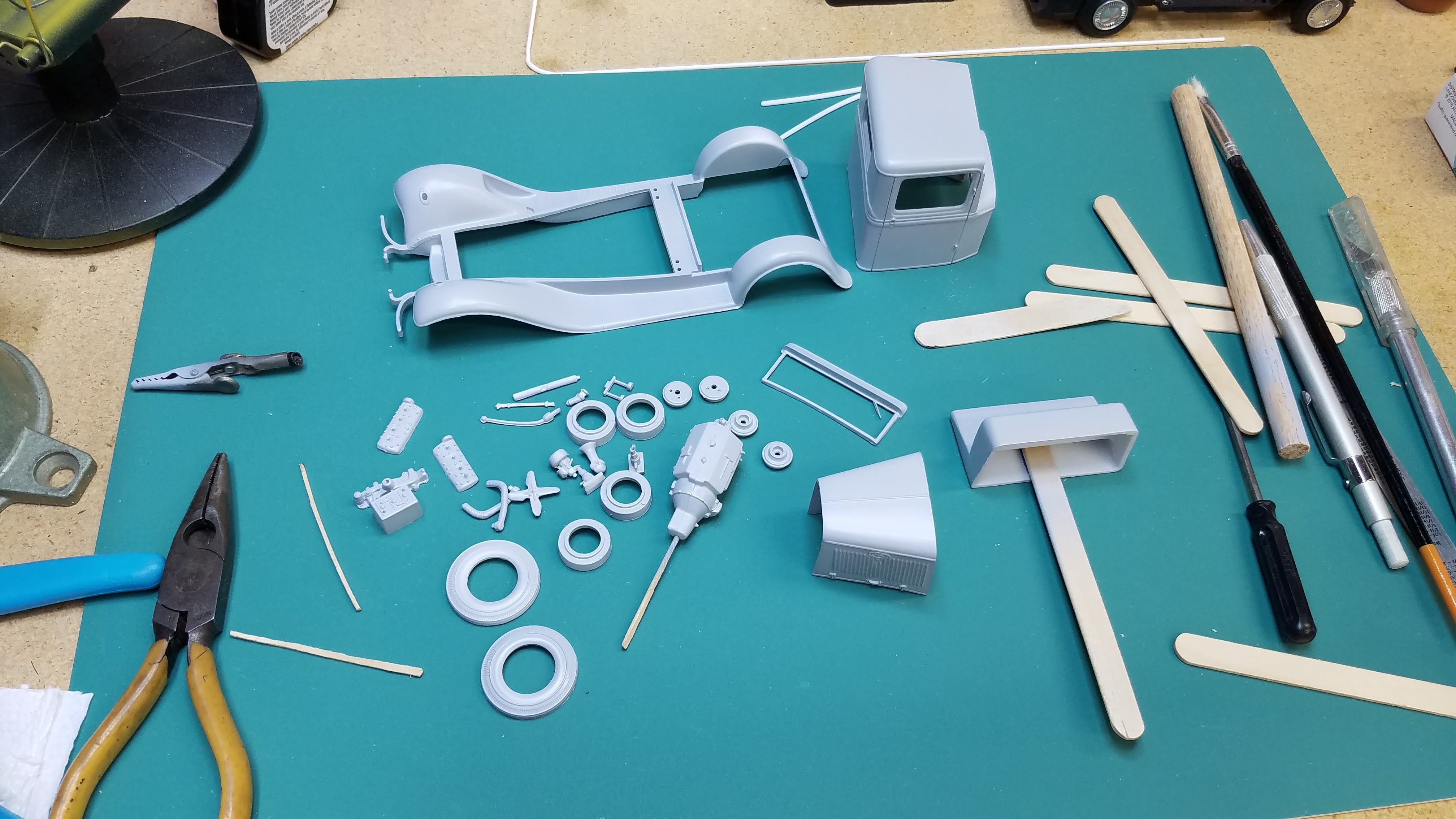
15 of 121
Parts have been primed with Model Master Gray Primer.
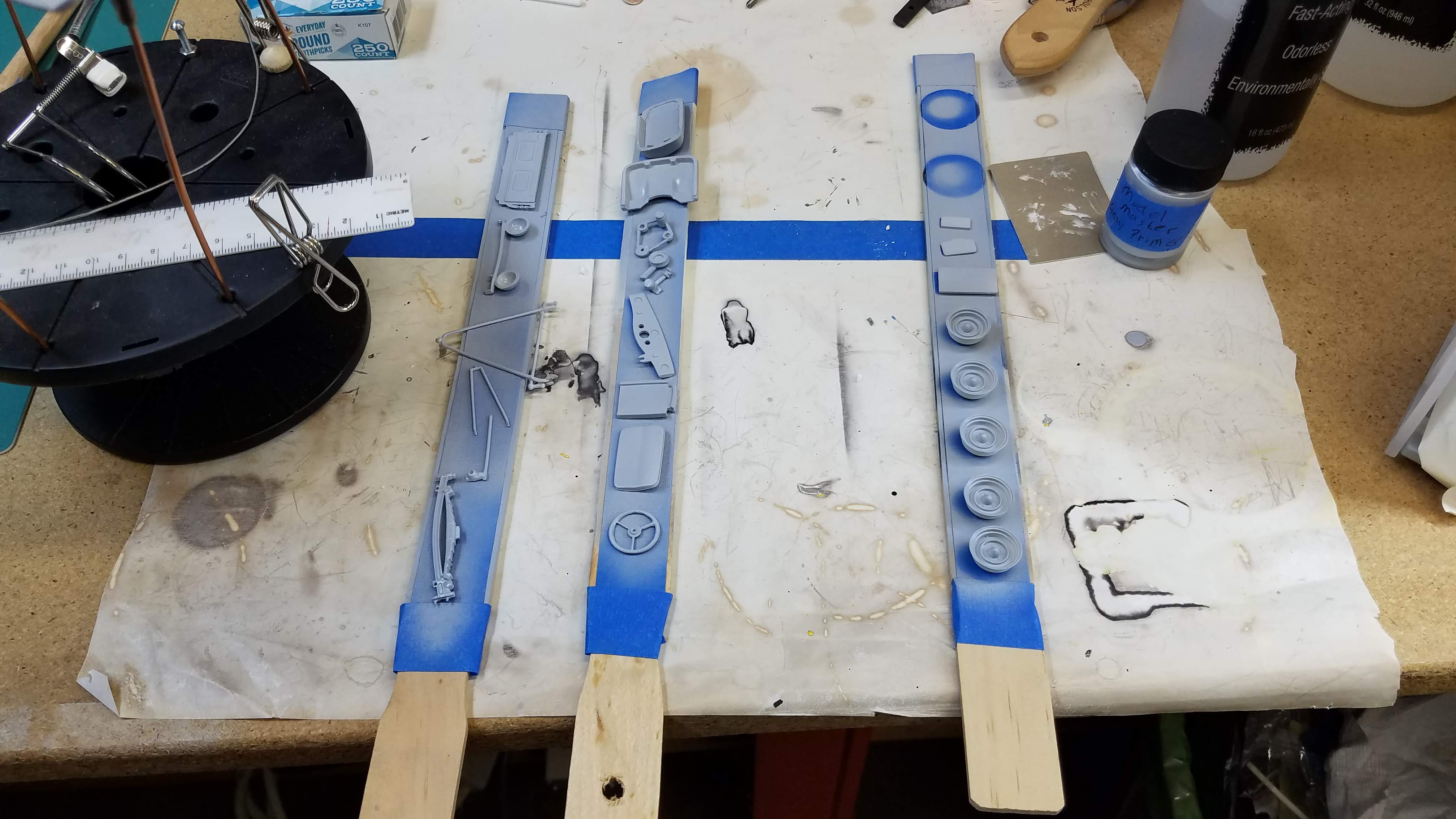
16 of 121
With all parts in primer, cleaning areas that were brought out by the primer will be fixed and reprimed.
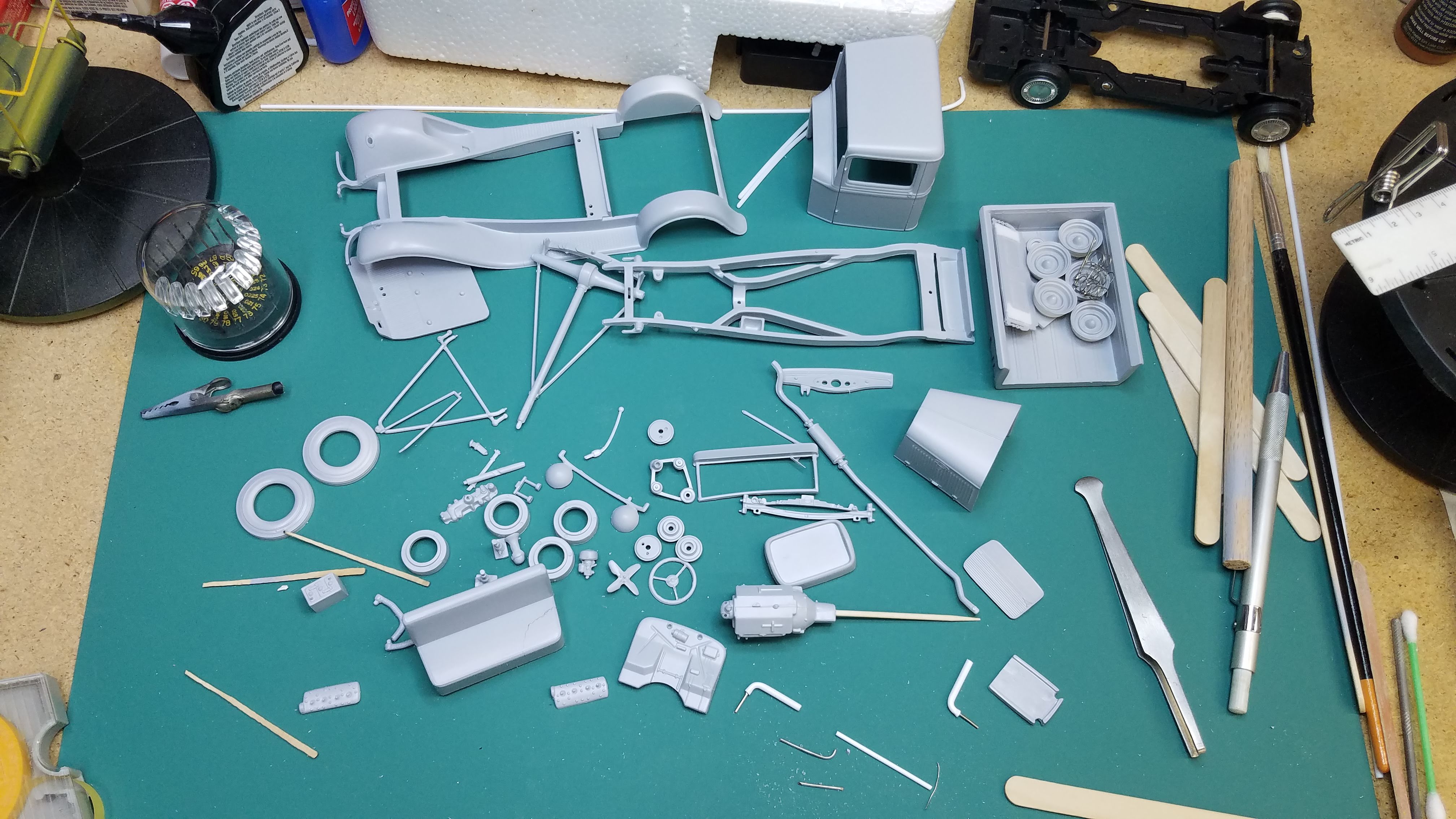
17 of 121
While the primer is drying I started working on some additions I wanted to include that are not part of the kit. Some of the 1934 flathead V8's had metal conduits to enclose the spark plug wires to route them to the distributor. The distributor is mounted on the front of the engine. These tubes are not included with the kit. Here, I'm using some 0.096 inch (2.4mm) styrene tube to make these tubes. I inserted a piece of solid bus wire in the end that attaches to the distributor. I then drilled holes in the distributor and will insert the bus wire into the holes to help support the tubes. The holes in the distributor can be seen in this picture. Small holes will be drilled along the tubes to insert the spark plug wires.
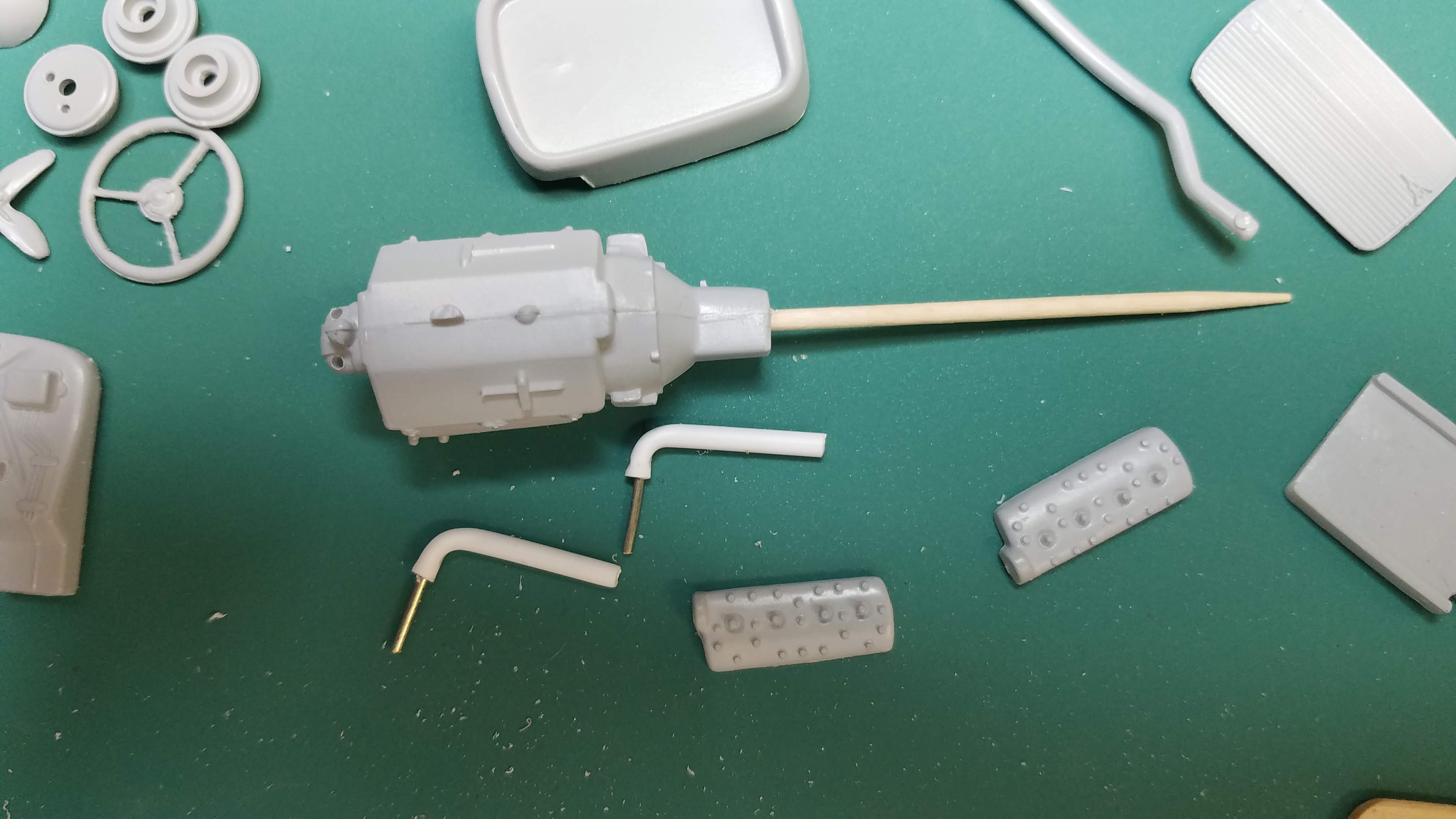
18 of 121
I plan to use the bench seat in the cab and want to cover it
with blankets suggesting that the seat is very worn.
After doing research on depicting blankets on seats I
found a method that seems to work really well.
I found this method on the YouTube channel;
Throttle Power.
Here is a link to the video I used:
ADD a Mexican blanket to ANY scale
Model How To...
Tim at Throttle Power used images of blanks from the
web. Being anal, I decided to take a picture of a real
throw, shown in this picture. I then measured the width
of one of the strips and calculated the 1/25th scale
width. Using Gimp, I scaled the image until the stripe
was the correct scale. Then I did the crumpling as Tim
described in his how to... video.
Gimp is an open source free photo editor similar to Photoshop.
Here is a link to their website:
Gimp Download
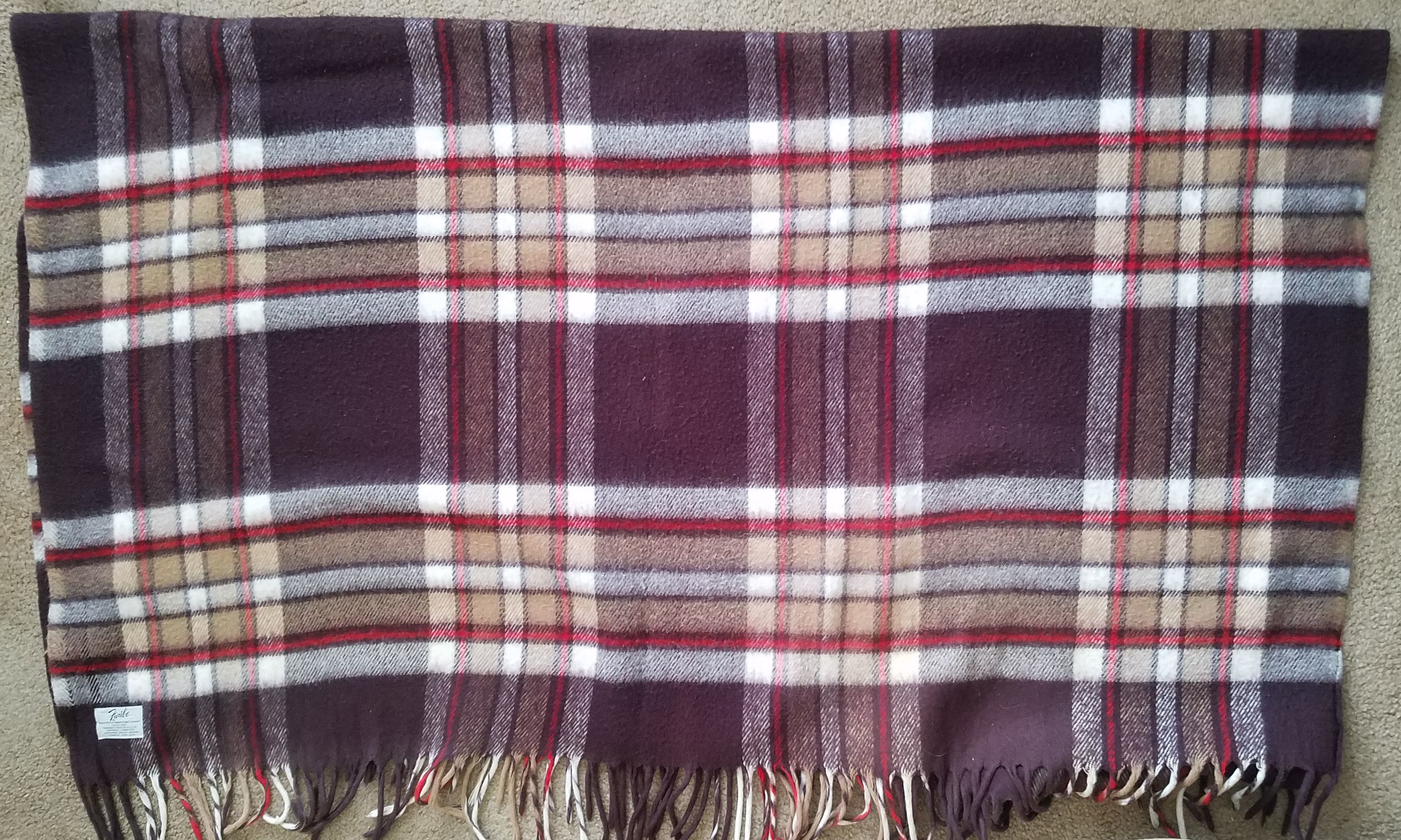
19 of 121
This is another throw I plan to use on the bench seat.
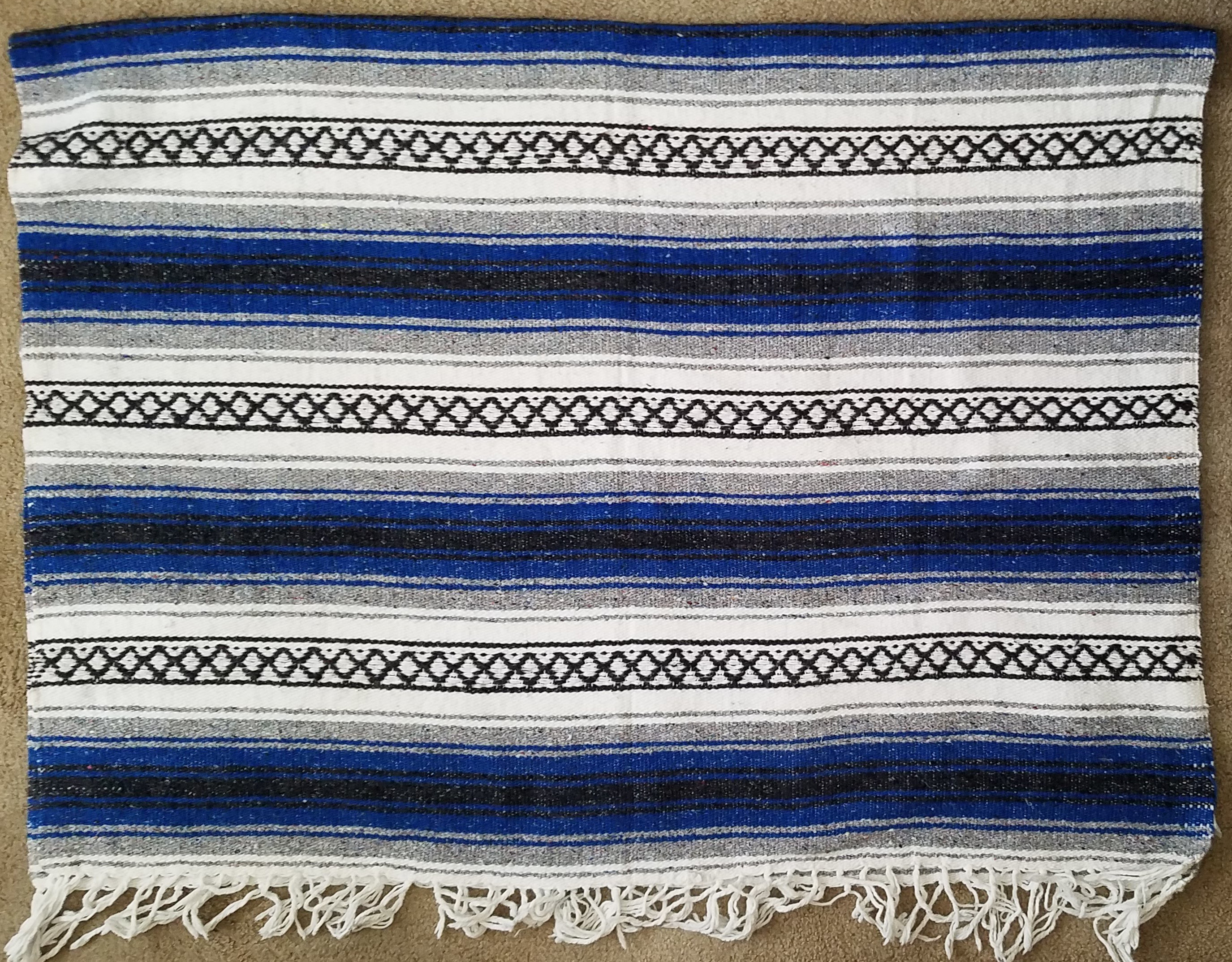
20 of 121
I wanted to make the seat on the driver side worn through to the springs. First, I took a Dremel tool and roughly cut open the front corner of the driver side of the bench seat. With the seat cut open, how do I make the springs? Actually, it was fairly simple. I took some 22 AWG (American Wire Gauge) solid bus wire to form the outside perimeter of the springs. I formed the wire to fit the contour of the seat. I than took some 26 AWG (American Wire Gauge) bus wire and using a tapered center punch for a mold, I made three or four spiral wraps around a taper of the punch to form the springs. I then wire wrapped the coiled springs to the frame and soldered them in place. I didn't care if it was a-bit sloppy, because I wanted the look of the springs possibly being repaired with some bailing wire. (Growing up in farm country, bailing wire was used to fix a lot of machinery). I used a couple drops of Loctite to hold the spring frame in place.
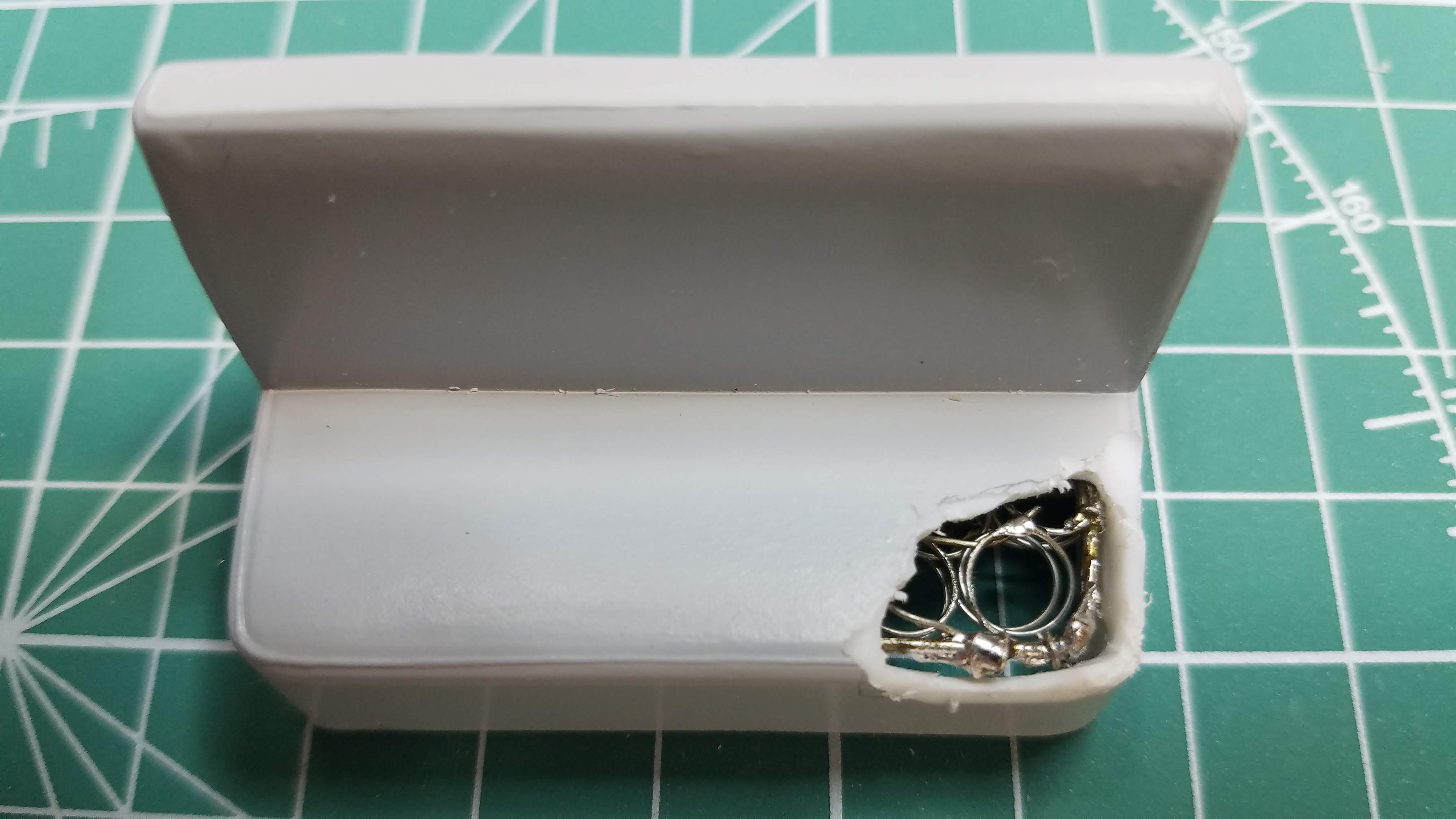
21 of 121
I wanted to make the seat on the driver side worn through to the springs First, I took a Dremel tool and roughly cut open the front corner of the driver side of the bench seat. With the seat cut open, how do I make the springs? Actually, it was fairly simple. I took some 22 AWG solid bus wire to form the outside perimeter of the springs. I formed the wire to fit the contour of the seat. I than took some 26 AWG bus wire and using a tapered center punch for a mold, I made three or four spiral wraps around a taper of the punch to form the springs. I then wire wrapped the coiled springs to the frame and soldered them in place. I didn't care if it was a-bit sloppy, because I wanted the look of the springs possibly being repaired with some bailing wire. (Growing up in farm country, bailing wire was used to fix a lot of machinery). I used a couple drops of Loctite to hold the spring frame in place.
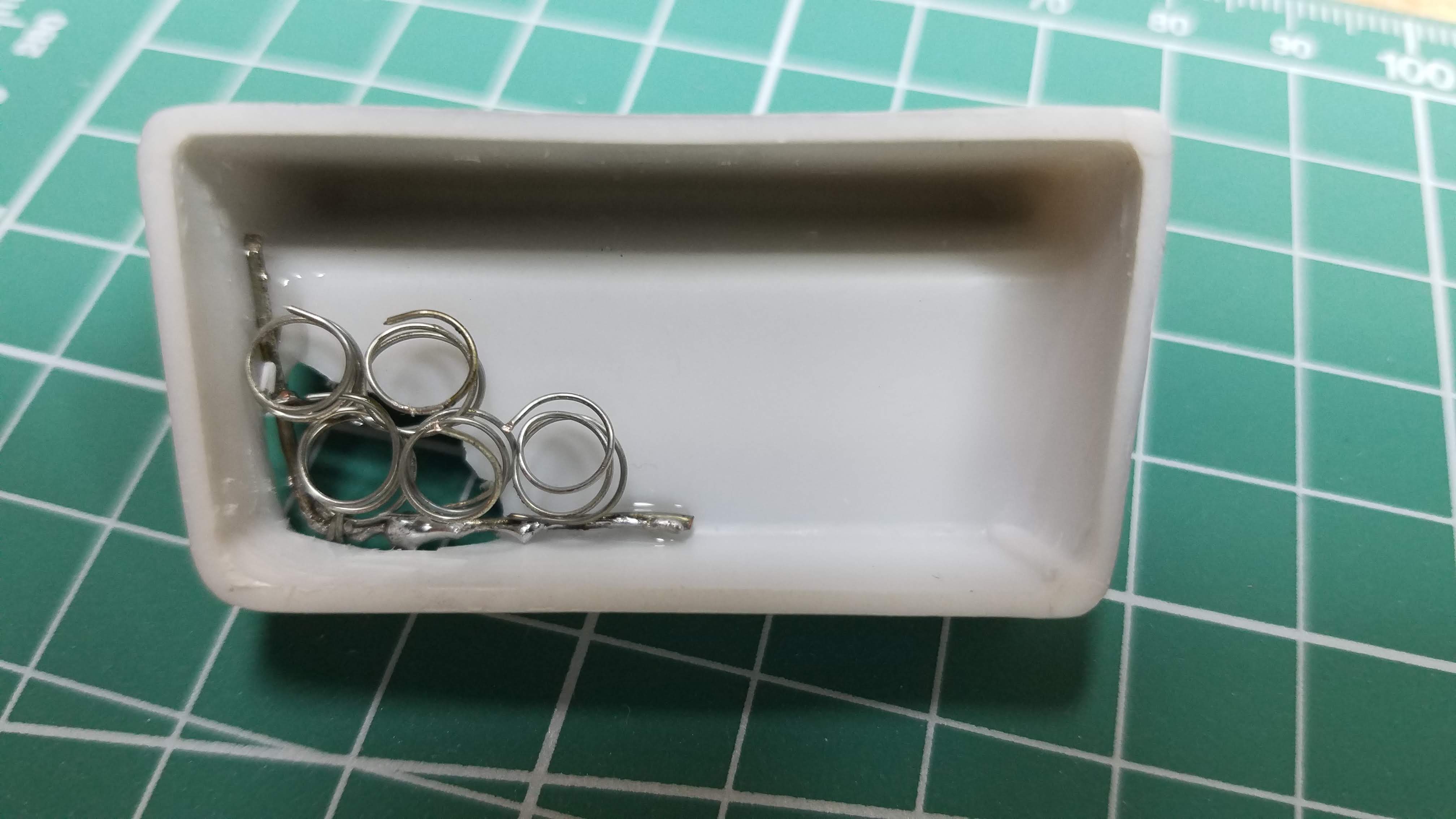
22 of 121
I did a lot of research on the engine in the '34
pickup and found it was almost impossible to find
what an original engine looked like. The color variations
were endless. It seemed that a lot of the engines I
found were green. I didn't care for the color because I
didn't want it to look like a John Deer, (there is
nothing wrong with John Deer, they make a
wonderful product).That said...I mixed and matched what
I thought looked good to me.
I decided to make the engine block flat black using
Tamiya XF-1, the transmission housing and heads steel
using Model Master Steel, the valve covers flat green
Tamiya XF-5. This picture is the valve covers and the
head. I'm not sure I like the flat green? I'll see how
they look after more detailing of the bolts and spark
plugs.
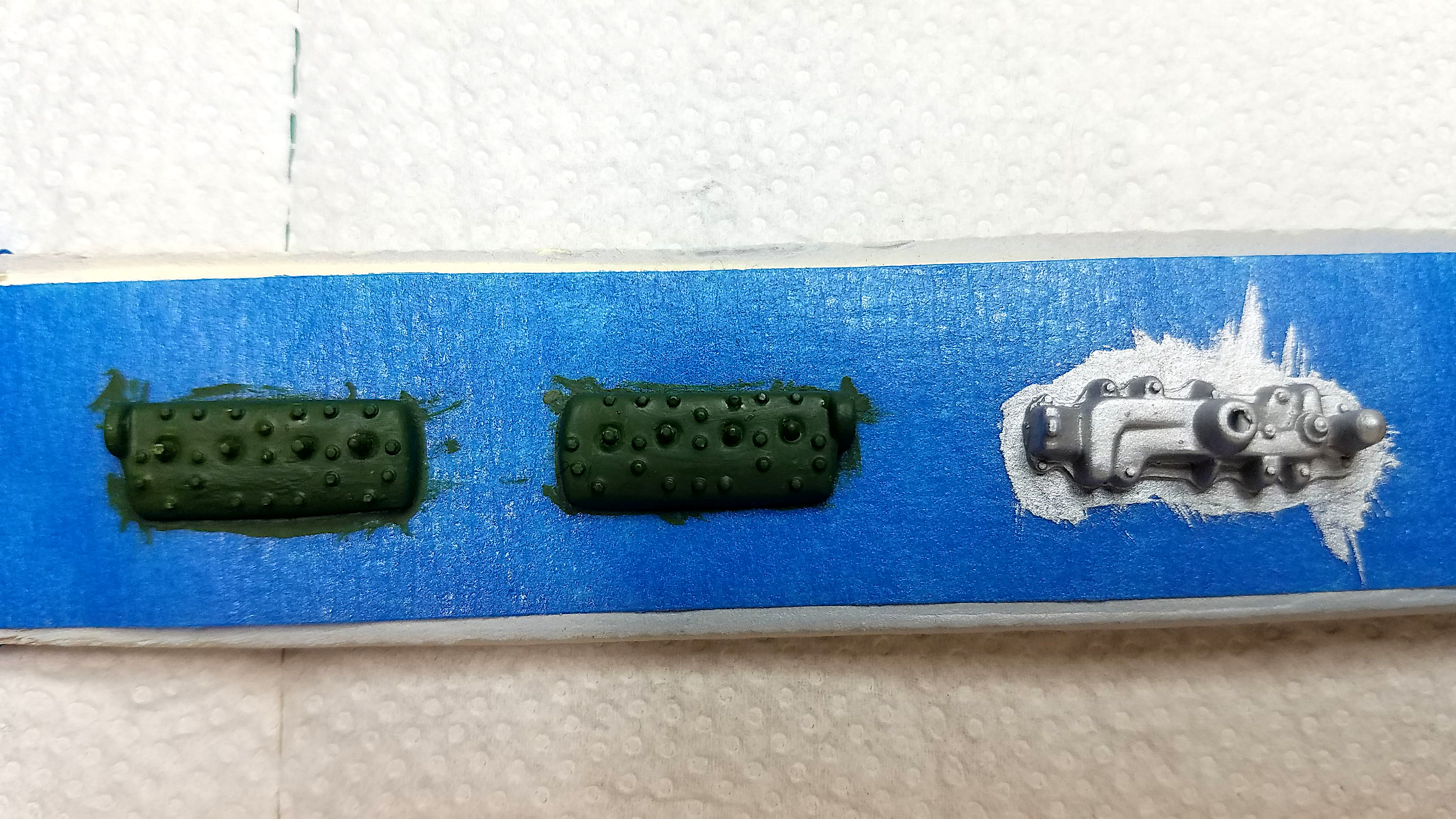
23 of 121
I hand painted the engine block with Tamiya XF-1 Flat Black and the transmission housing in Model Master Steel. Since the last photo I did find that the original Ford engine's were green. I'm leaving my block flat black and calling it creative license.
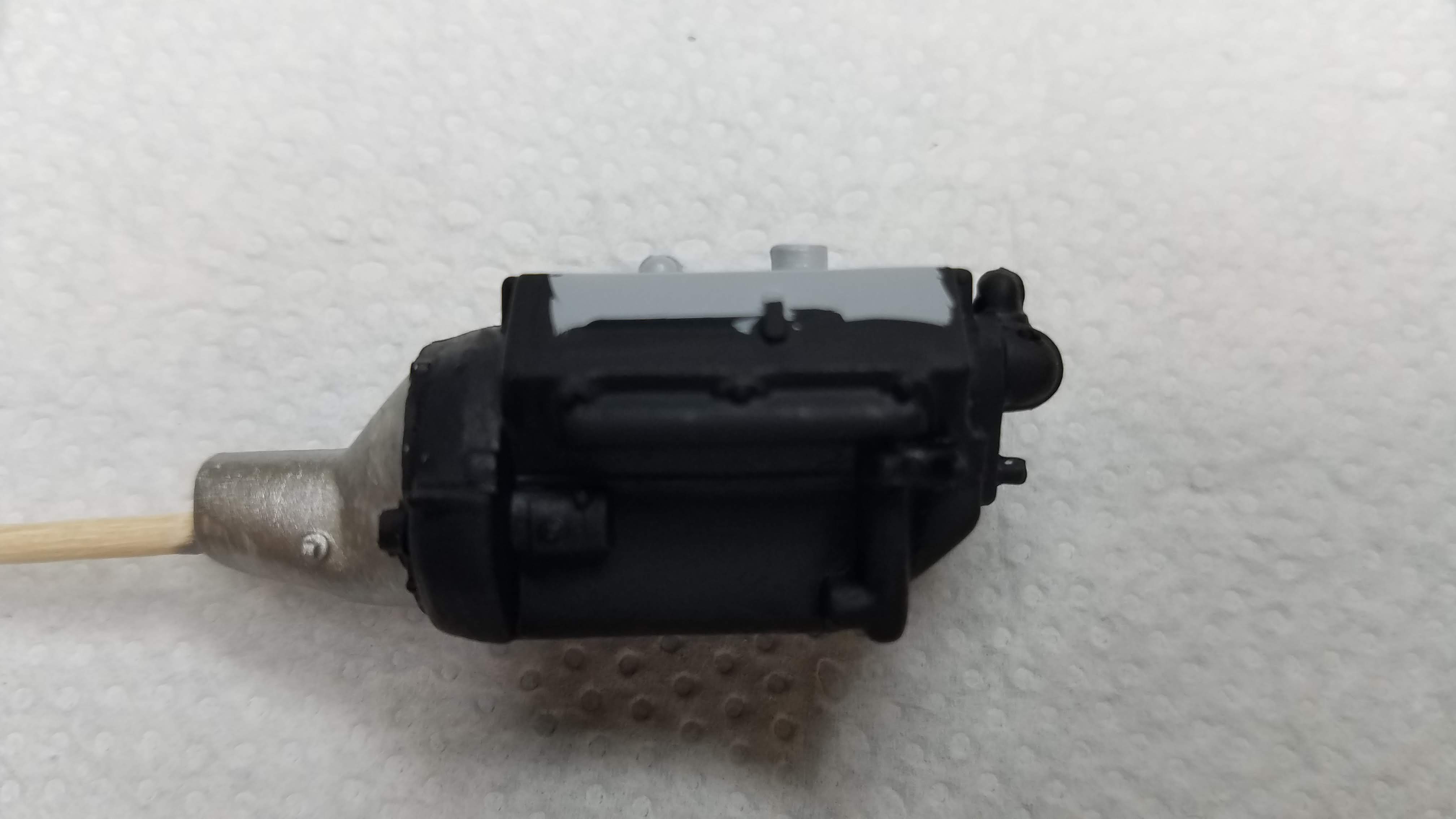
24 of 121
I used a silver sharpy to top off the valve cover bolts and some Model Master White for the spark plugs. My hands are not as stable as they use to be, so I did get some white in the spark plug wells. I didn't fix it because once the spark plug wires are attached, it won't be noticed. I also did the exahaust manifold in Tamiya XF-59 Desert Yellow. I thinned it so that it did not cover properly and allow some of the flat black to show through. It makes the pipes look more used. There will be further dirtying. I also painted the starter in Model Master steel, the fan belt in flat black and the pullies and generator in flat green.
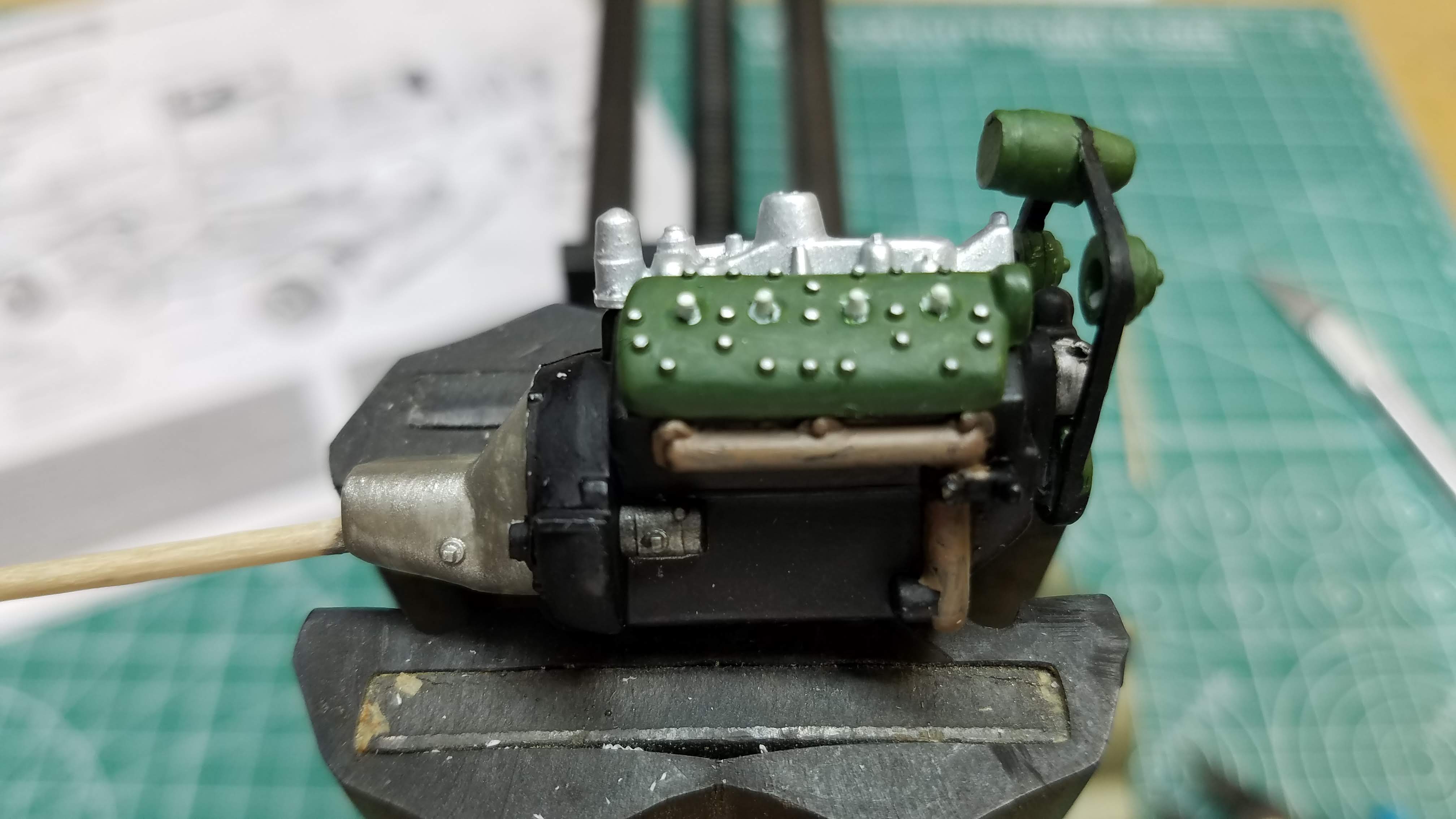
25 of 121
Another view of the engine.
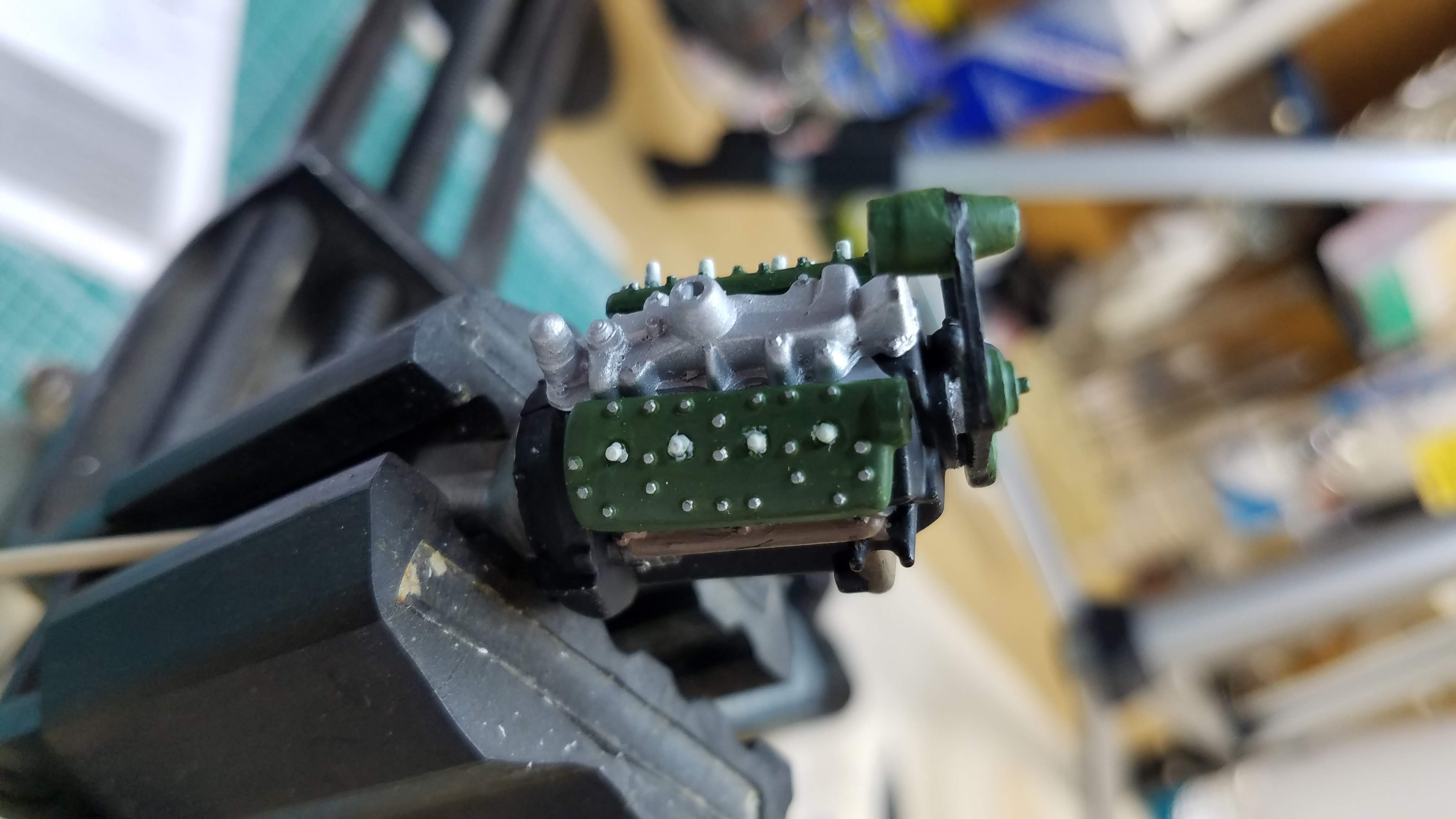
26 of 121
Another view of the engine.
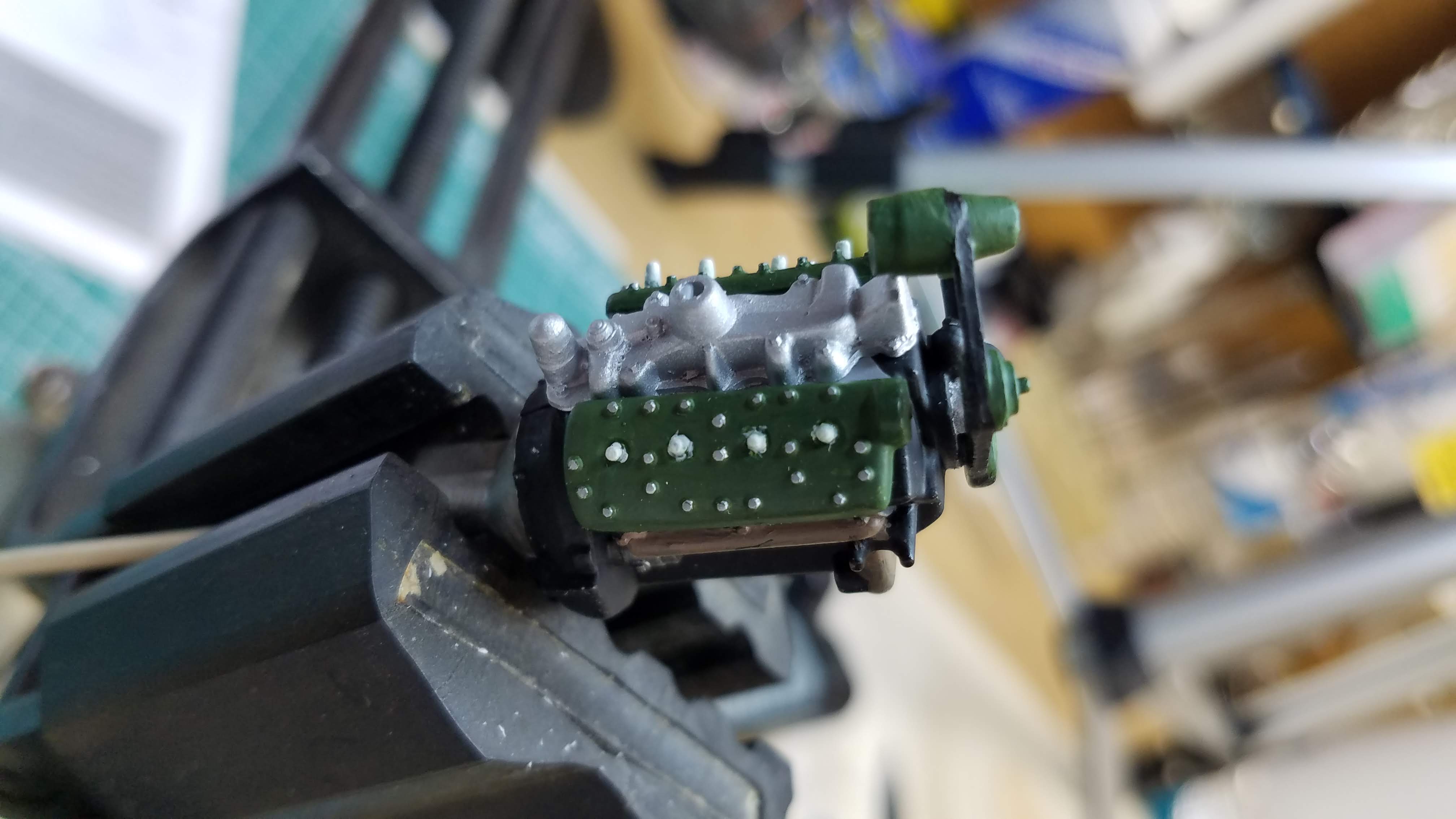
27 of 121
Another view of the engine.
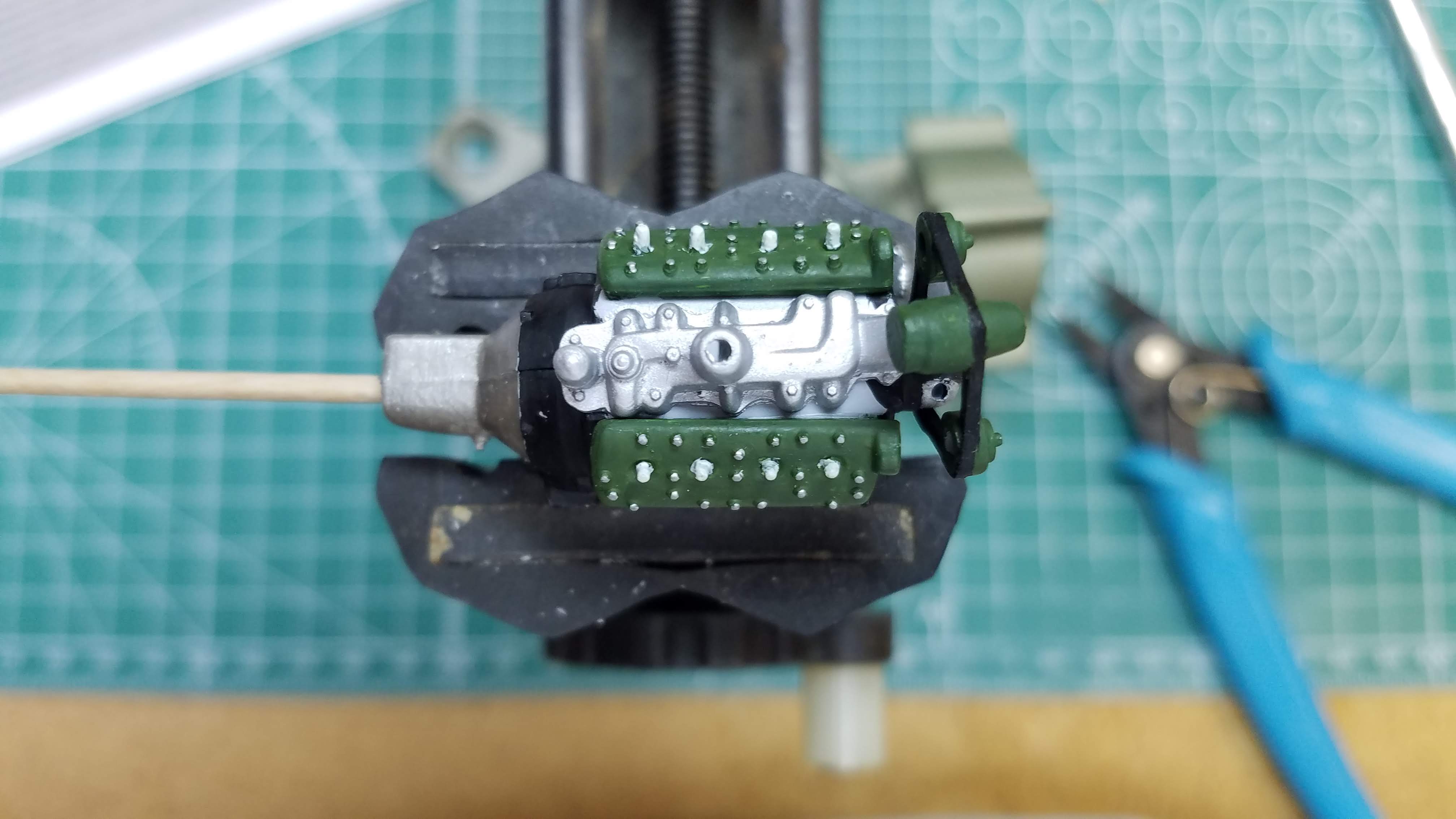
28 of 121
Another view of the engine.
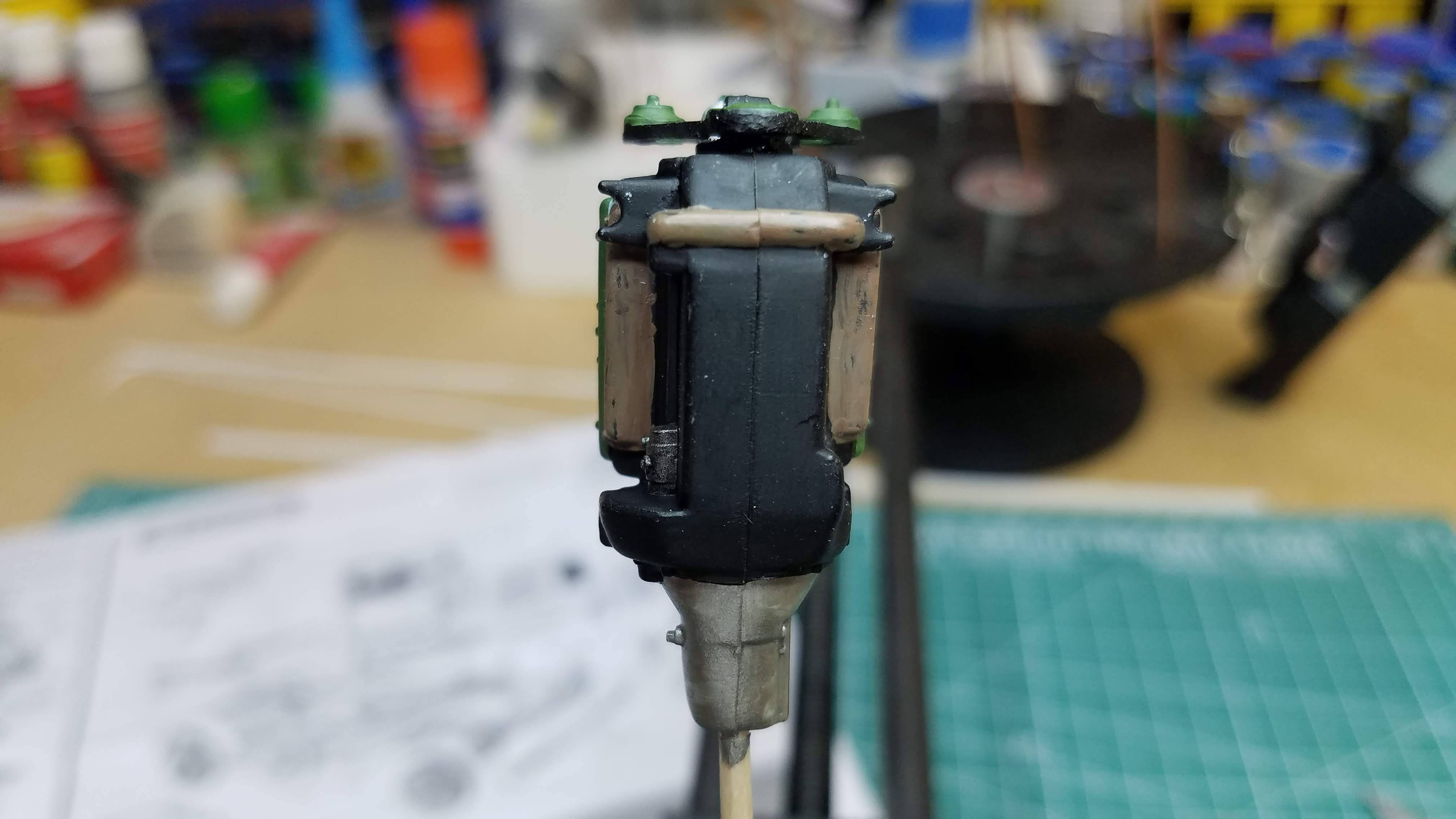
29 of 121
I used Testors silver for the end caps of the distributor.
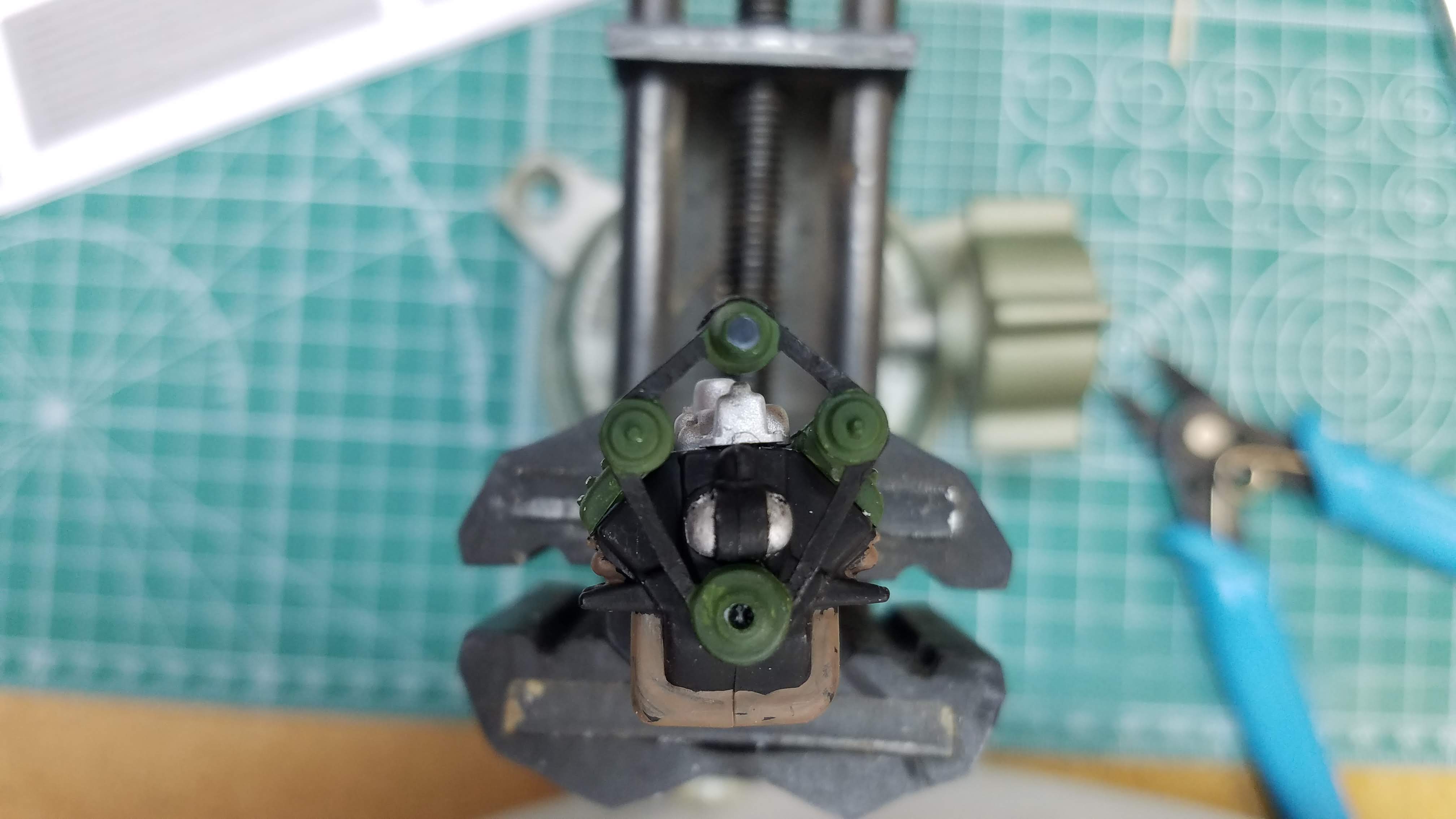
30 of 121
I made a somewhat major modification to the radiator. The
radiator on the left was the one that came with the kit.
The one I made is shown on the right. I really hate the
radiator that came with the kit.
There are several video's on my YouTube channel that show
how I made the modification. If you have insomnia, these
video's will be the cure.
Click here to visit Skip's Messy
Workbench YouTube channel.
There is a playlist for the '34 Ford Pick Up Build on my
channel.
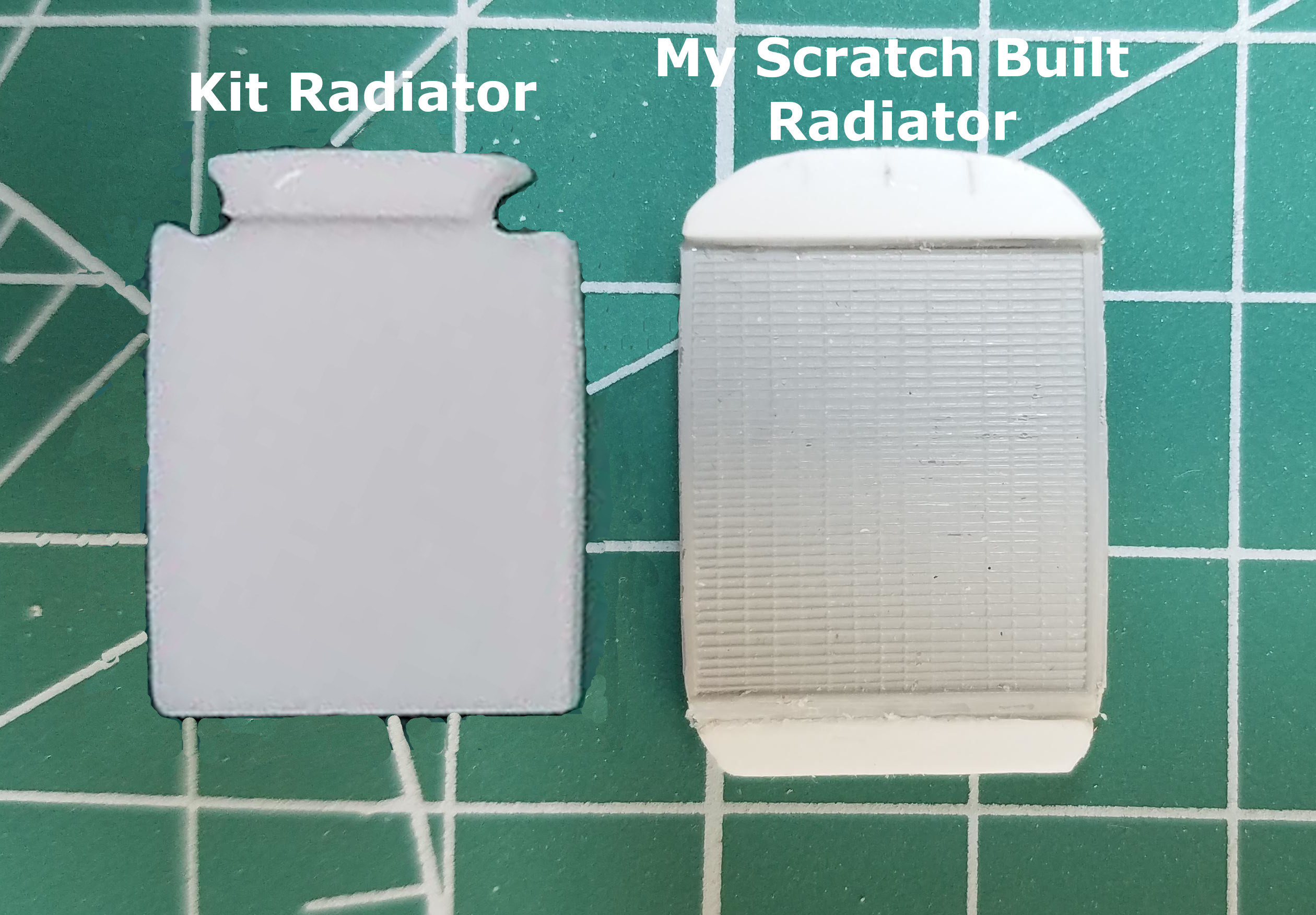
31 of 121
This is the scratch built radiator with two hot side hose couplings and two cold side couplings. I used Evergreen Rod to make the couplings.
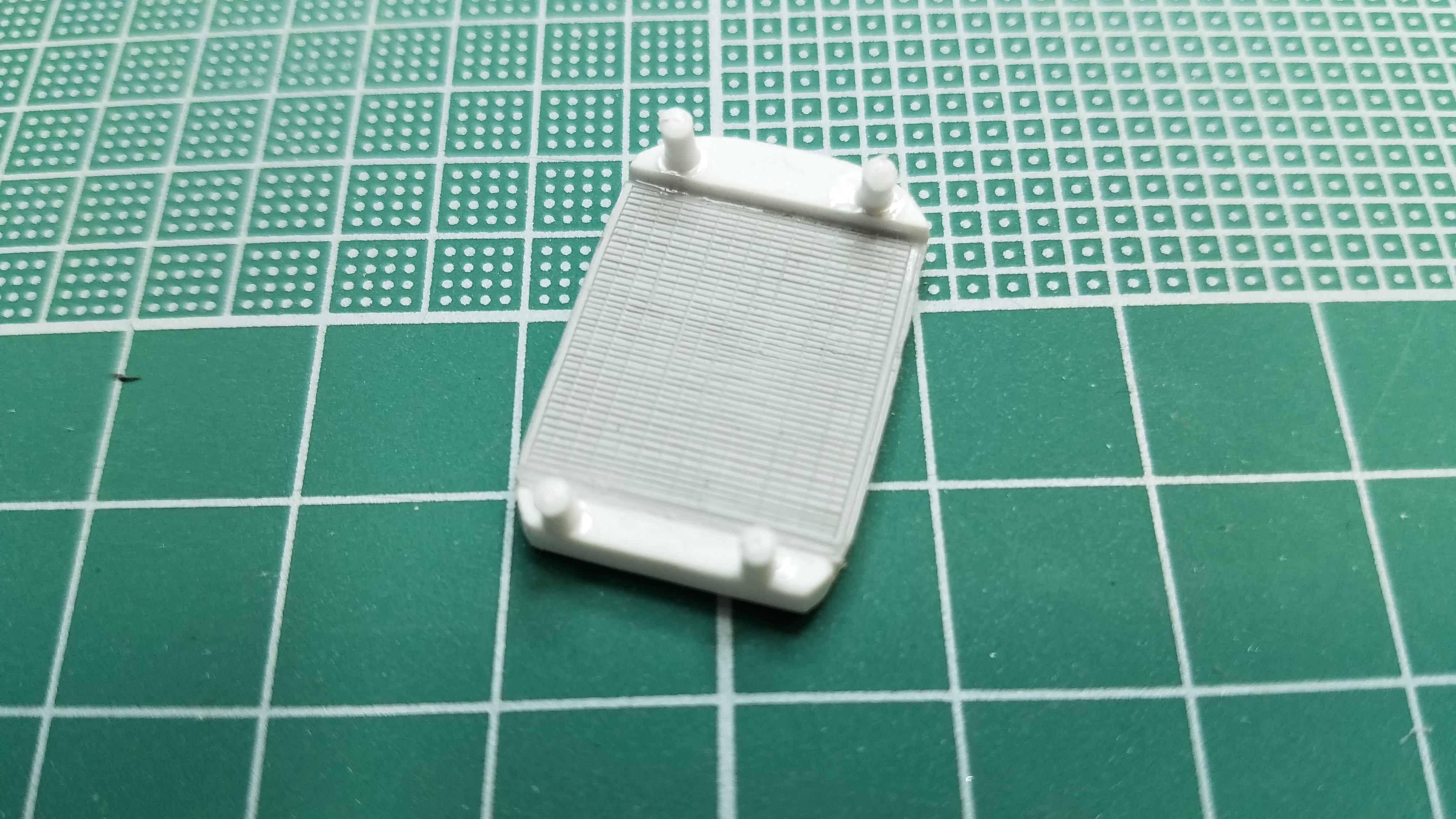
32 of 121
Another view of the scratch built radiator.
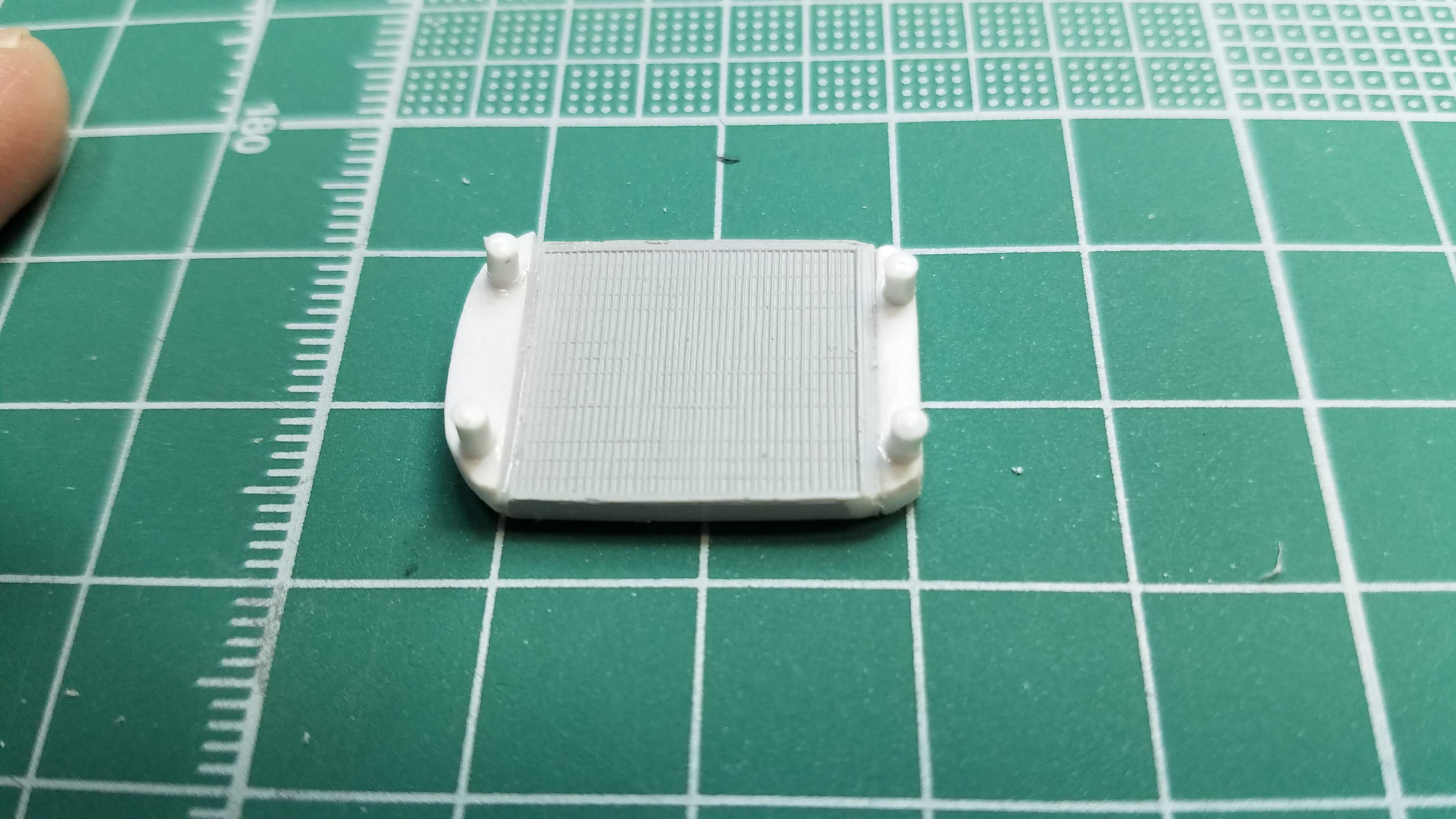
33 of 121
The engine had to be modified to include radiator hose couplings between the idler pulleys and the valve covers. These couplings were also made from Evergreen Rod and placed between the valve cover and the belt idler. There is a hose coupling on each side of the engine as shown in the next picture.
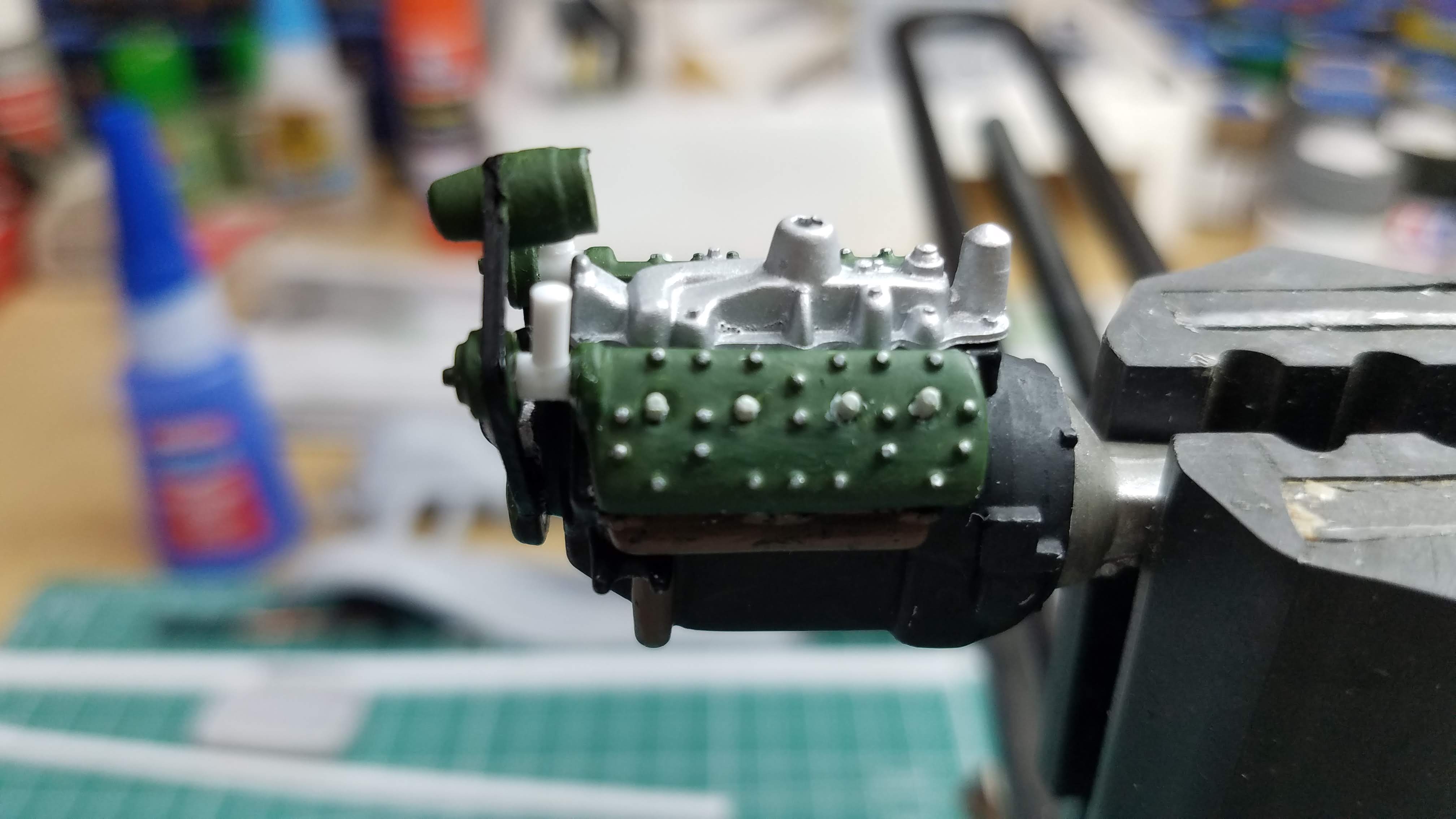
34 of 121
This picture shows the two radiator hose couplings at the valve covers of the engine.
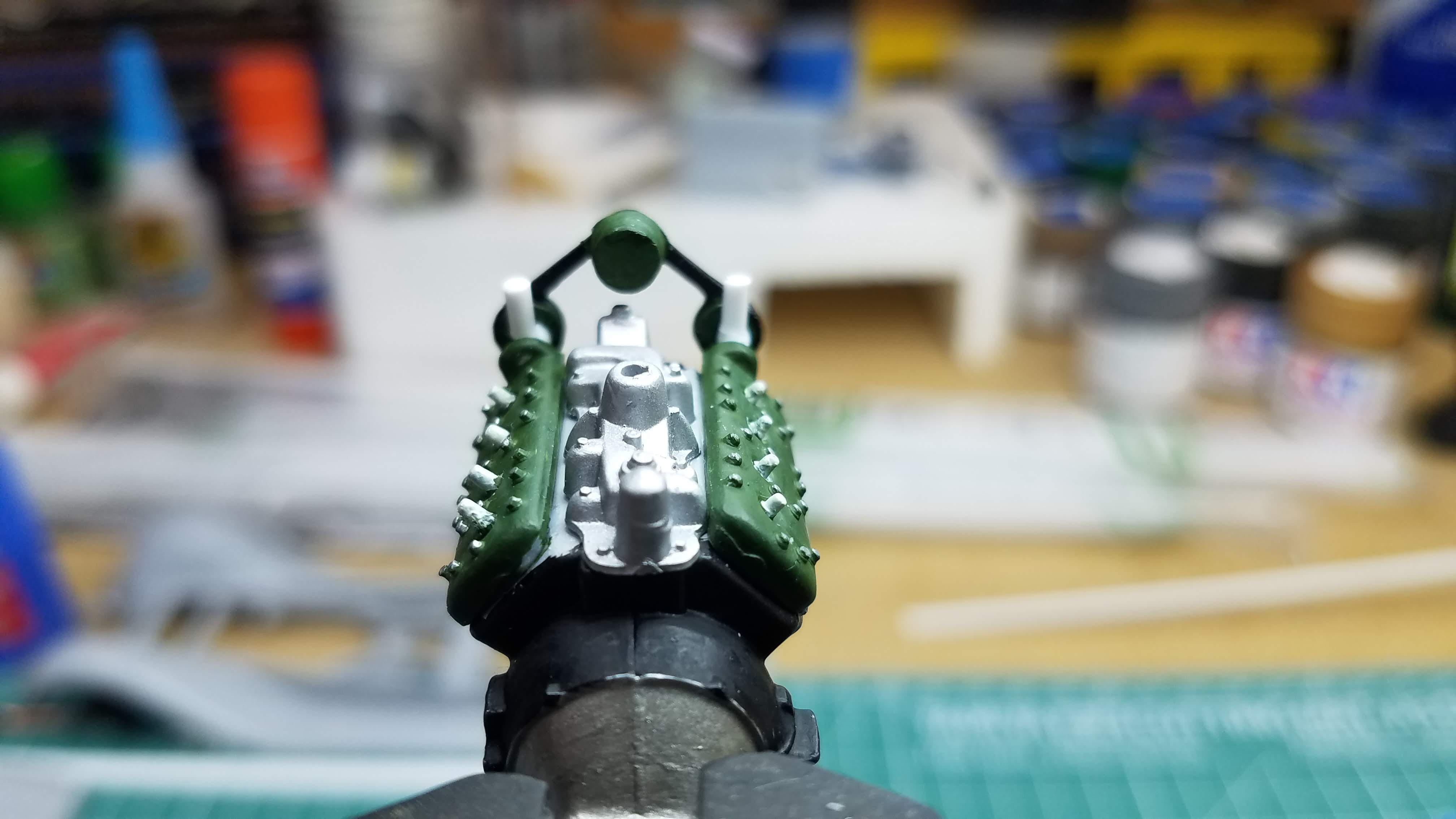
35 of 121
The scratch built radiator was a-bit larger than the original and therefore I had to modify the chassis by cutting a notch out of the cross member.
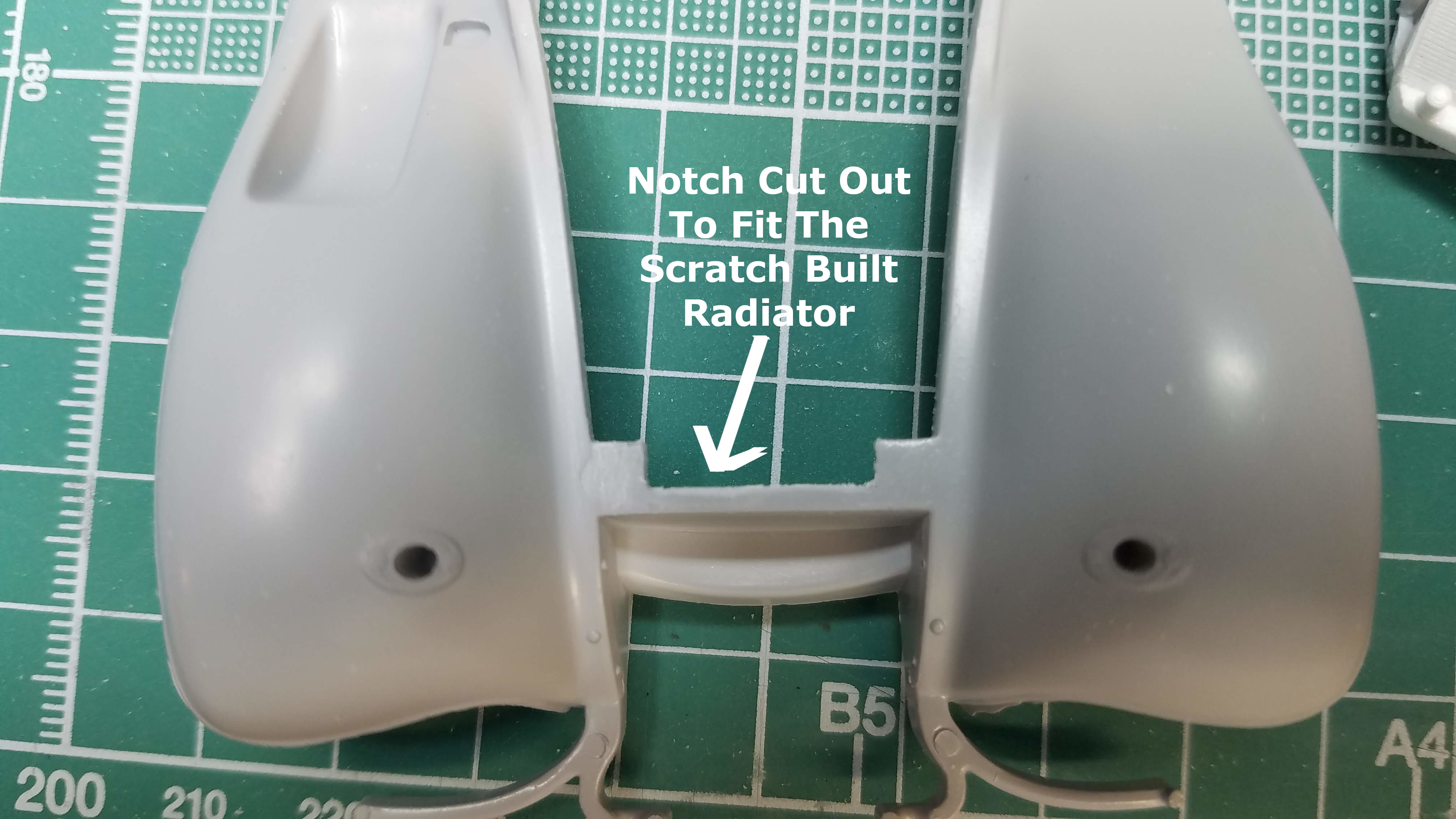
36 of 121
Another view of the notch I had to cut from the cross member of the chassis.
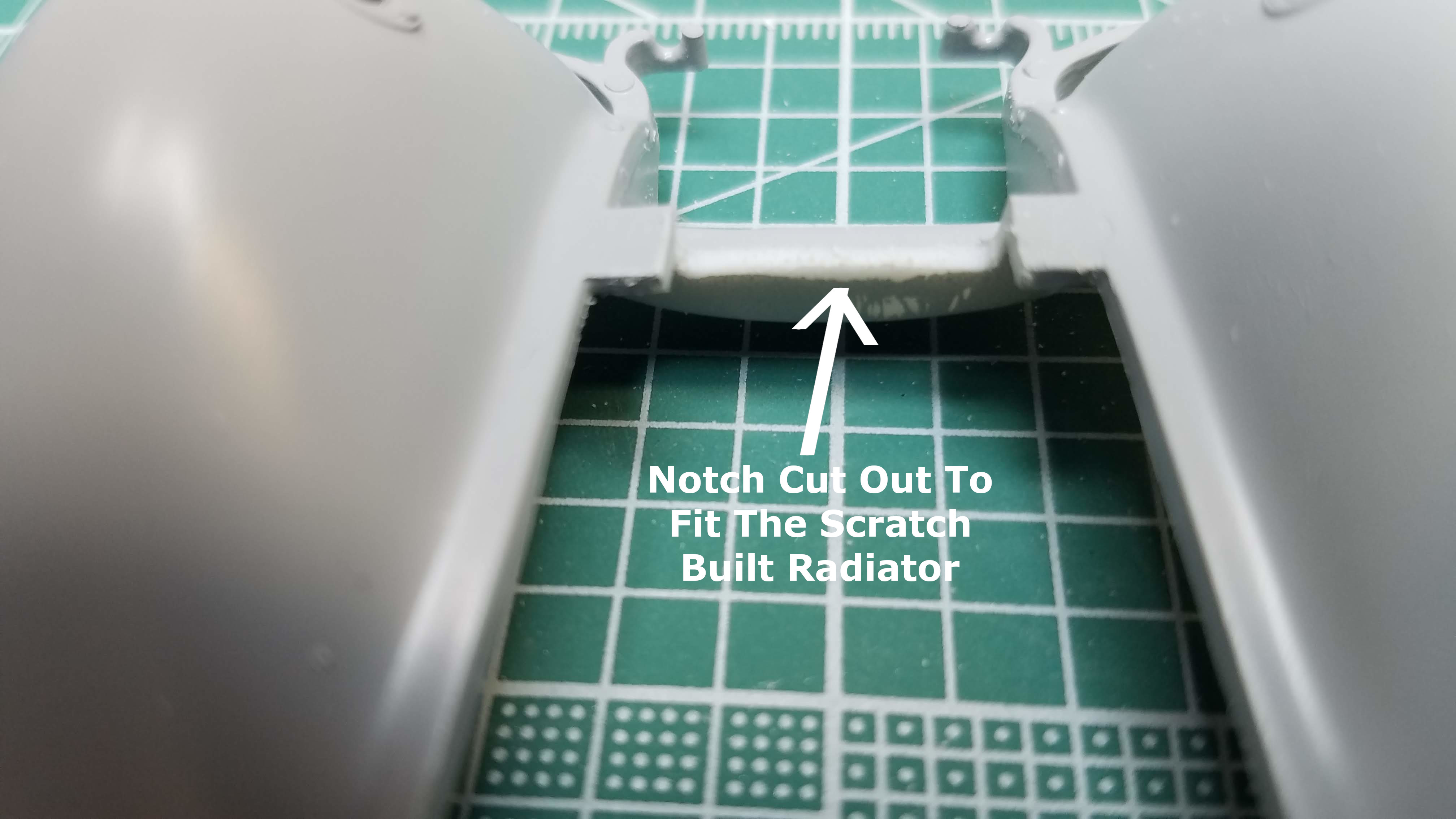
37 of 121
The notch was cut out to allow clearance for the lower
radiator hoses. These lower hoses are part of how the
cooling system on an actual flathead V8 from 1934 was
cooled.
Spoiler alert: When everything was assembled,
there was not enough room to install the lower radiator
hoses. I did some research on real '34 Pickups that had
the flathead V8 installed and it looks like the scale
of the model is not 100% because the front suspension
is in the way for installing the lower hoses. The
radiator I scratch built is to scale for the radiator
used in a 1934 flathead V8. Maybe that's why the kit
radiator did not provide an option for the lower hoses?
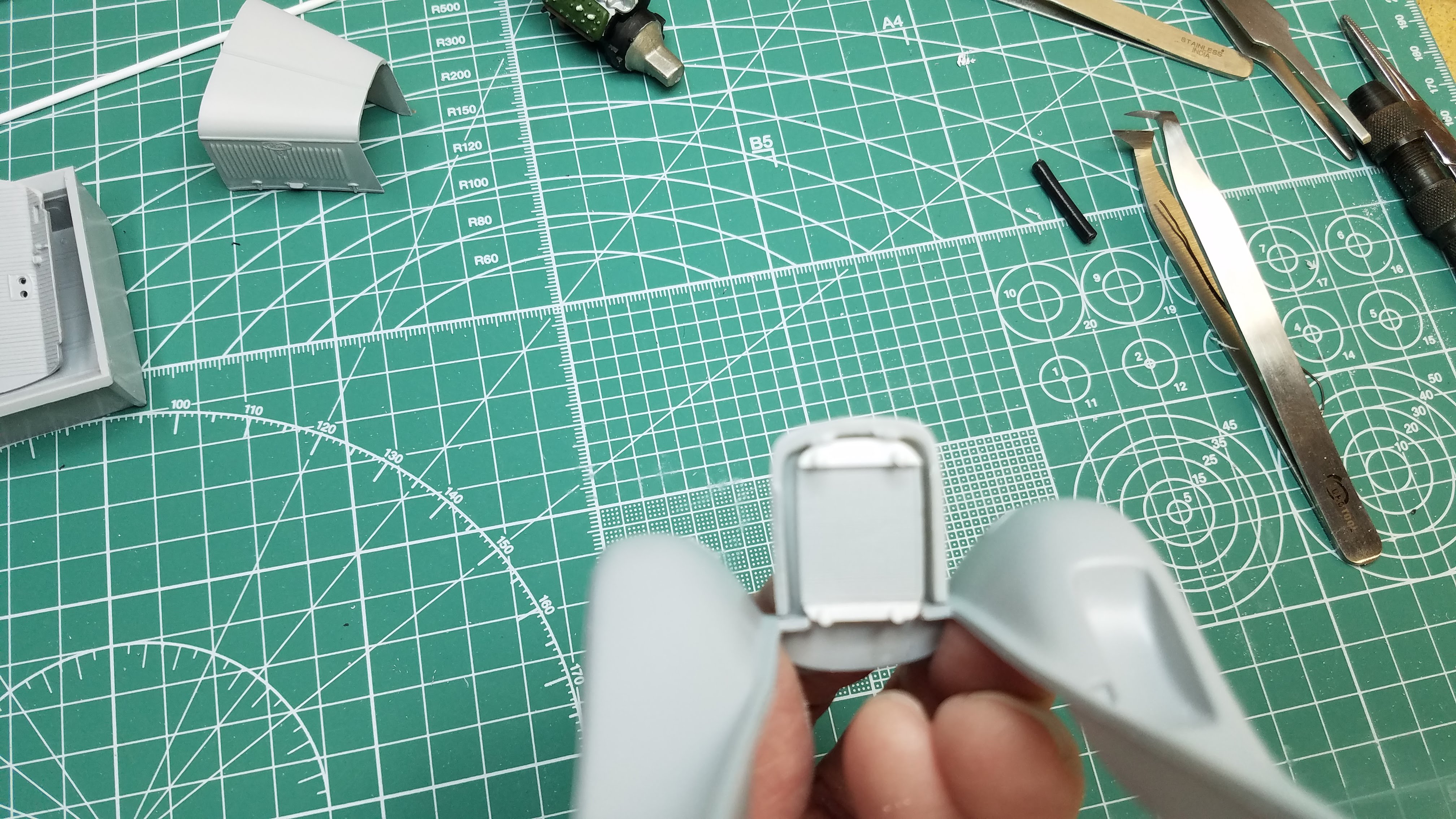
38 of 121
I'm getting the frame ready for the first coat of a rust layer. The differential, drive shaft and rear spring is a one piece assembly. I then used the standard front leaf springs, steering rods, radius rods and drag link.
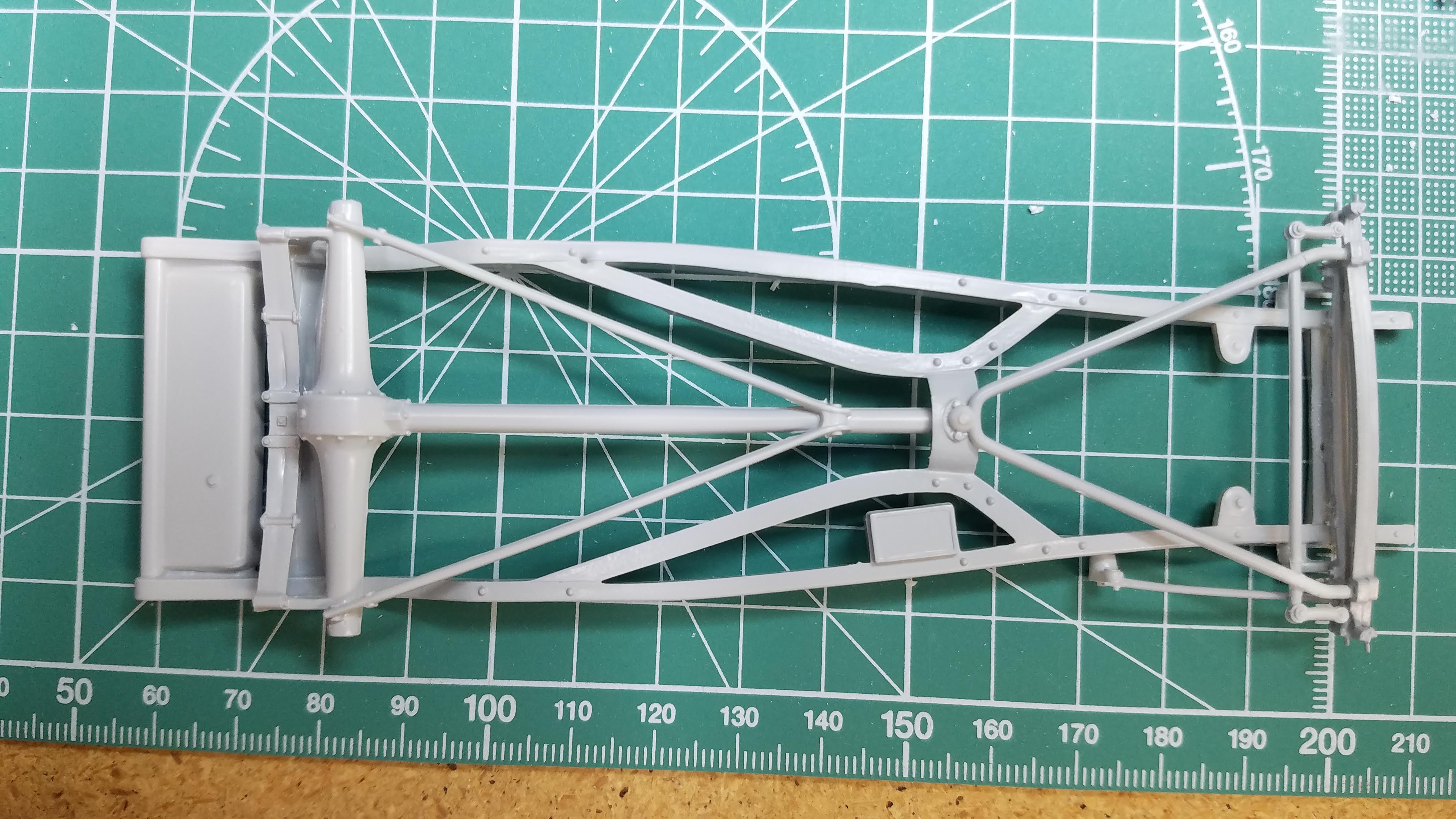
39 of 121
I will be using the solid steel wheels because I remember my grandfathers truck had solid wheels. When using the solid wheels, the back ring is a modified version of the spoked wheel back. The spokes are cut out to simply form a back ring. This photo shows one of the back side spoked wheels with the spokes cut out. The wheels are also getting prep'ed for the first rust coat.
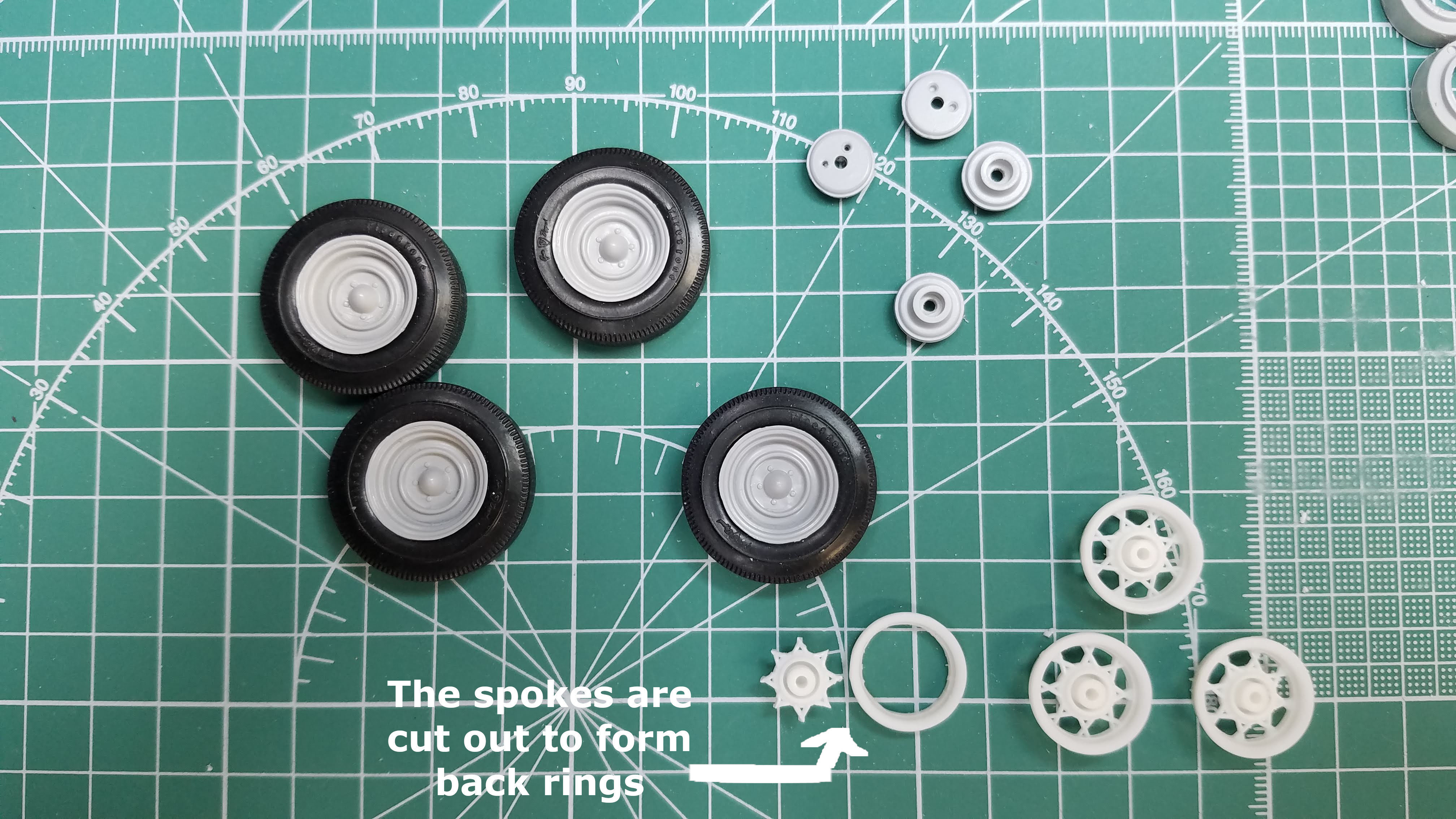
40 of 121
I did a static fit of the floor pan and the seat before applying the first rust coat to the fender frame. The truck will only have a few rust spots on the fenders and wheels. The rest of the body will be weathered, faded black.
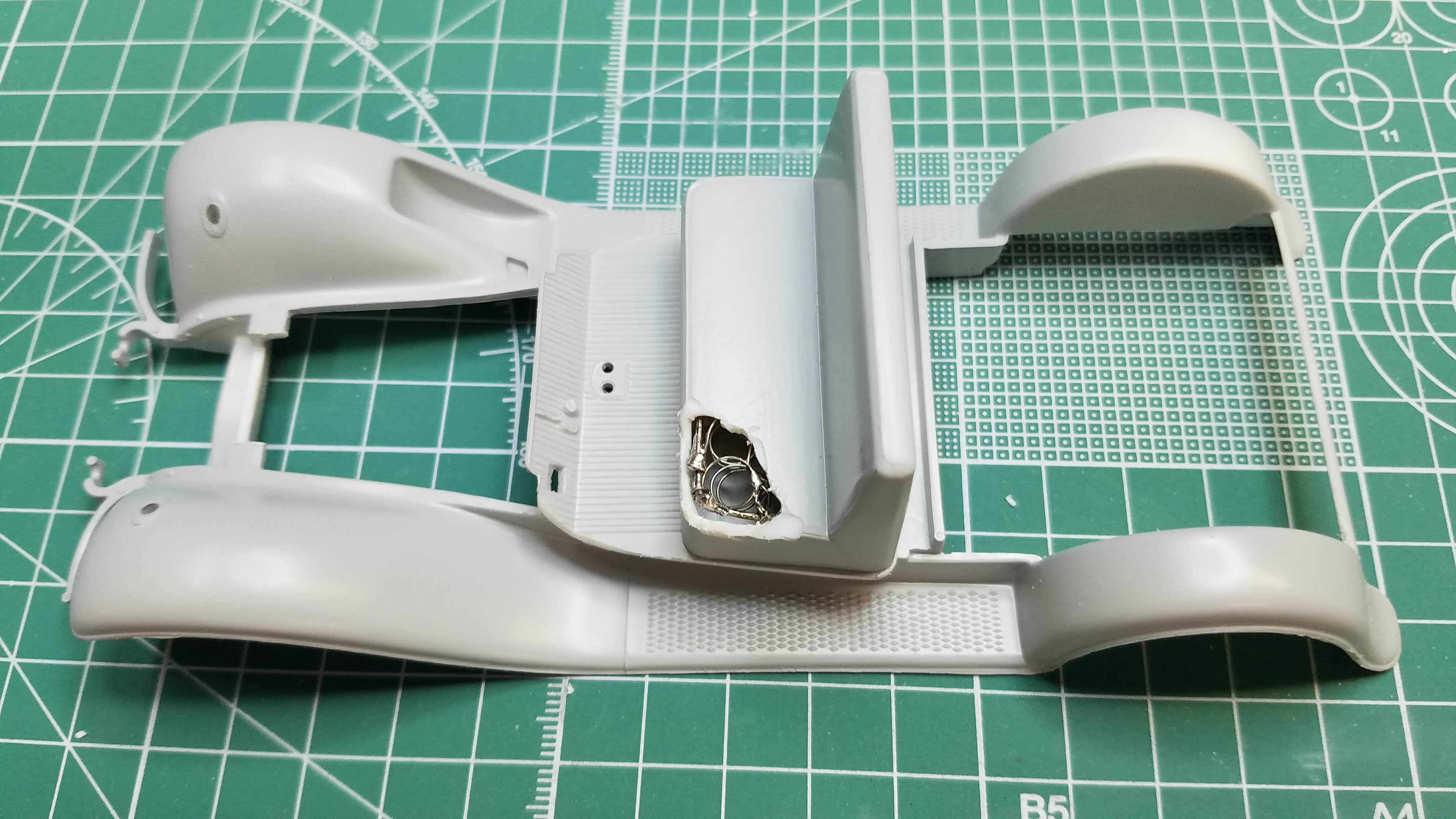
41 of 121
I started adding spark plug wires. Most of the 1934 flathead V8's did not use spark plug boots on the wires, but used a ring lug under the screw top of the plug. I simply made a loop with the wire and wrapped it around the plug. I will then top the plug with a spot of silver or brass.
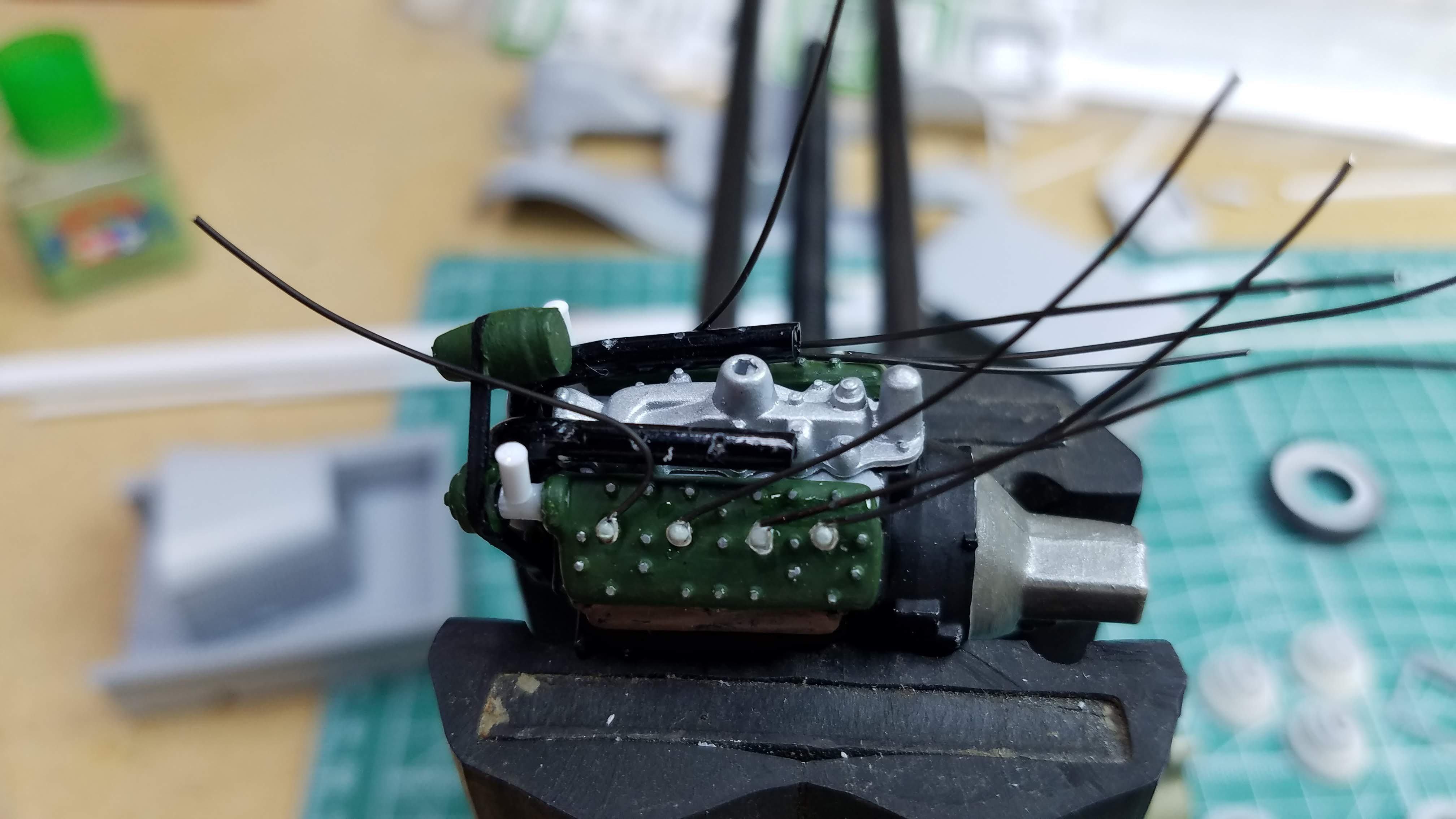
42 of 121
Another picture of the spark plug wires being added.
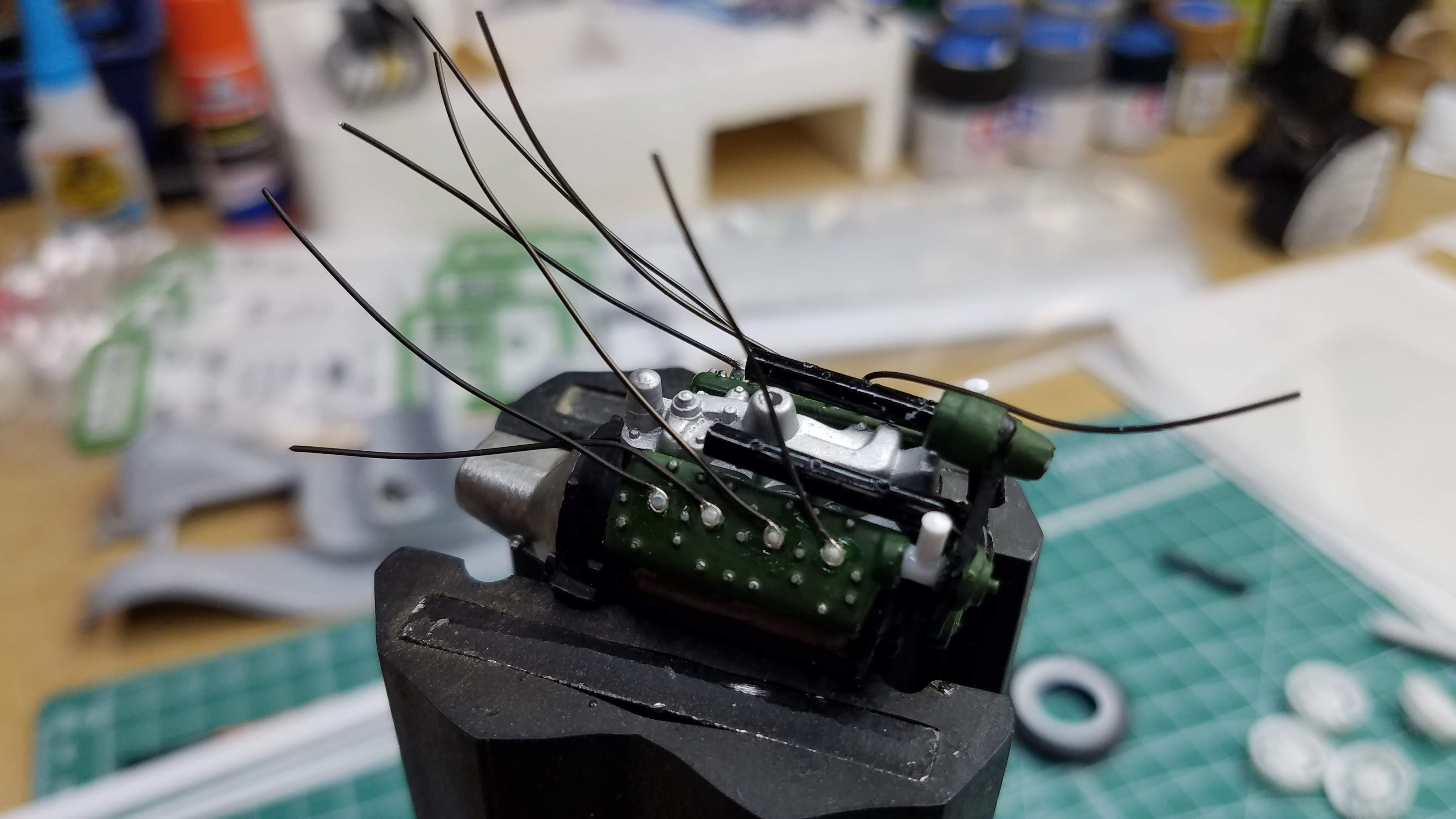
43 of 121
This photo and the next couple of photos show the first coat of Tamiya XF-54 red brown for the first layer of rust.
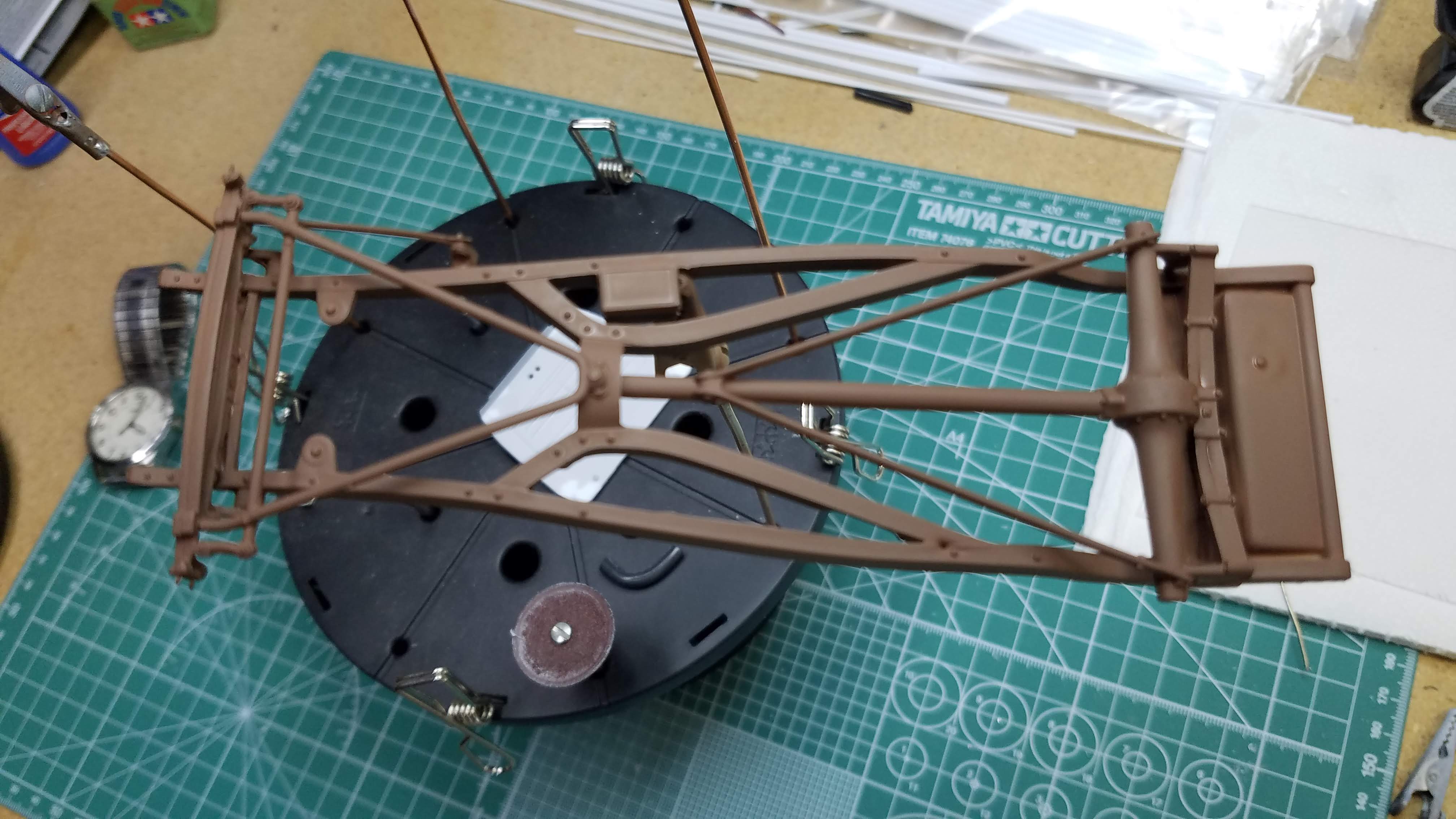
44 of 121
This photo and the next couple of photos show the first coat of Tamiya XF-54 red brown for the first layer of rust.
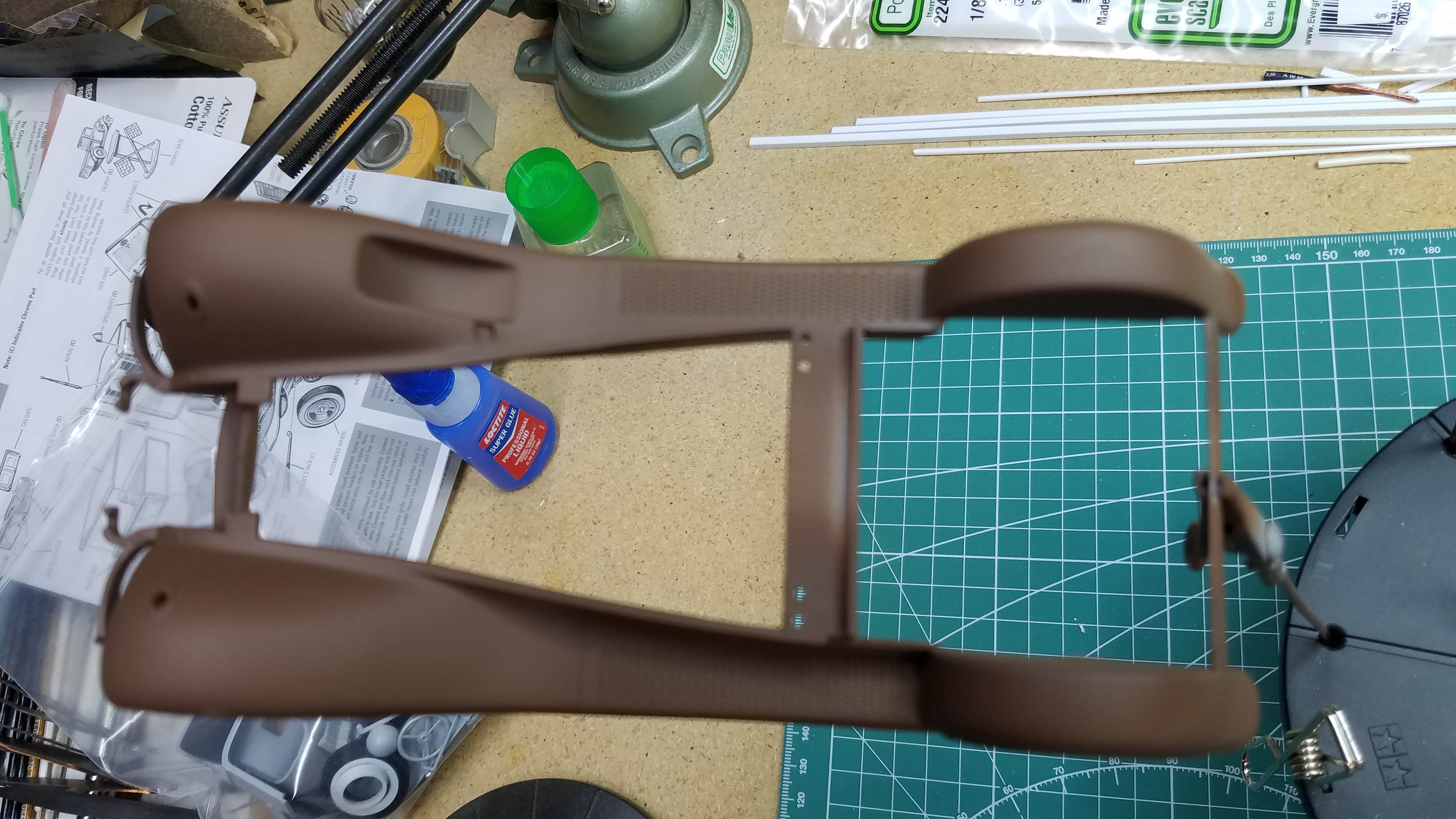
45 of 121
This photo and the next couple of photos show the first coat of Tamiya XF-54 red brown for the first layer of rust.
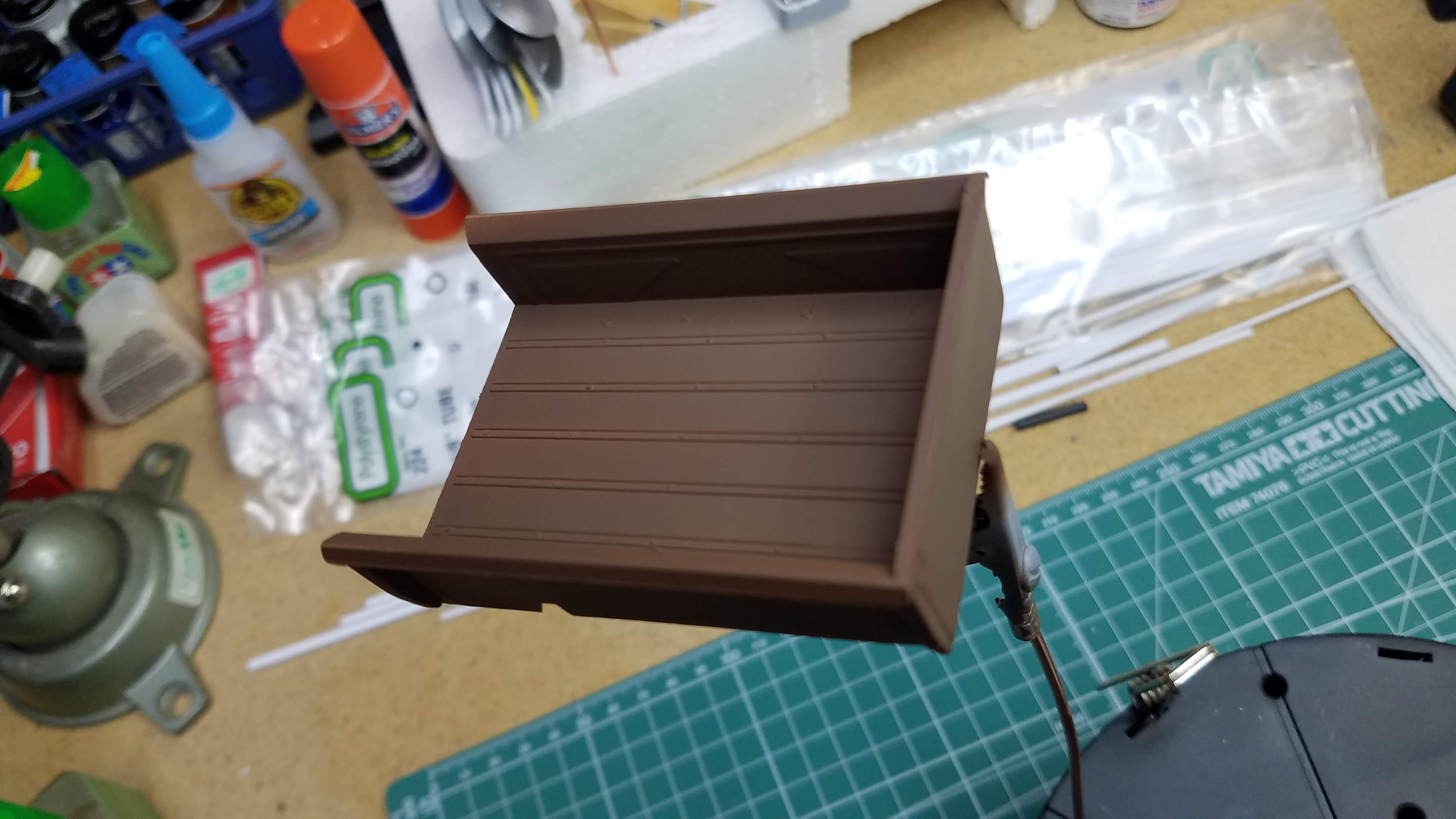
46 of 121
This photo and the next couple of photos show the first coat of Tamiya XF-54 red brown for the first layer of rust.
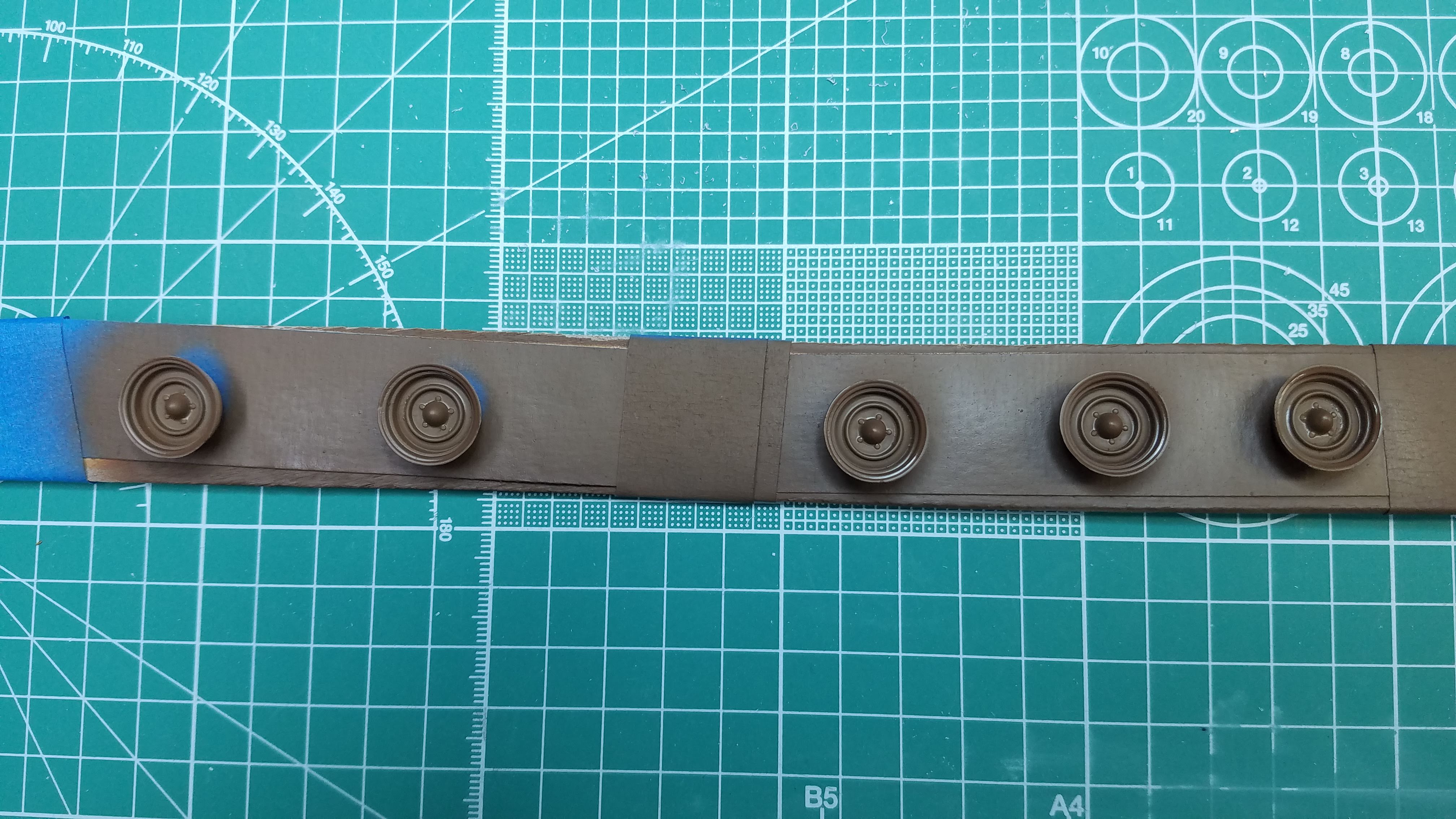
47 of 121
The spark plug wires were placed in the wire conduits. A drop of Loctite was used to hold the wire in the conduit entry hole. There are some shiny spots of Loctite showing that will be removed during the aging and dirtying process. Hindsight tells me that I should have dipped the end of the wire in the Loctite and then inserted it into the hole. Lesson learned.
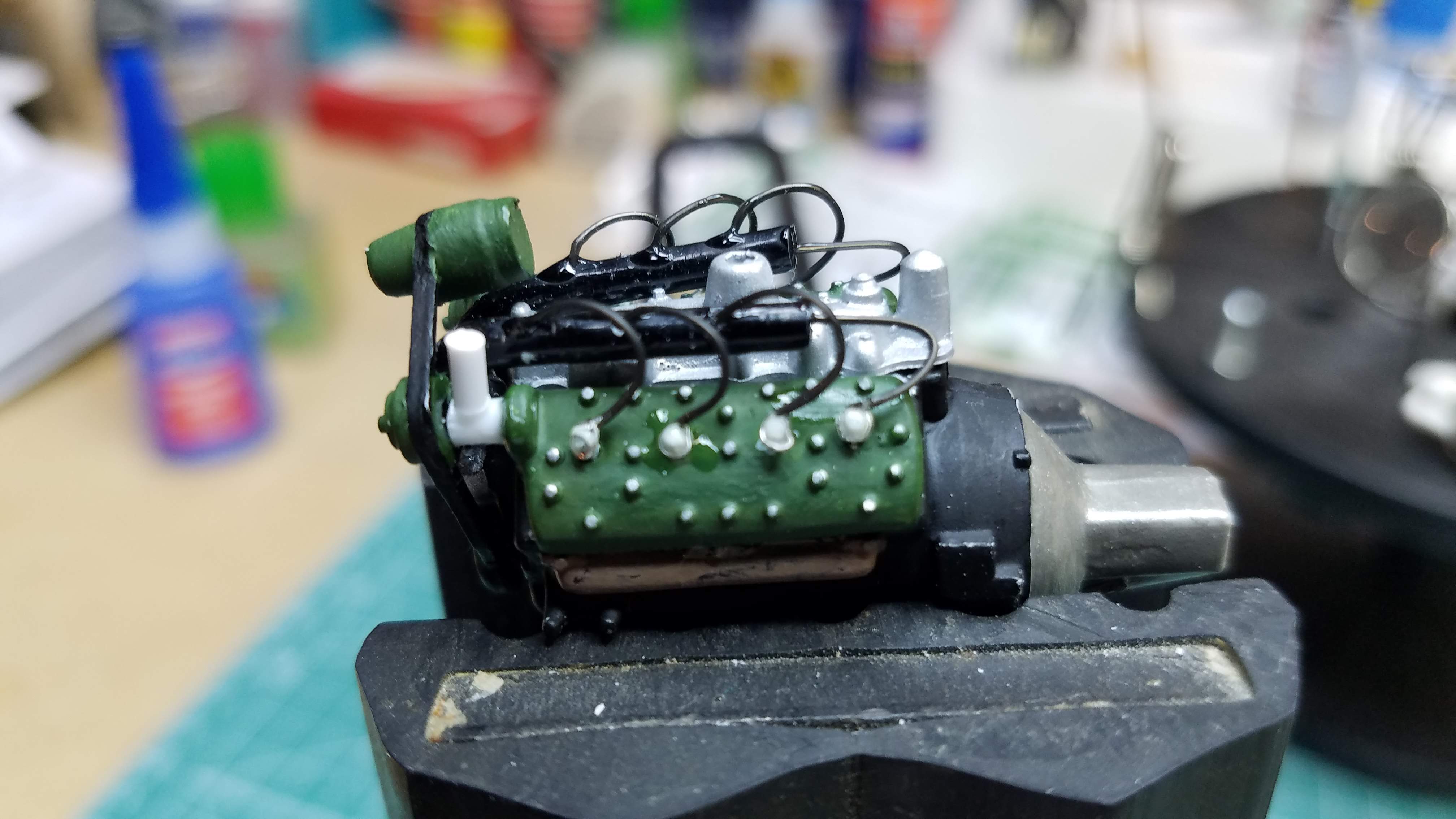
48 of 121
The spark plug wires were placed in the wire conduits. A drop of Loctite was used to hold the wire in the conduit entry hole. There are some shiny spots of Loctite showing that will be removed during the aging and dirtying process. Hindsight tells me that I should have dipped the end of the wire in the Loctite and then inserted it into the hole. Lesson learned.
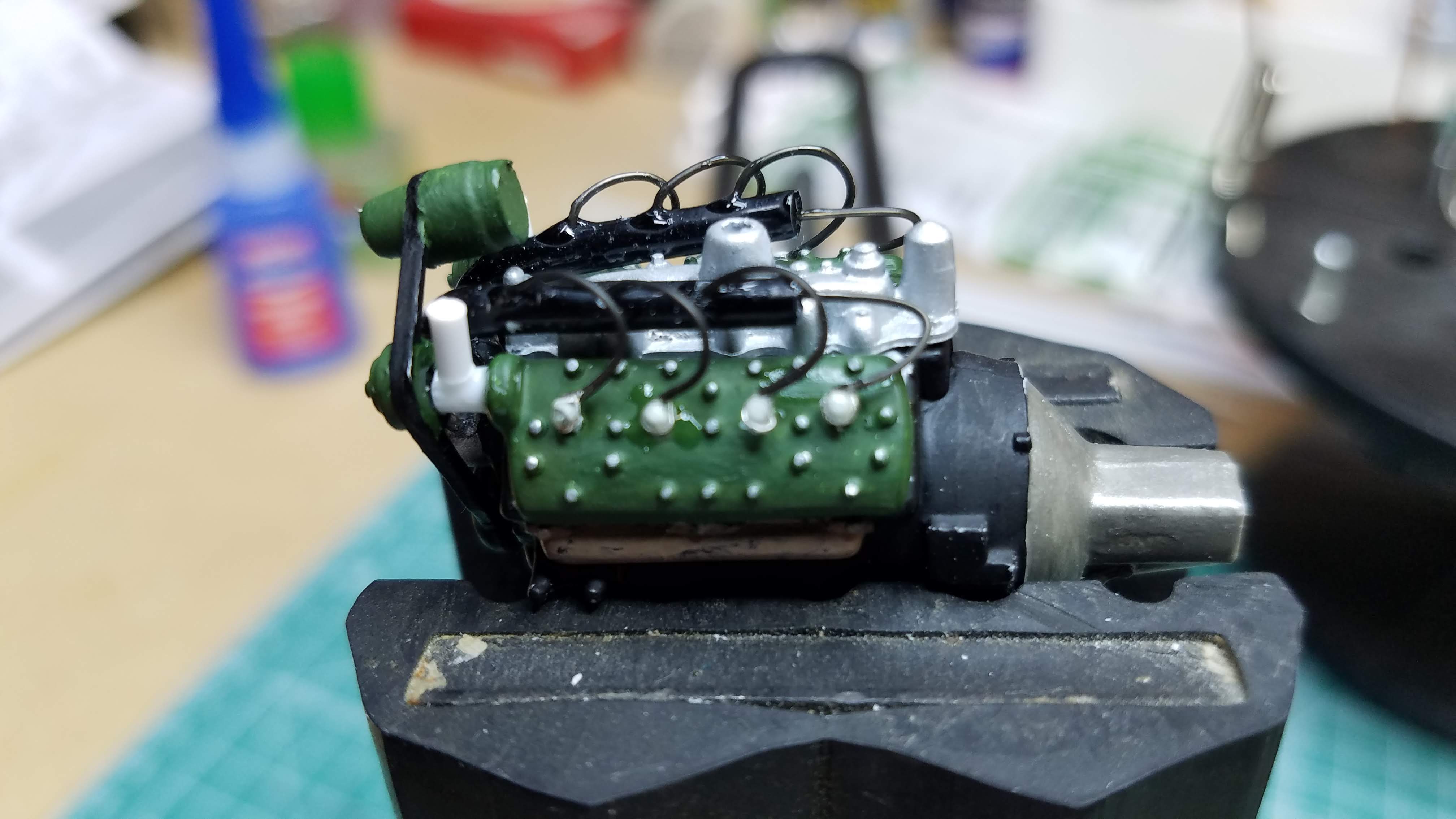
49 of 121
The spark plug wires were placed in the wire conduits. A drop of Loctite was used to hold the wire in the conduit entry hole. There are some shiny spots of Loctite showing that will be removed during the aging and dirtying process. Hindsight tells me that I should have dipped the end of the wire in the Loctite and then inserted it into the hole. Lesson learned.
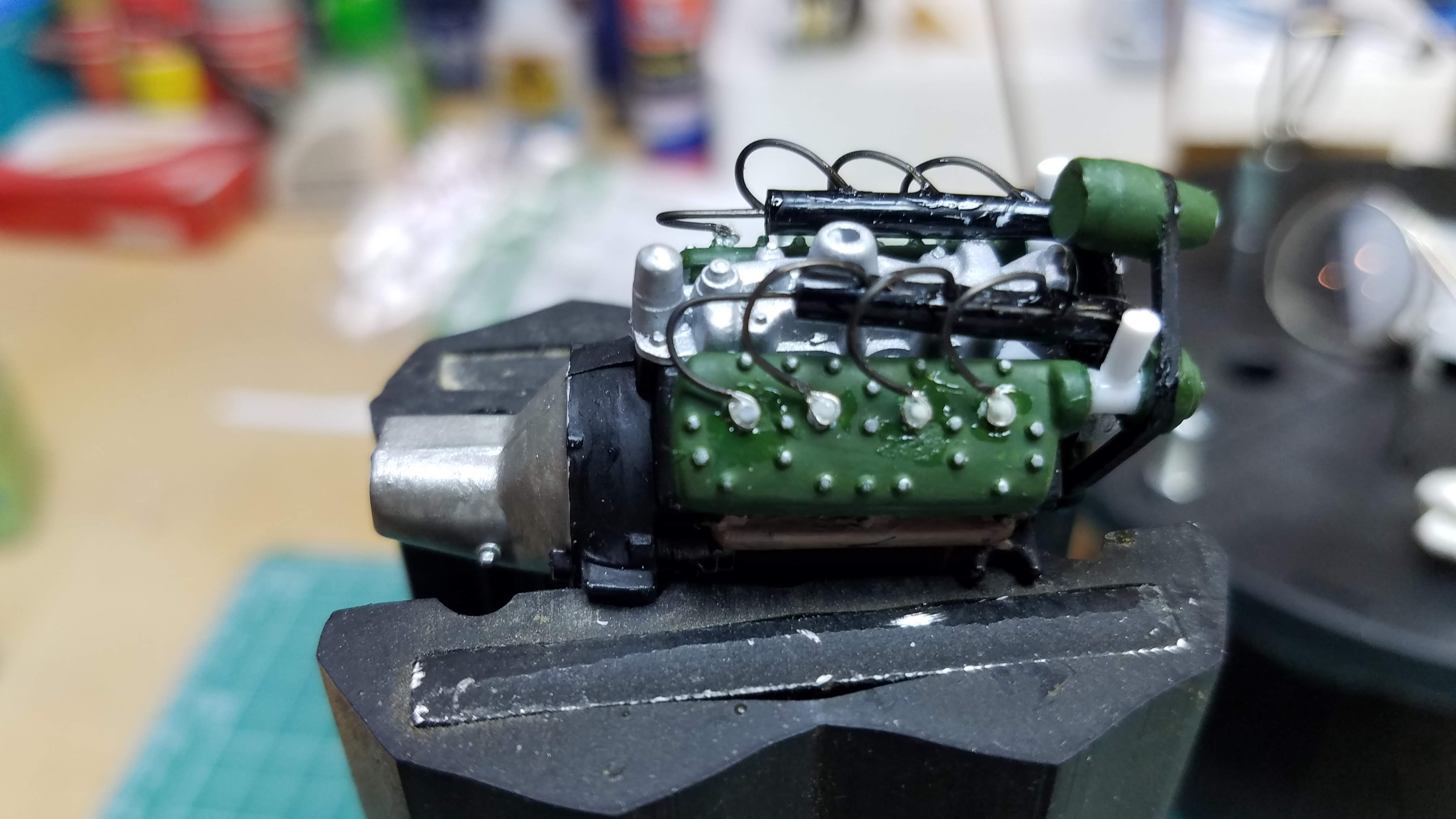
50 of 121
The spark plug wires were placed in the wire conduits. A drop of Loctite was used to hold the wire in the conduit entry hole. There are some shiny spots of Loctite showing that will be removed during the aging and dirtying process. Hindsight tells me that I should have dipped the end of the wire in the Loctite and then inserted it into the hole. Lesson learned.
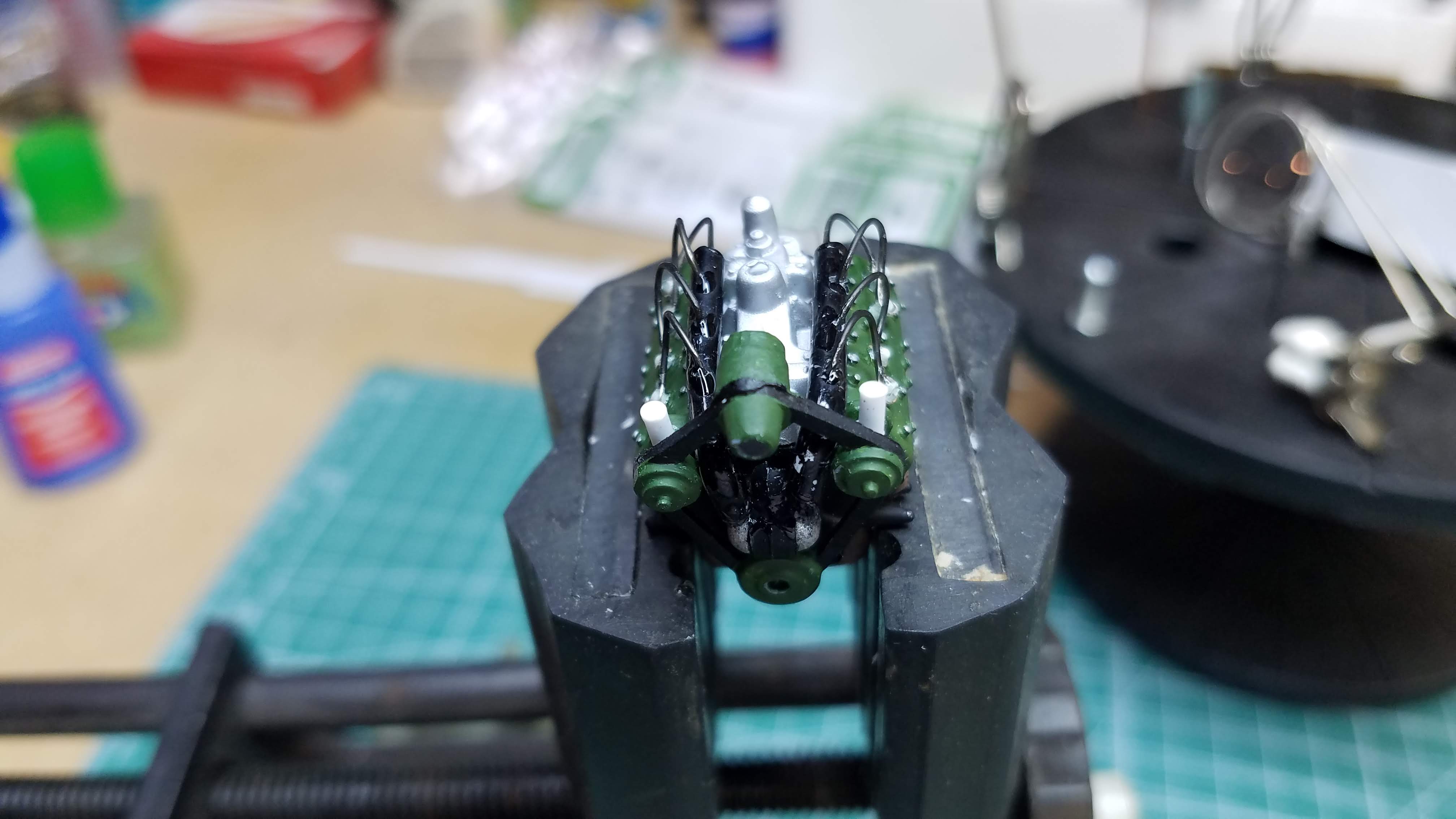
51 of 121
The chassis got a coat of Mission Model - Rust. My memory tells me that there was not much rust on my grandfathers truck, therefore, painting the entire chassis is an overkill.
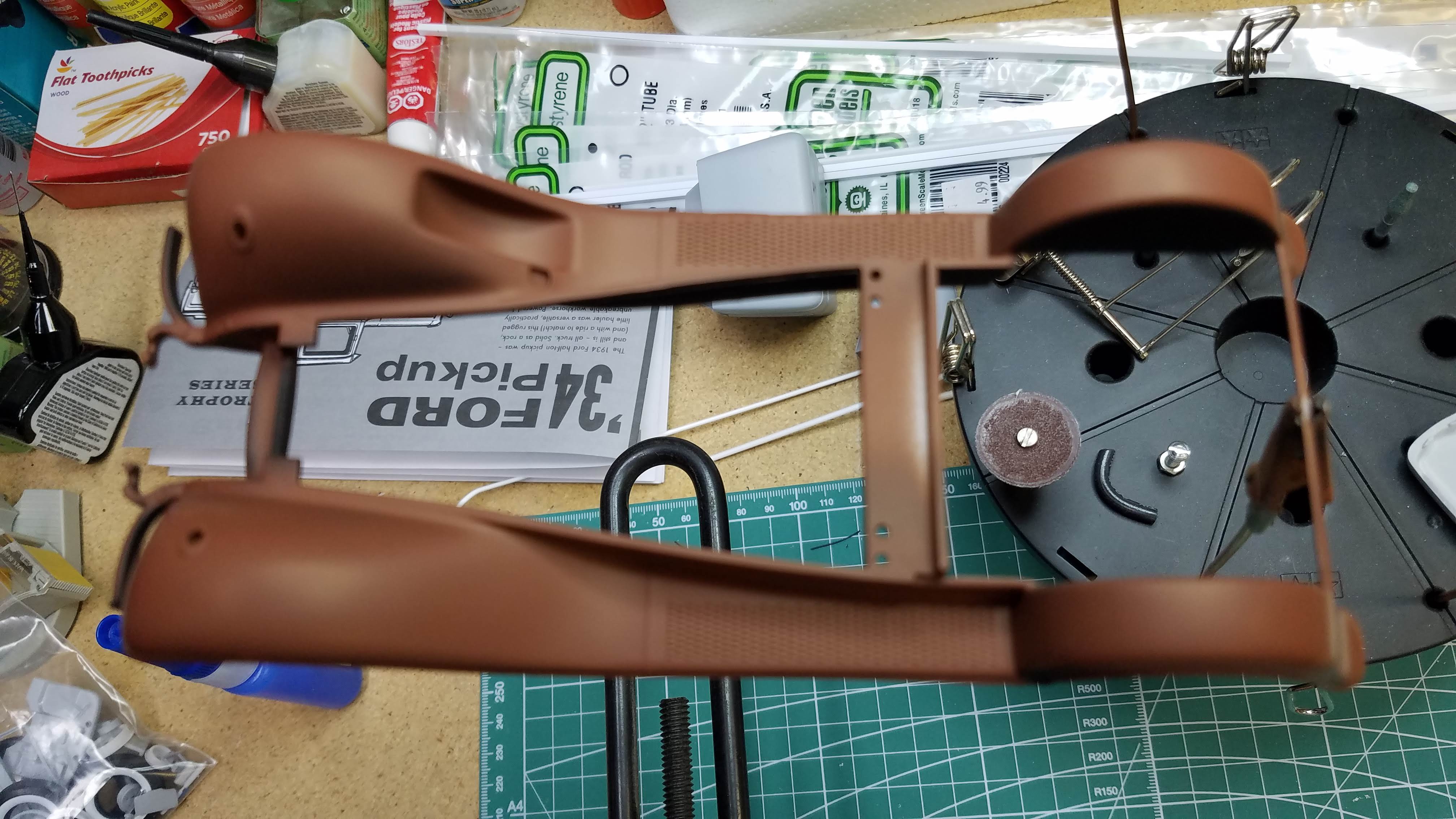
52 of 121
The frame also got a coat of Mission Model - Rust. Naturally, I don't know what the frame looked like on my grandfathers truck, therefore, I'll be using my imagination...That could be scary!
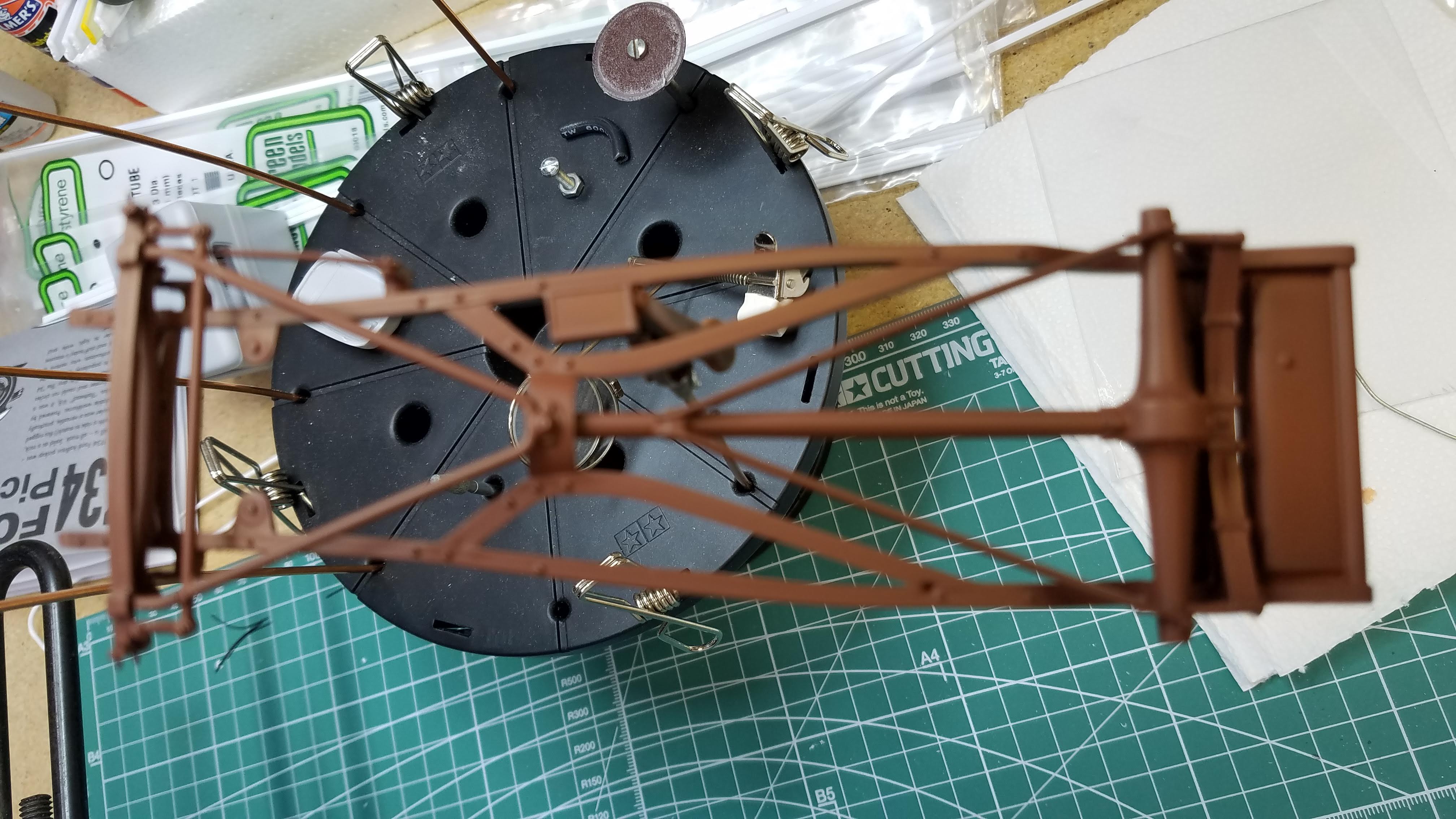
53 of 121
The bed also got a coat of Mission Model - Rust. I remember the bed was beat-up on the inside from when my uncle used it in his coal business; however, the outside was in decent condition. I plan on making my own wood bed floor and attempting to show that it was damaged from hauling coal.
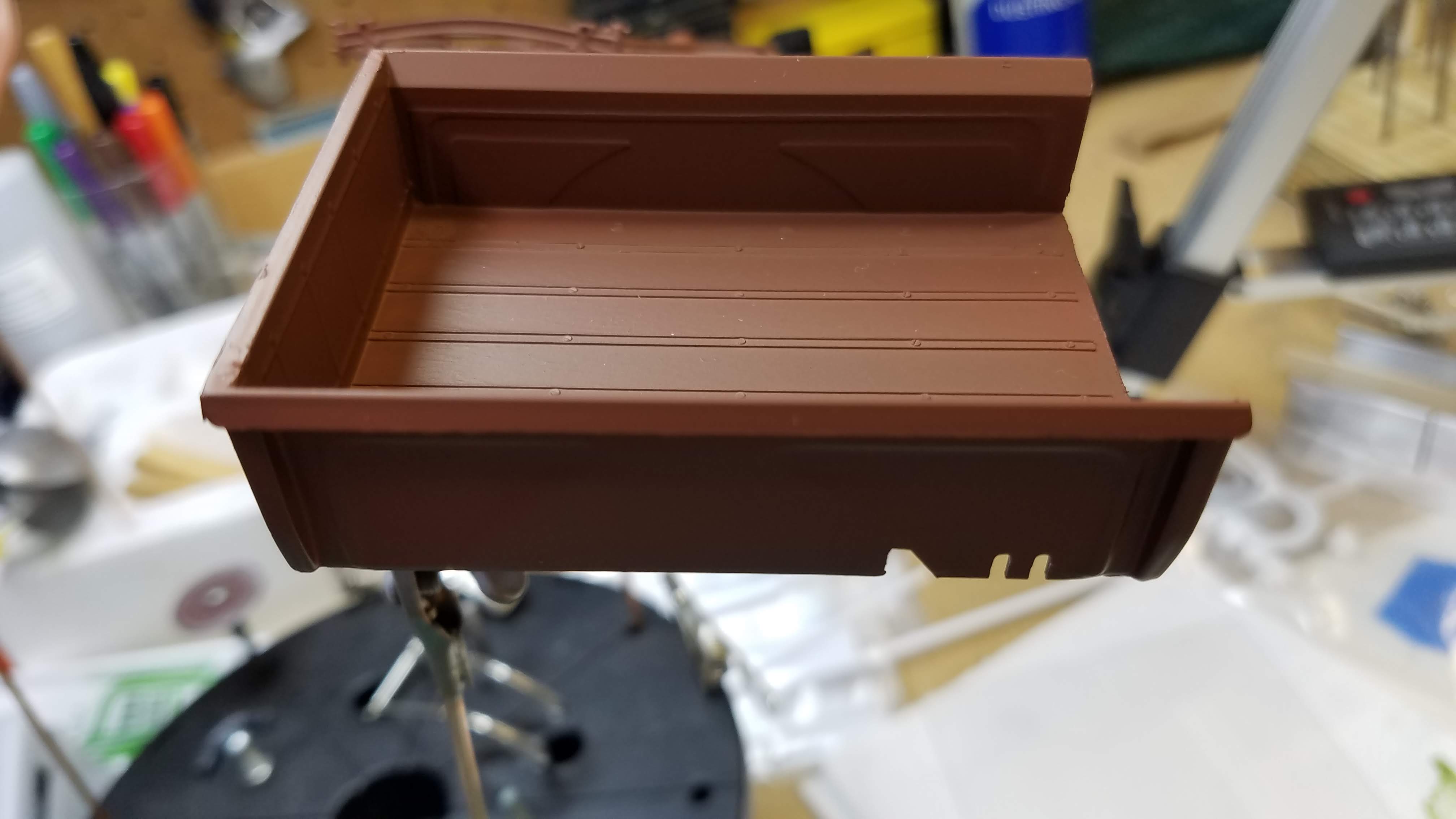
54 of 121
The fan was mounted on the engine.
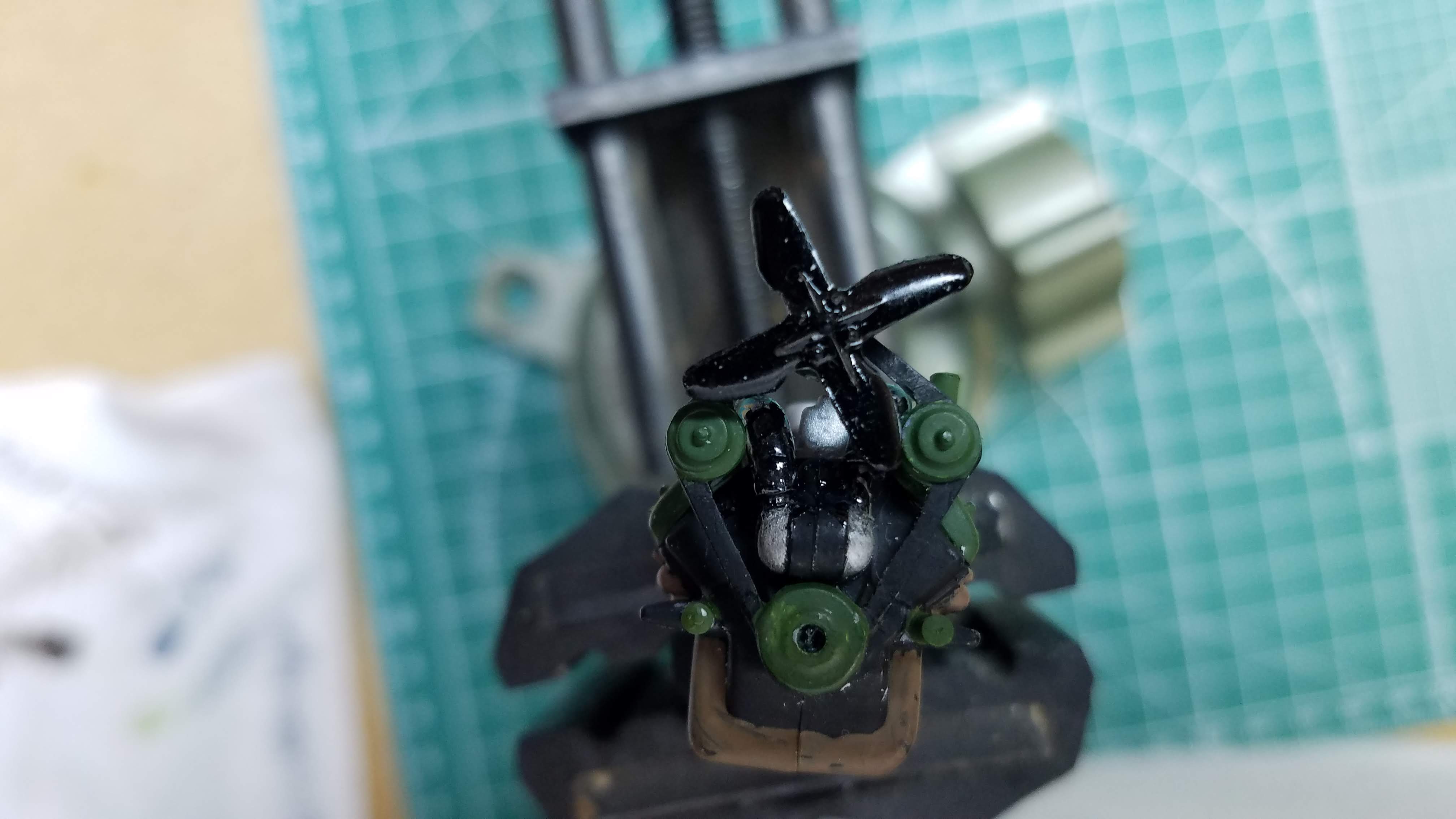
55 of 121
The fan was mounted on the engine.
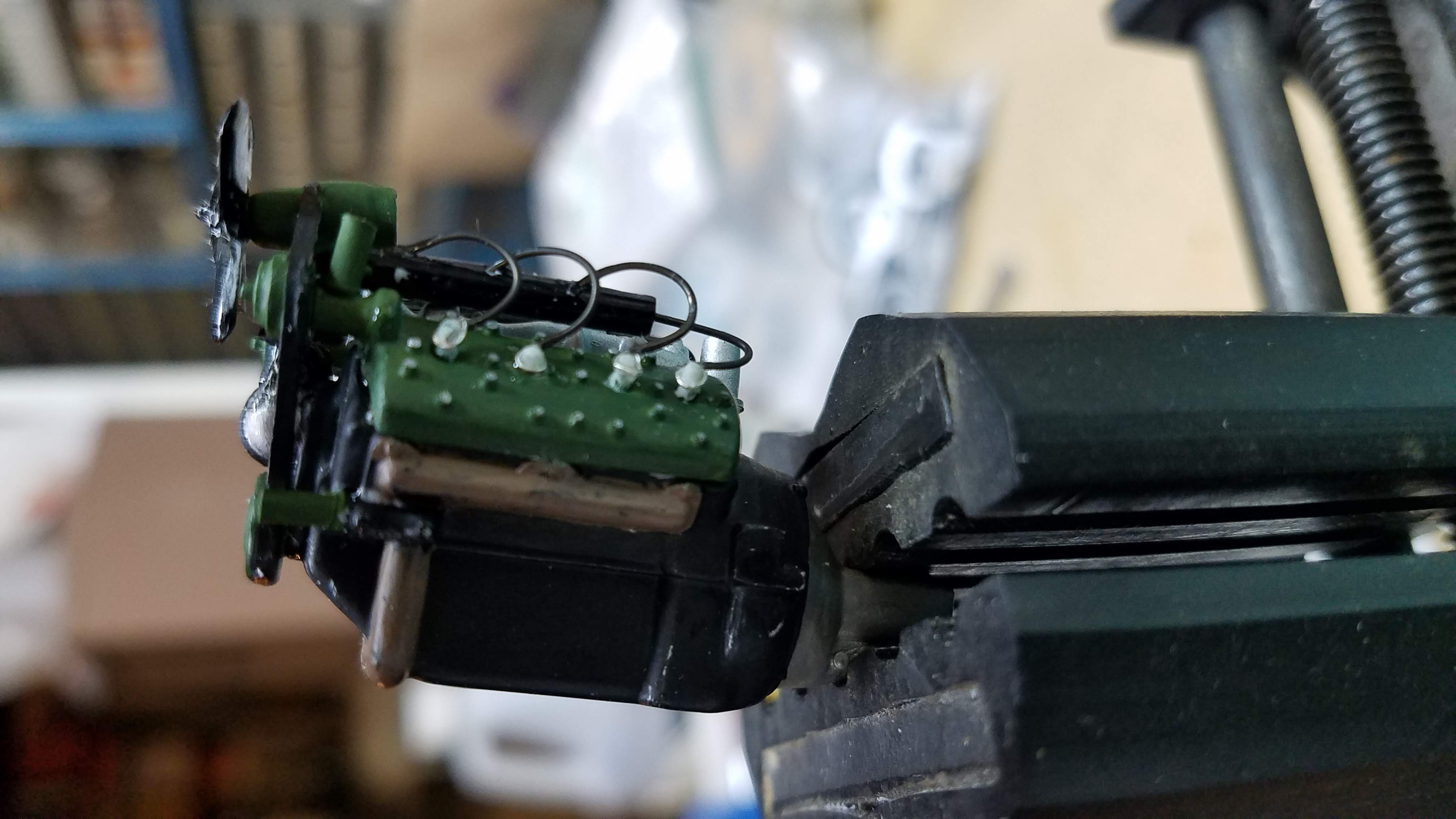
56 of 121
The scratch built radiator was painted Tamiya XF-1 flat Black.
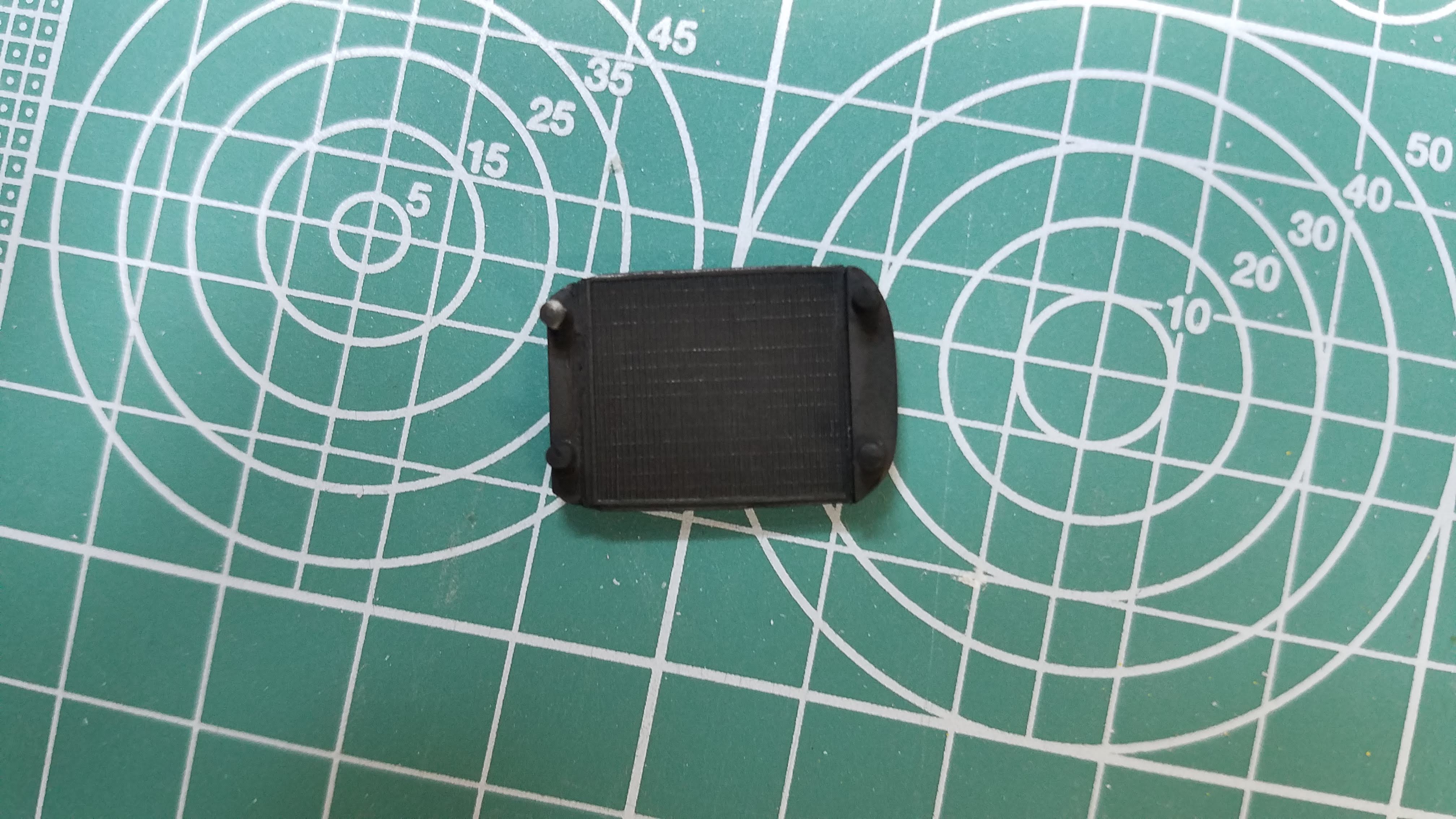
57 of 121
I than used a copper sharpie to show some paint that is worn off of the radiator tanks and also used some grey panel line paint to dirty the cooling fins.
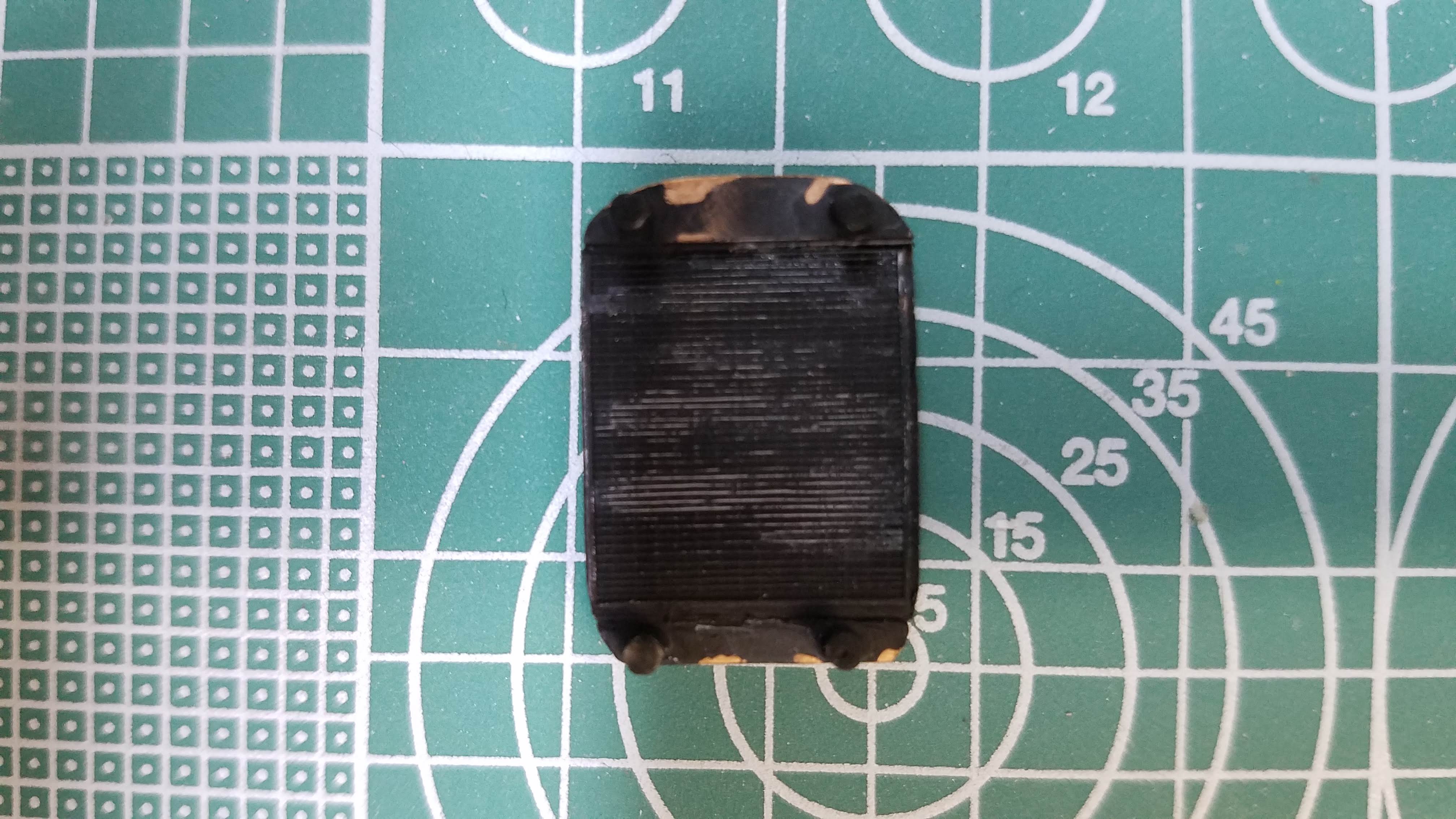
58 of 121
The next two photo's are of the engine before being dirtied.
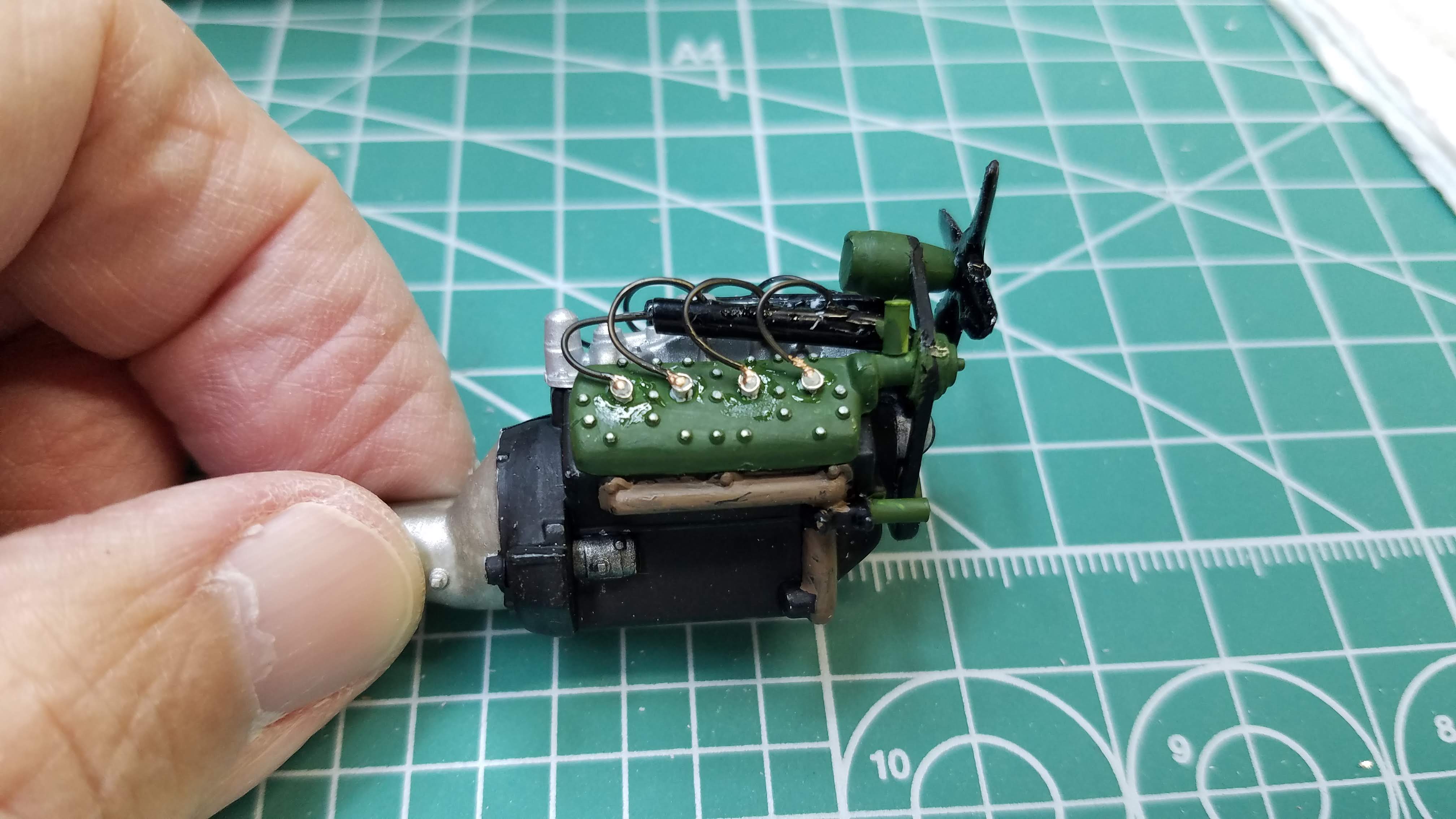
59 of 121
Another view of the engine before being dirtied.
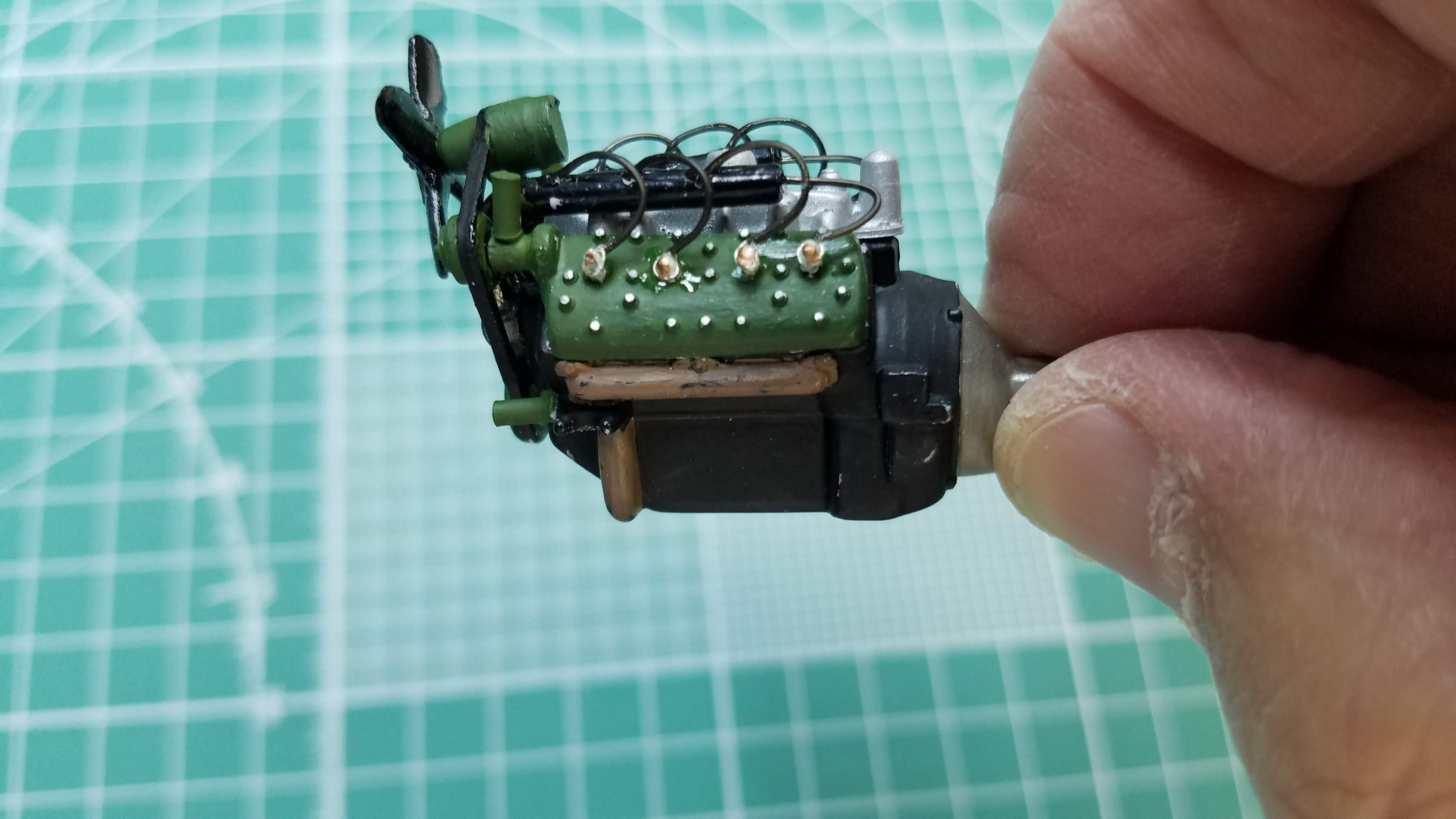
60 of 121
The exhaust pipe and muffler were painted with Mission Model - Rust and then lightly sprayed with Tamiya XF-16 Flat Aluminum.
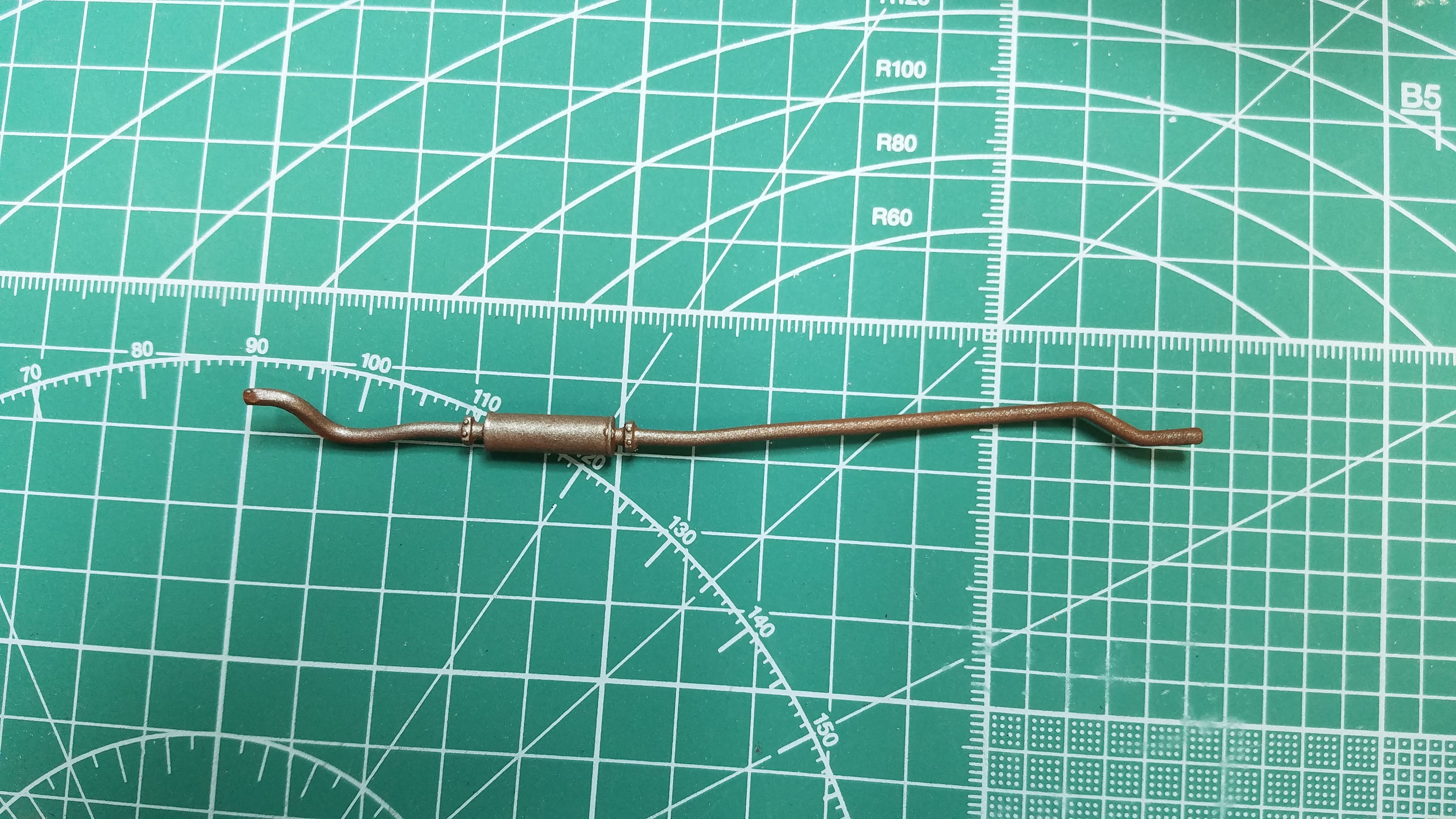
61 of 121
The frame had a light coat of Tamiya XF-1 Flat Black sprayed over the rust coat.
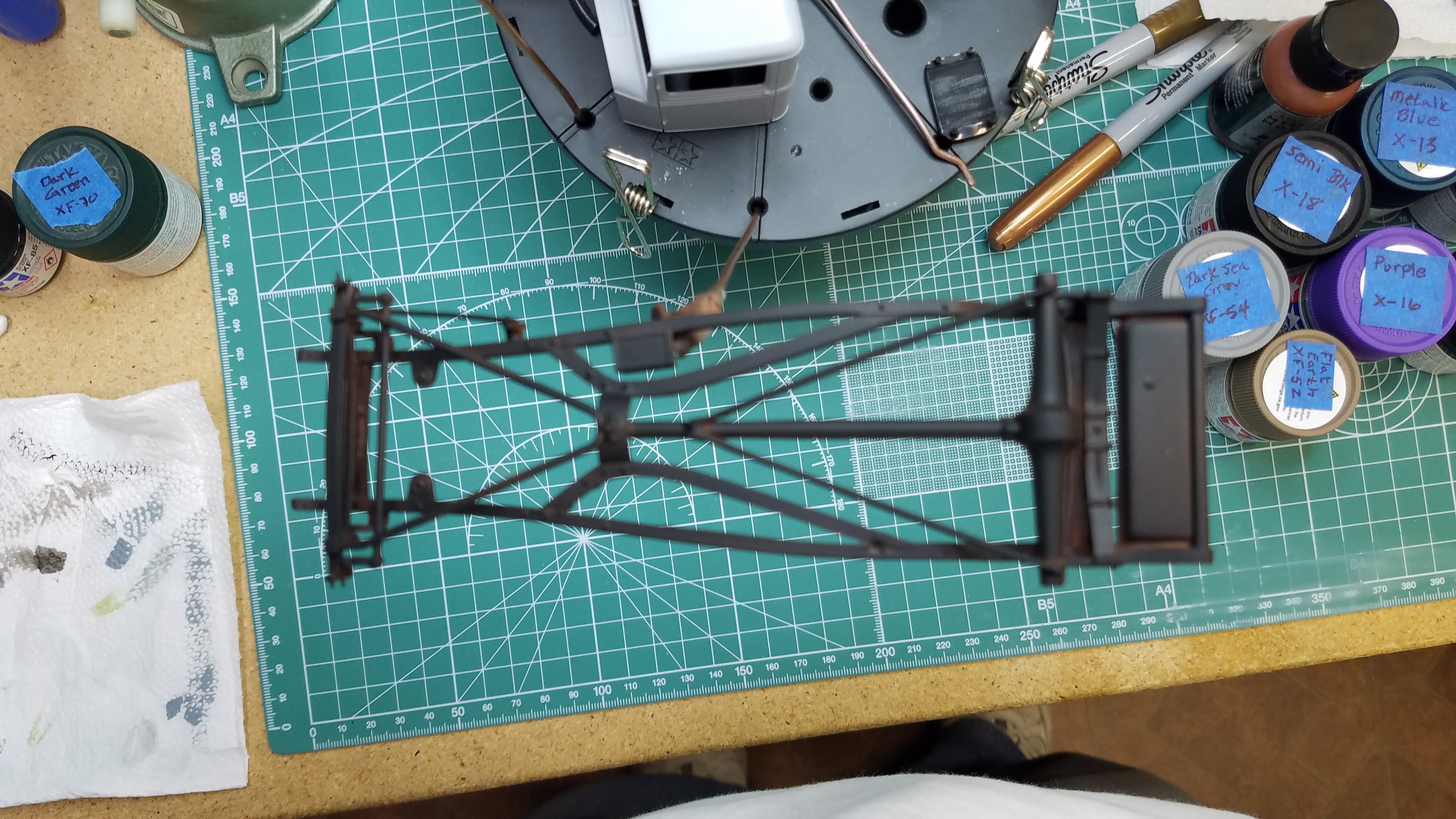
62 of 121
I used Tamiya XF-1 Flat Black on the bottom of the chassis and on the underside of the engine shroud.
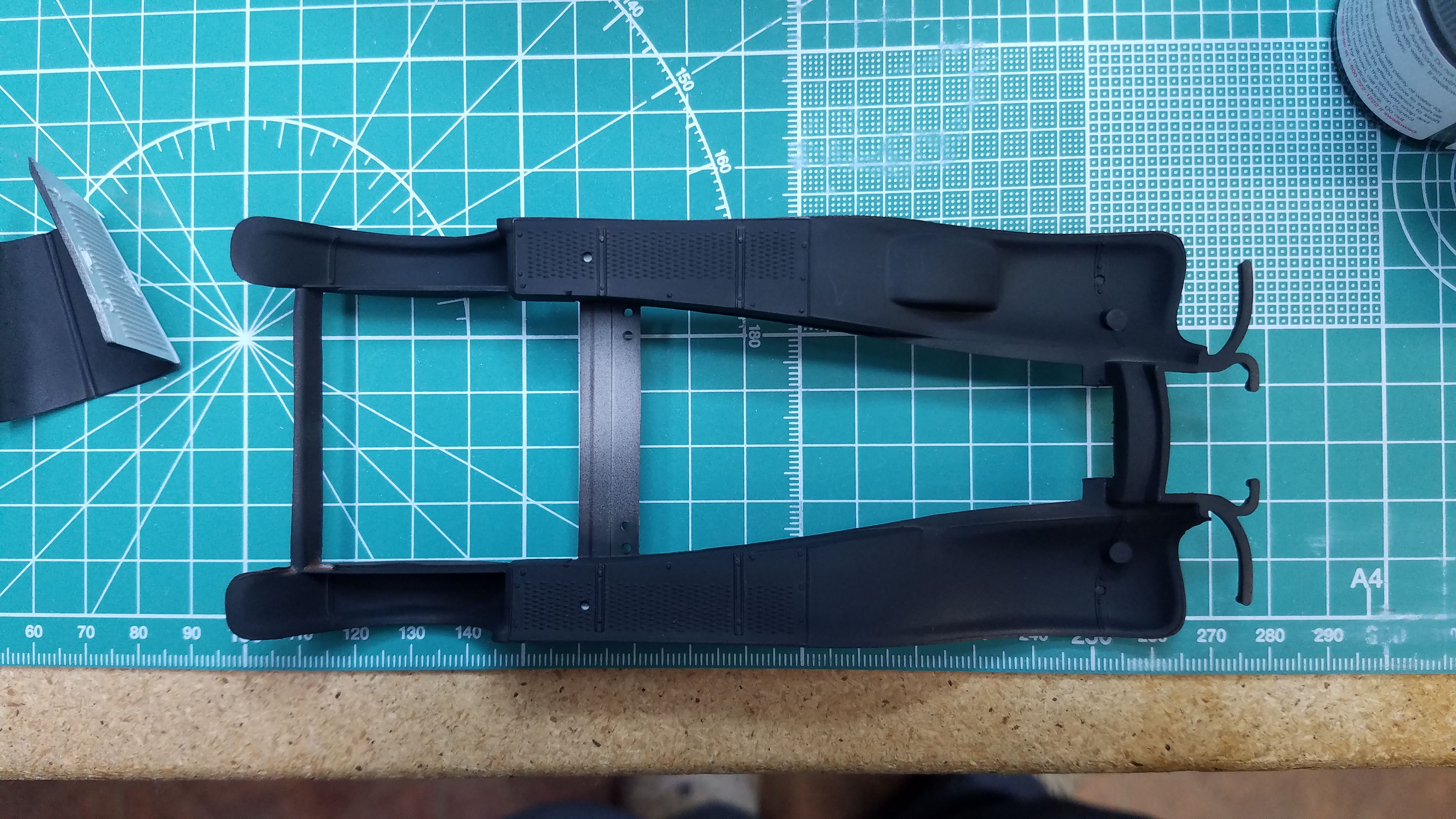
63 of 121
The floor of the cab received a light coat of Tamiya XF-54 Dark Sea Grey.
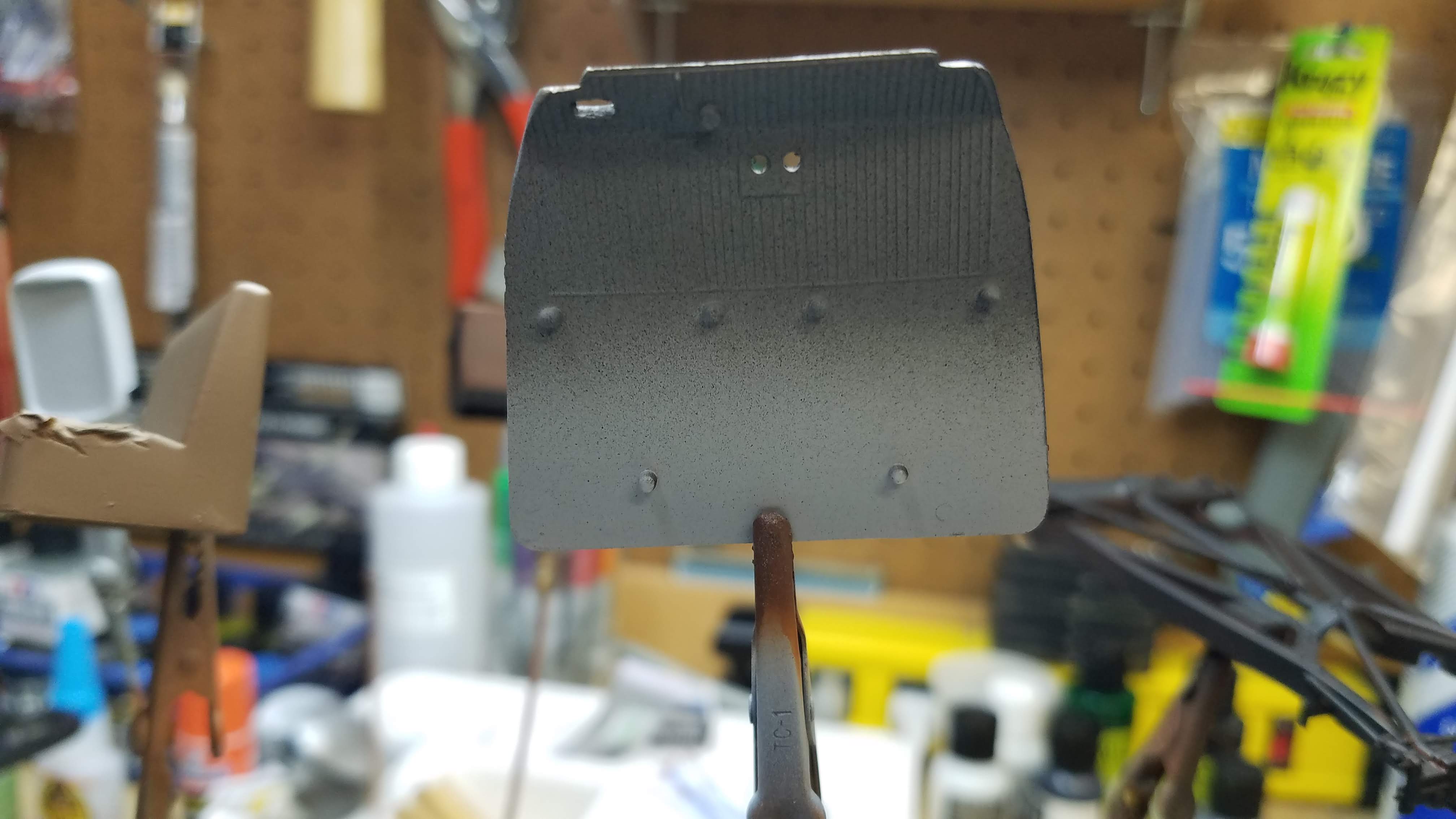
64 of 121
The bottom of the floor pan received a light coat of Tamiya XF-1 Flat Black over the rust coat.
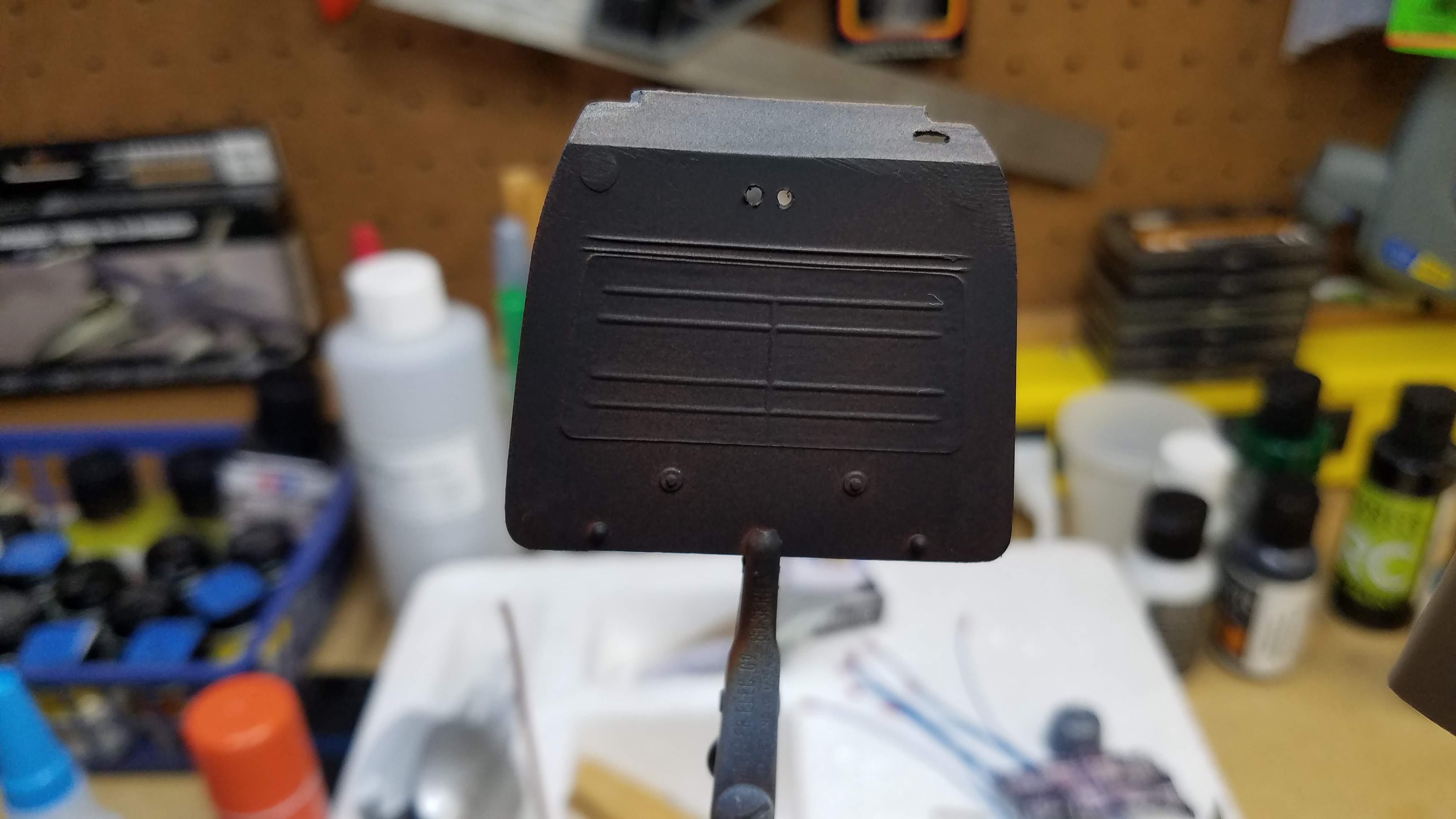
65 of 121
As stated earlier, the engine shroud was painted Tamiya XF-1 Flat Black.
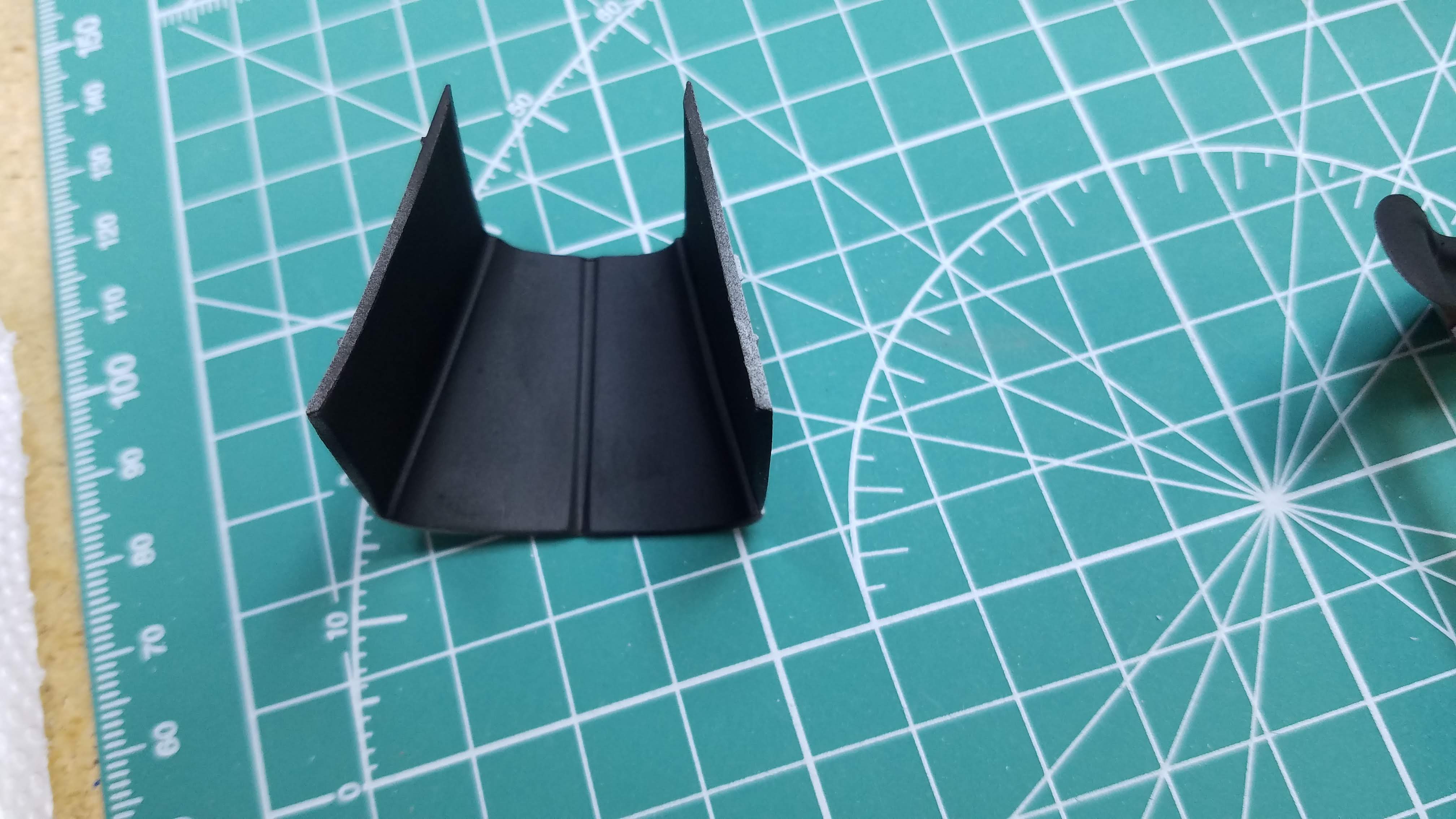
66 of 121
The inside of the radiator housing was also painted with Tamiya XF-1 Flat Black.
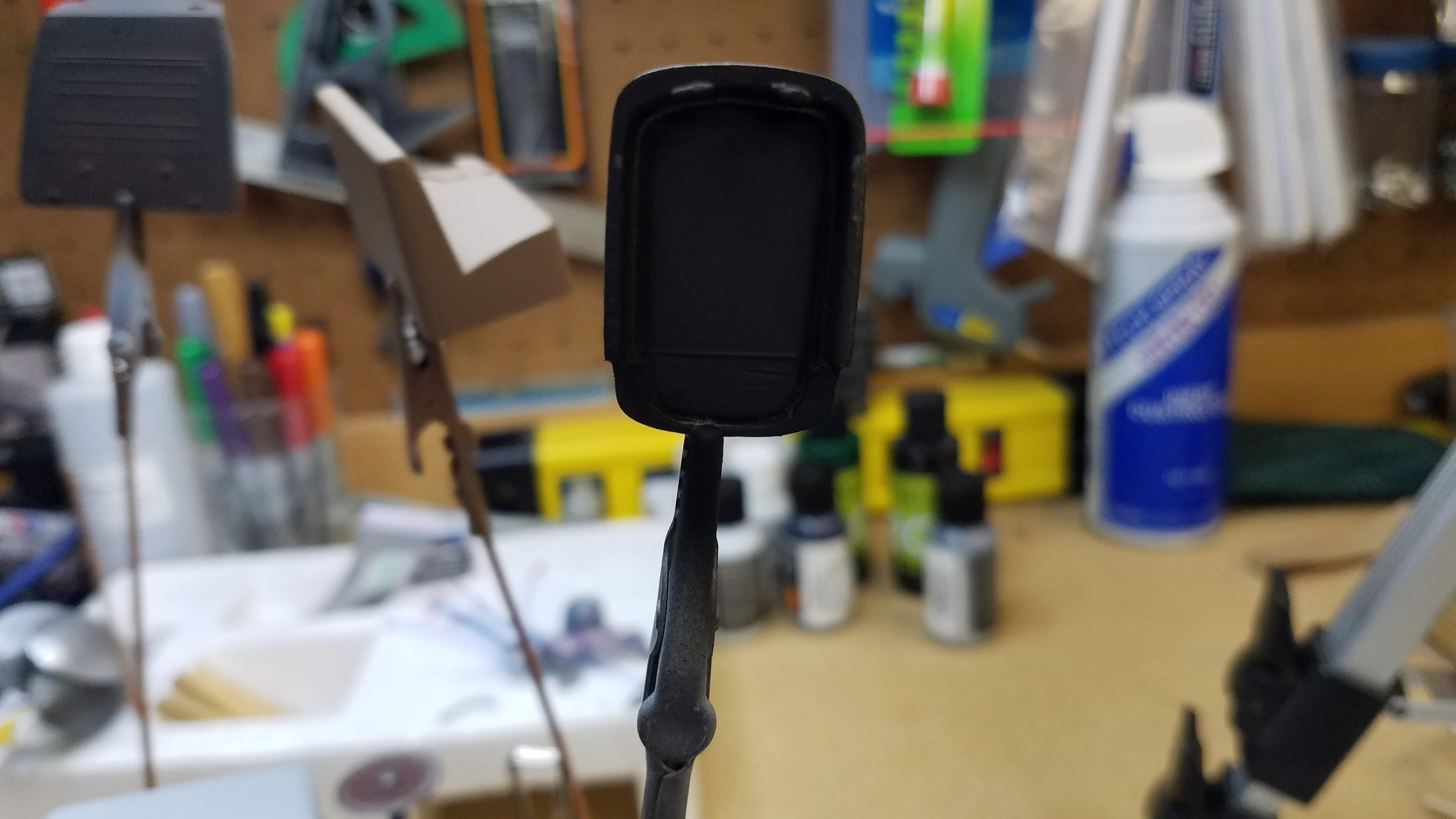
67 of 121
I sparsely sprayed areas of the bed with Tamiya XF-1 Flat Black to start getting various dirt layers.
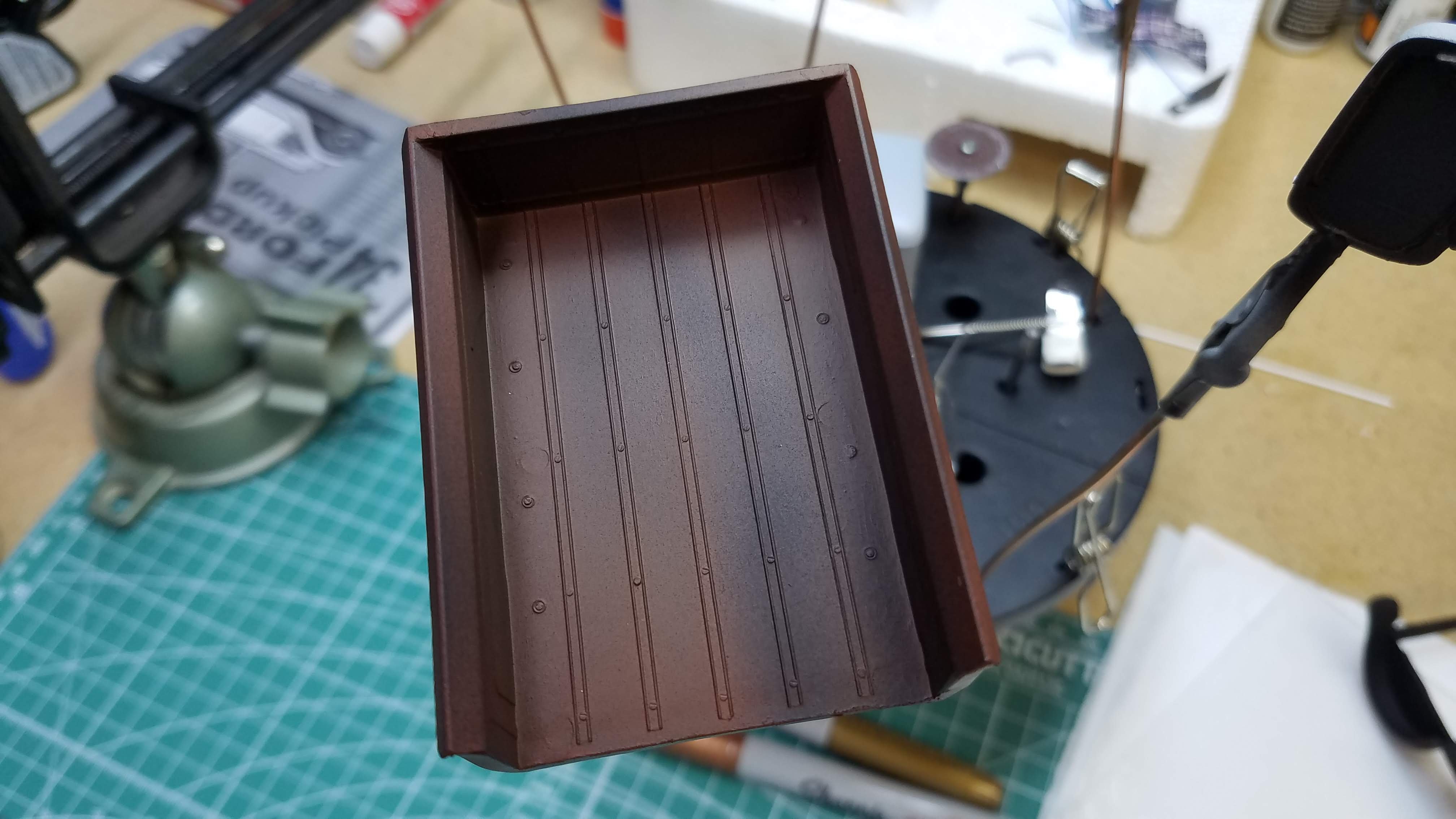
68 of 121
The seat was painted XF-52 Flat Earth. I taped over the springs because I didn't want them the to be the seat color. The seat will actually be covered with two different blankets.
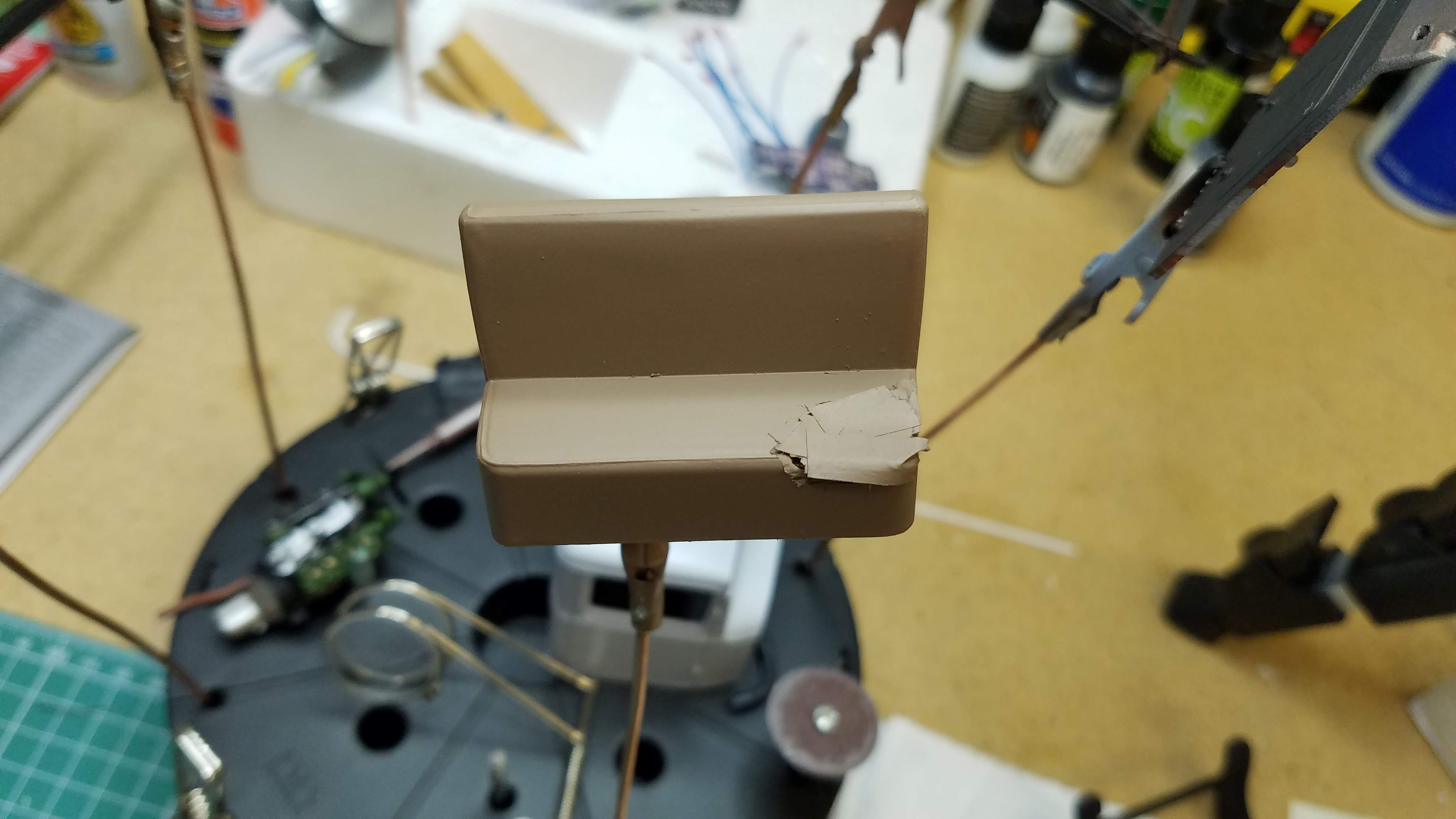
69 of 121
The cab received a coat of Tamiya X-18 Semi Gloss Black. Looking at this picture I'd never think this was semi gloss. Maybe it's because it still a-bit wet? I'm finding that Tamiya Acrylic paint may be dry to the touch; however, it takes almost a full 24-hour day to thoroughly dry. I don't have a dehydrator or drying oven, but I'm seriously considering buying one.
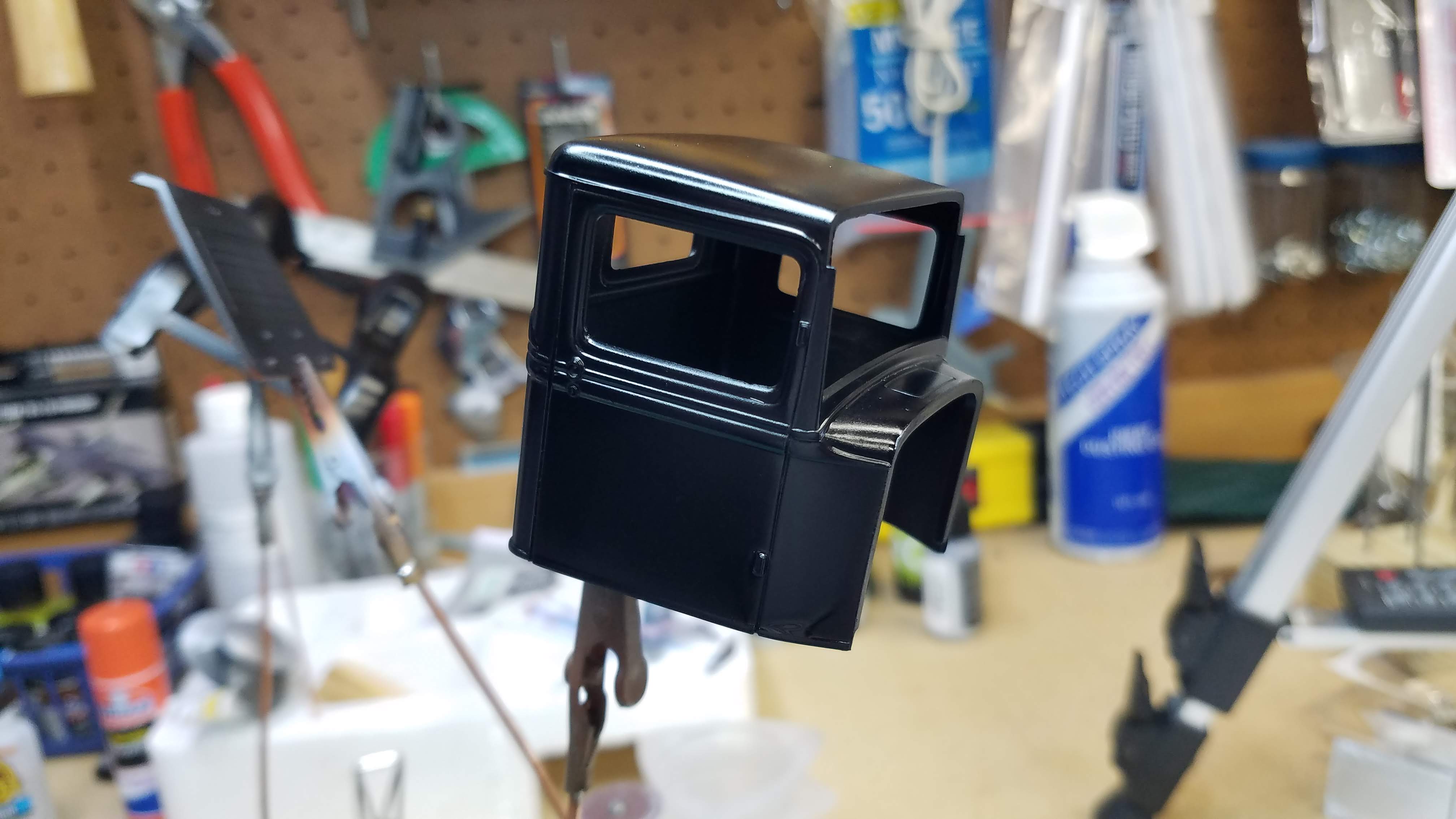
70 of 121
The truck bed also received a coat of Tamiya X-18 Semi Gloss Black.
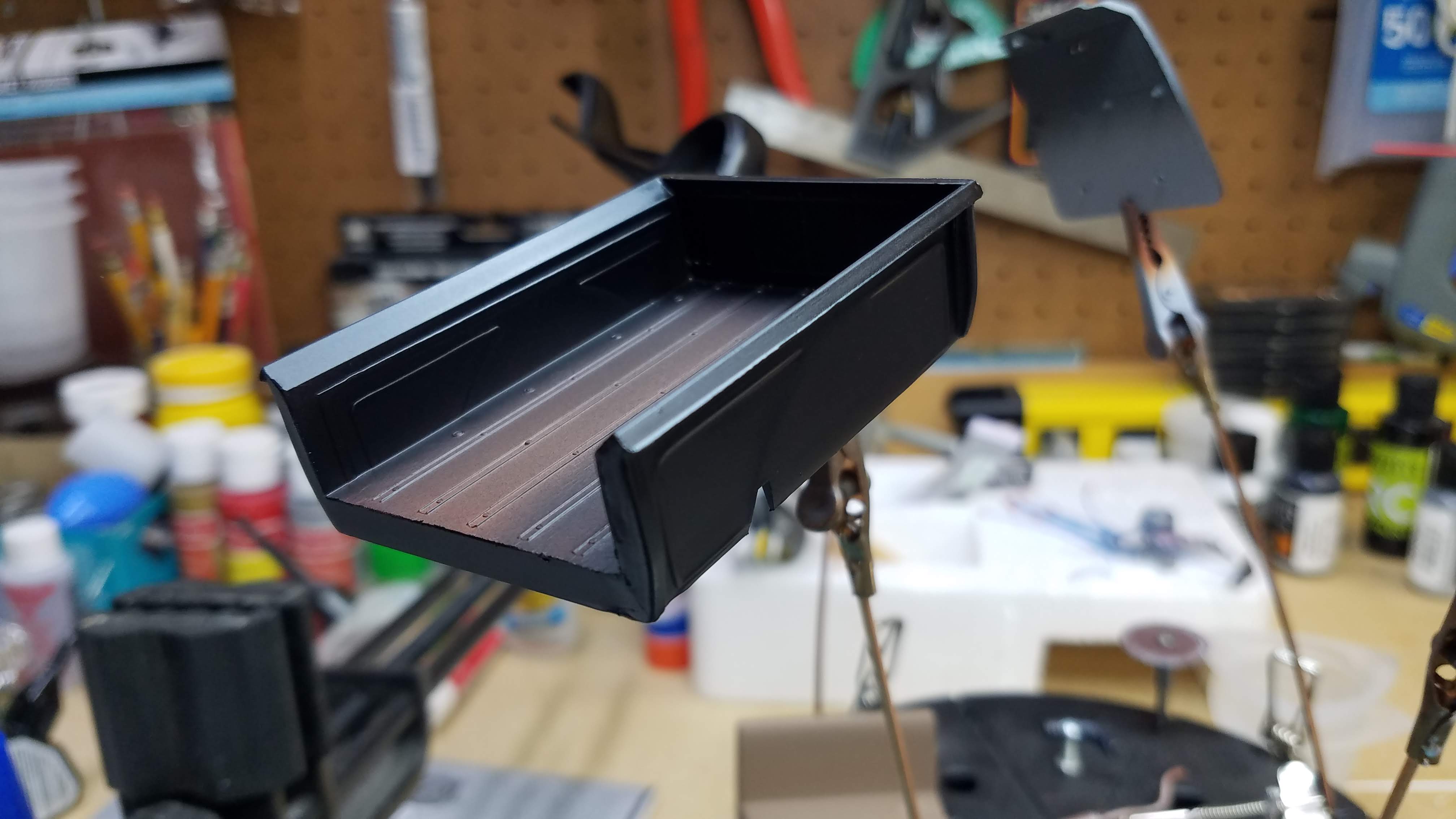
71 of 121
The chassis received a coat of Tamiya X-18 Semi Gloss Black.
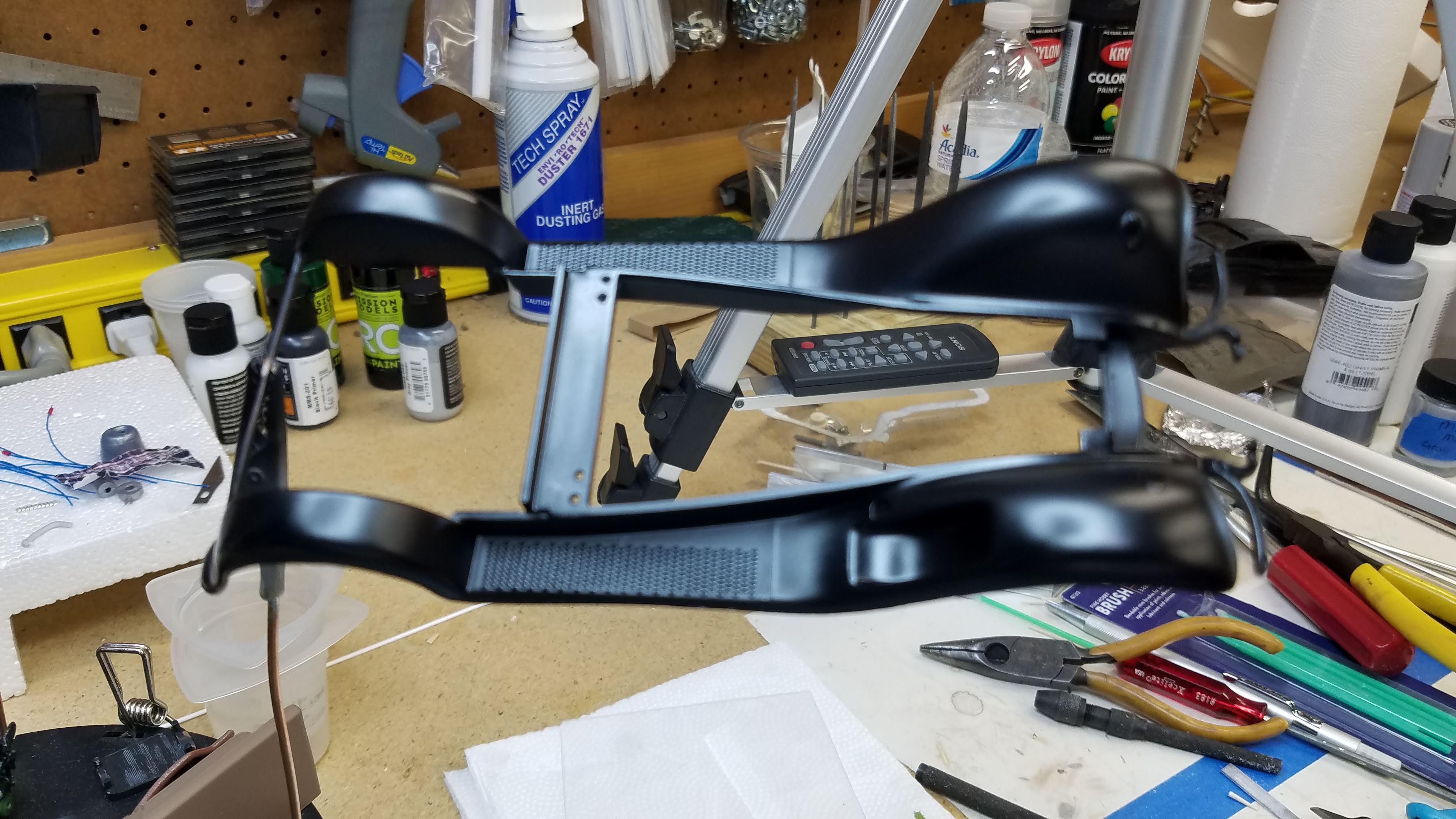
72 of 121
I then gave the tail gate, windshield frame, firewall, radiator shroud and dash board a coat of Tamiya X-18 Semi Gloss Black.
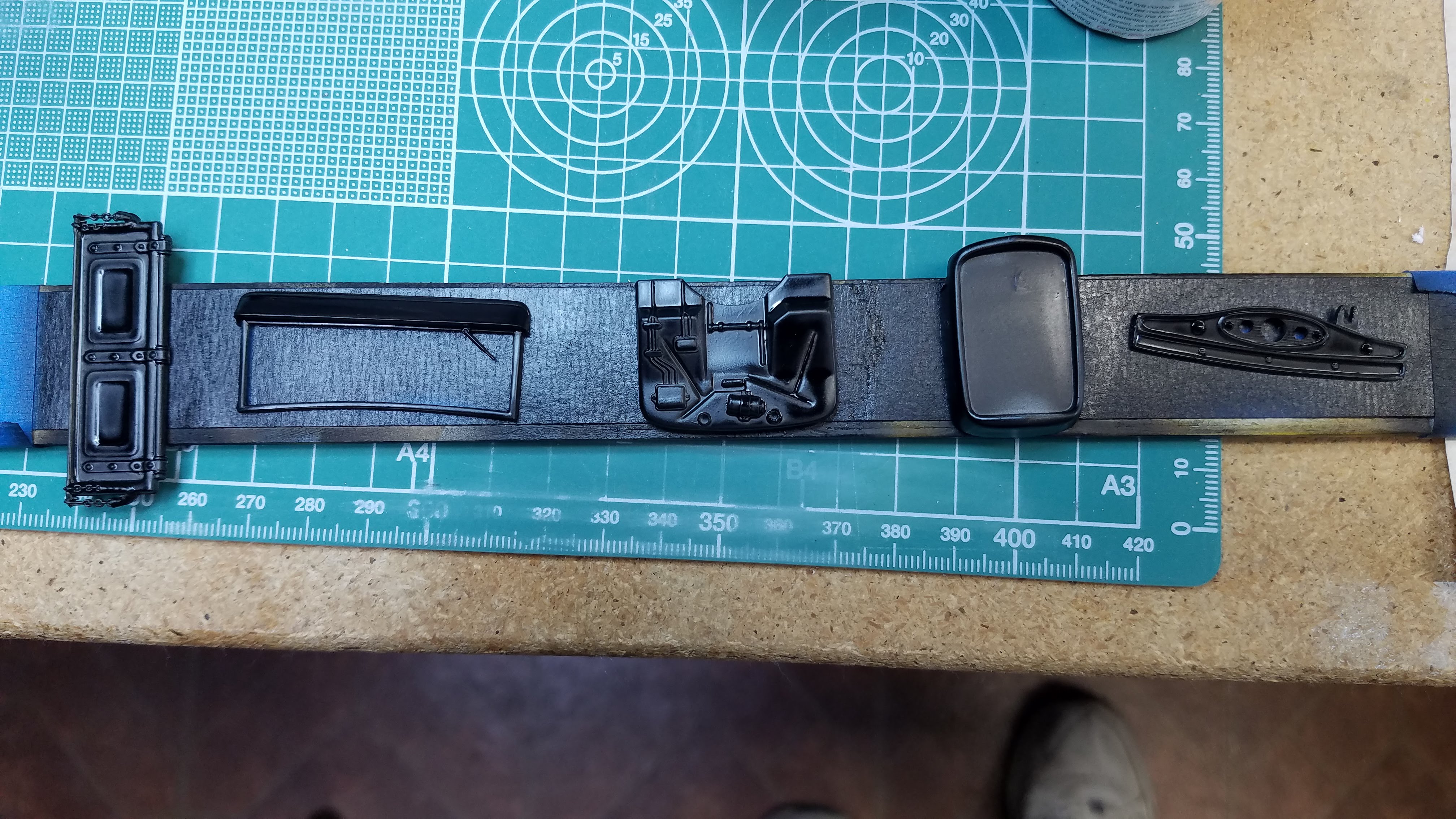
73 of 121
The solid wheels were lightly sprayed with Tamiya X-18 Semi Gloss Black, but not fully covered so that some of the rust color would show through.
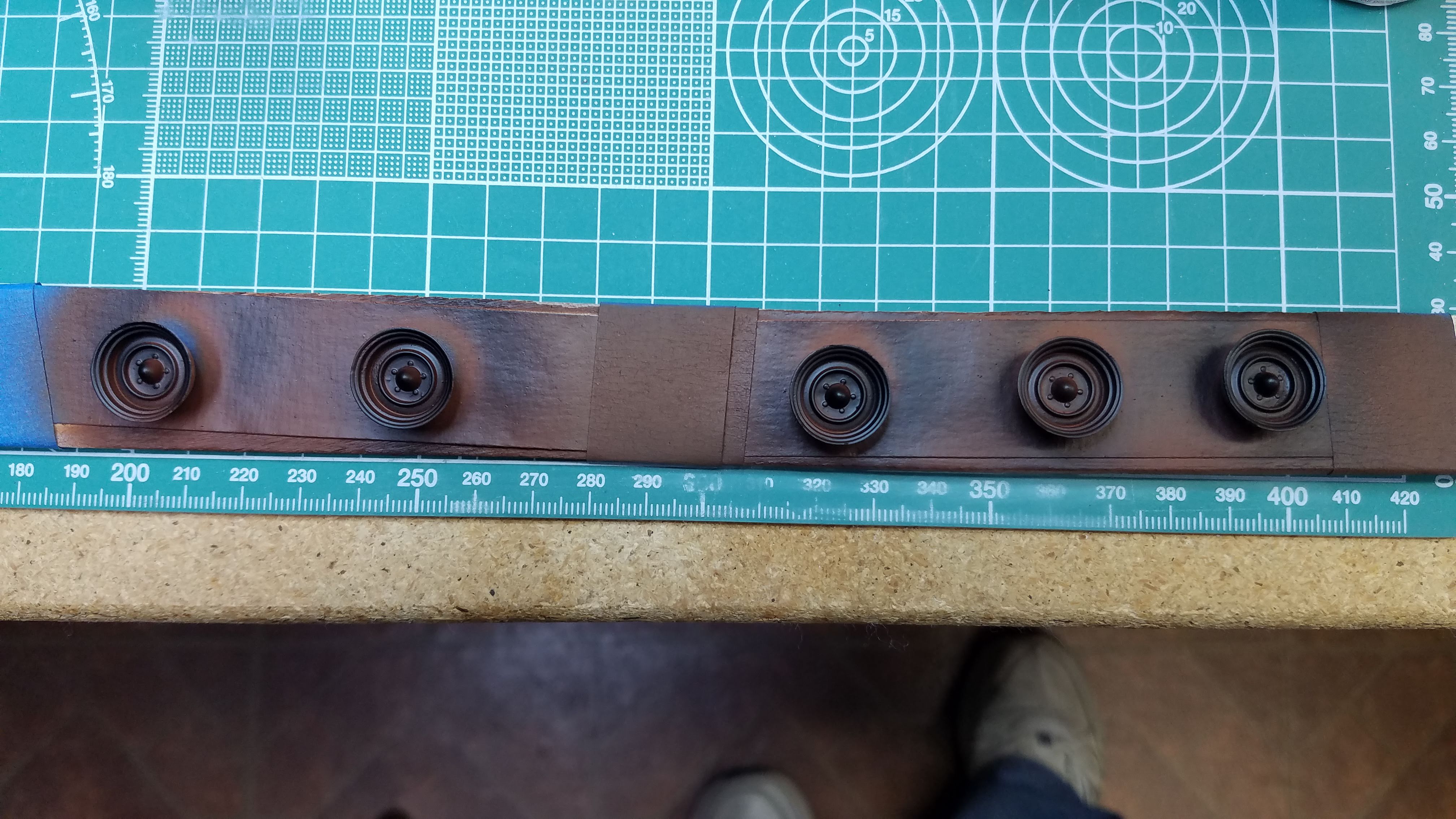
74 of 121
The frame was rusted and dirtied by using 3000 grit sand paper to remove some of the Tamiya XF-1 Flat Black paint to expose the rust layers. I also used Tamiya pastel powders; sand, light sand, soot and silver. The lighting for this photo was not very good.
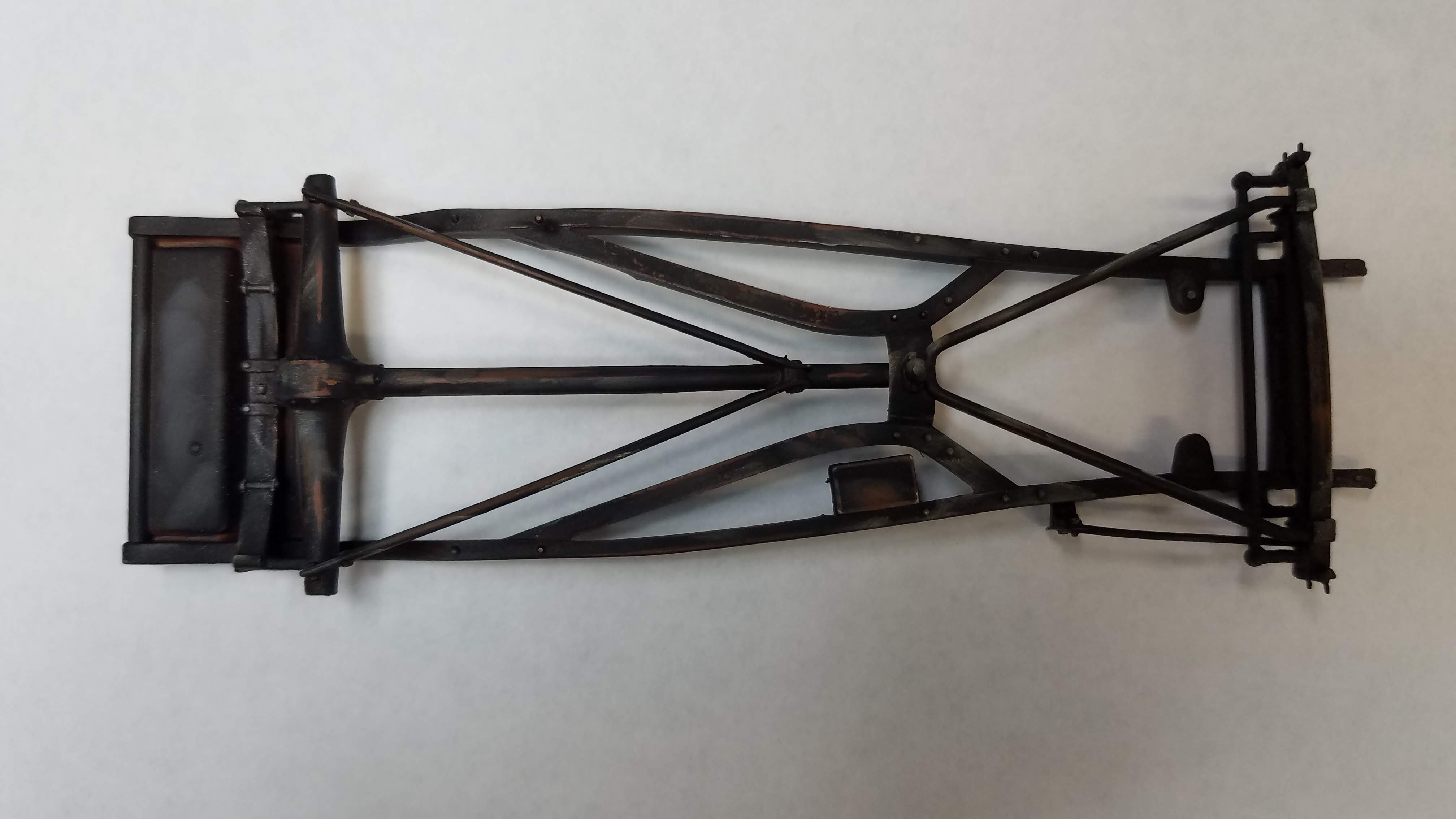
75 of 121
The seat was dirtied with Tamiya Panel line Brown, Dark Brown and Black. I'm second thinking whether to use the blank covers? Maybe just on part of the seat?
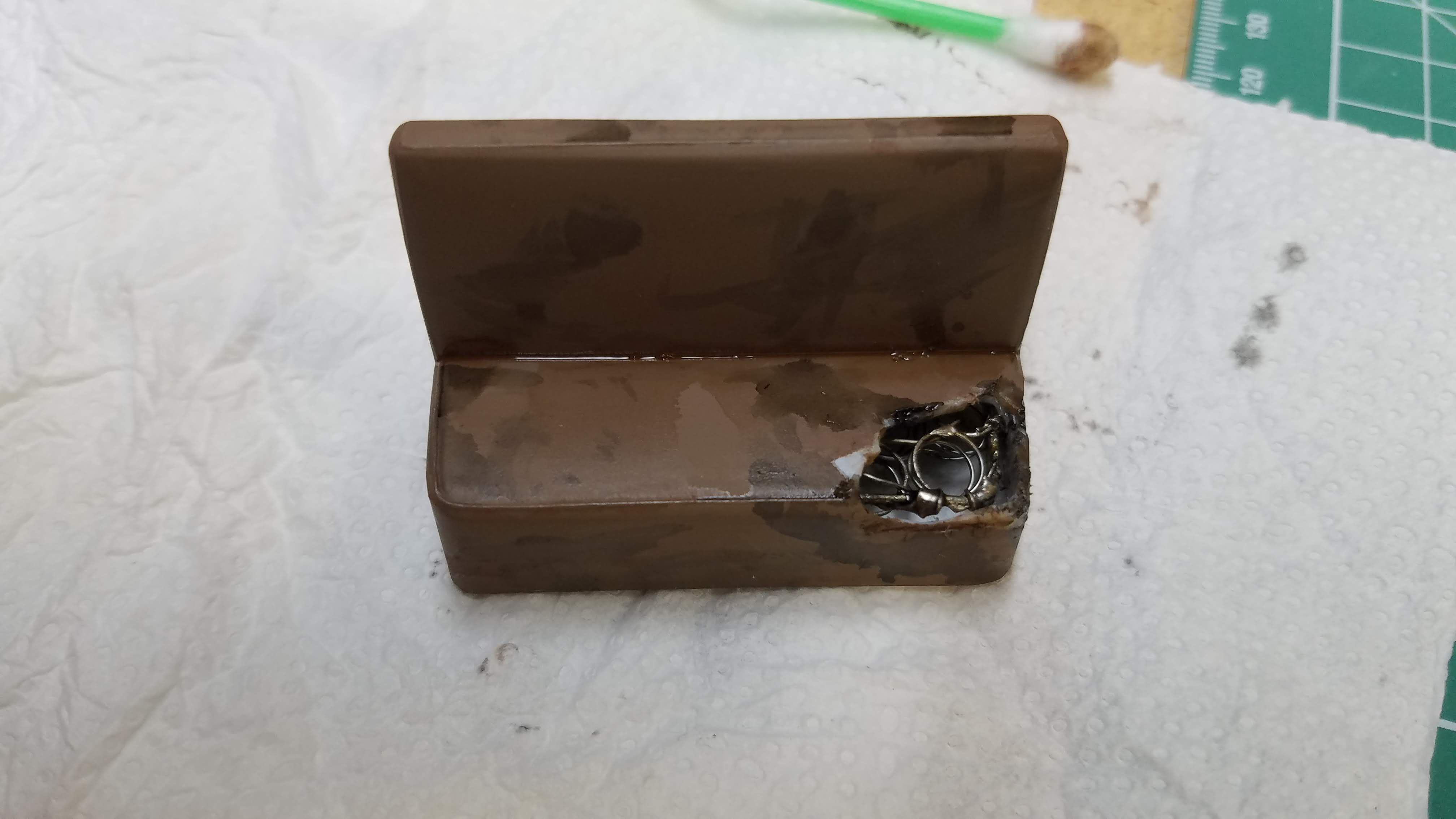
76 of 121
The perspective of this picture might be difficult to get oriented; however, it is the inside of the cab, with the back of the cab resting on the bench. I'm taping around the inside of the door panels for painting the the inside of the cab doors. My recollection is that the inside of the doors was aluminum (Tamiya XF-16).
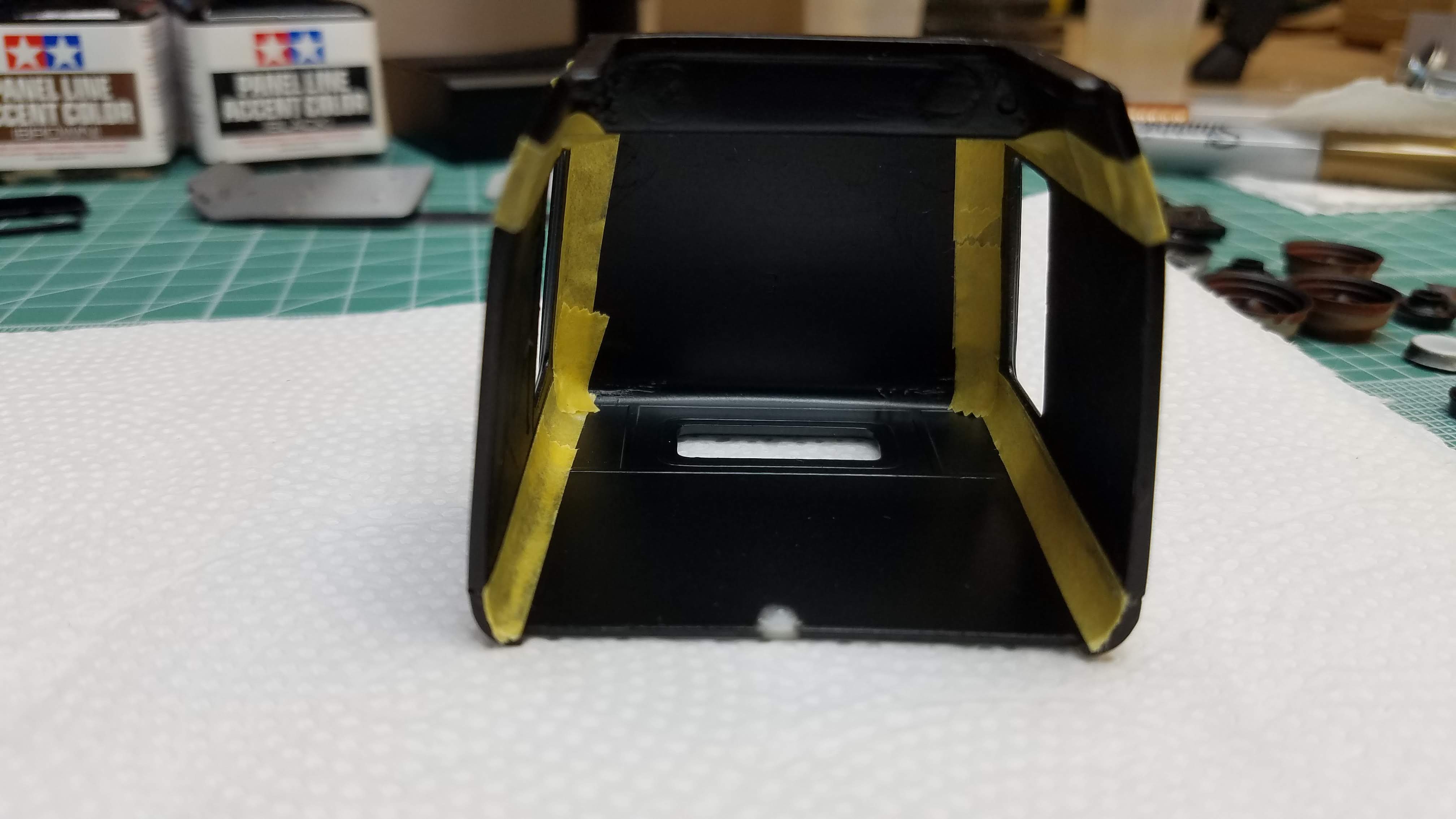
77 of 121
Here, I glued and clamped the wheel fronts and backs.
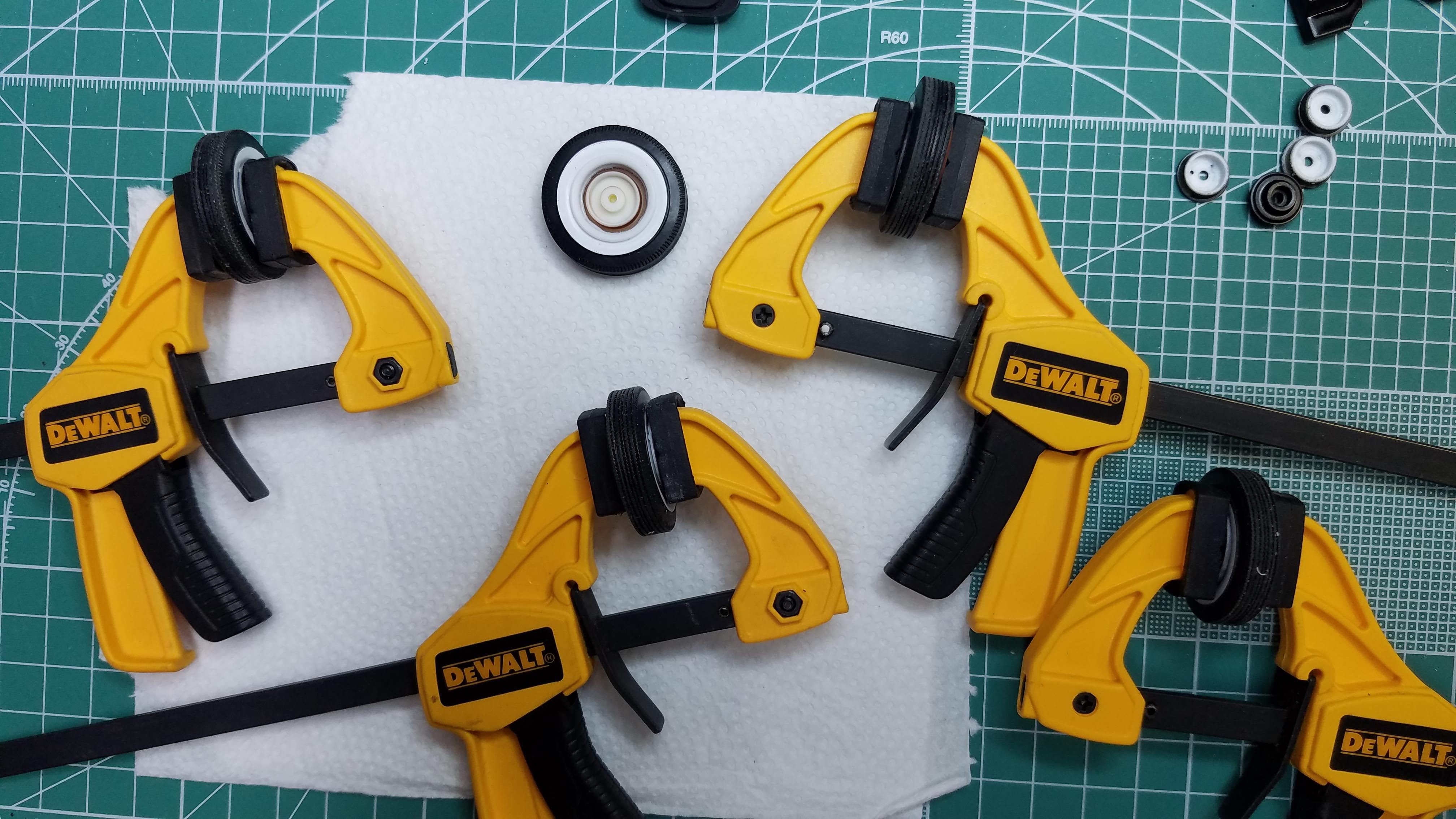
78 of 121
The inside of the door is painted with Tamiya XF-16 Flat Aluminum. I used a brush purposely allowed some of the black to streak through to aid in showing wear and dirt. The window cranks and door handles will be painted later.
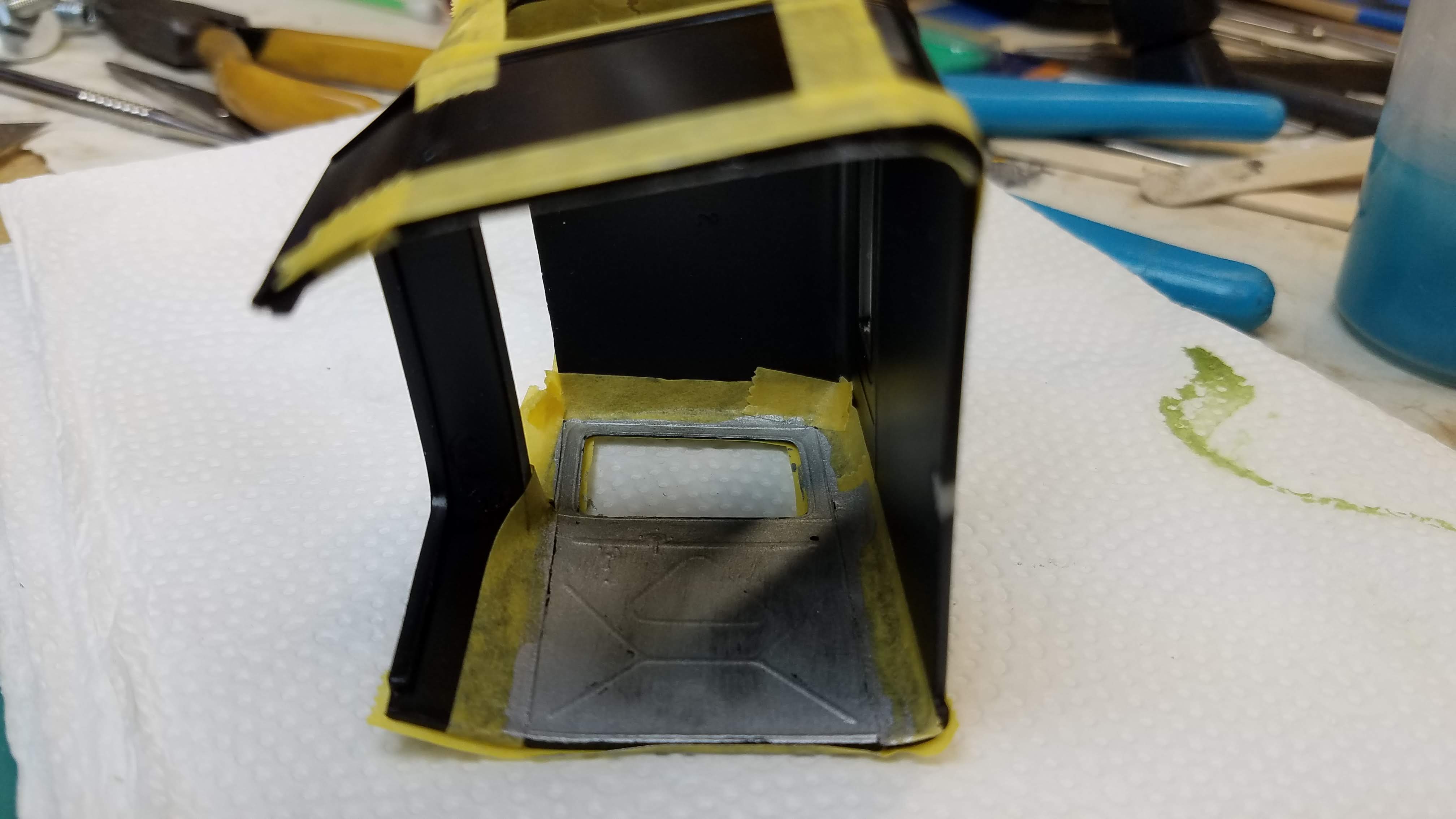
79 of 121
The body and chassis parts are being dry fitted. I taped the frame to the chassis with engine in place. The floor pan and seat are fitted and the cab is placed over the floor pan.
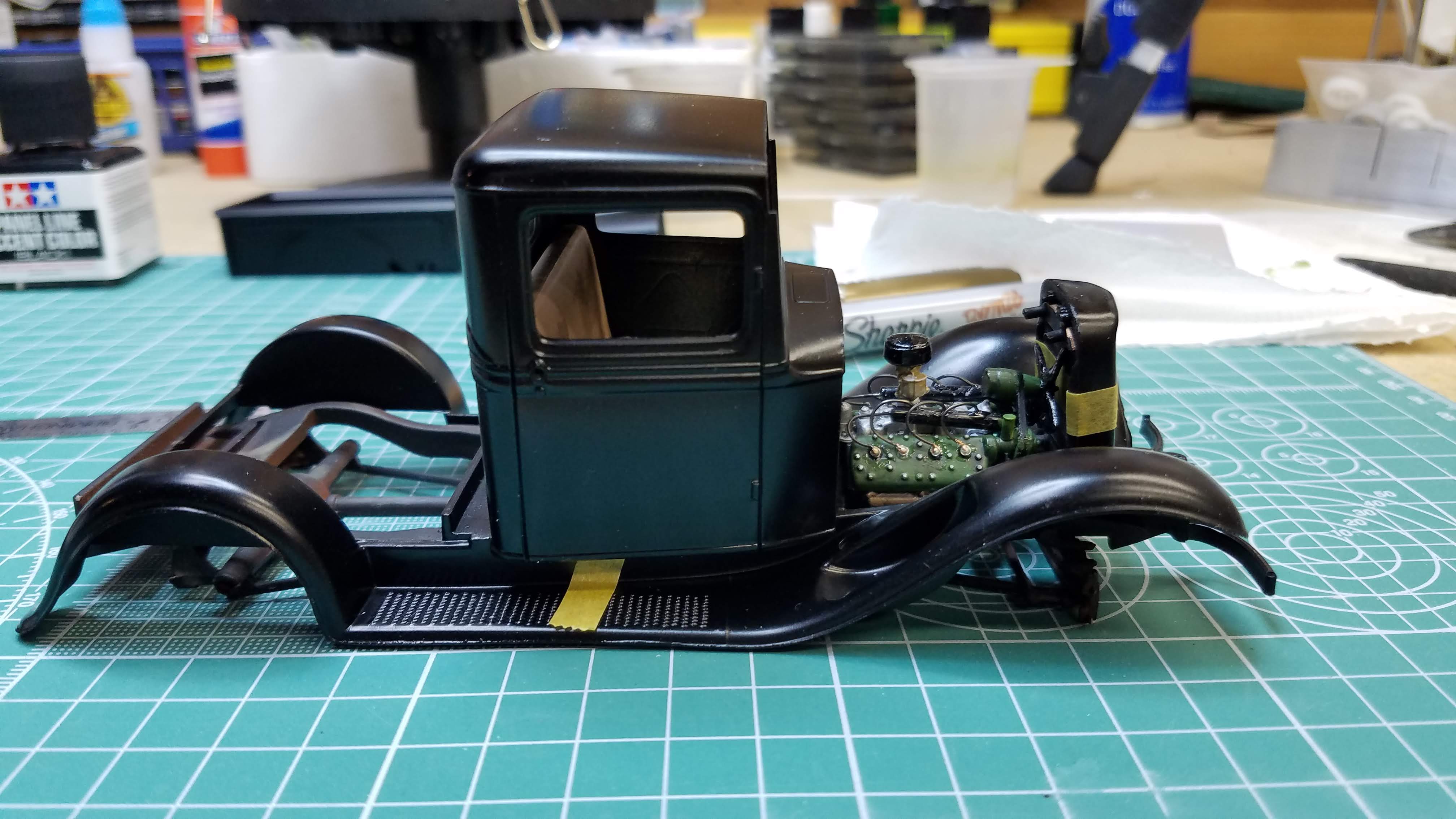
80 of 121
This is another view looking down on the engine bay. The worn seat can be seen through the windshield.
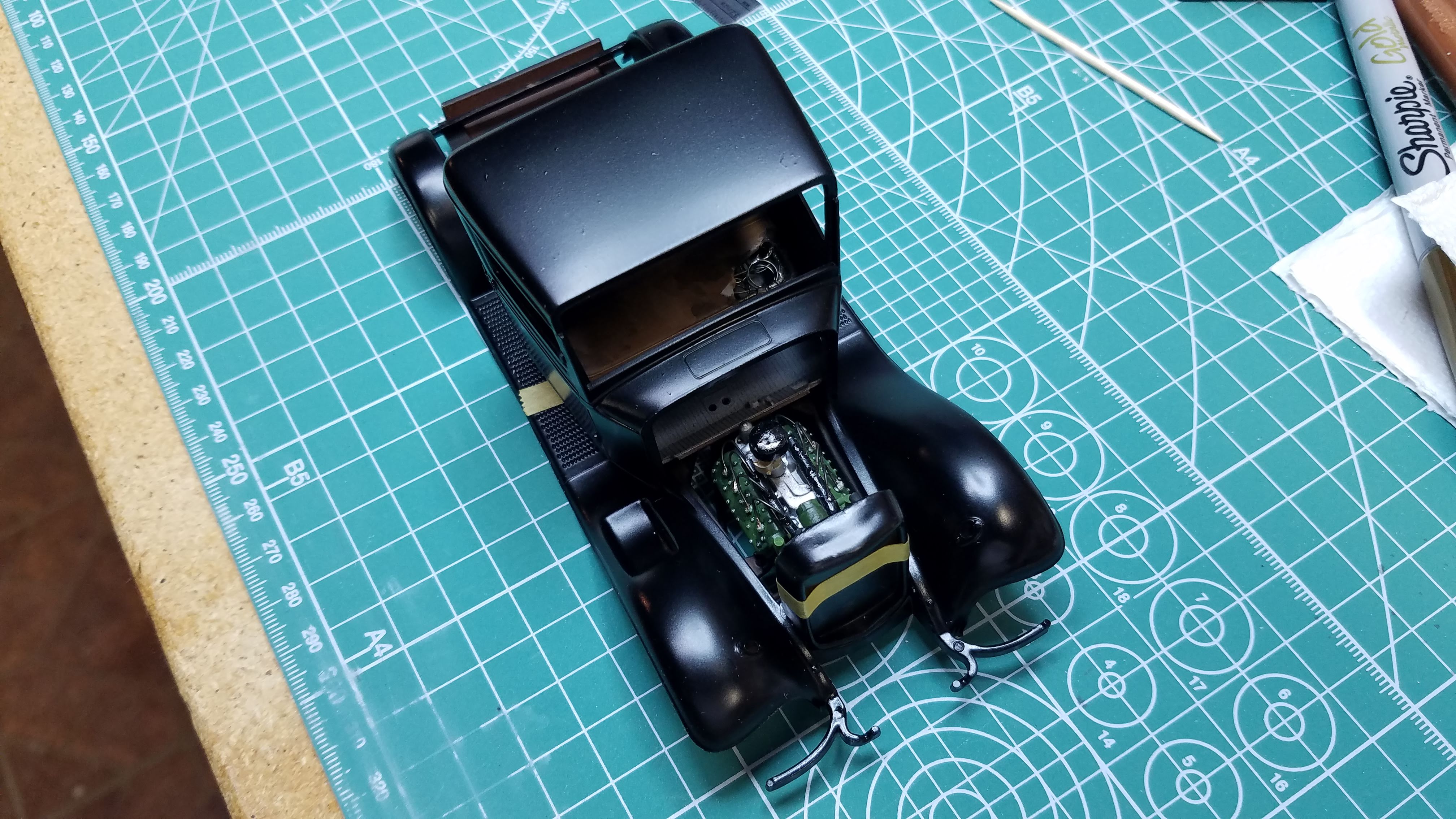
81 of 121
Another shot looking down on the truck. I can see in this photo that the roof needs some sanding, although, when I sand to show some rust, those small divots might add some realism to the rust.
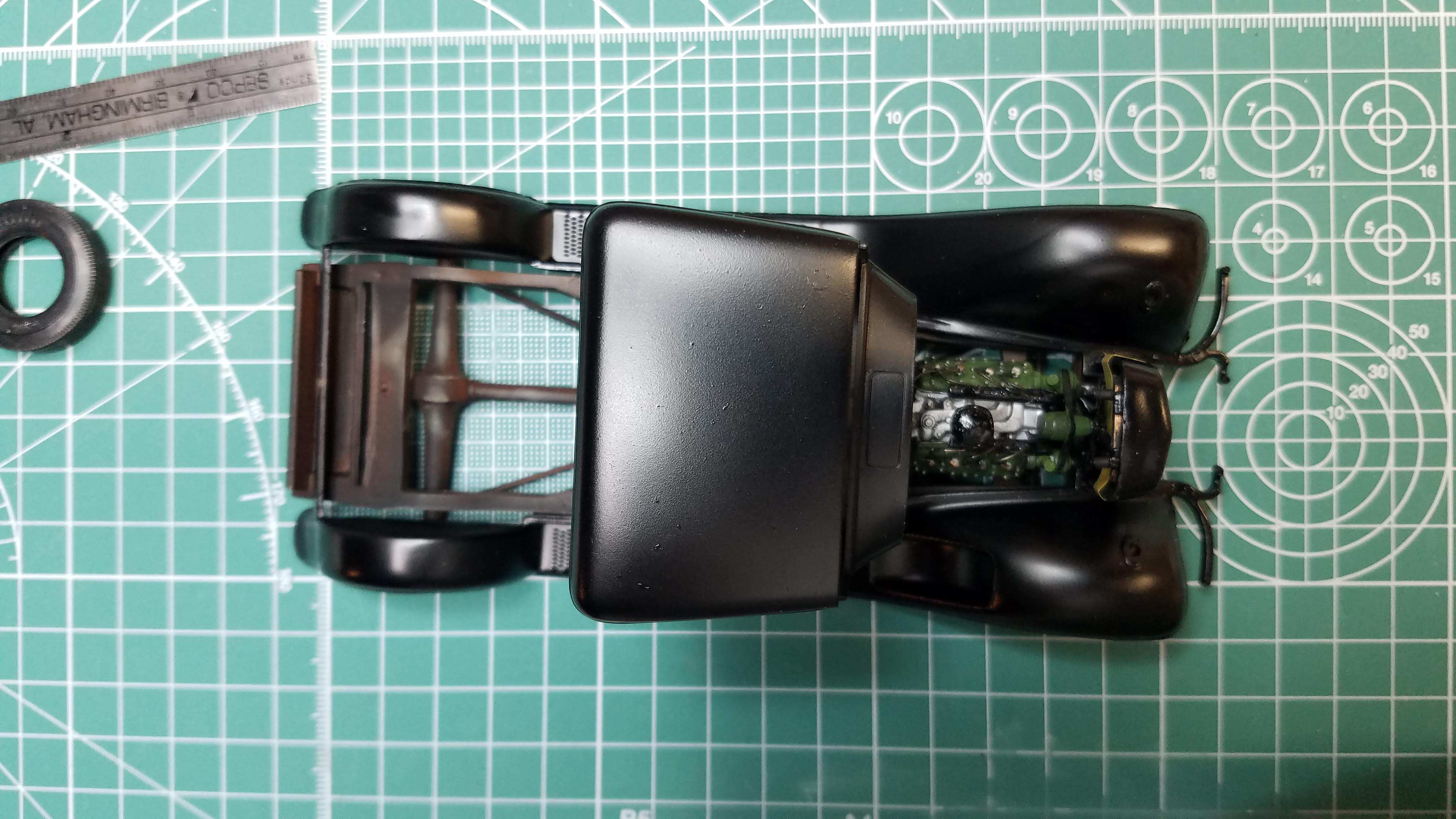
82 of 121
The truck bed is dry fitted while carrying its tailgate.
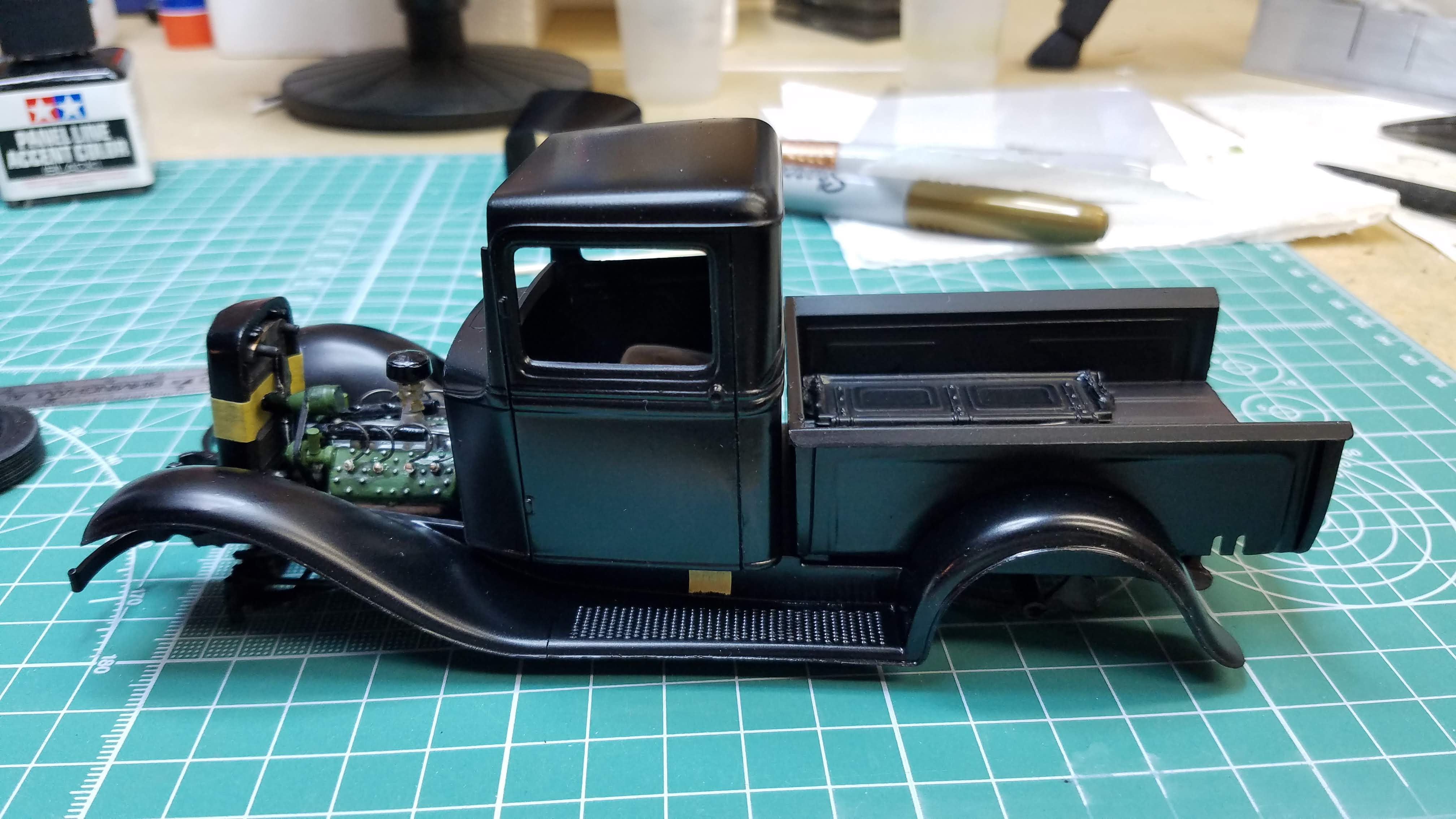
83 of 121
Another shot of the parts dry fitted with no firewall installed yet.
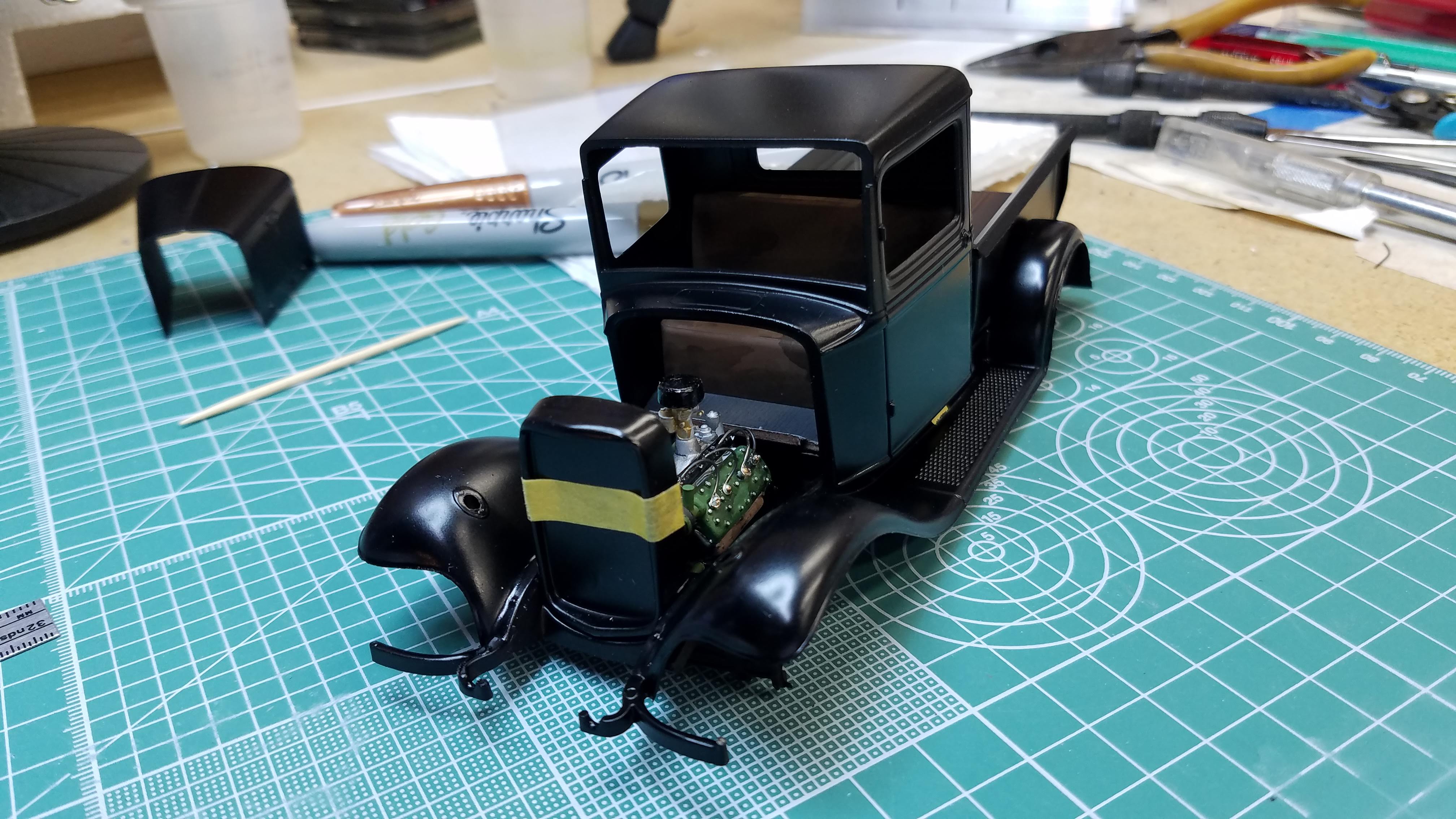
84 of 121
My plan for the upper radiator hoses was to use the insulation from 18AWG (AWG = American Wire Gauge) control wire; however, the inside diameter of the insulation was much smaller than the Evergreen rod I used for the hose port. I attempted to drill out the insulation to fit the Evergreen rod, but that did not work very well. Therefore, I ordered radiator hose from Design Master. It came today, March 28, 2022 and to my surprise it's nothing more than black insulated control wire of which I have over 1,000 ft from when I was in business. So...I removed the Evergreen rod nubs that I had made. I then took the insulation from my 18AWG control wire and inserted a piece of 18AWG solid soft drawn bus wire, shown in this photo. I then drilled out the hose locations with a drill that is just slightly larger than the 18AWG solid bus wire. This image shows that process in progress. You can also watch my, now failed plan, in my '34 Ford Video Part 05. The white insulation was then painted with Tamiya XF-85 Rubber Black.
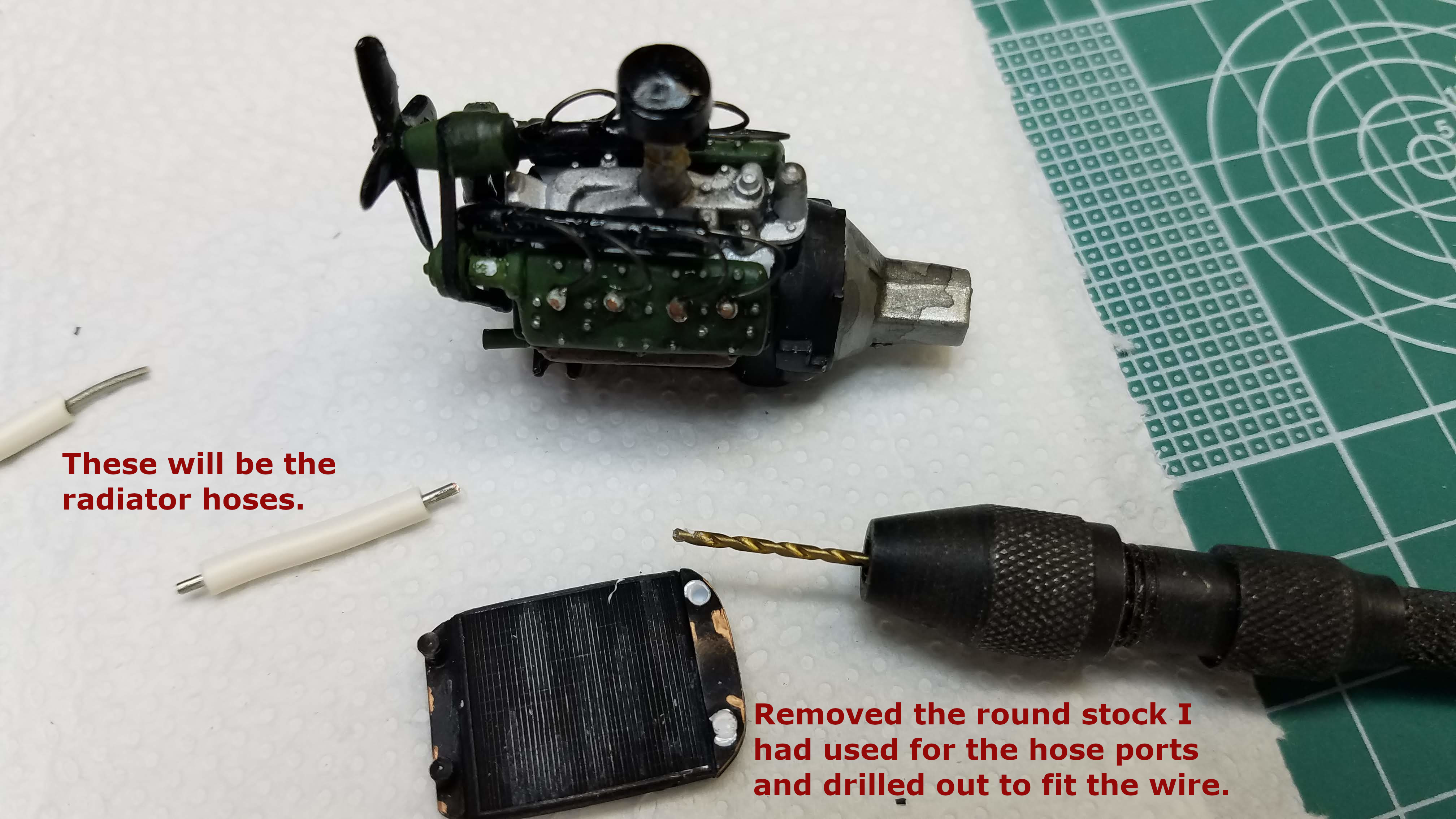
85 of 121
I used 3000 grit wet sand paper and wet sanded the chassis to show some rust and to dull down some of the surface paint.
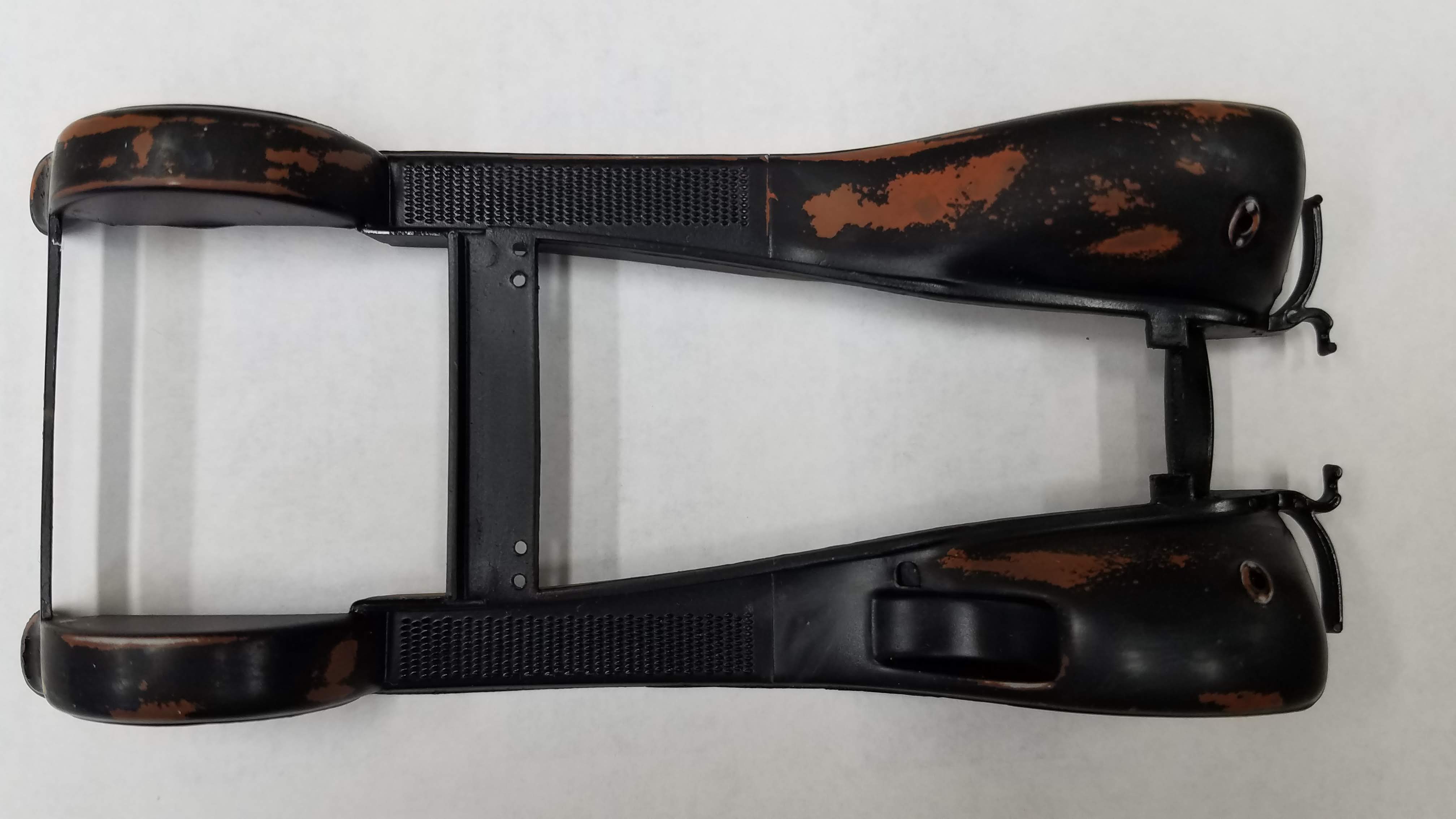
86 of 121
I did the same to the bottom of the chassis but also use Tamiya dirtying pastel powers to dirty the bottom side.
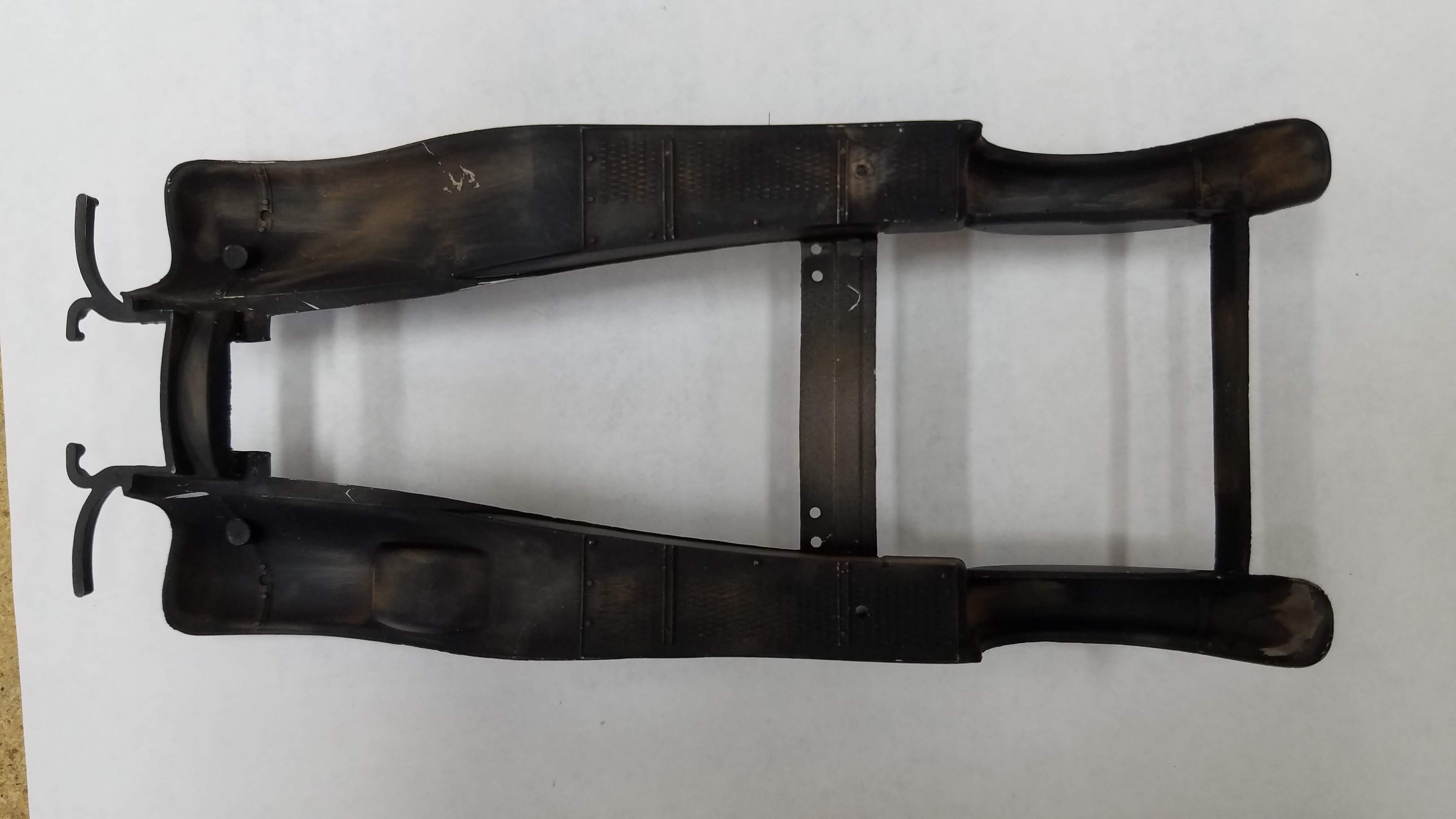
87 of 121
The cab does not have any rust; however, it is chipped and scratched along with being slightly dulled from age and sun.
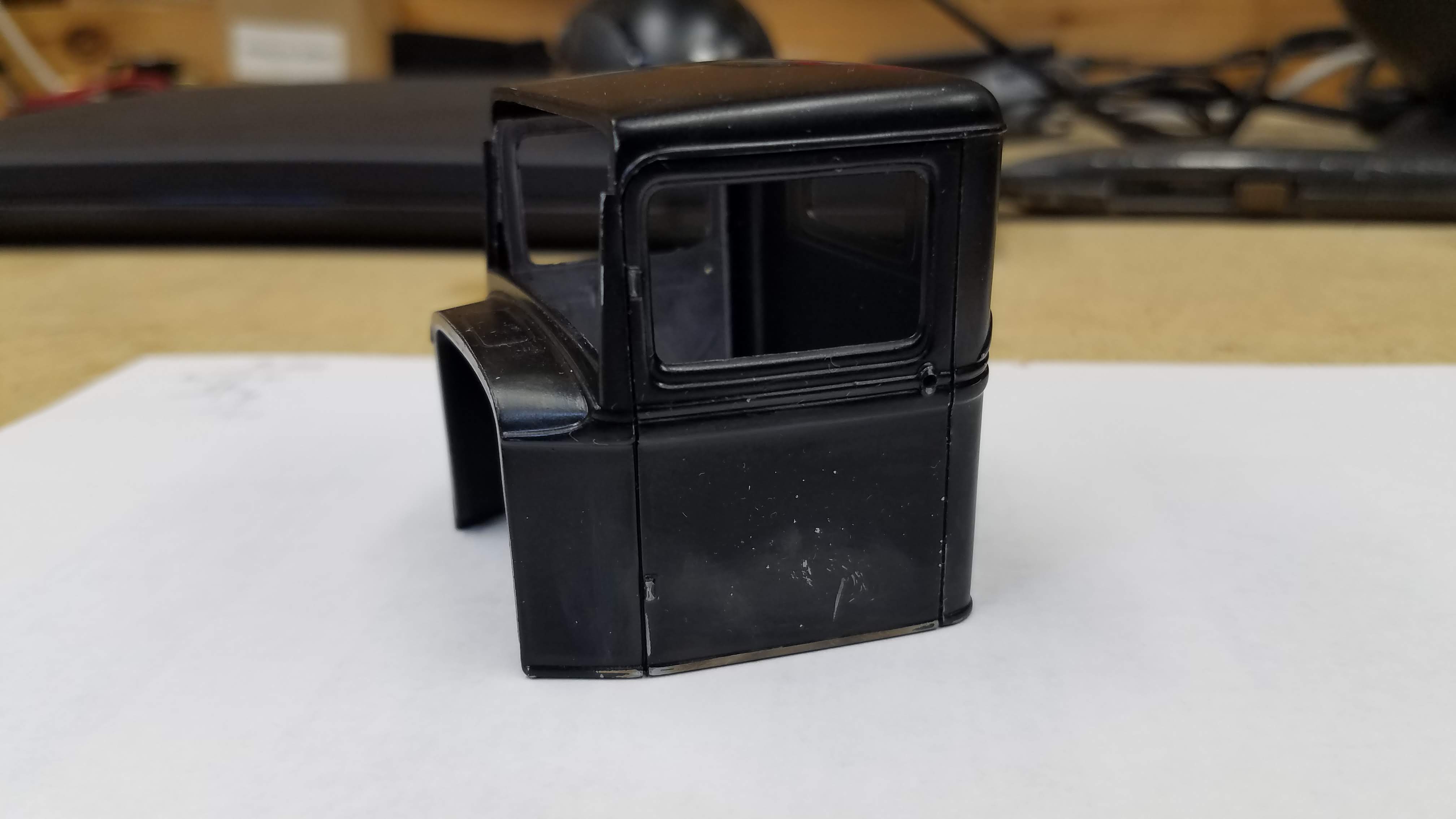
88 of 121
The tailgate was freshly painted and the chains were painted. After the paint thoroughly dries, it too will be aged and dulled.
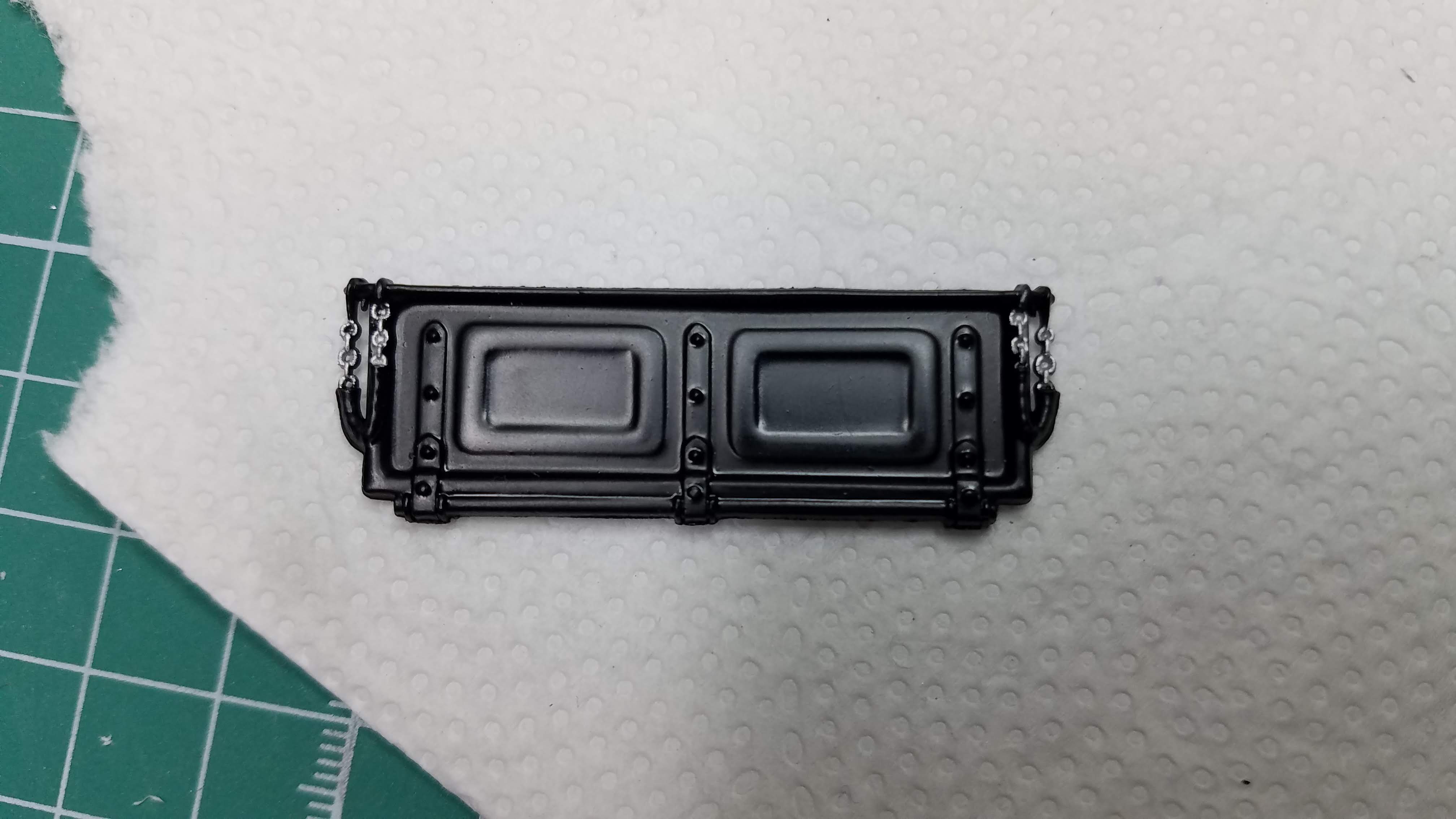
89 of 121
I added some detail to the firewall, but will not be adding wiring and piping. It was also wet sanded and slightly dulled.
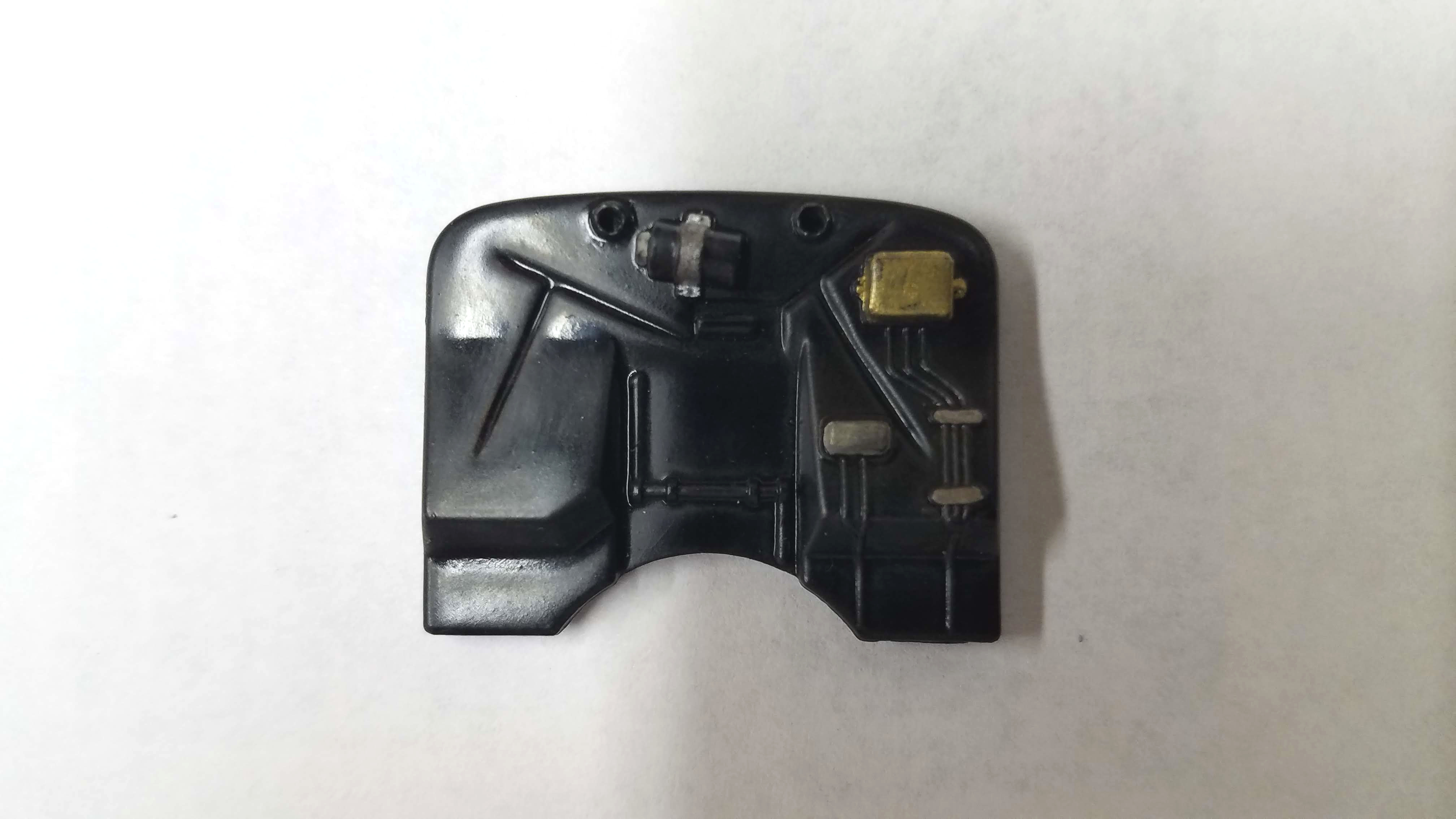
90 of 121
The next two pictures are of the floor pan and seat. The shifter, brake handle and peddles were installed. I decided to use a blanket on the back of the seat. The stuffing coming out of the springs is drier lint. Drier lint was perfect for the seat stuffing.
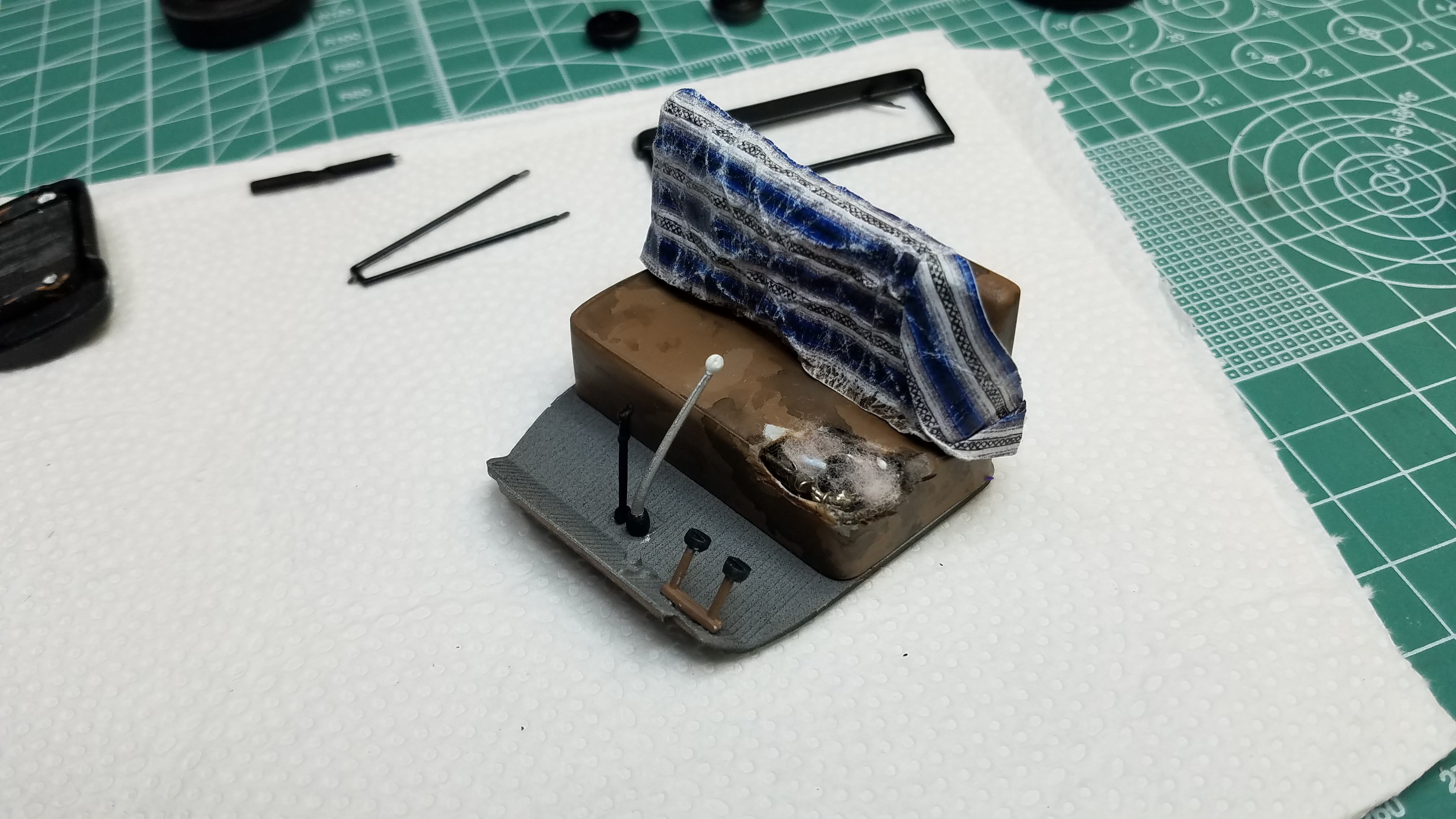
91 of 121
Another view of the floor pan and seat.
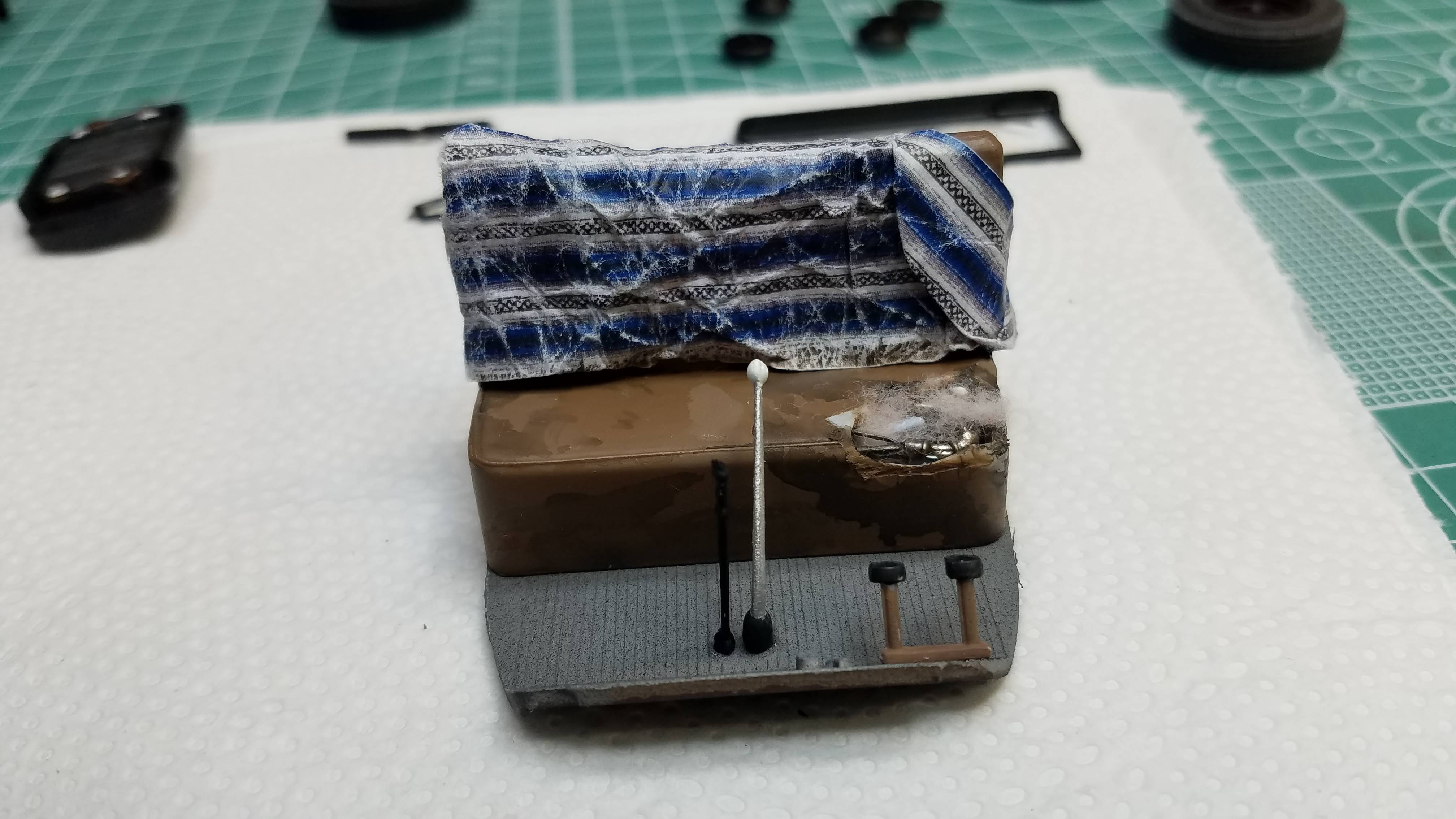
92 of 121
The wheels, tires and axle are mounted to the frame but still need adjustment. I might end up gluing the wheels in place.
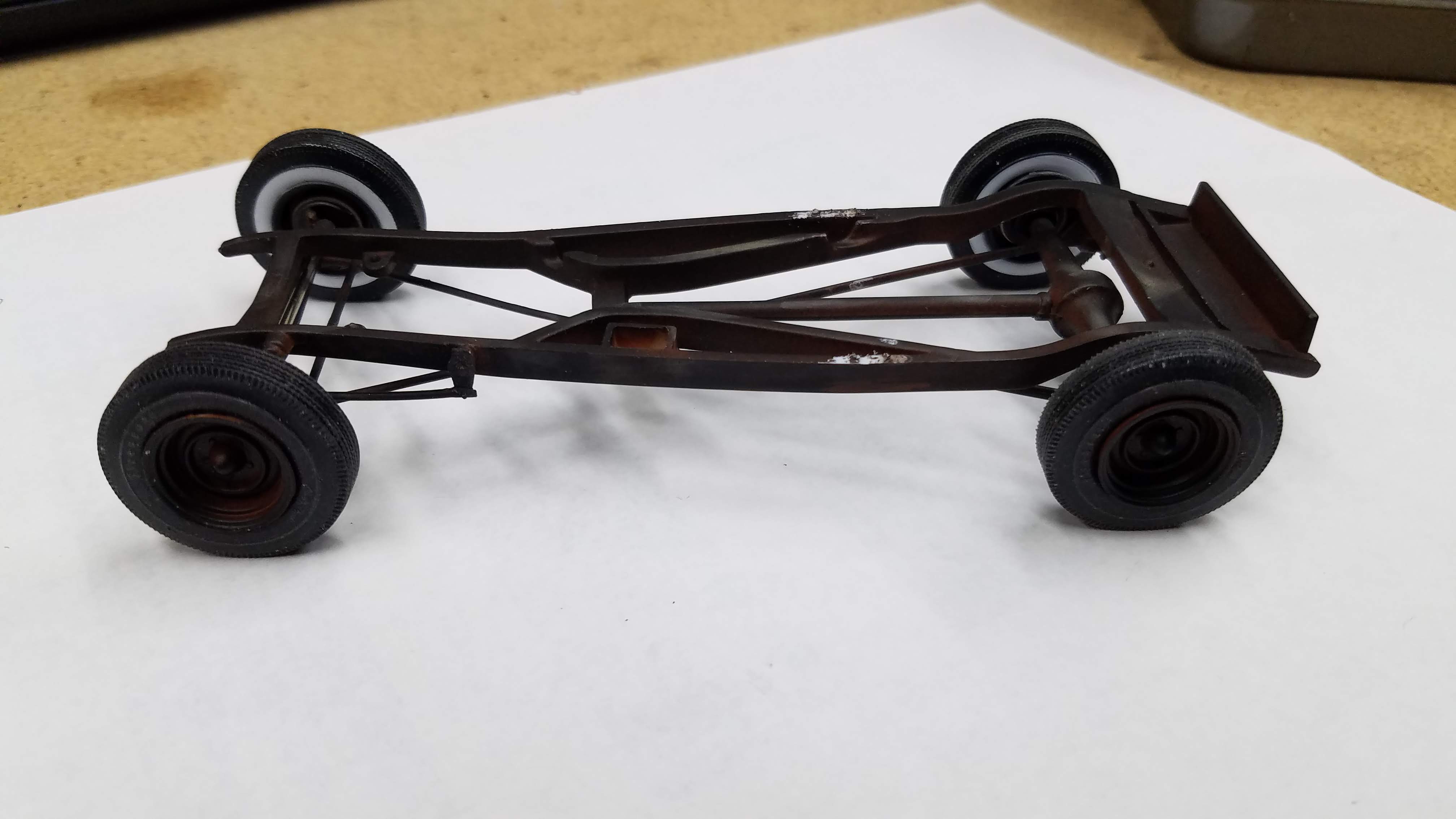
93 of 121
The frame was next glued into the chassis. I'm not too happy how the chassis is glued in. There are only two small points to hold the entire frame into the chassis. I'll see how that works; however, I might have to had some reinforcement.
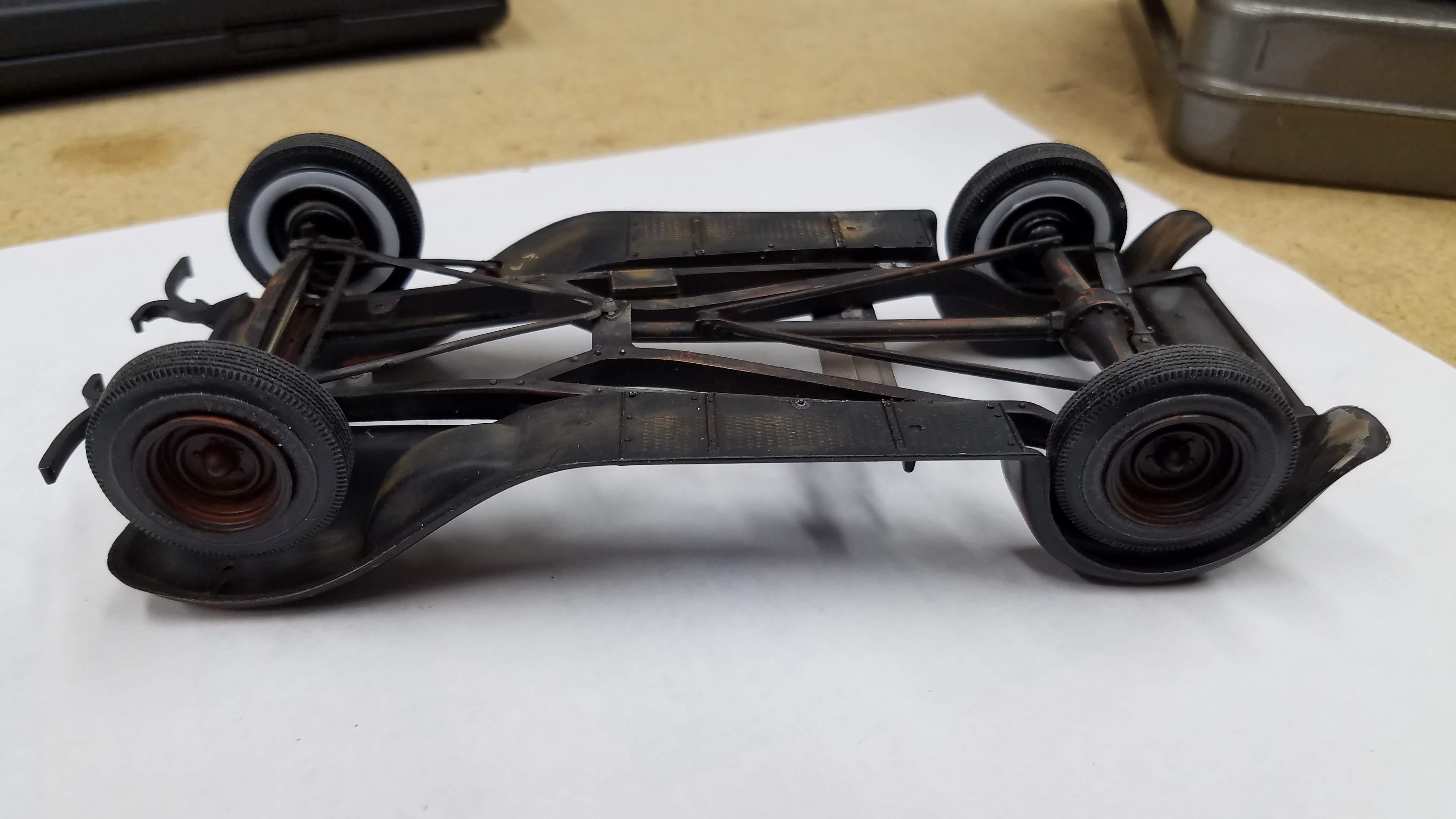
94 of 121
Another shot of the frame mounted in the chassis. I have to do something with the front axle. It is definitely too shiny. I also do not like the way the wheels and tires fit. The tires are constantly sliding away from the rim.
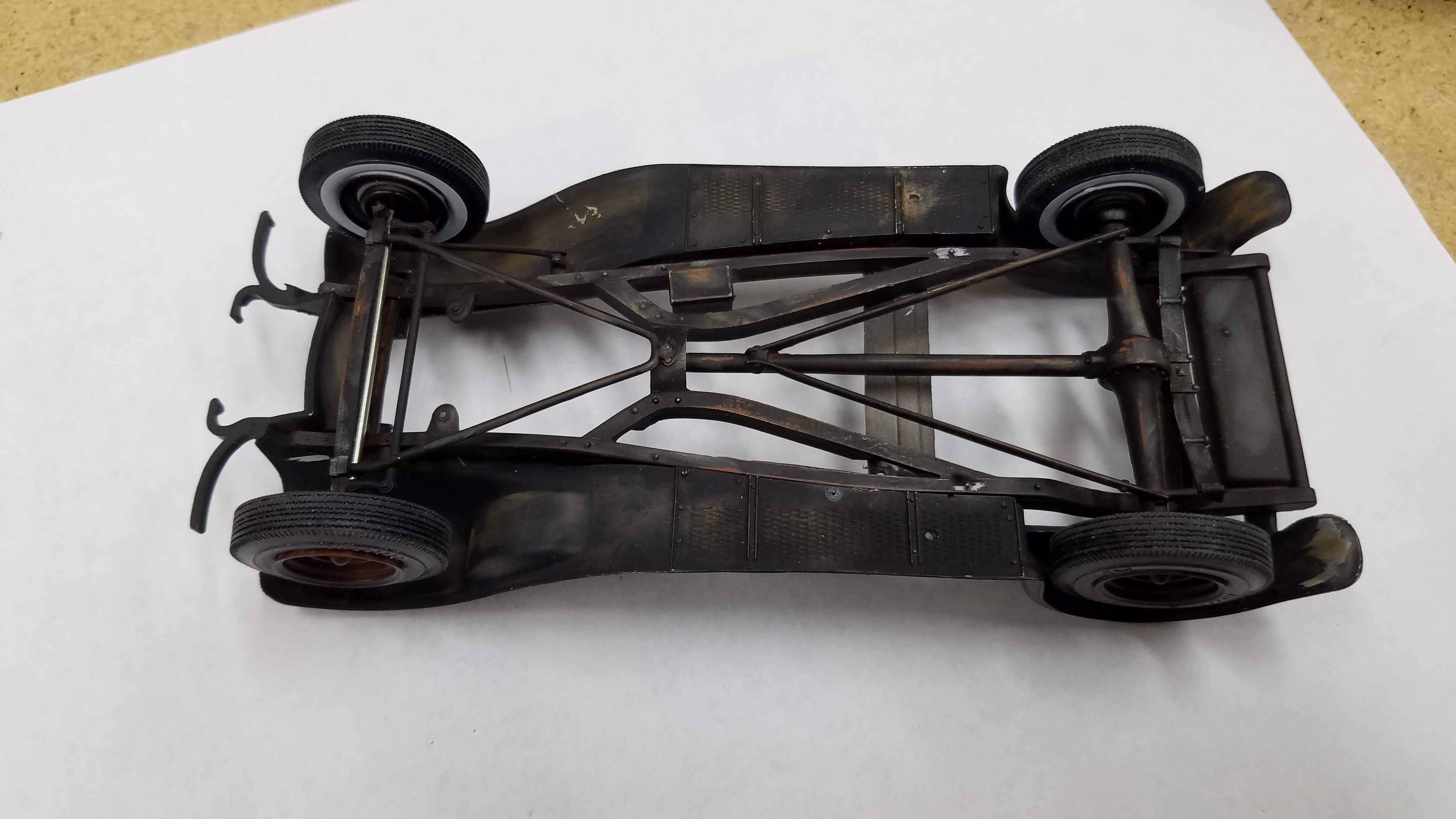
95 of 121
I mounted the grill in the radiator housing and added some various colors of wash to dirty it. I also dulled the tail gate, added some scratches and also Tamiya dry powder dirt, rust and sand. It's difficult to see the dirt in this shot.
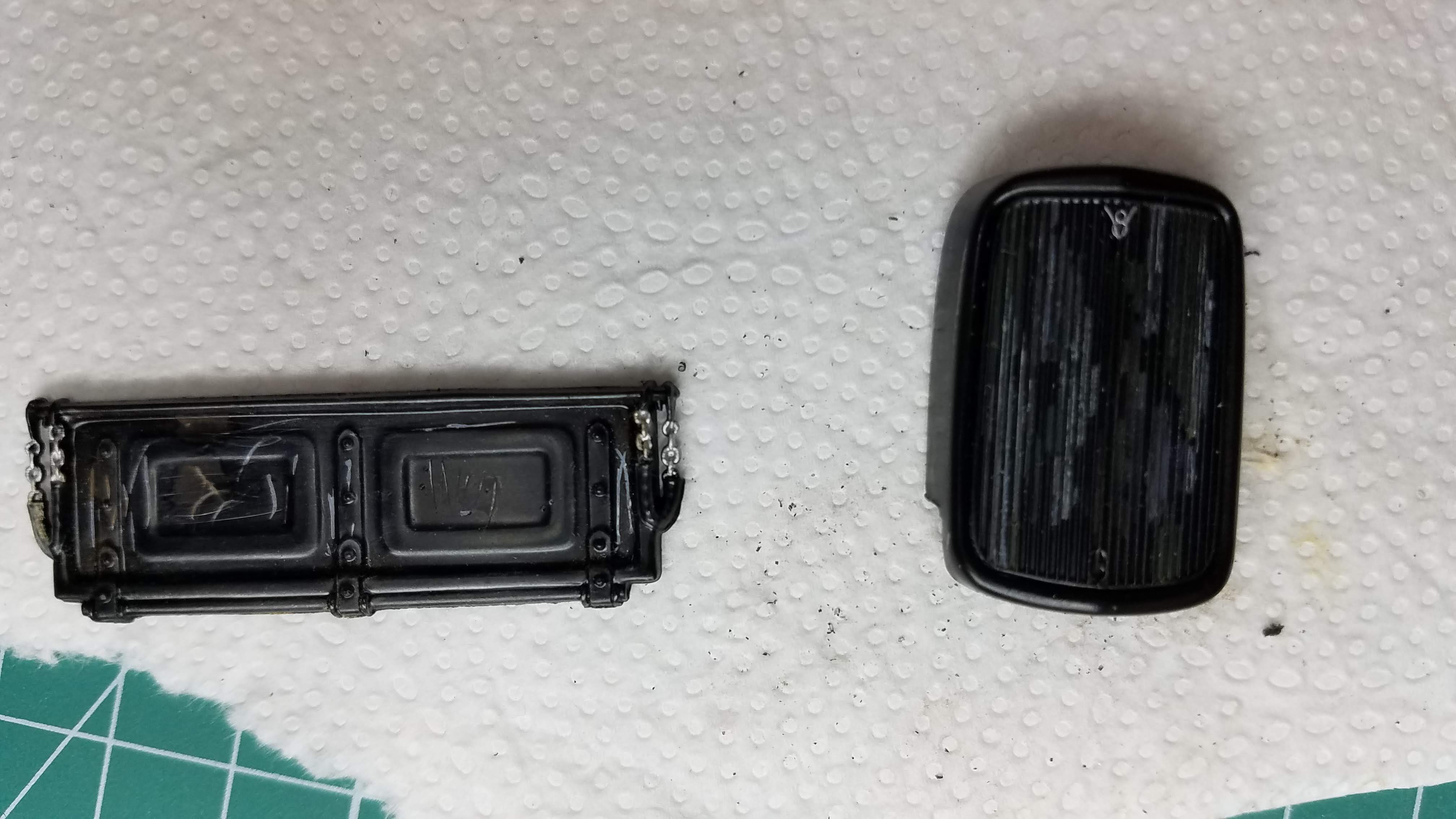
96 of 121
The next two photos are different views of the the '34
Ford Pick Up with the engine mounted and the floor pan
with seat are installed. Again...the seat stuffing is
clothe drier lint.
The glass is installed in the cab and waiting for the
glue to dry. The radiator hoses have been bent and fit and
the engine shroud has been aged. The firewall, the dash
board, the radiator housing and grill need to be mounted.
Work will then start on the wooden bed that will be
installed.
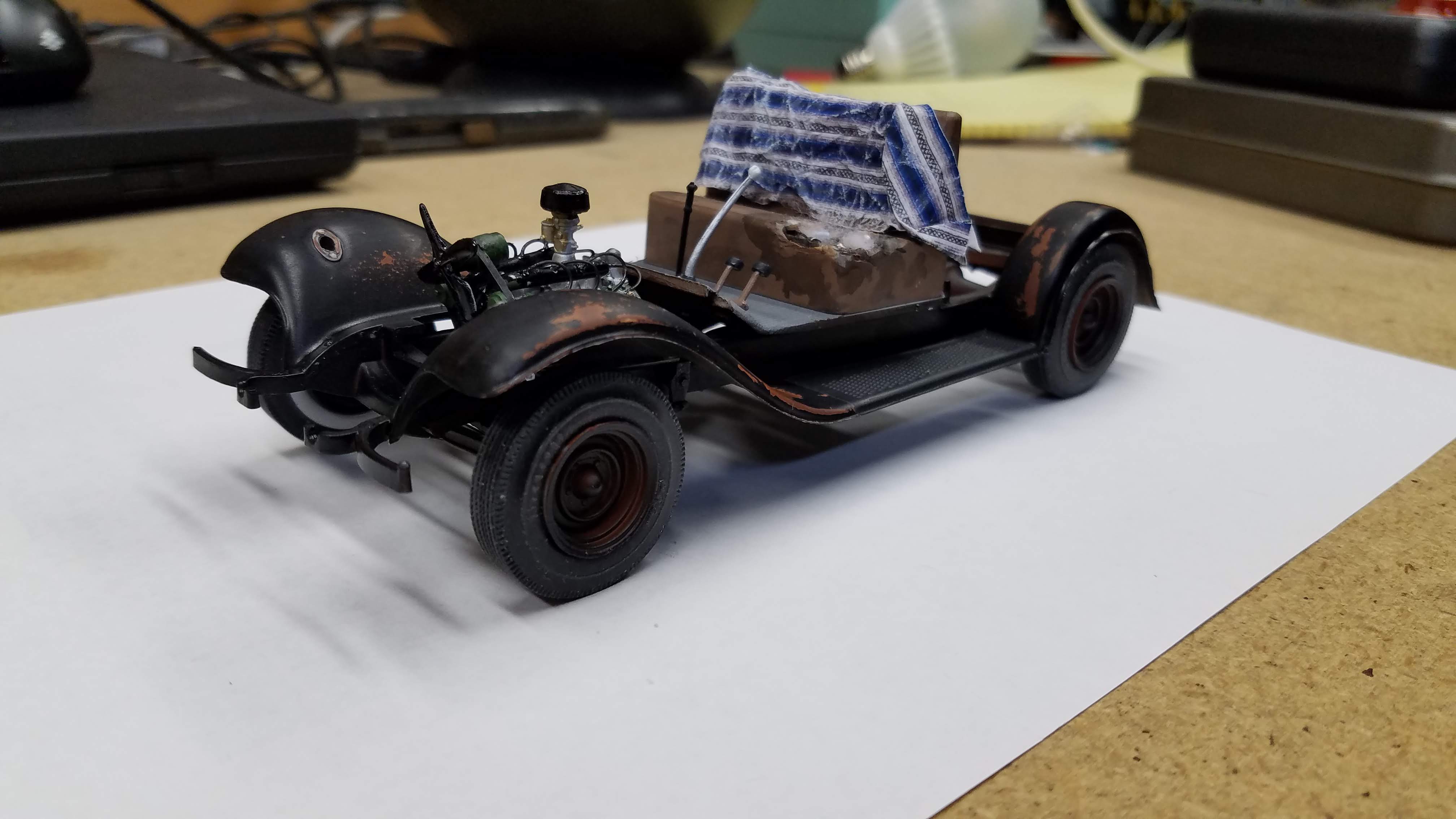
97 of 121
The next photo is a different view of the the '34
Ford Pick Up with the engine mounted and the floor pan
with seat are installed. Again...the seat stuffing is
clothe drier lint.
The glass is installed in the cab and waiting for the
glue to dry. The radiator hoses have been bent and fit and
the engine shroud has been aged. The firewall, the dash
board, the radiator housing and grill need to be mounted.
Work will then start on the wooden bed that will be
installed.
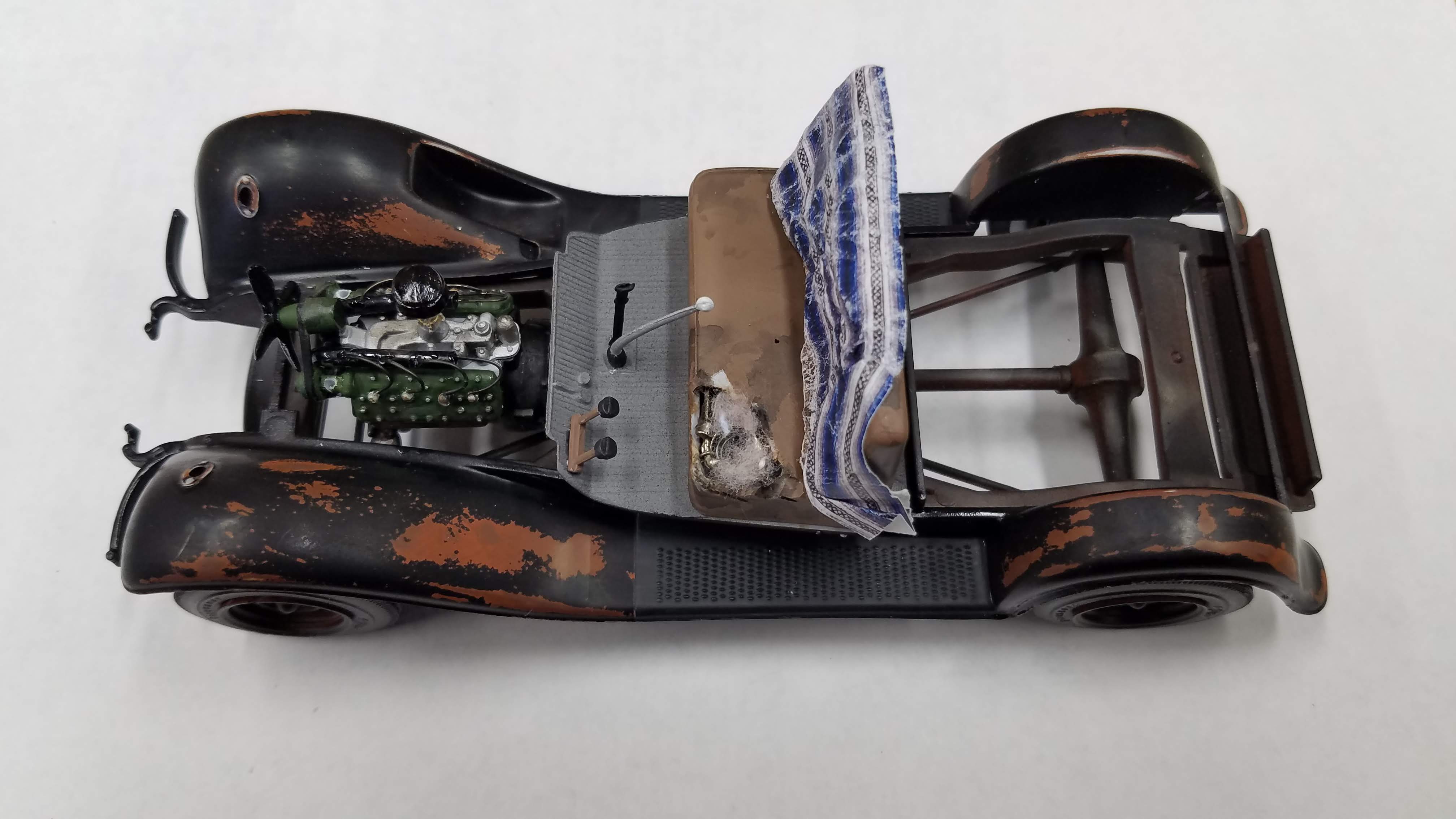
98 of 121
Last view of the the '34 Ford Pick Up with the engine
mounted and the floor pan with seat are installed.
Again...the seat stuffing is clothe drier lint.
The glass is installed in the cab and waiting for the
glue to dry. The radiator hoses have been bent and fit and
the engine shroud has been aged. The firewall, the dash
board, the radiator housing and grill need to be mounted.
Work will then start on the wooden bed that will
be installed.
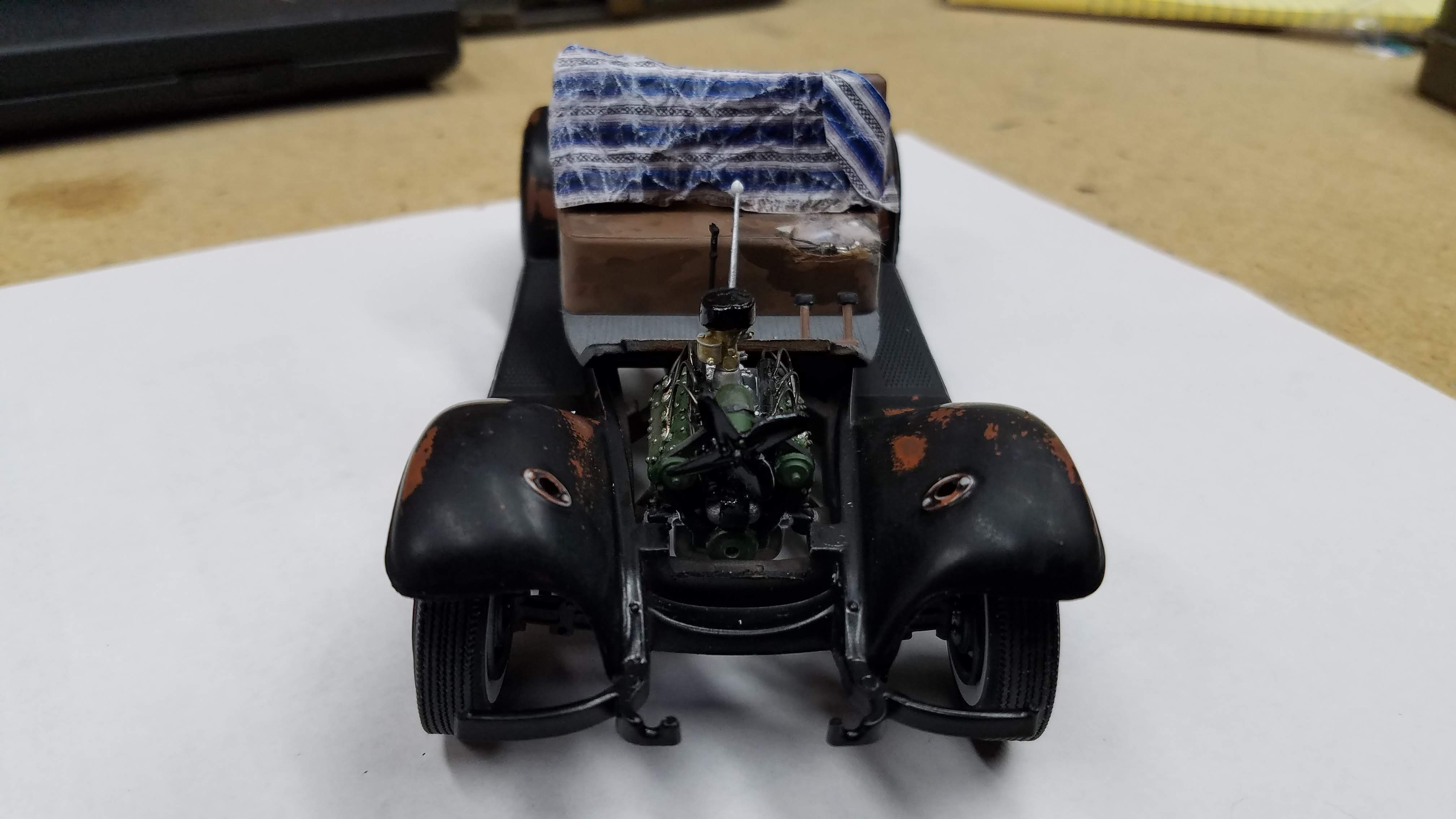
99 of 121
The dashboard, firewall, windshield with frame and rear window are installed. I really dirtied up the windshield and showing that the wiper was used. This truck is used at a coal company and everything is always cruddy.
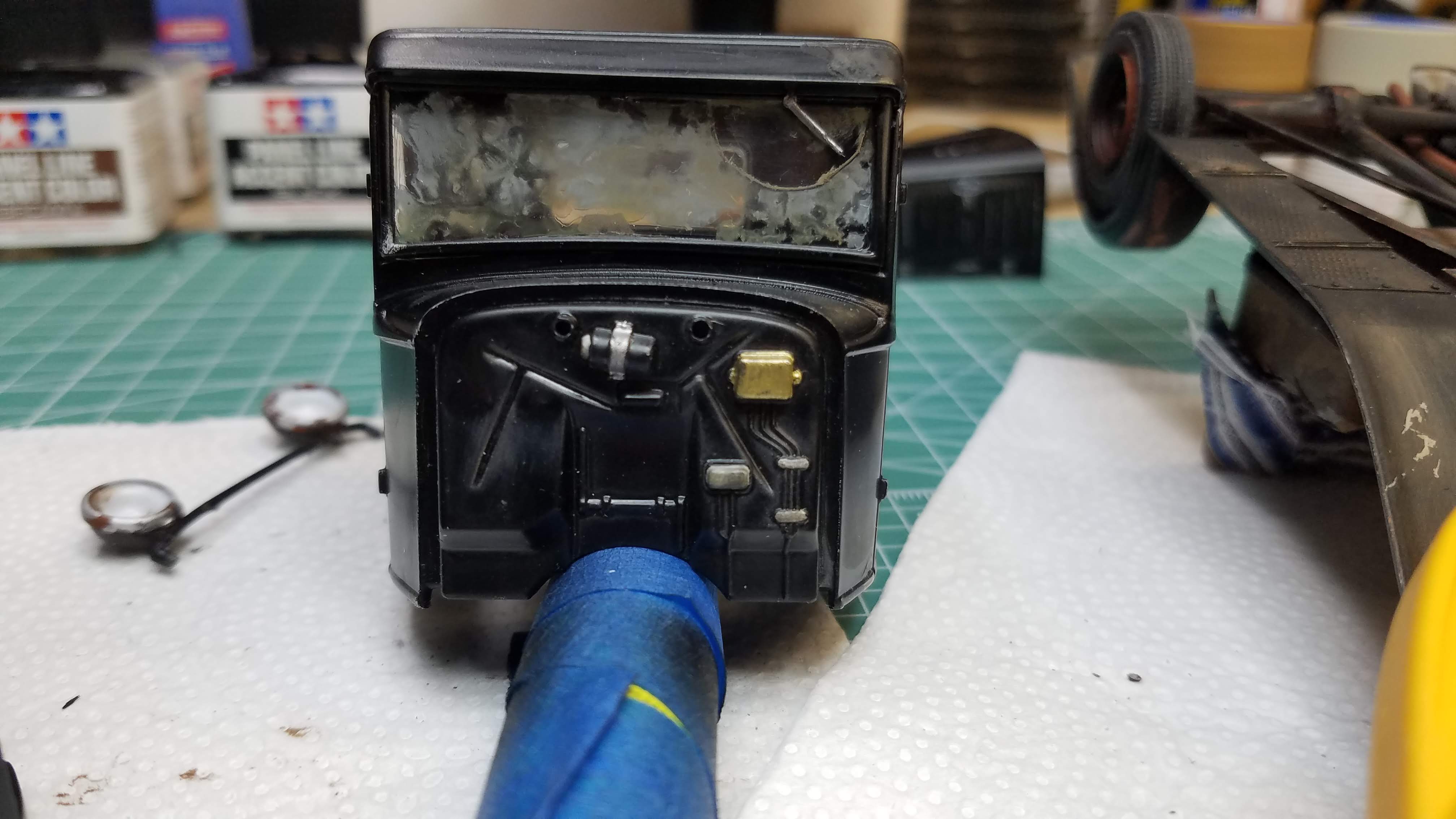
100 of 121
I used 7mm wide balsa wood in strips to form the bottom of the truck bed. I used Tamiya Dark Brown, Tan, Red Brown, and Black panel line wash to dirty the wood. The wood was not glued in the bed because it fit very tightly between the walls of the bed.
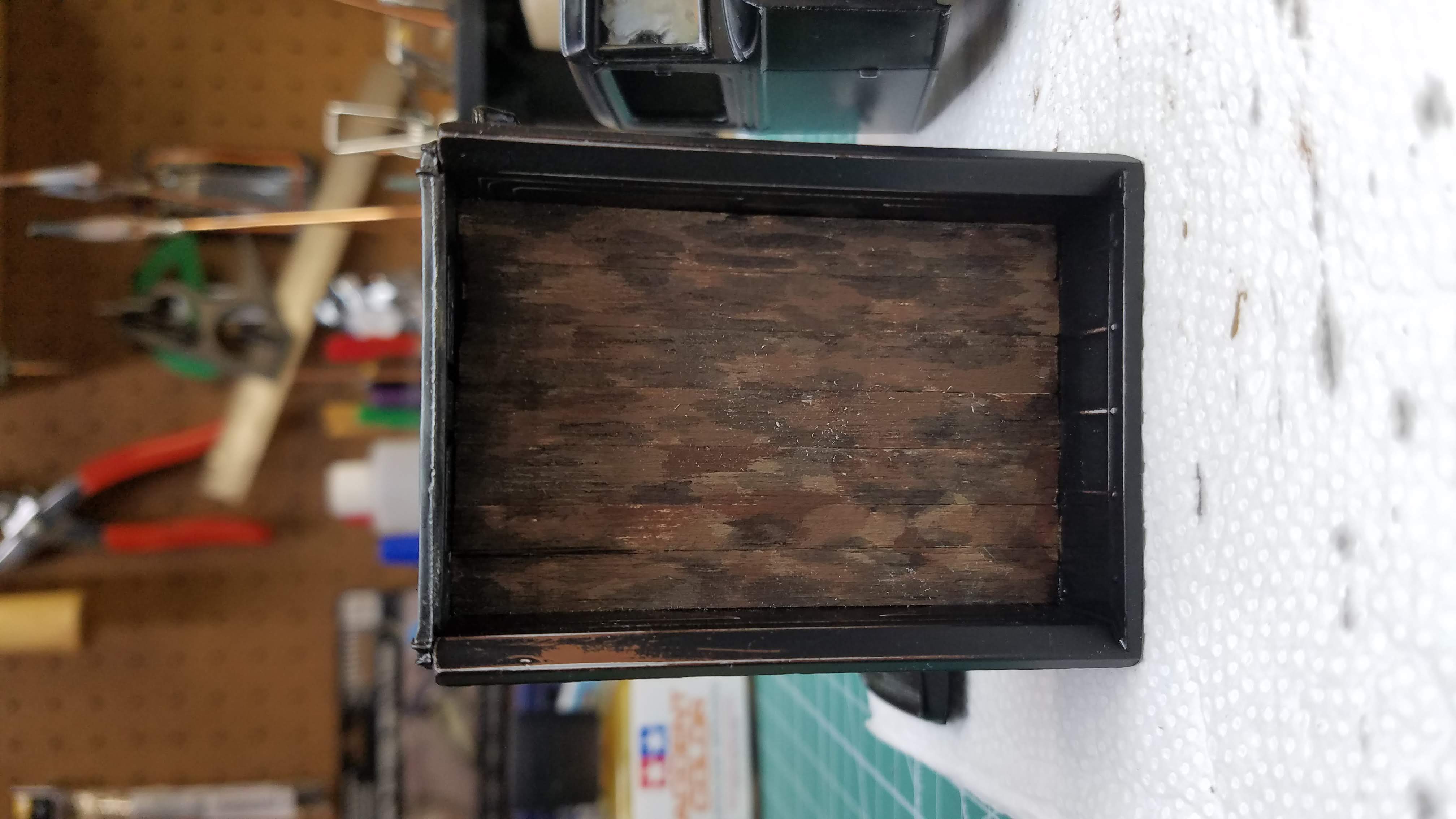
101 of 121
I had forgot to install the exhaust pipe and muffler, so I had to rip the floor pan off the chassis and loosen the frame from the chassis. After the exhaust pipe and muffler was installed, everything was put back together. The method AMT used to mound the front wheels is horrible! There were two small, plastic nubs on the ends of the front suspension that matched two holes in the inner wheel section. After glue was applied to hold the inner wheels in place, there wasn't enough surface to hold the wheels to the suspension. After one move of the frame, those small nubs sheered off and naturally, the wheels with them. I modified the mount by redrilling the holes in the inner wheel. I than attempted to drill the suspension where the nubs where to insert some small wire pins. That did not work. The suspension is too small for the drill to work. I ended up scrapping some paint and installing the metal axle. To make the axle fit, the holes in the inner wheels had to be drilled out a bit bigger and deeper. I then installed the wheels and axle, and using a clamp to hold the wheels in place, glued them to the front suspension with Tamiya extra thin glue followed by some Loctite. I have not removed the clamps as of this posting, so...I don't know if it worked. If it holds, the axle will get dirtied.
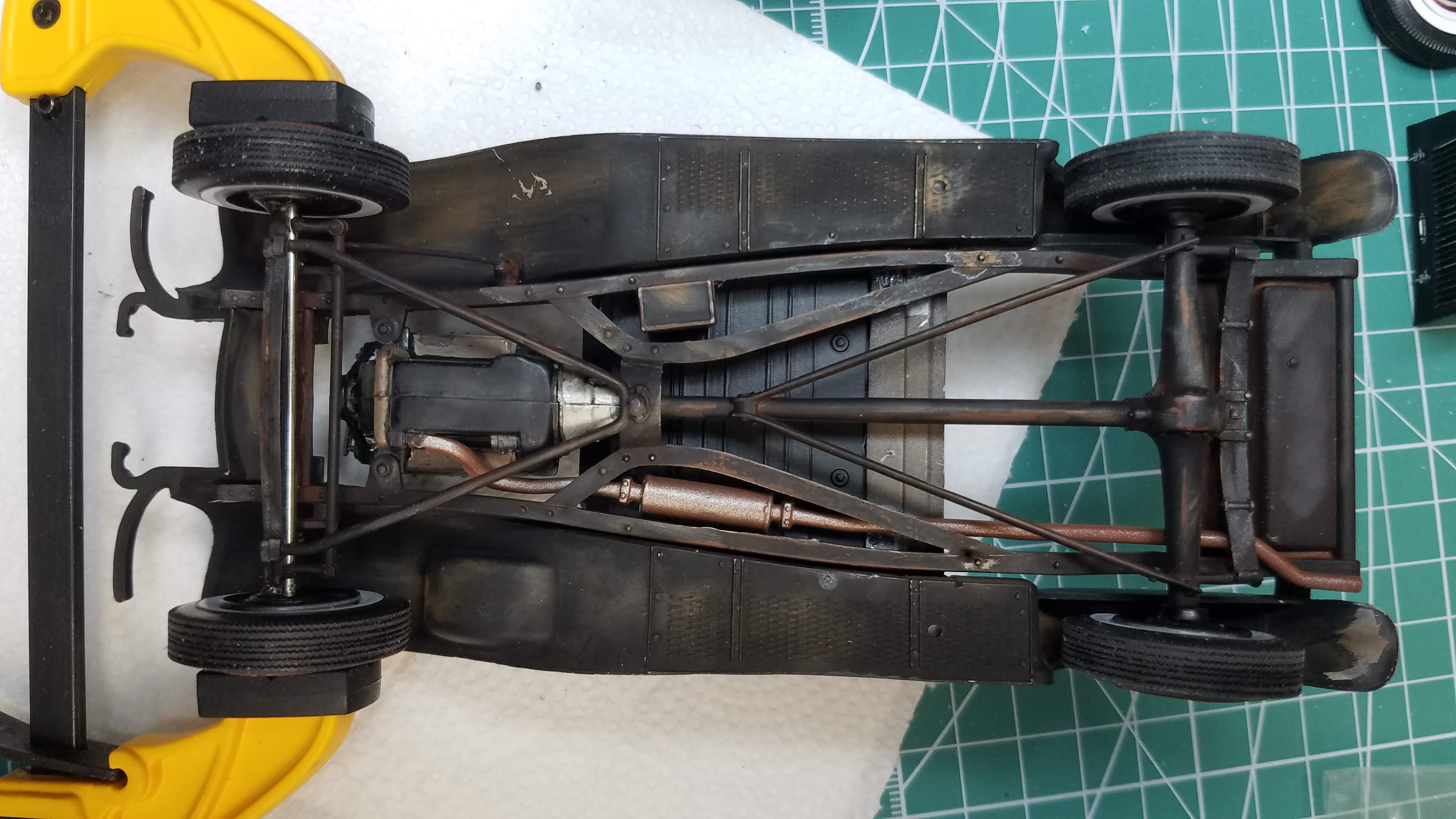
102 of 121
The next two photos show the engine shroud sides. I used a Model Master Ford Engine blue and thinned it to make a wash, than filled in the Ford emblem. After the wash dried, I used a silver sharpie to highlight the raised portions. I purposely skipped a couple of places and allowed the sharpie to go inside in an attempt to show wear. I also used the silver sharpie to do the engine shroud hold-down pins and the lift handle. Again, attempting to show some wear.
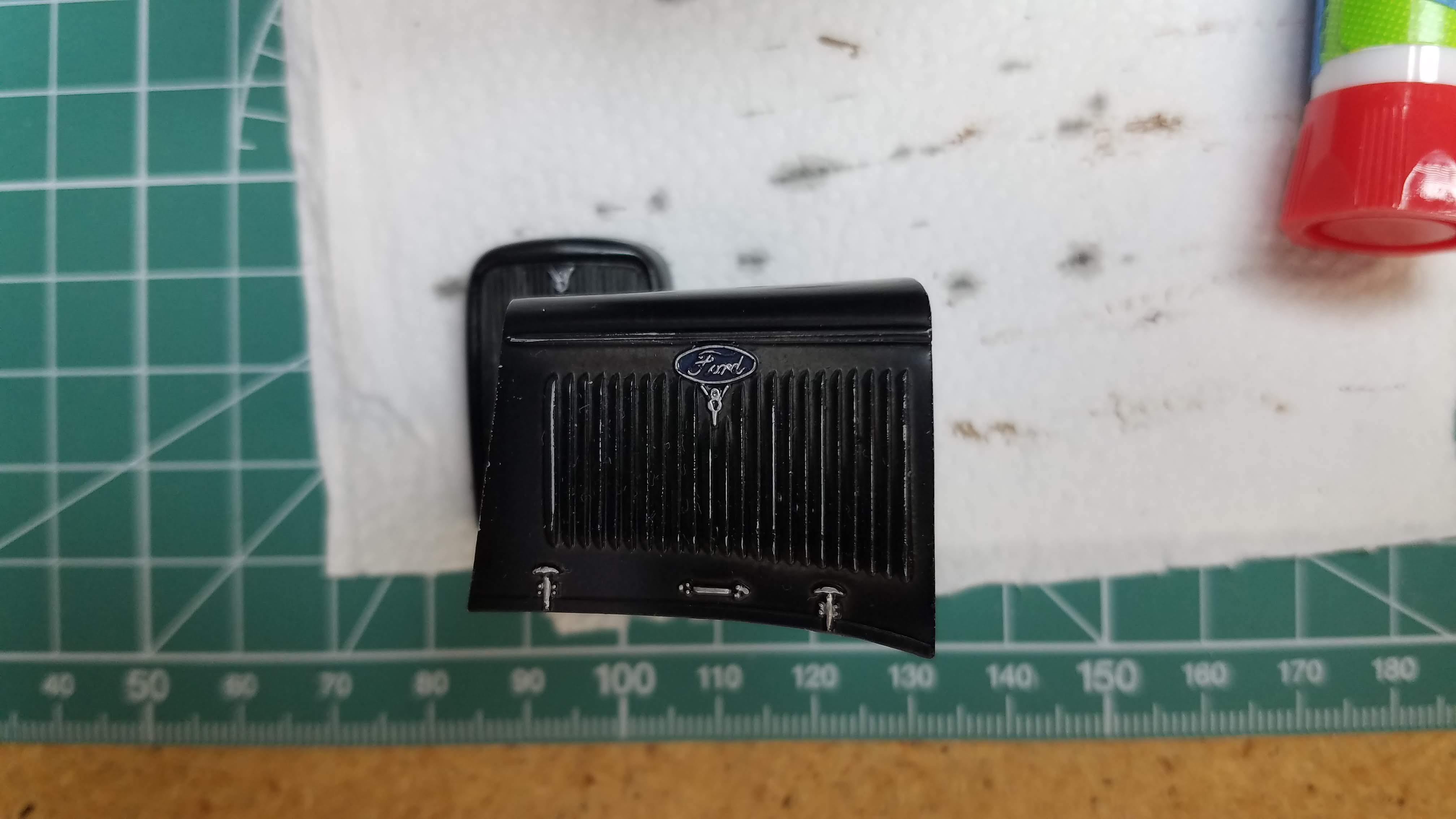
103 of 121
Engine shroud sides. I used a Model Master Ford Engine blue and thinned it to make a wash, than filled in the Ford emblem. After the wash dried, I used a silver sharpie to highlight the raised portions. I purposely skipped a couple of places and allowed the sharpie to go inside in an attempt to show wear. I also used the silver sharpie to do the engine shroud hold-down pins and the lift handle. Again, attempting to show some wear.
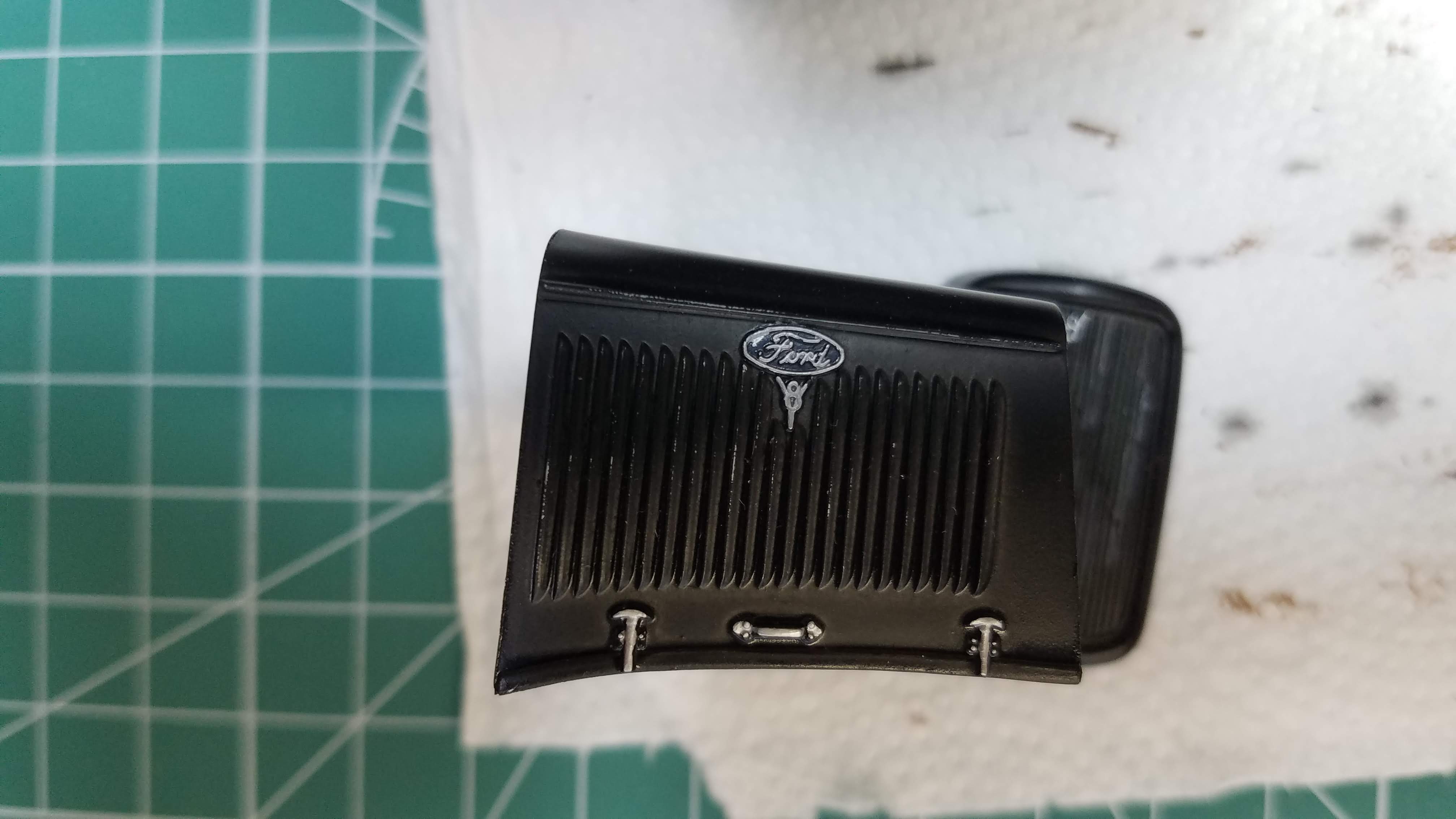
104 of 121
These are the last three parts that need to be assembled. If the front wheels hold, the cab, bed, radiator and hoses will be installed. Also the front bumper, head lights and horn. The last thing will be the side mirror and door handles. All of these items are ready to go. I also have an old Pennsylvania license plate that I'll be photographing and scaling it down to mount on the license plate panel.
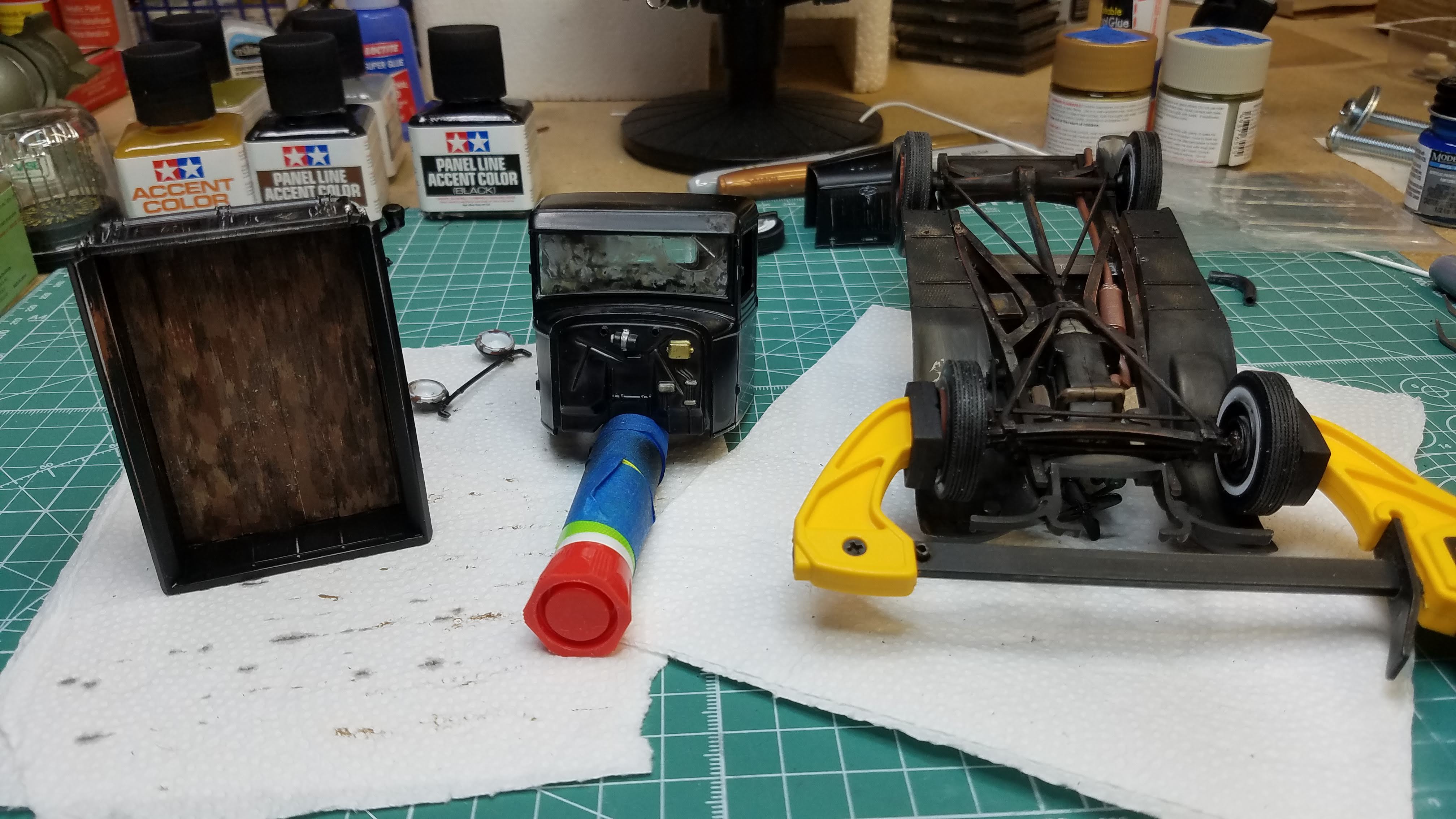
105 of 121
The radiator housing, grill and radiator were mounted and glued in place.
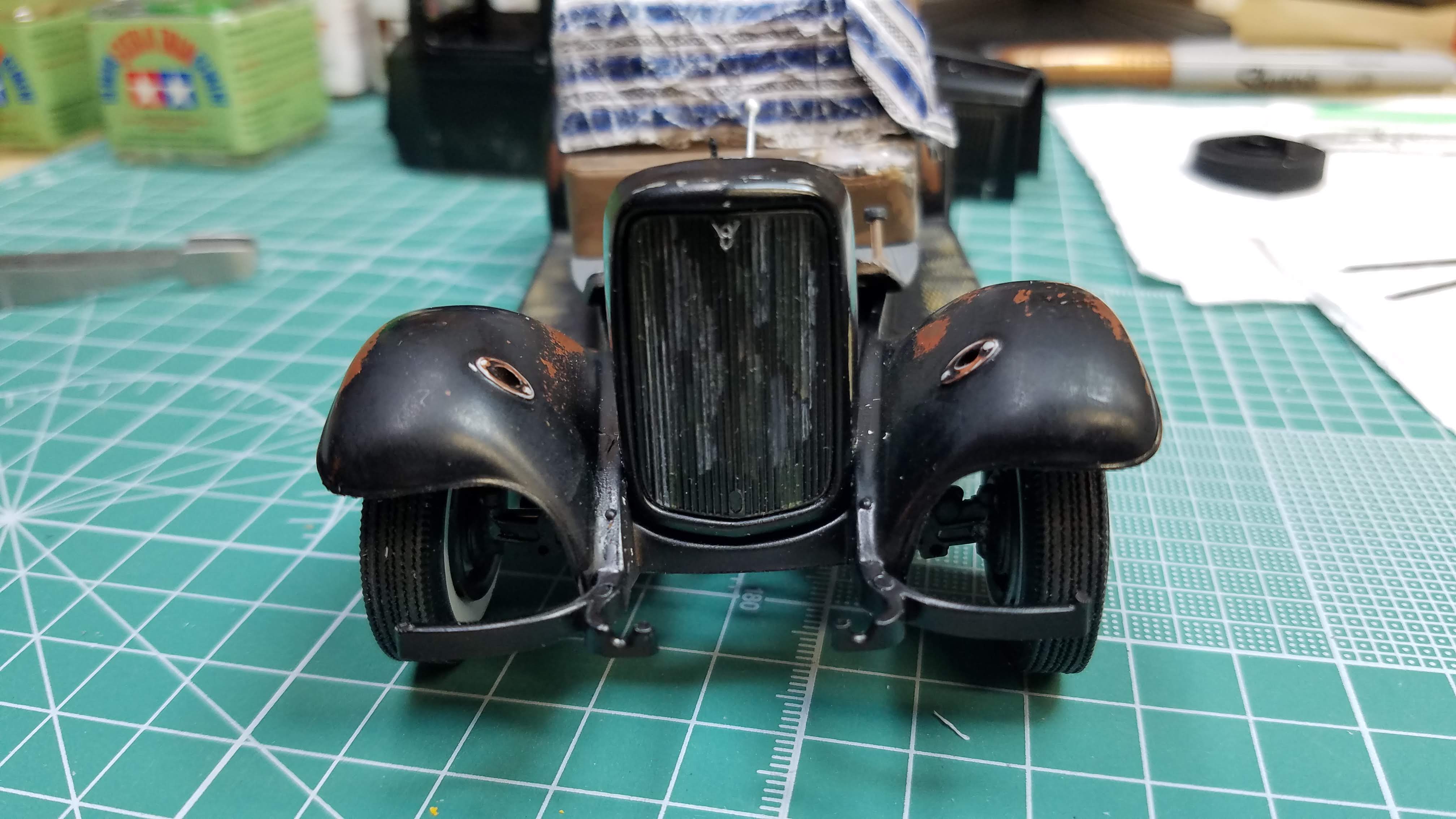
106 of 121
The upper radiator hoses were added. They need to be touched up a-bit. Also, I should have installed hose clamps before installing the hoses. Getting them on now is going to be difficult, if not impossible. Oh-well, a learning experience.
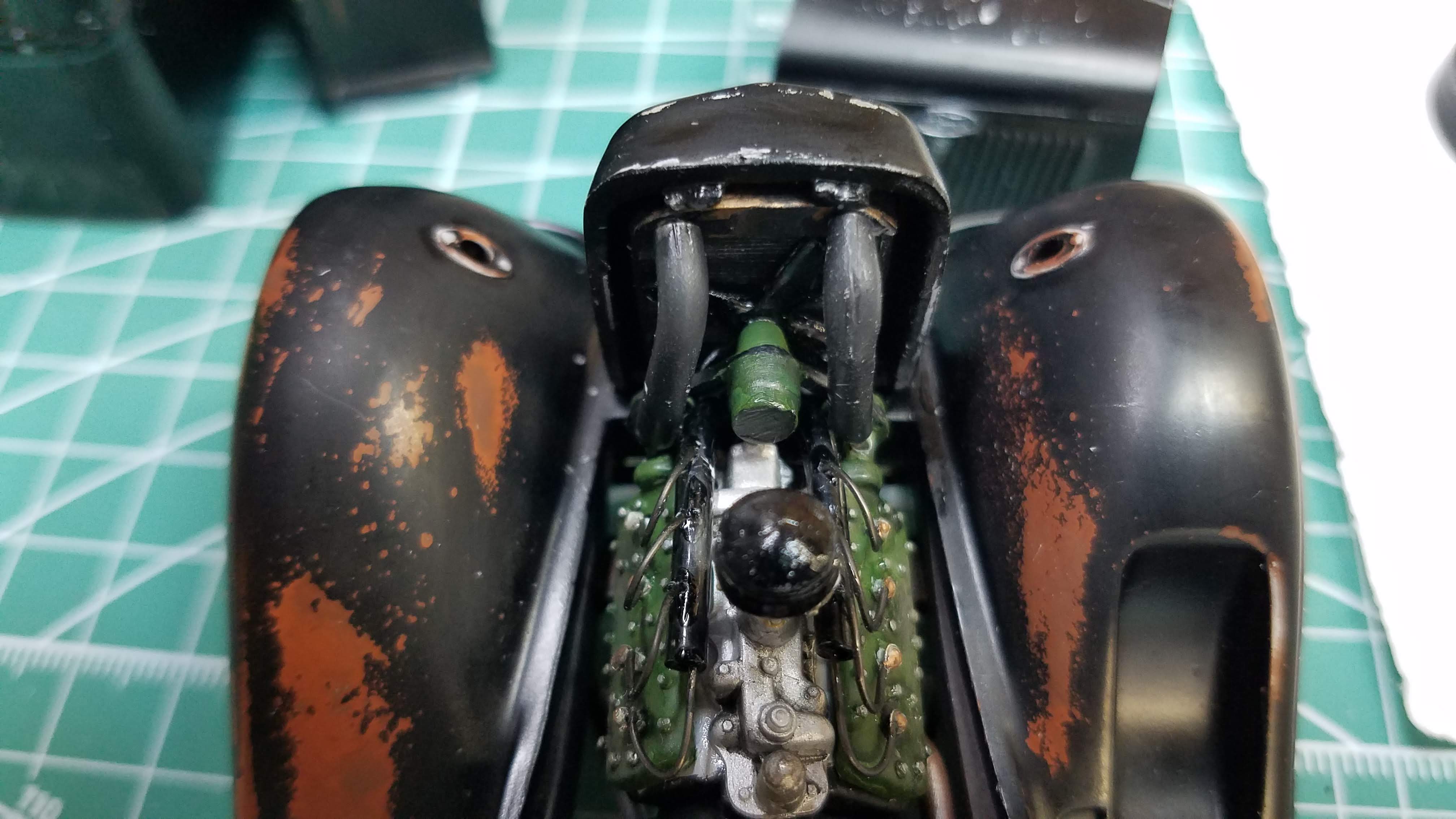
107 of 121
The license plate was added. I had a PA plate from 1954, the year I was born. I took a picture of it and using Gimp I increased the number of pixels to 32,000 and then resized the image to the 1/25th scaled size of the actual plate (0.50"x0.289"). I then cut that size out of a sheet of styrene and using Elmer's School purple stick glue, glued it to the styrene. The plate was then glued to the license plate holder that is built into the tail light. I also used some transparent red and painted the tail light.
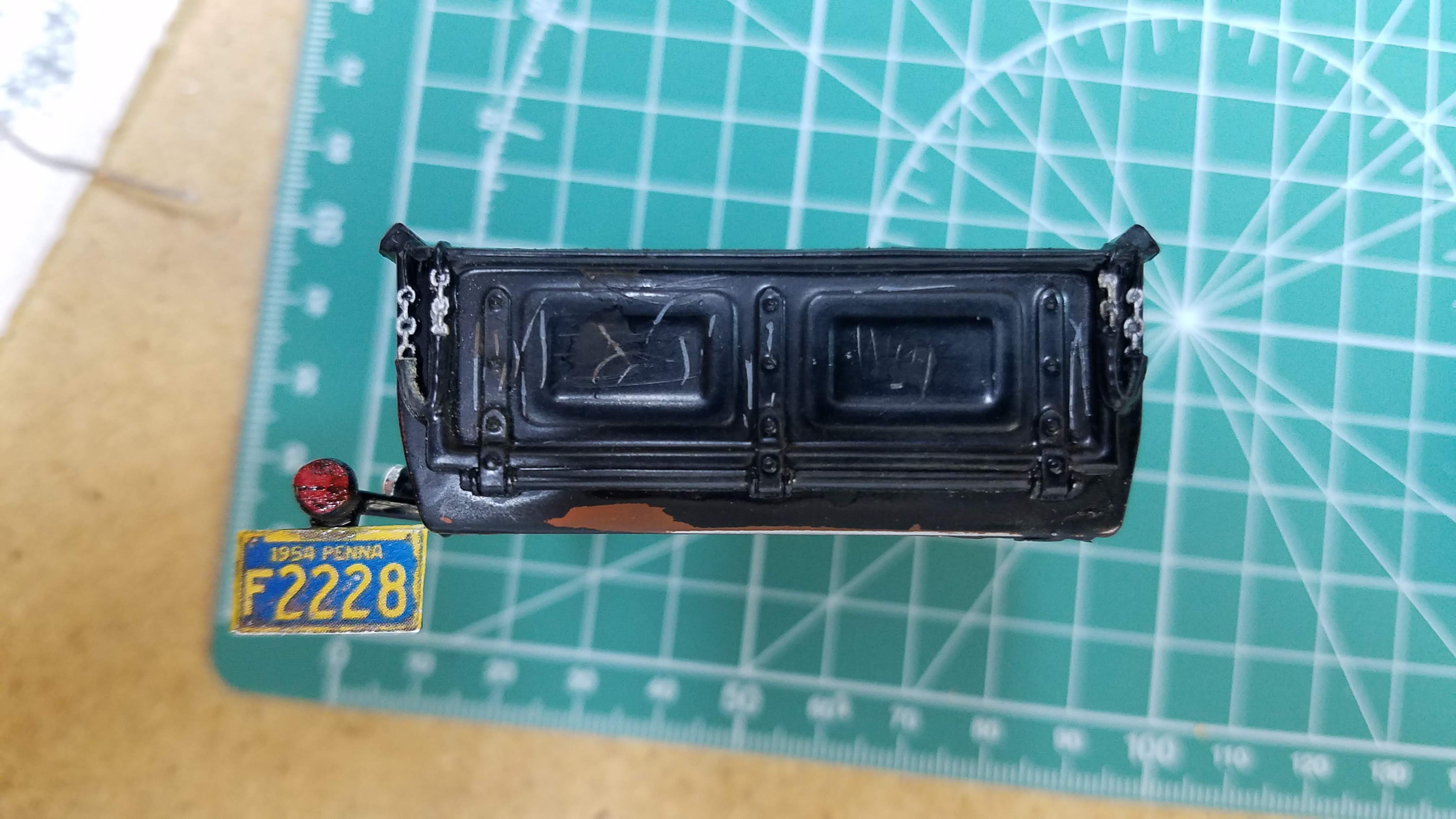
108 of 121
THE '34 FORD PICKUP IS DONE!!!
I learned a ton of new techniques, new to me, by doing
this build. The kit was a bear. The molds must have been
old and nothing fit well and most parts needed some
sort of modification. I also learned a lot about painting
with acrylics, using aging and rusting techniques and
using the Tamiya weathering kits.
Please enjoy the following photos of the completed build.
There will no text description with these photos.
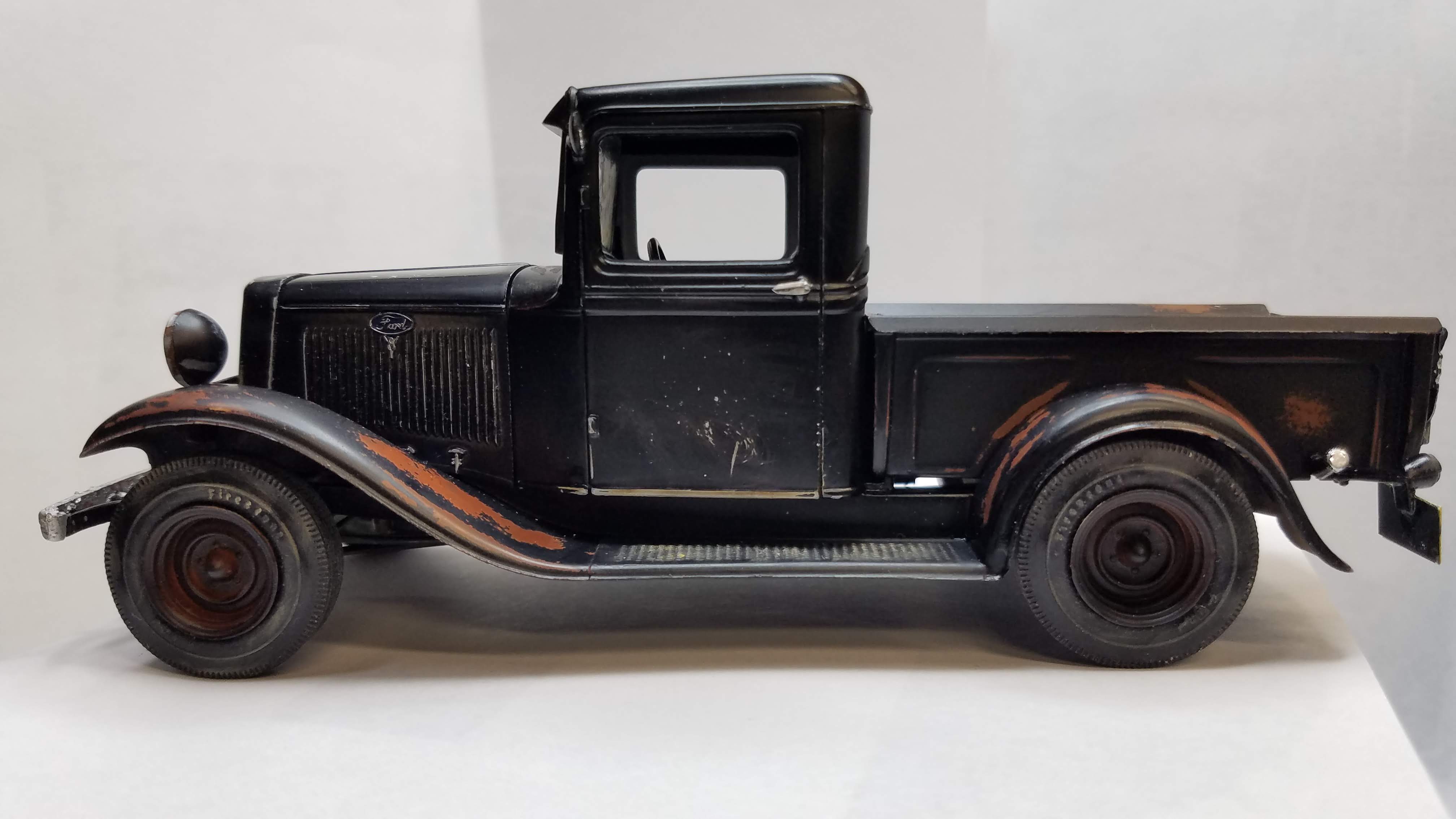
109 of 121
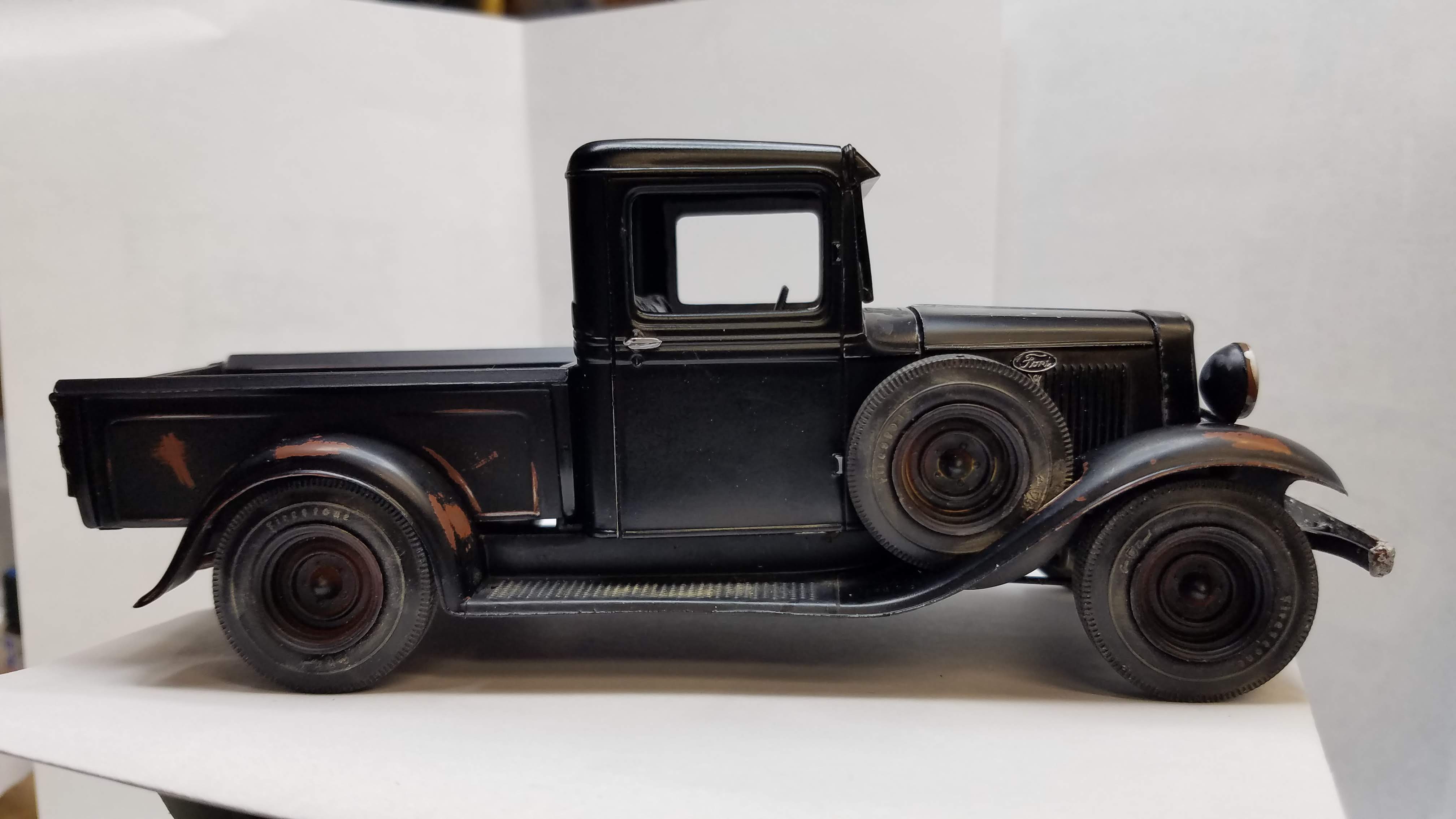
110 of 121
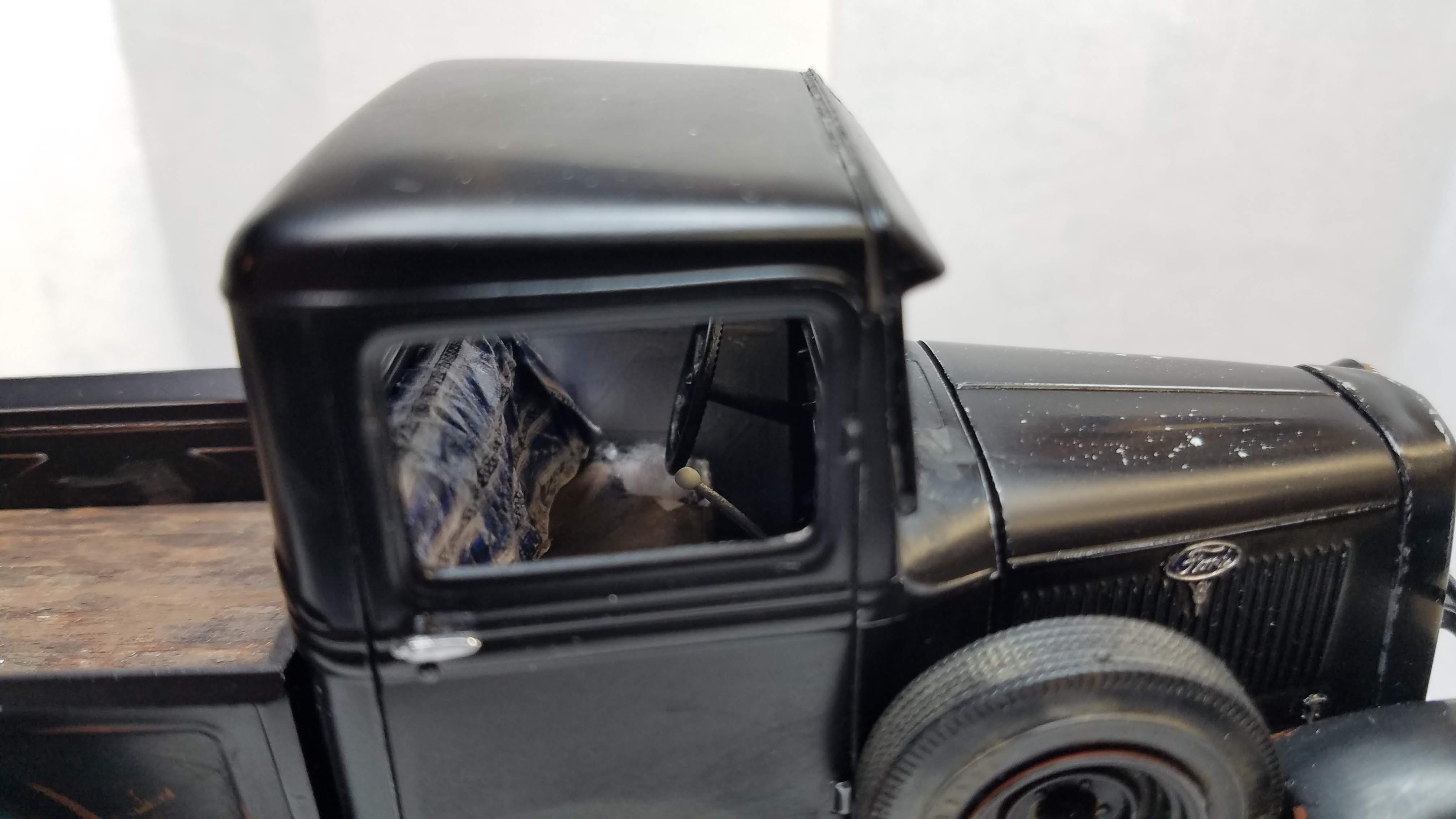
111 of 121
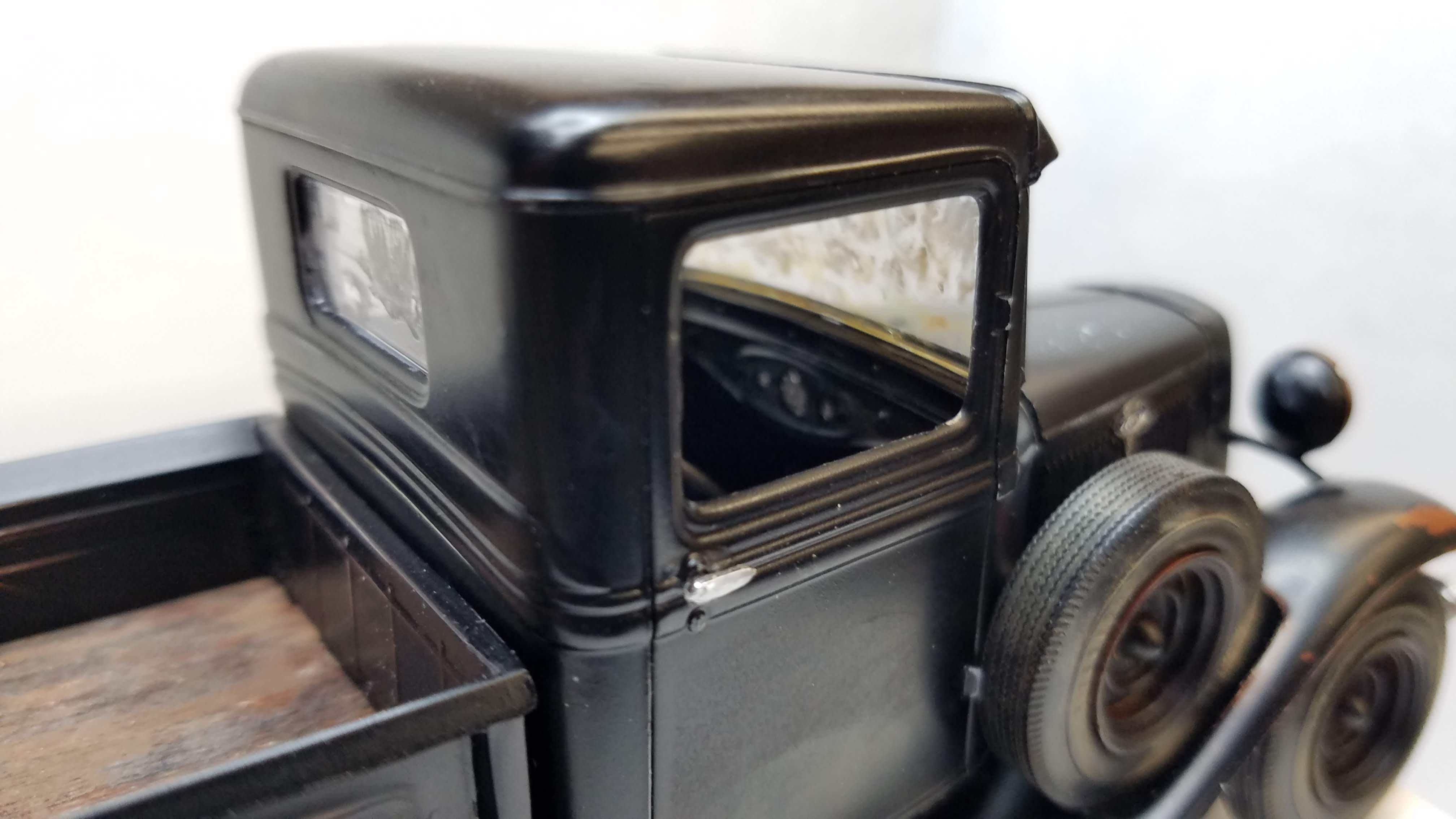
112 of 121
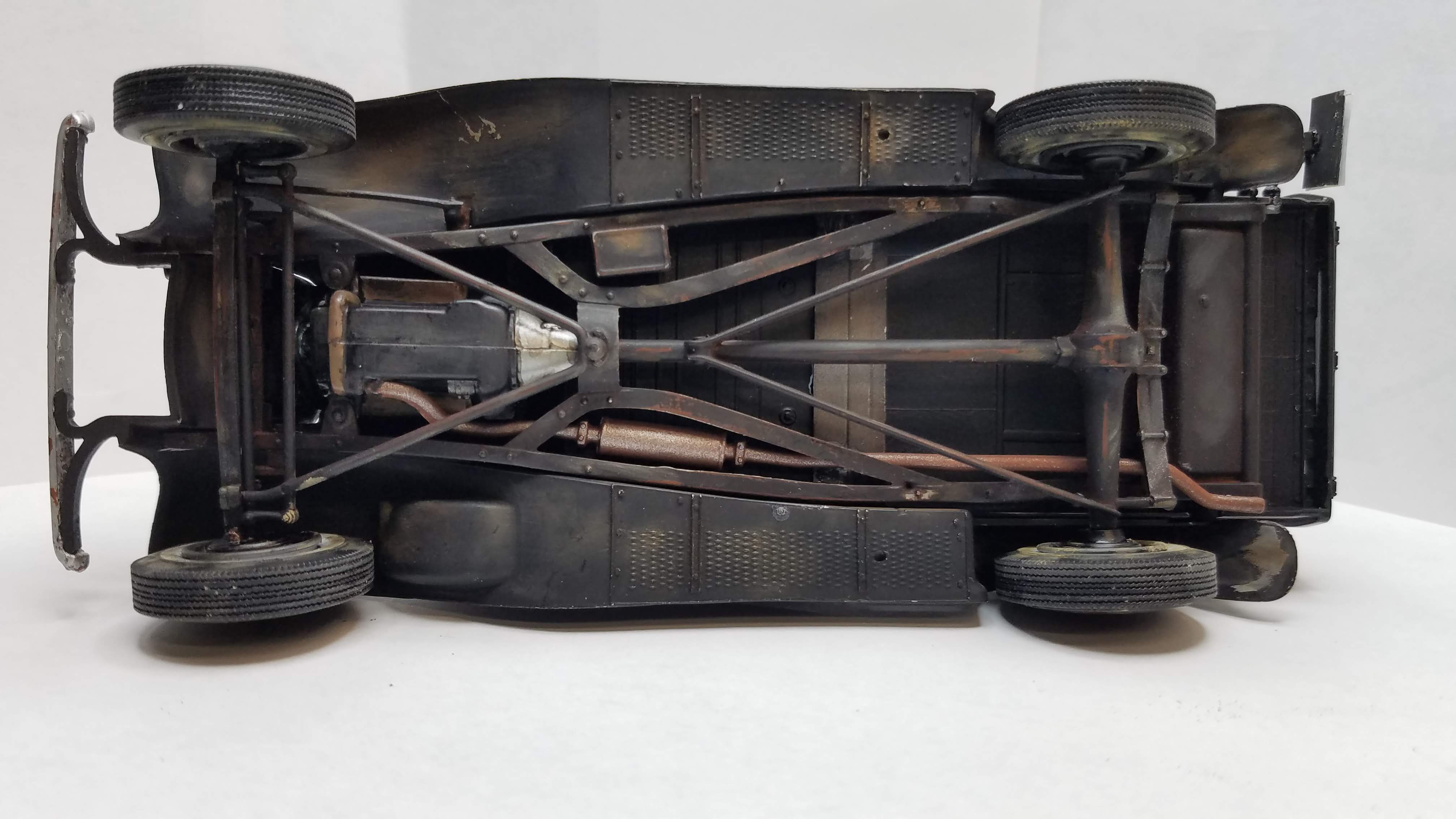
113 of 121
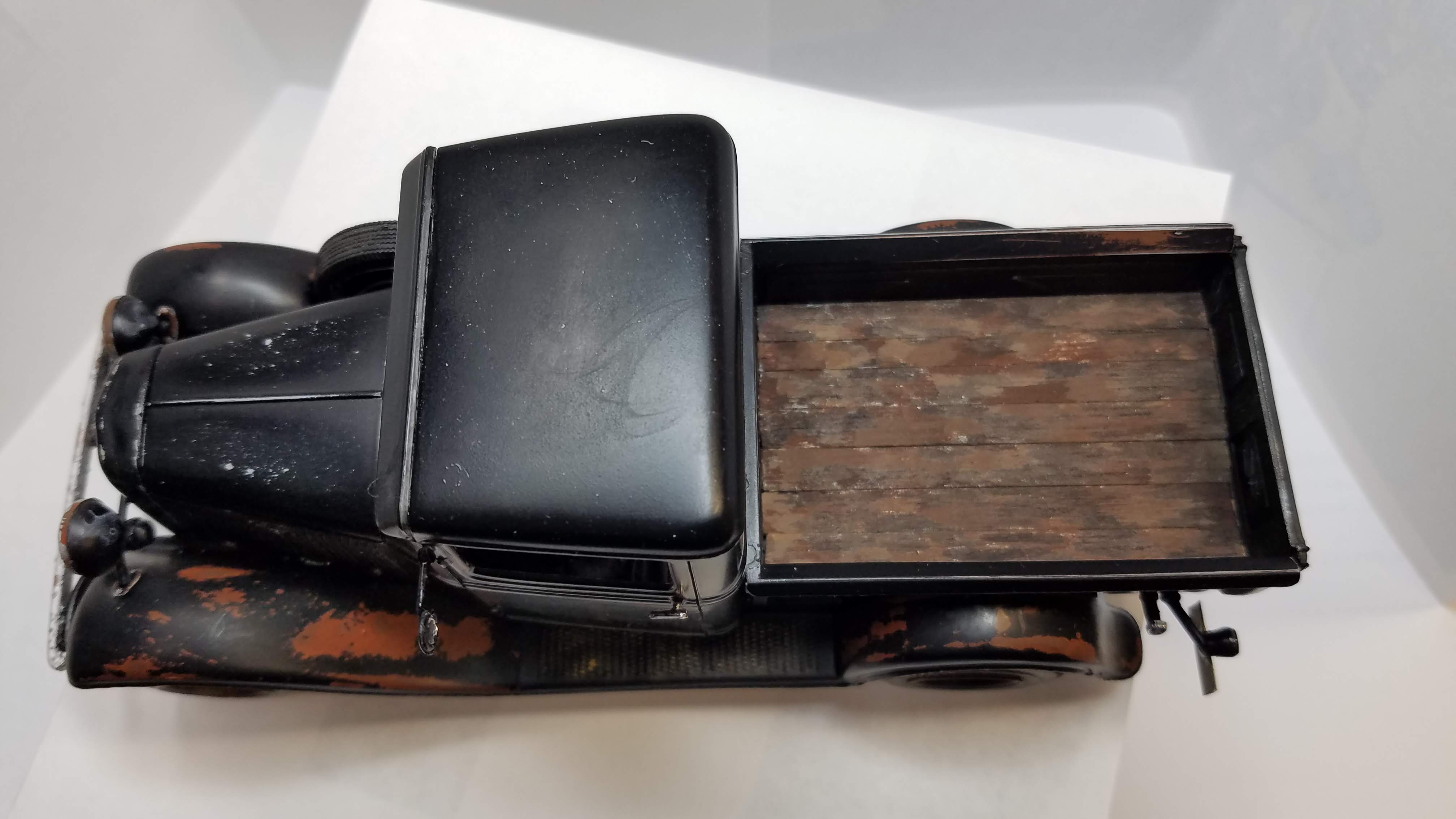
114 of 121
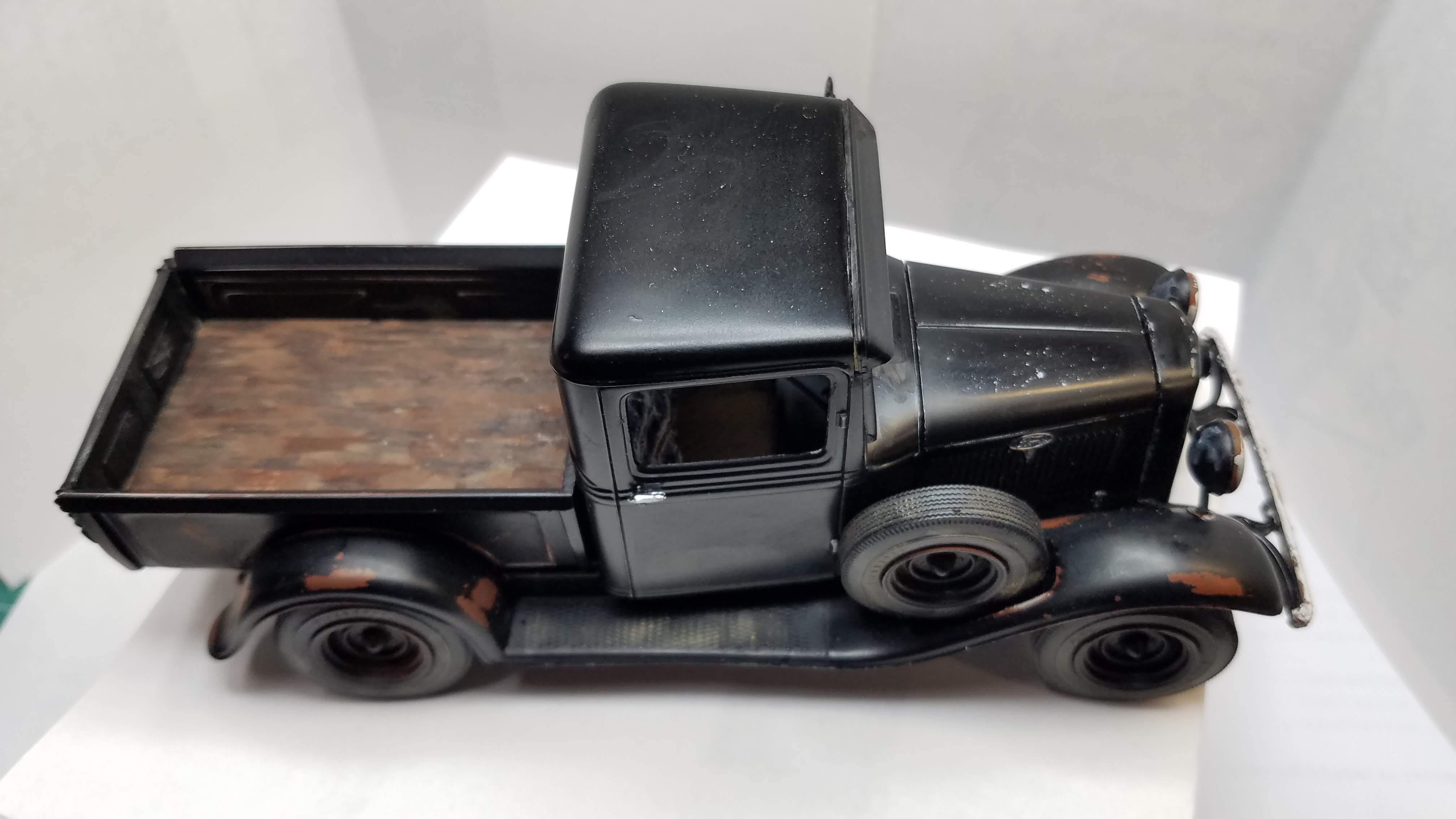
115 of 121
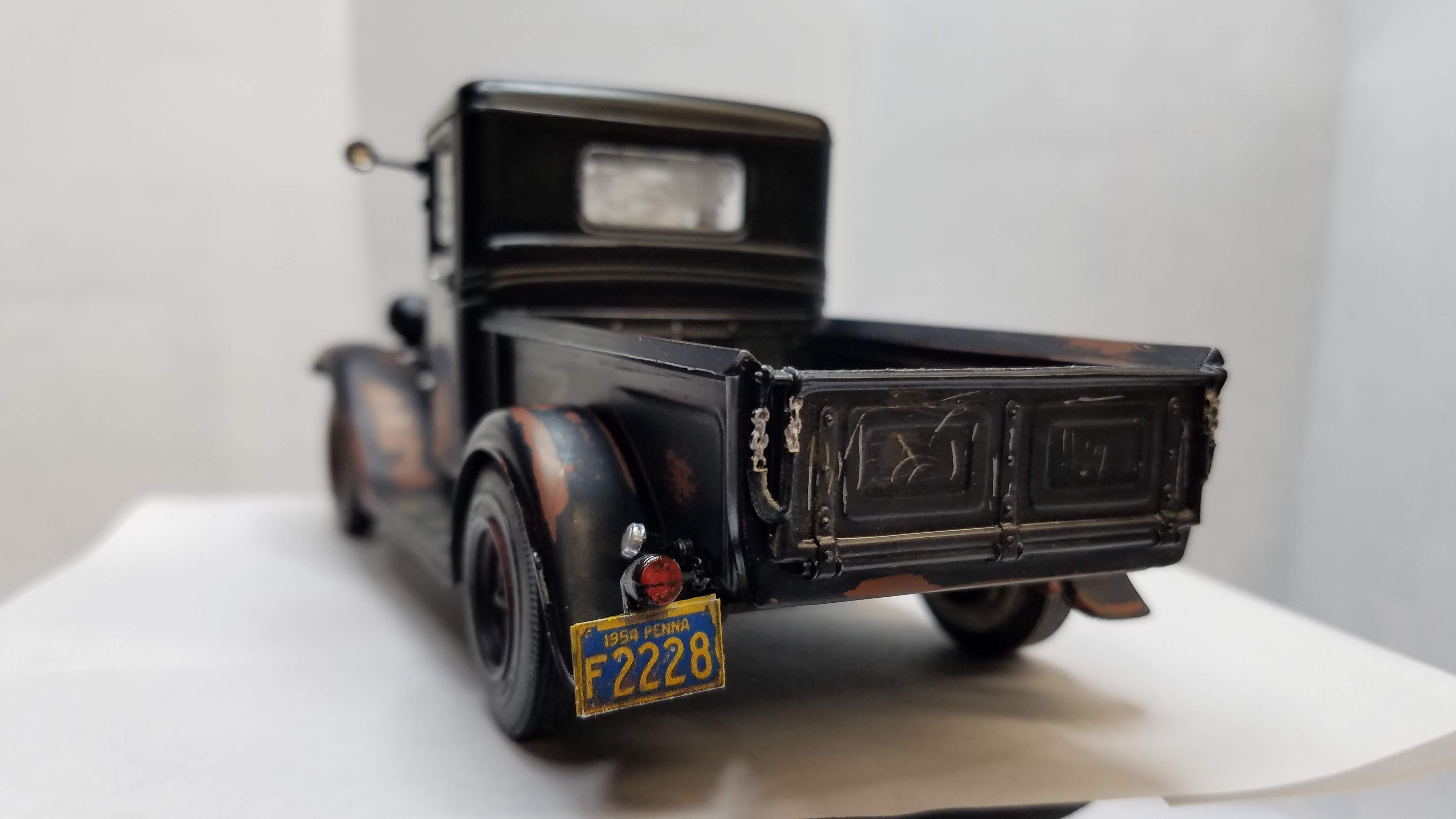
116 of 121
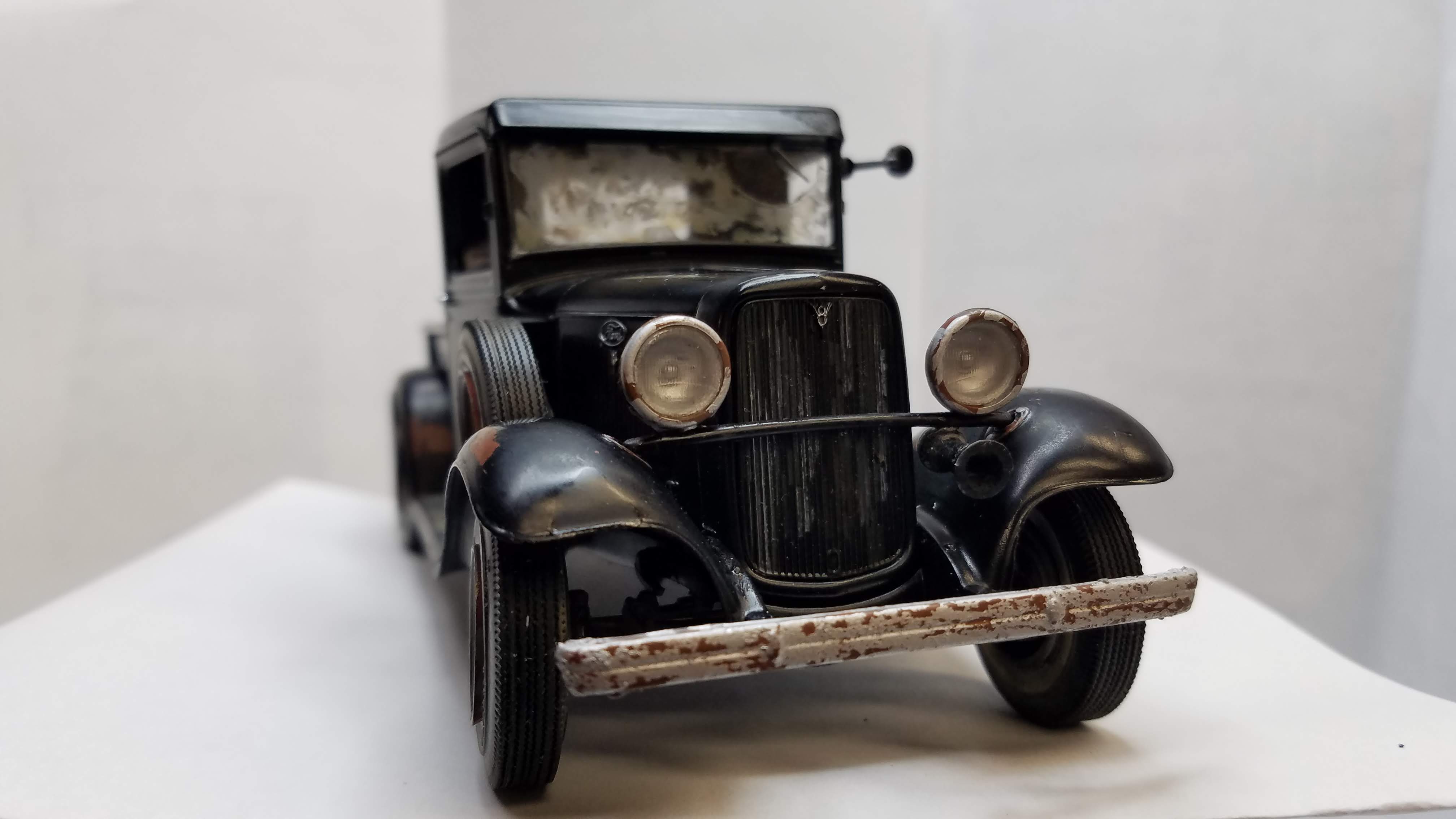
117 of 121

118 of 121
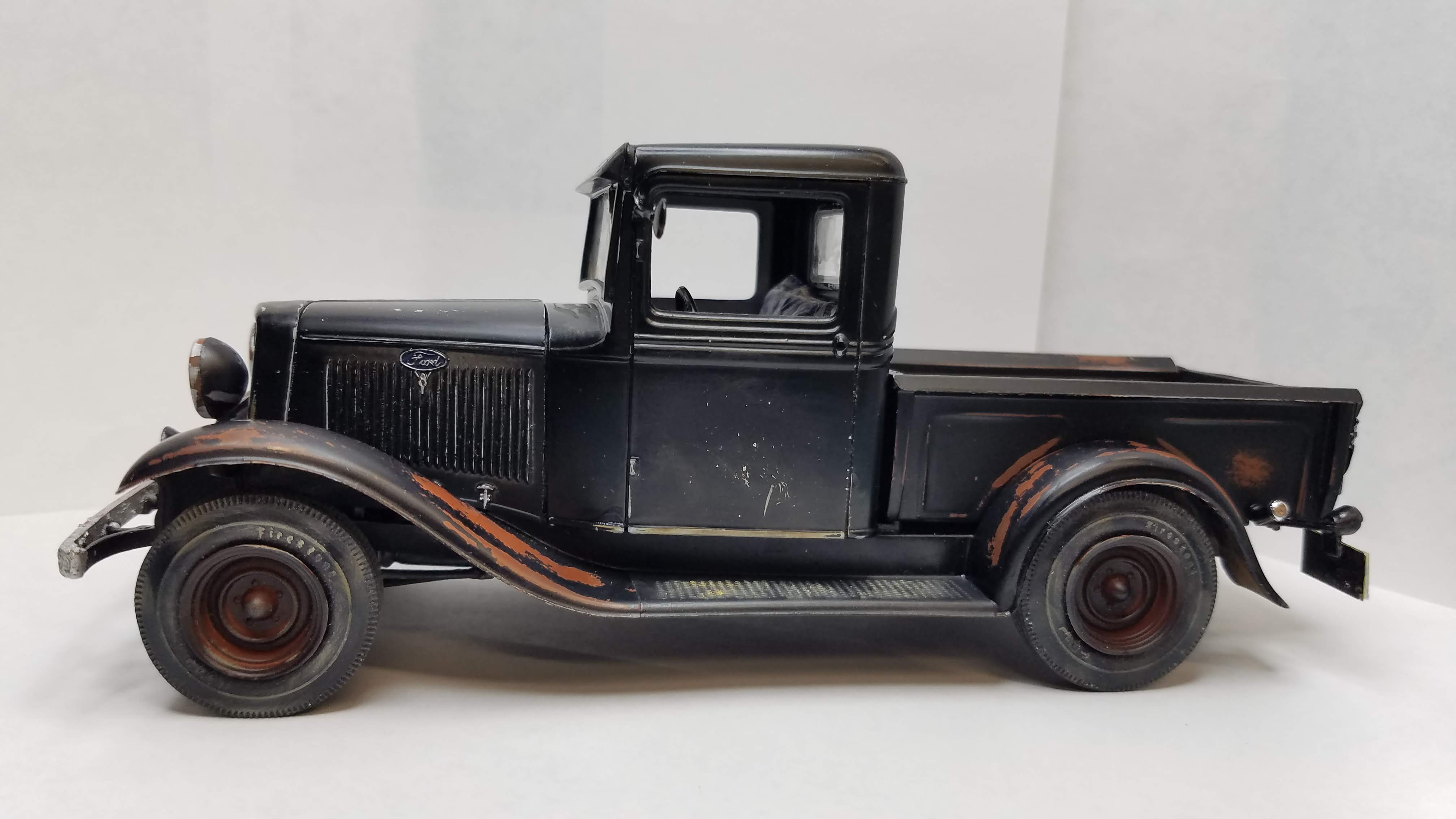
119 of 121
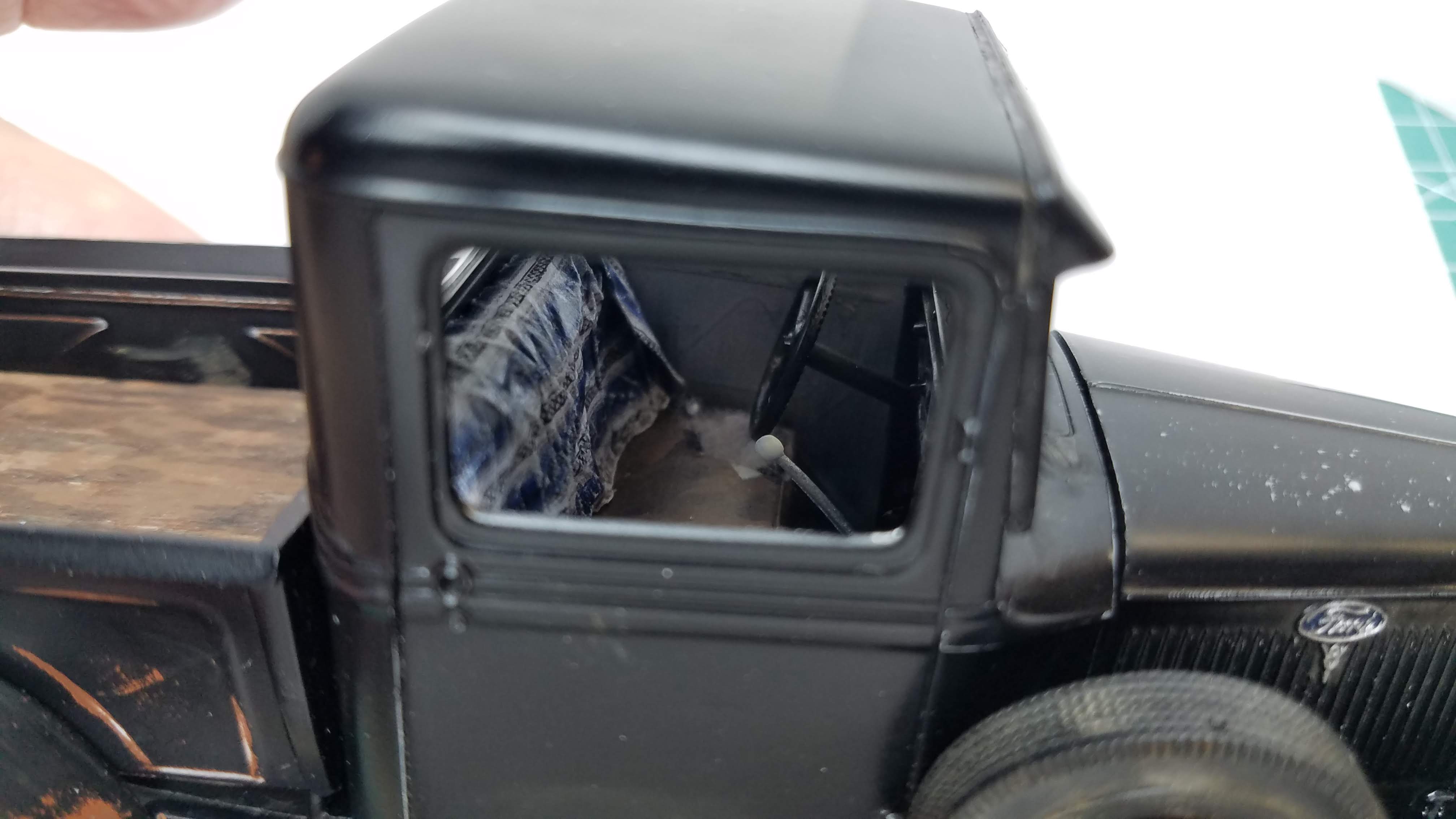
120 of 121
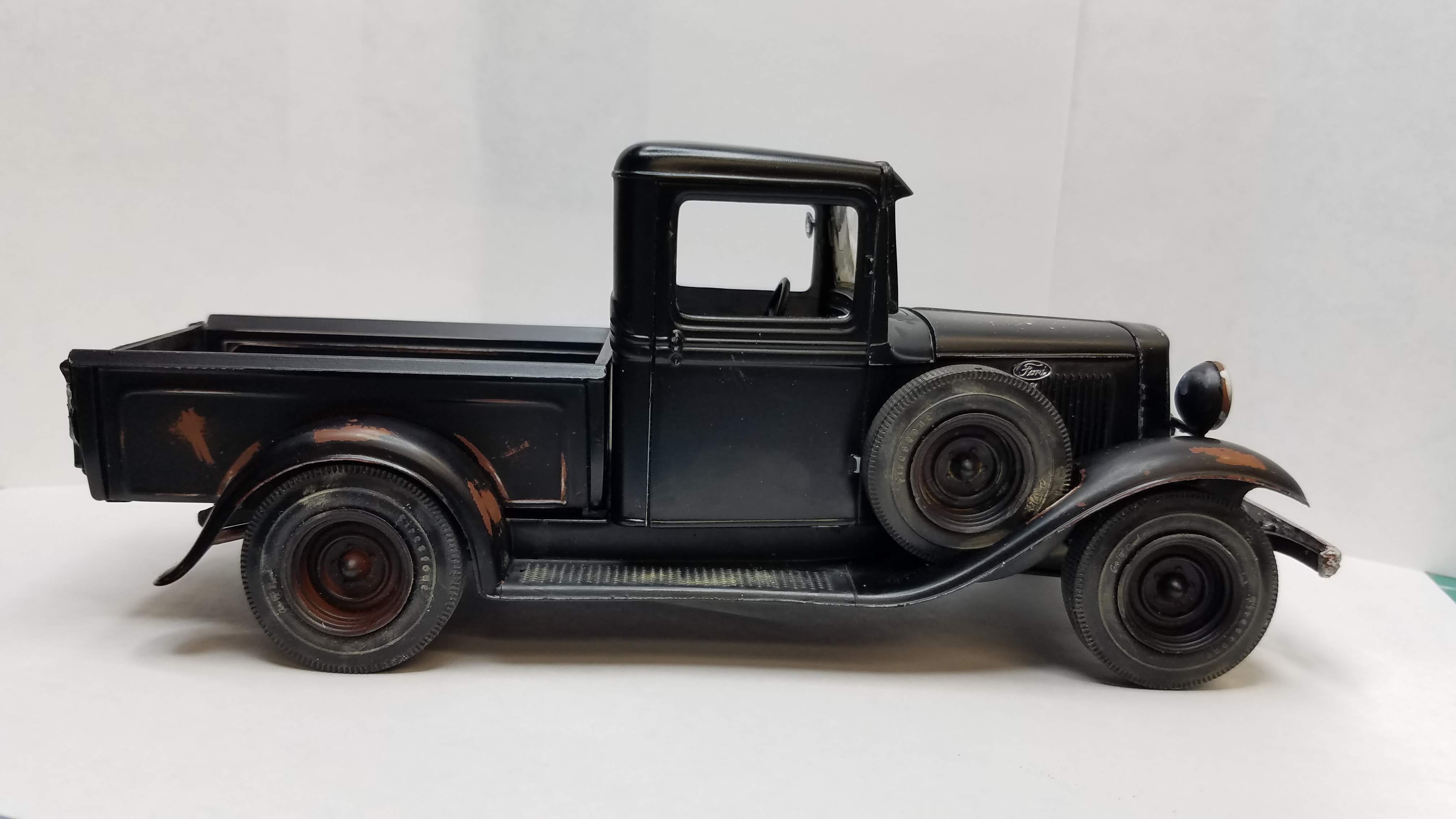
121 of 121
I used Gimp to put an image of the finished truck in an old garage.
